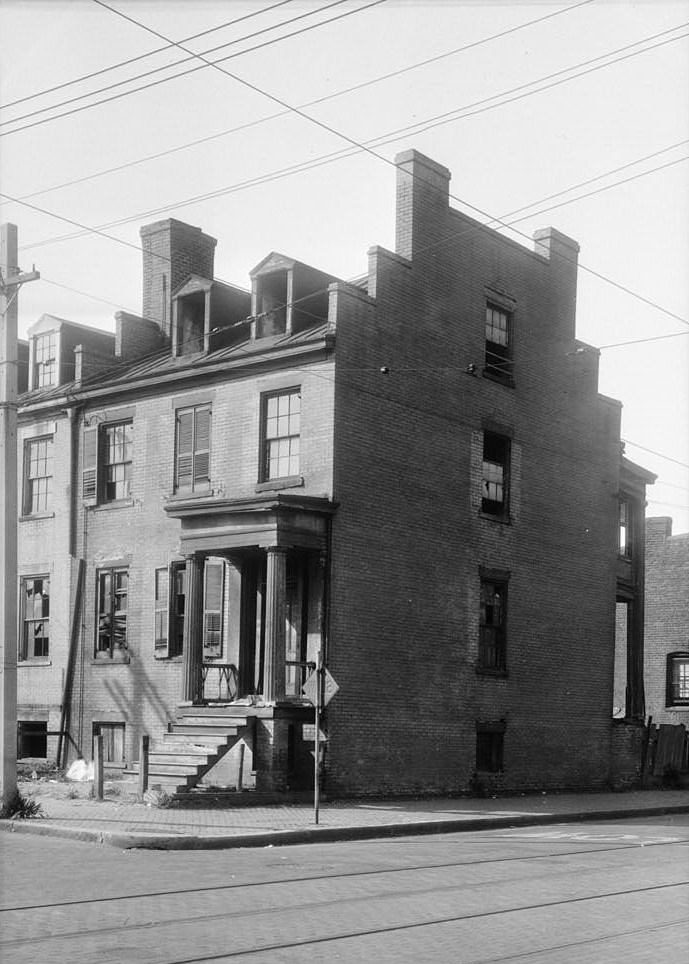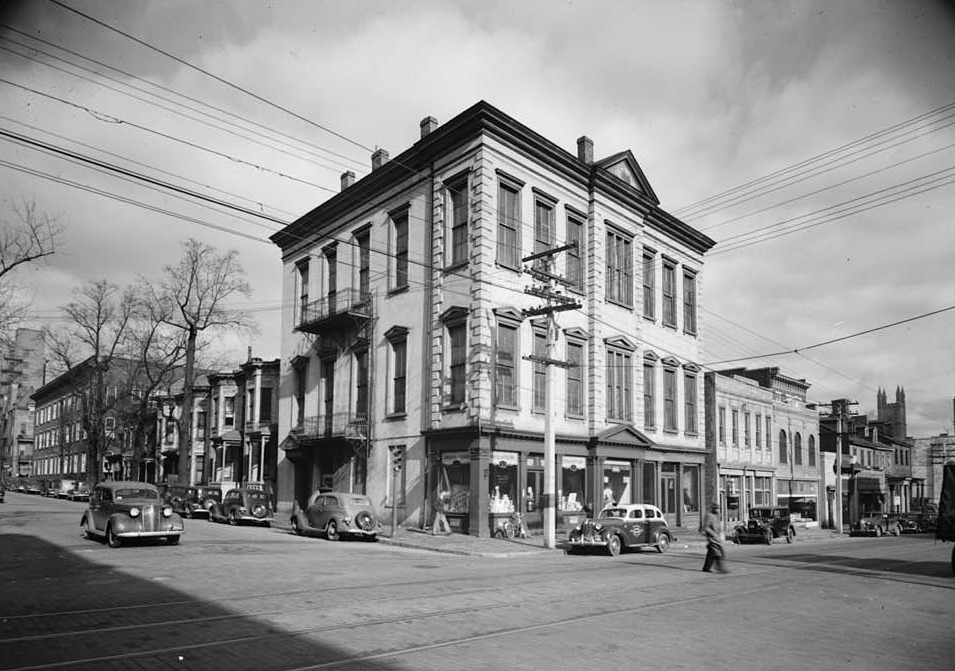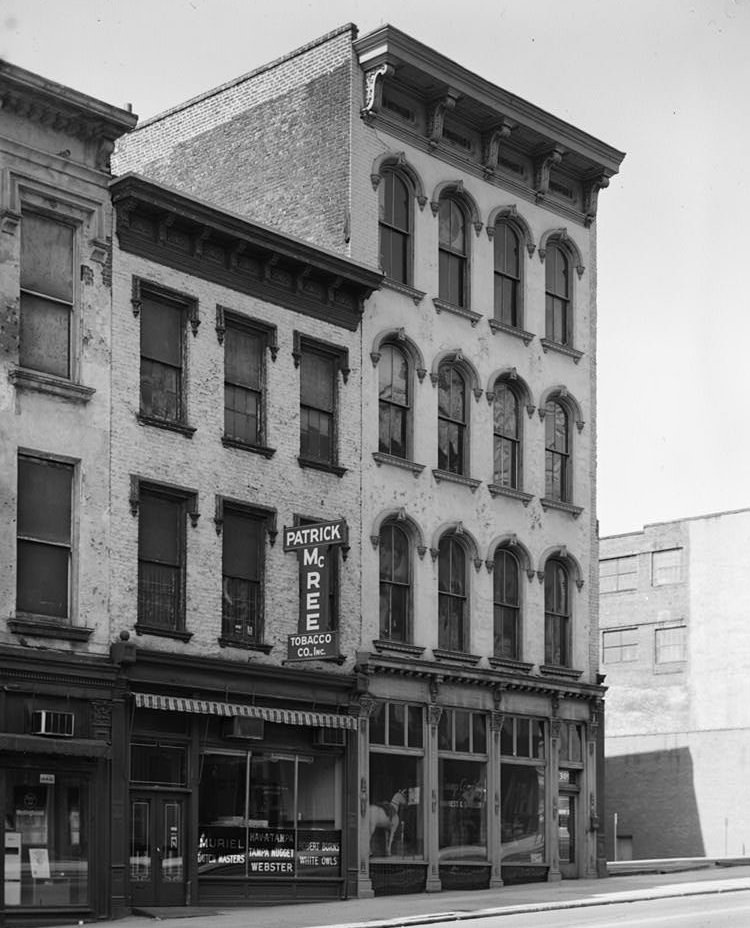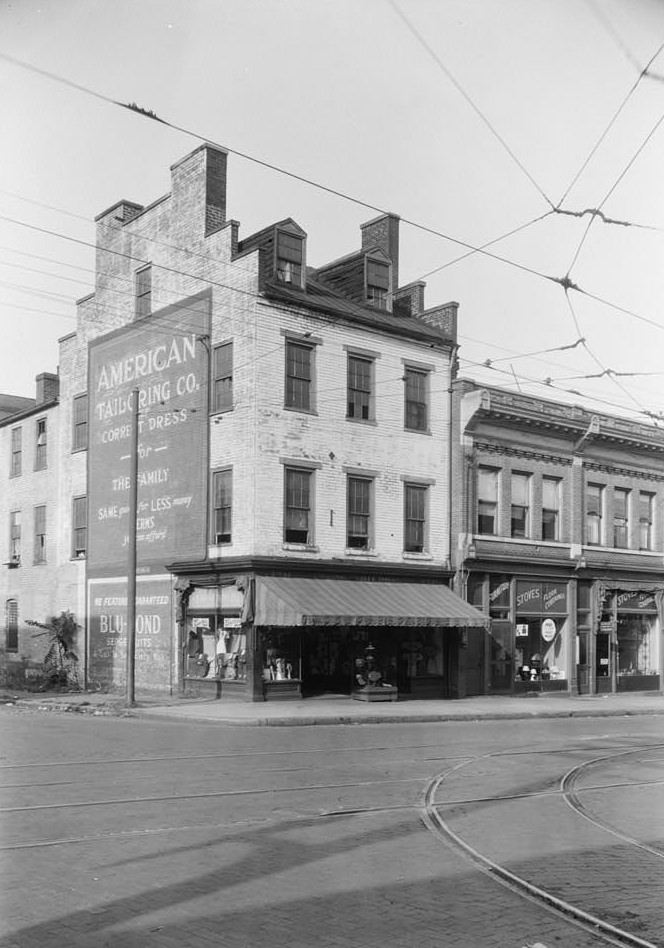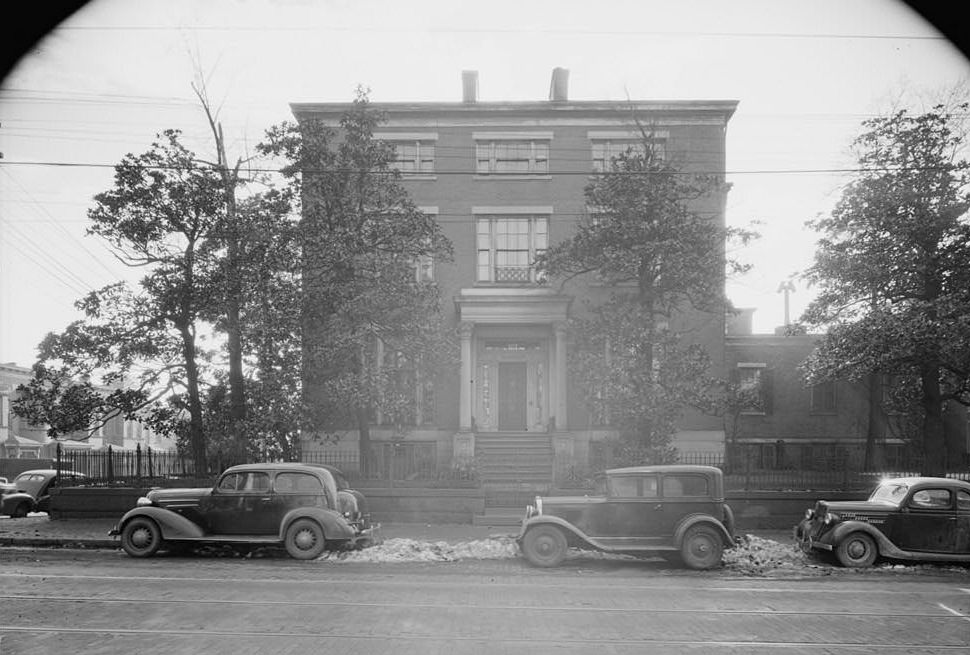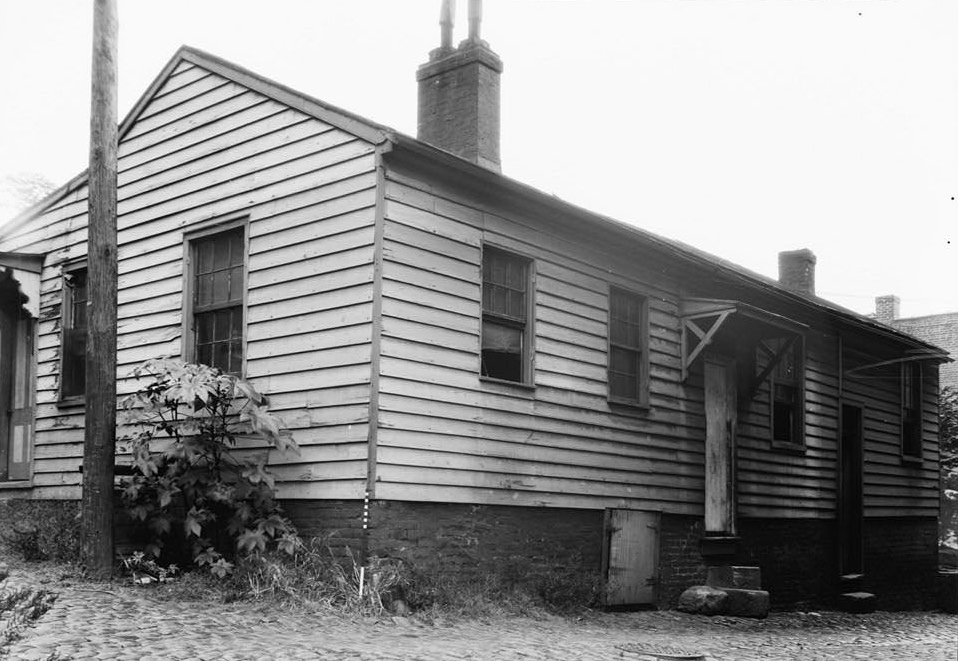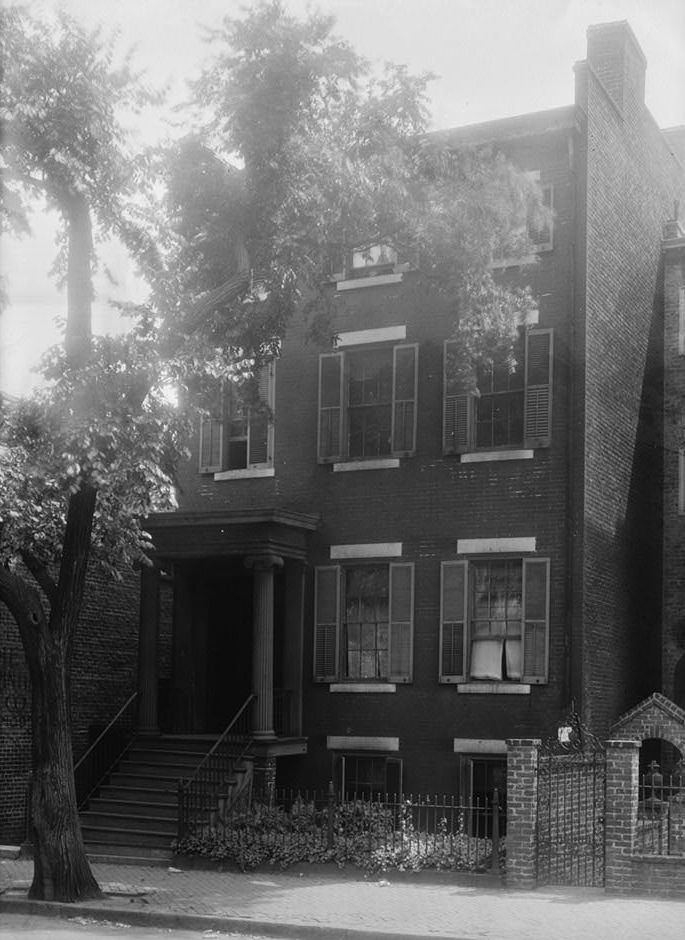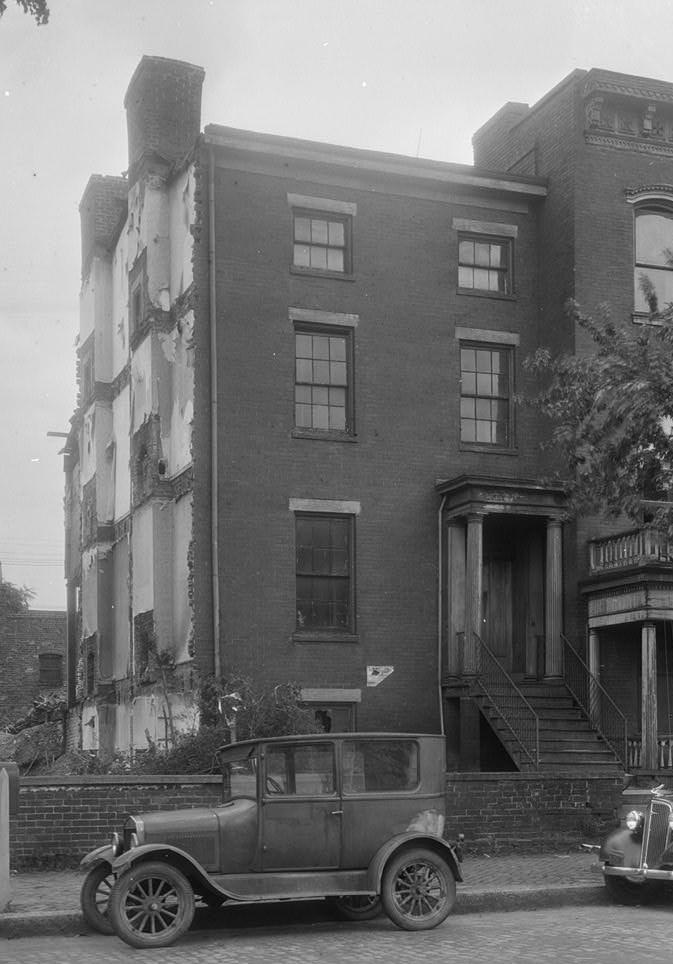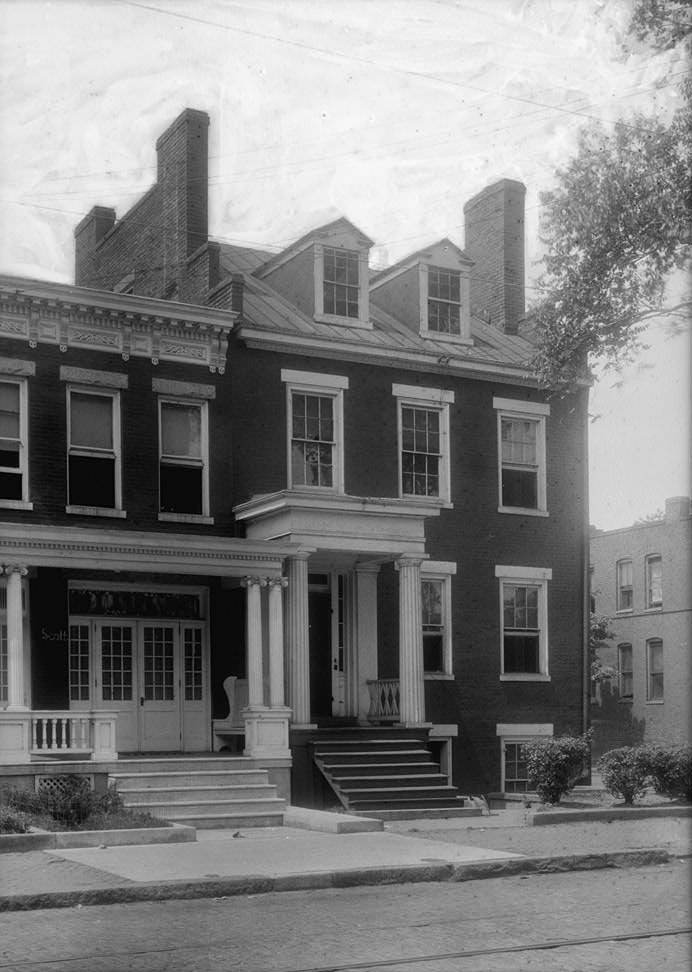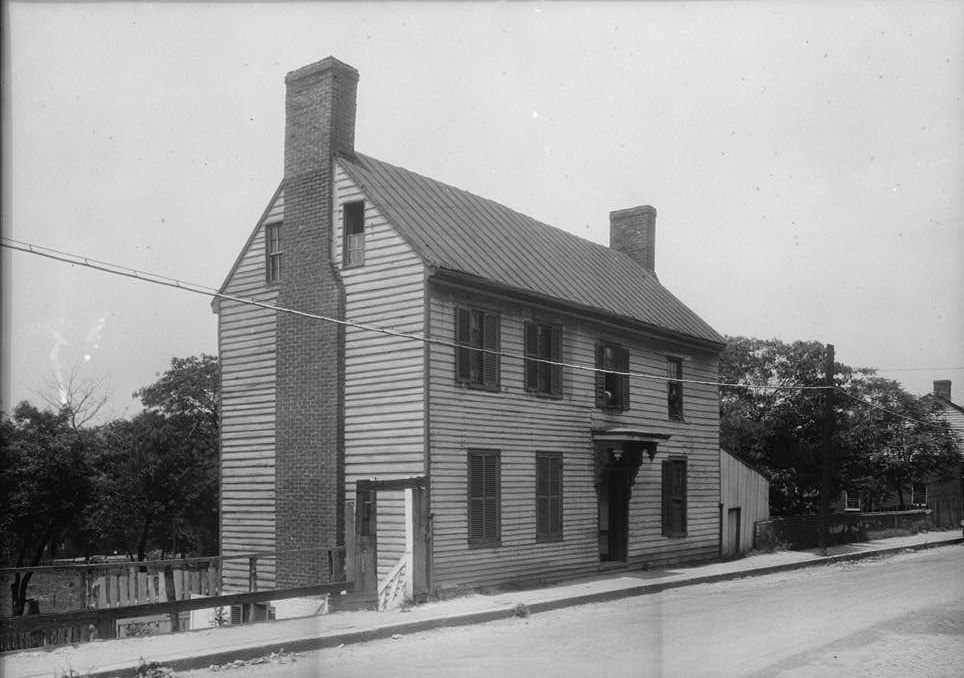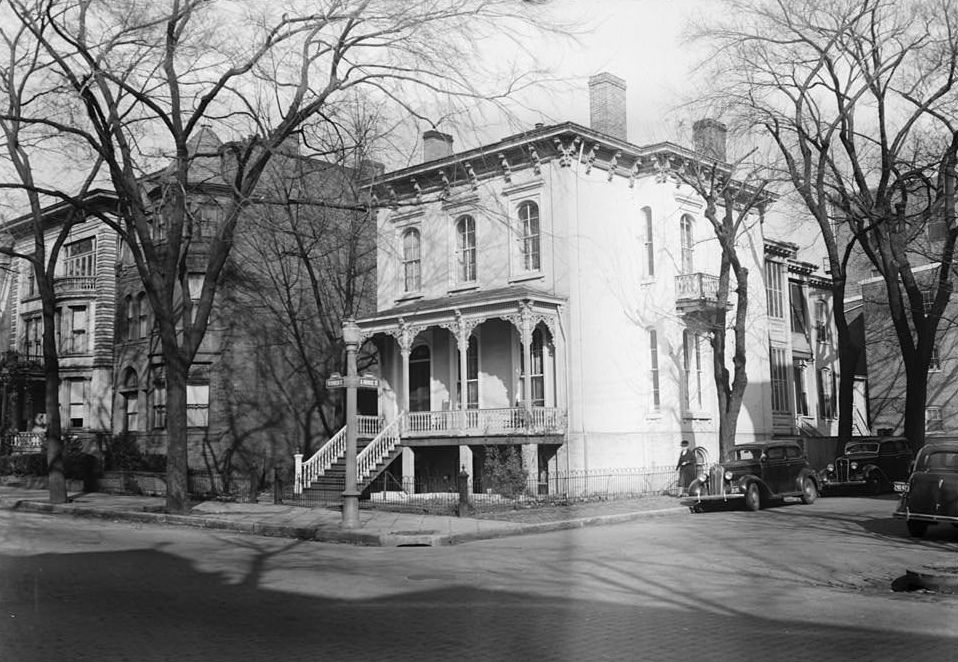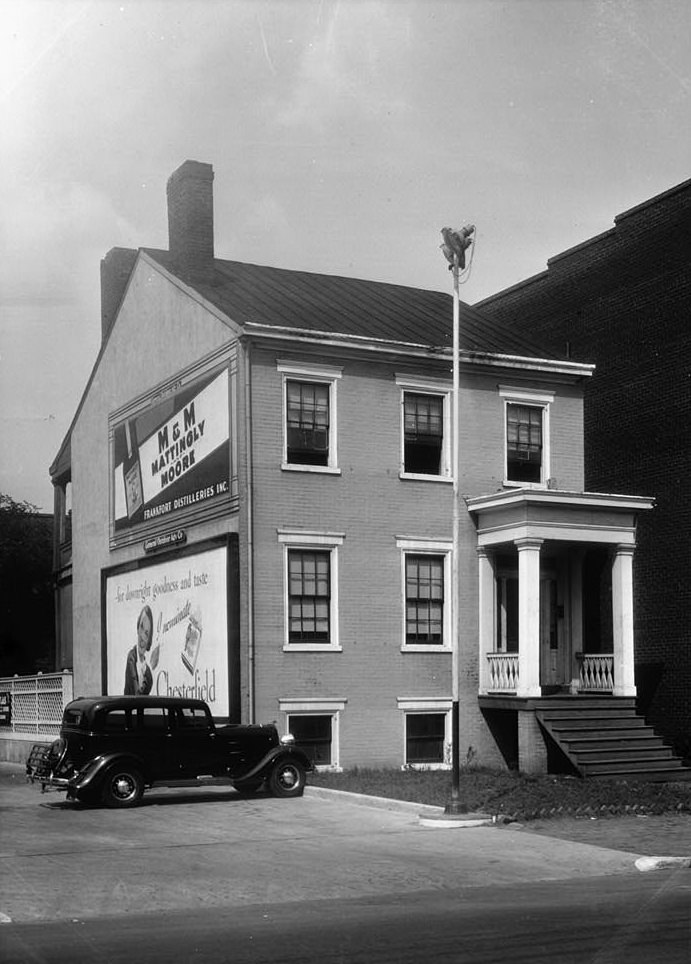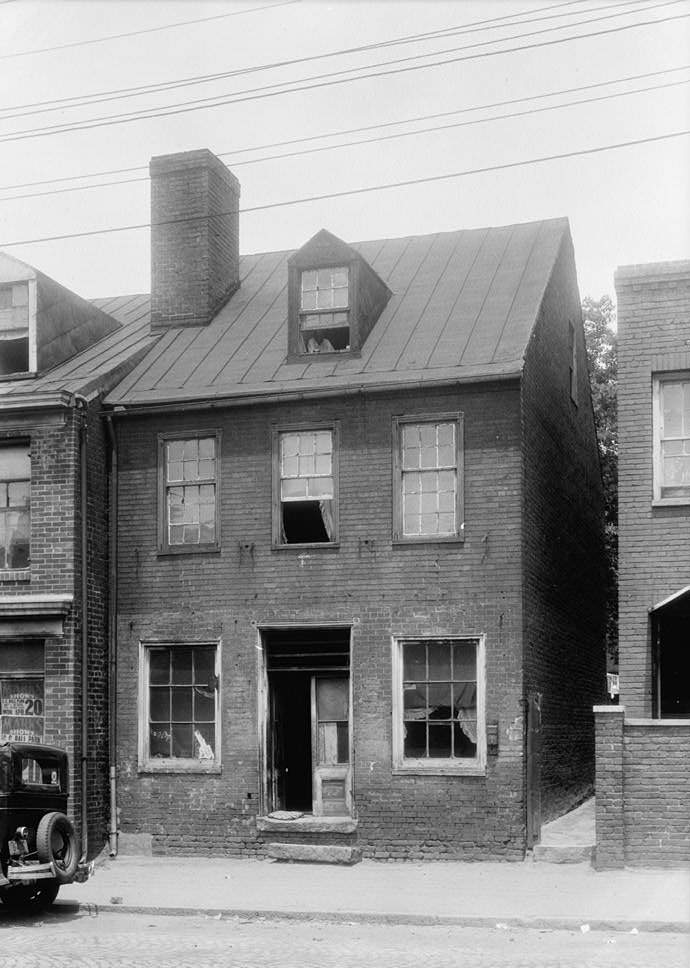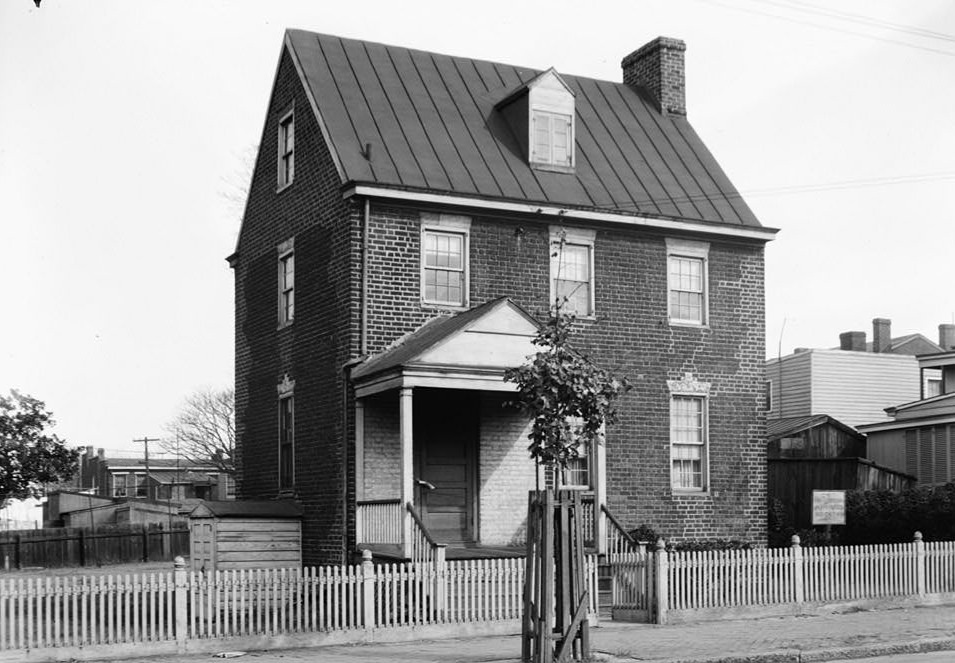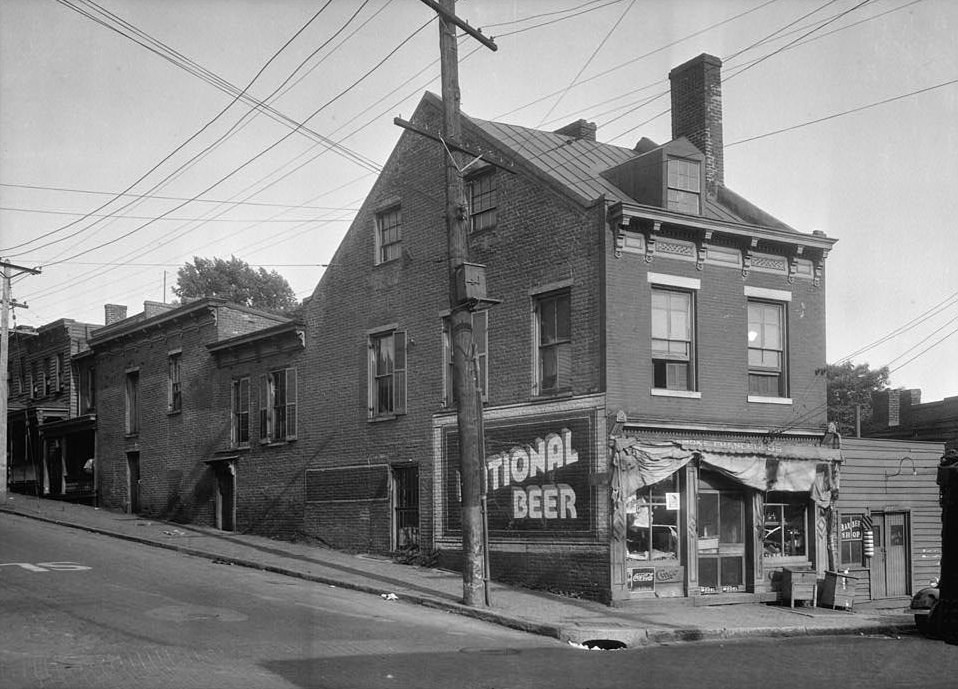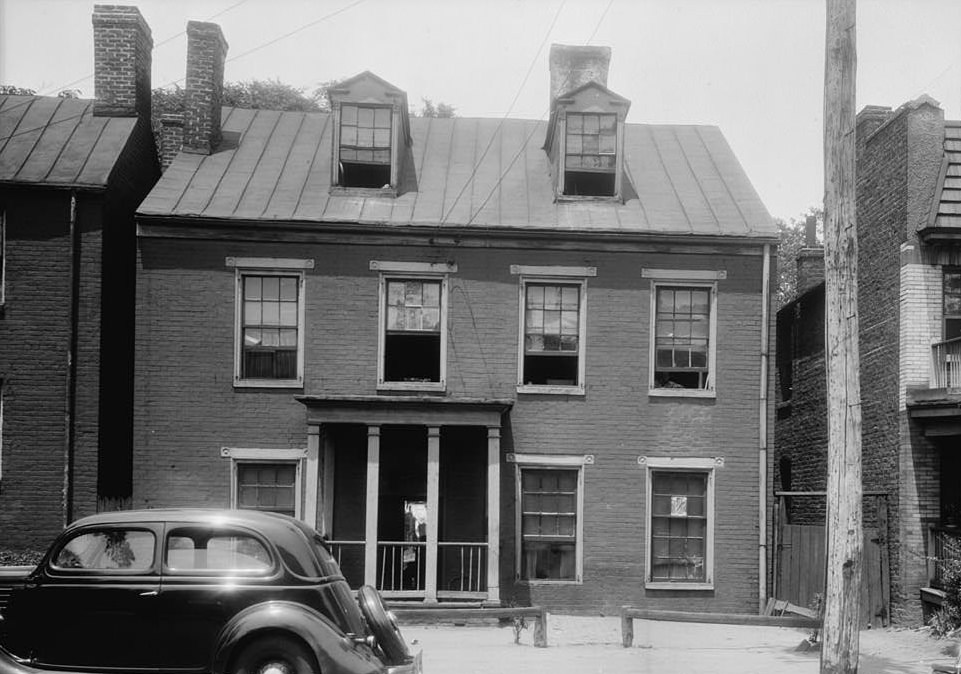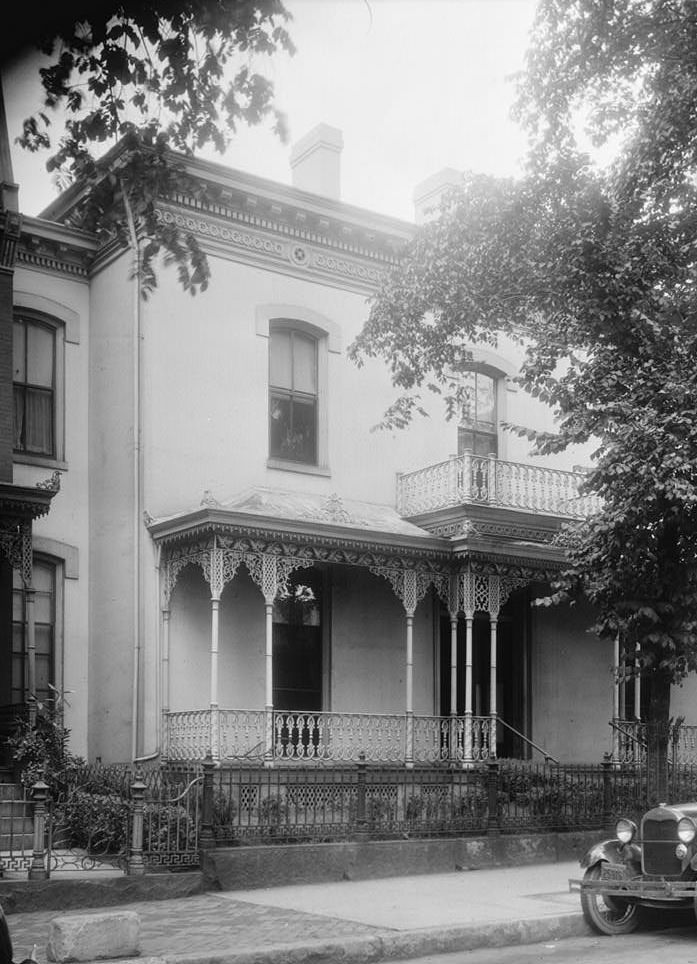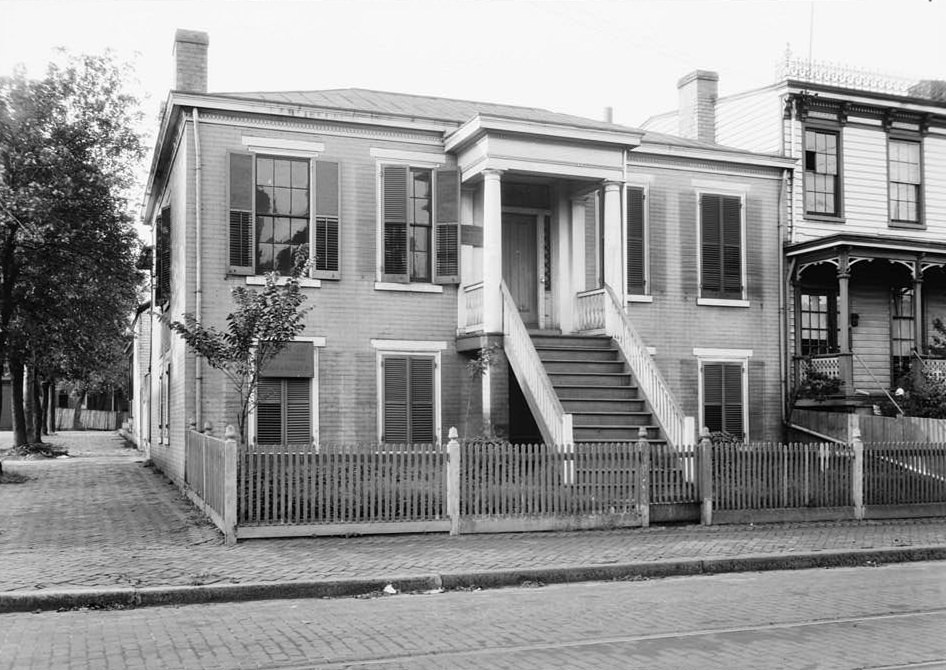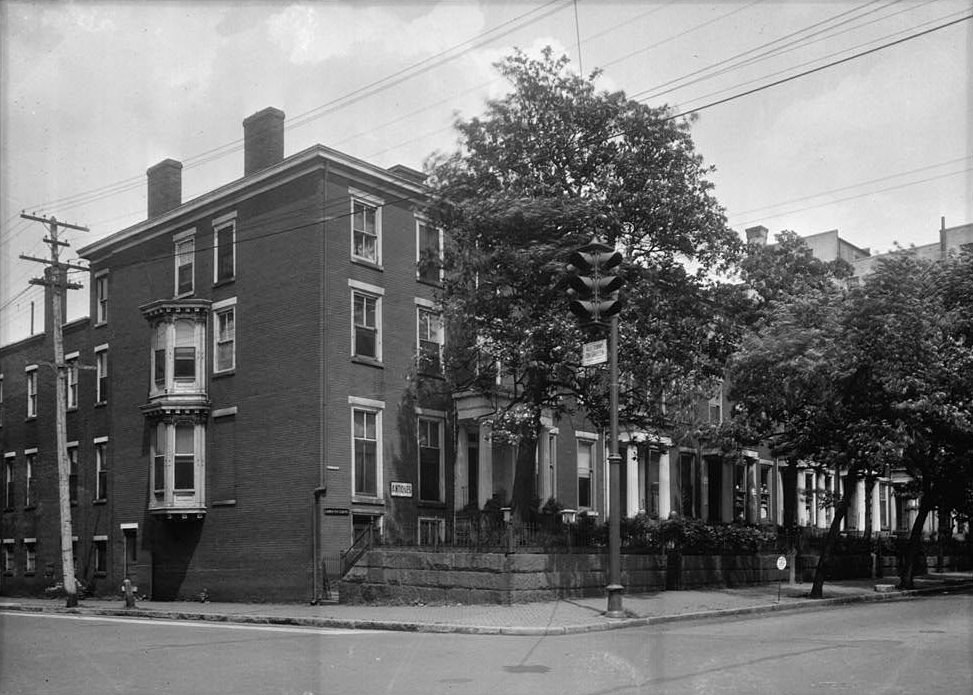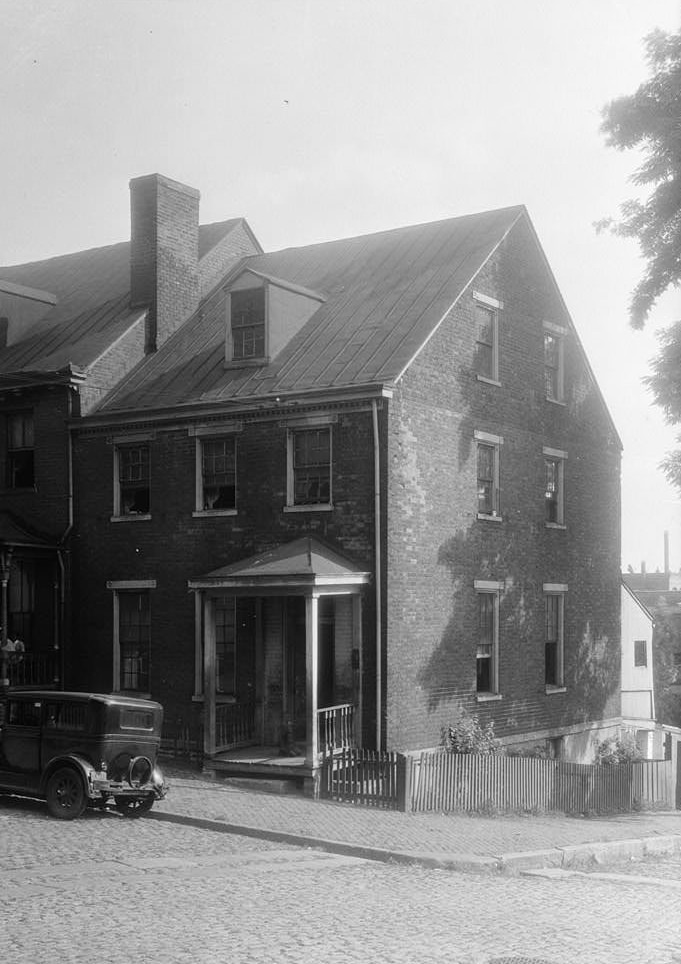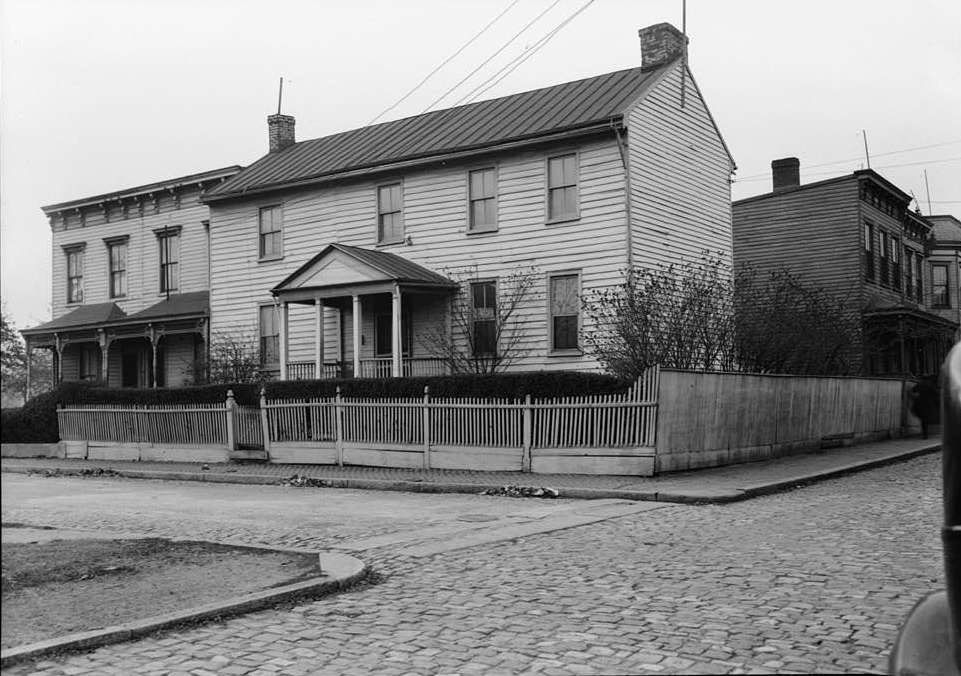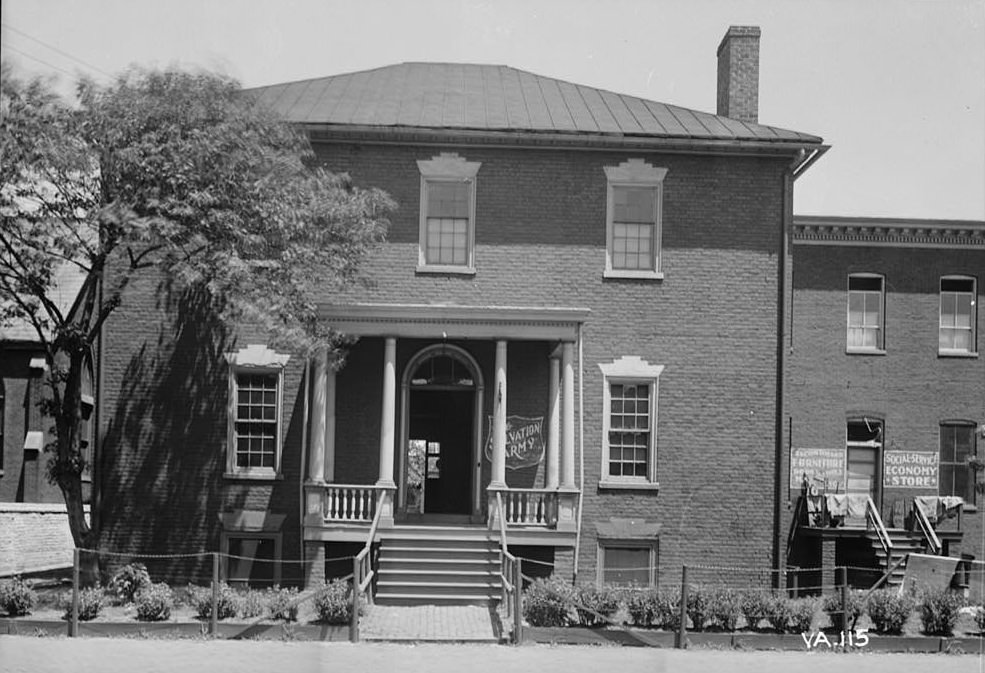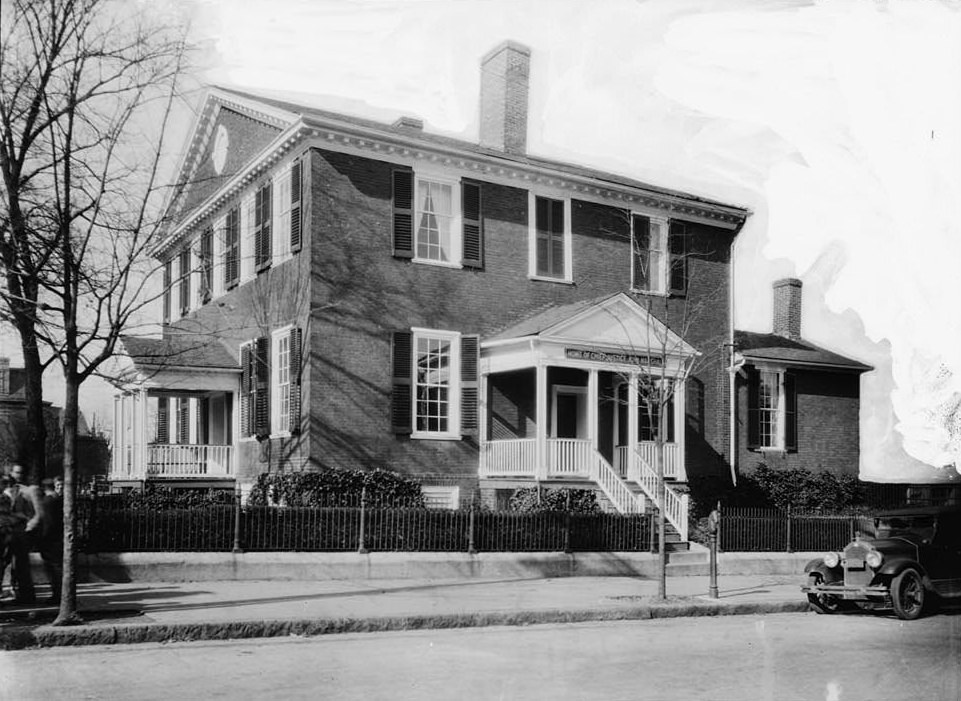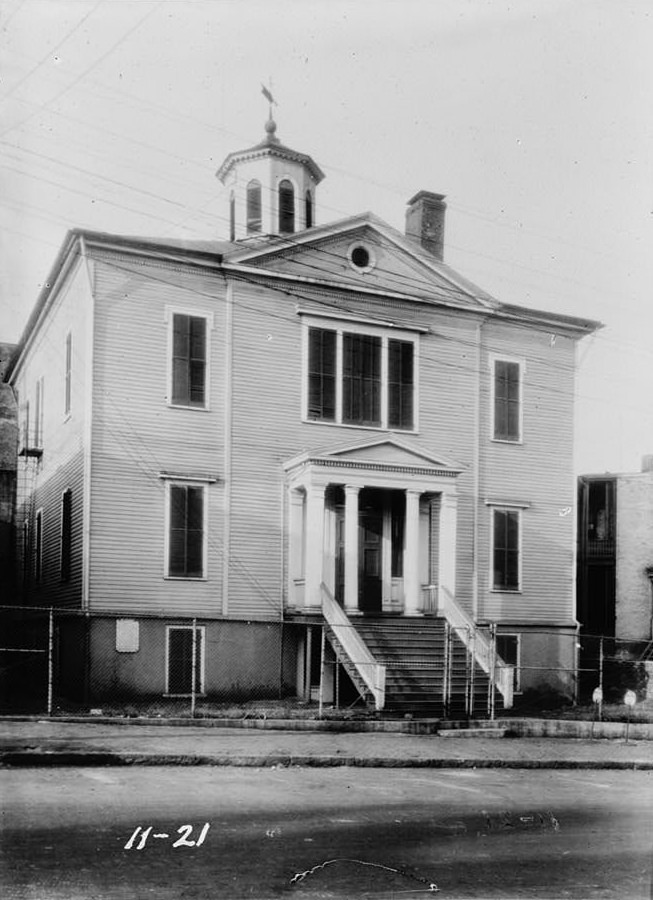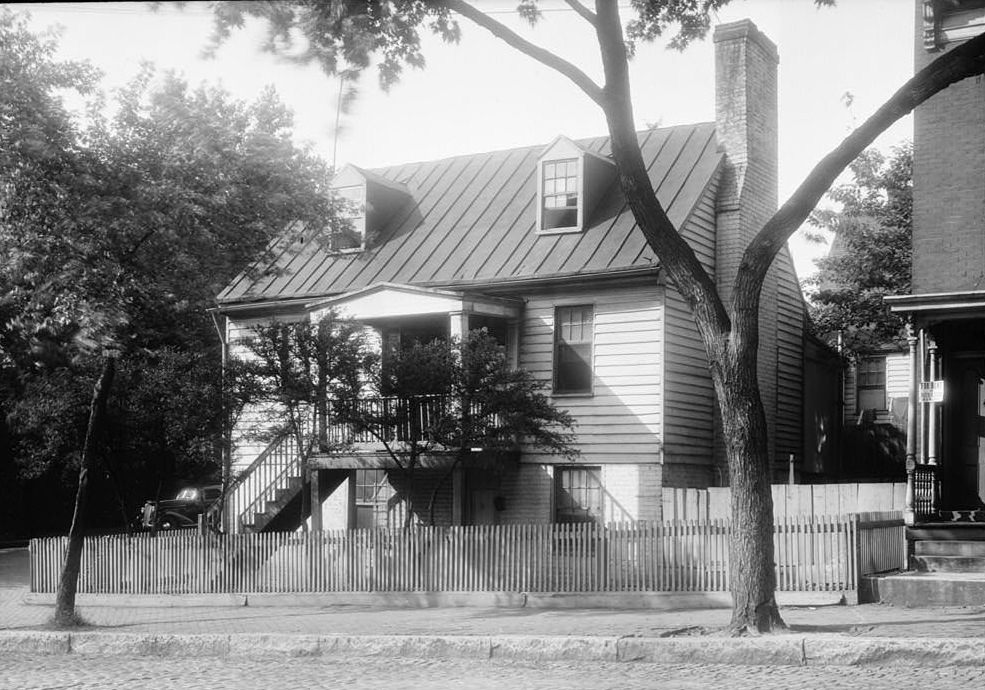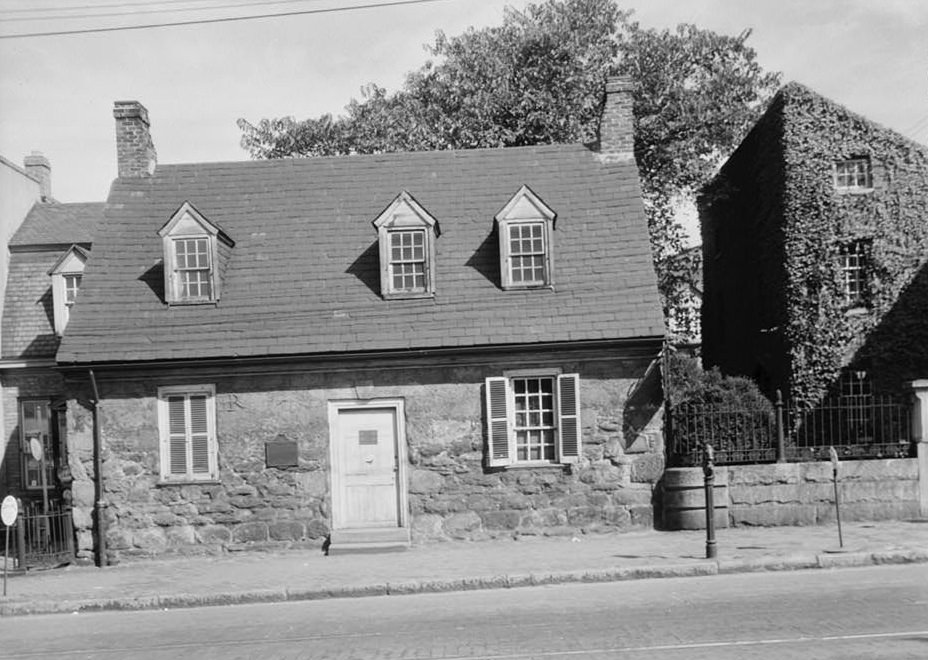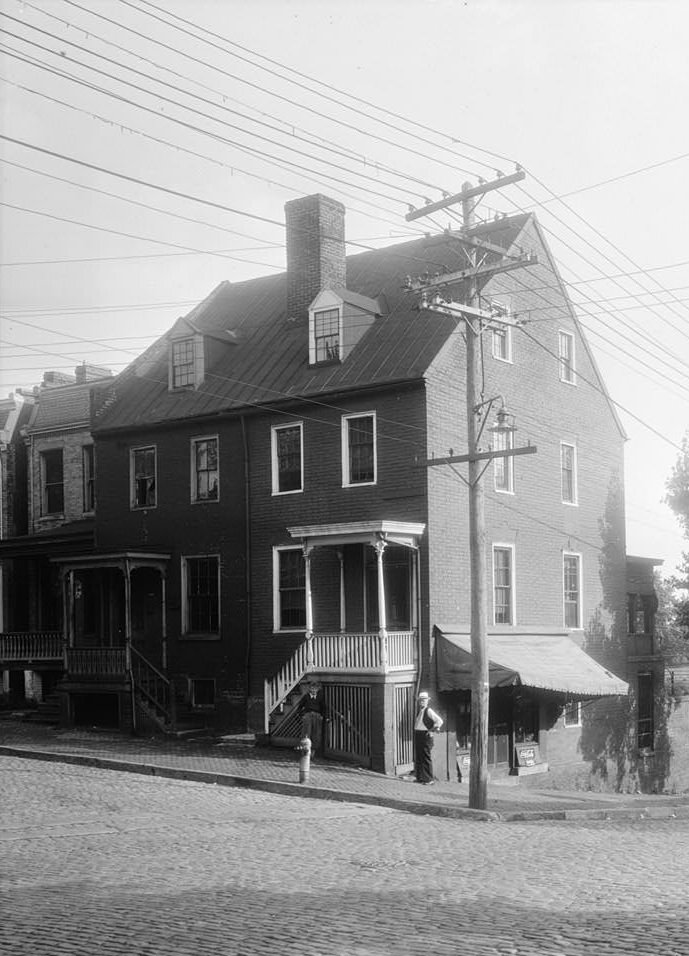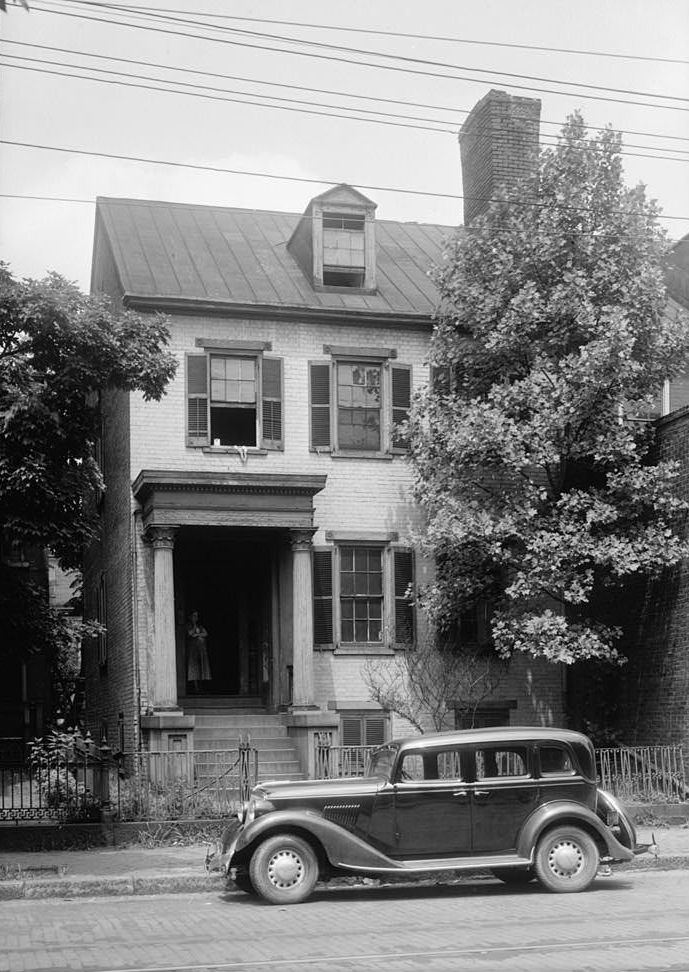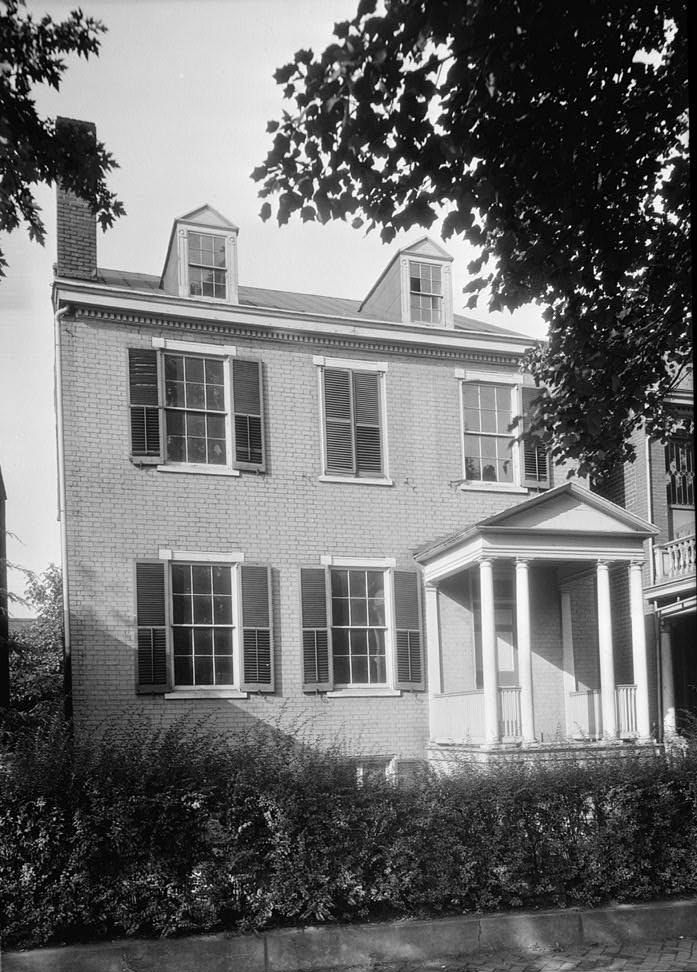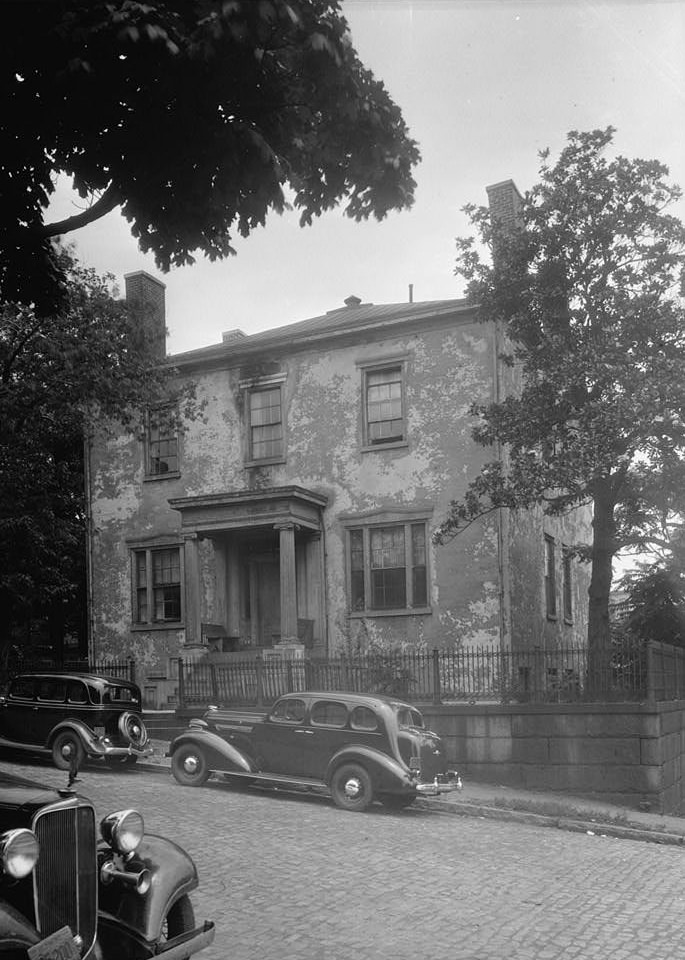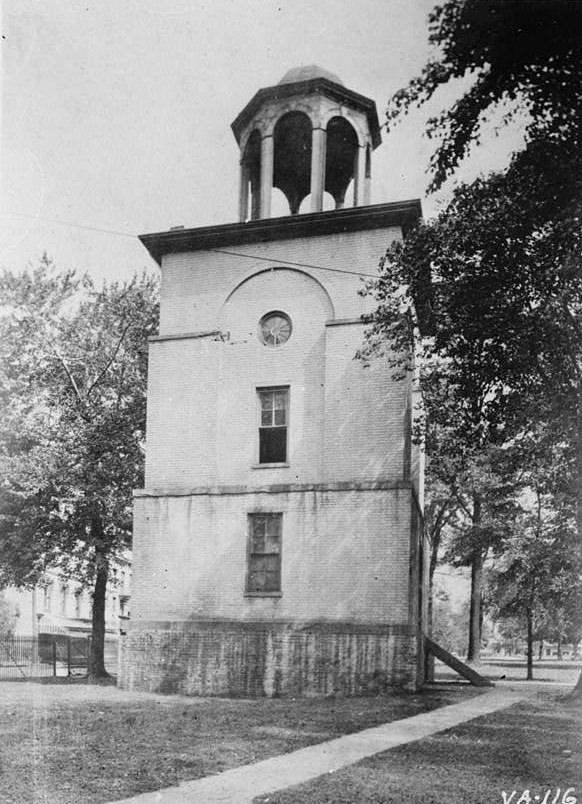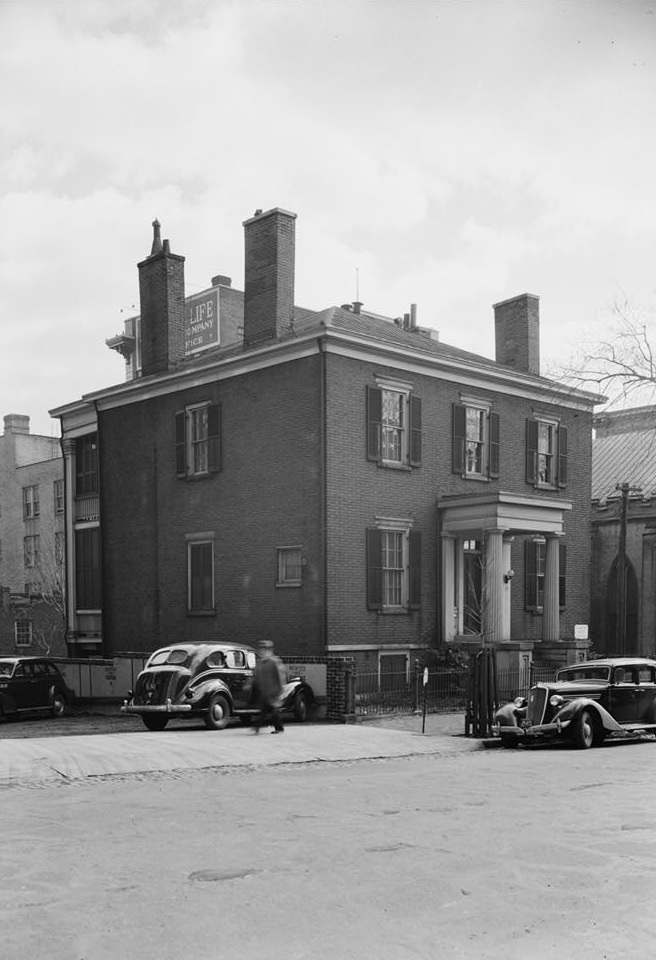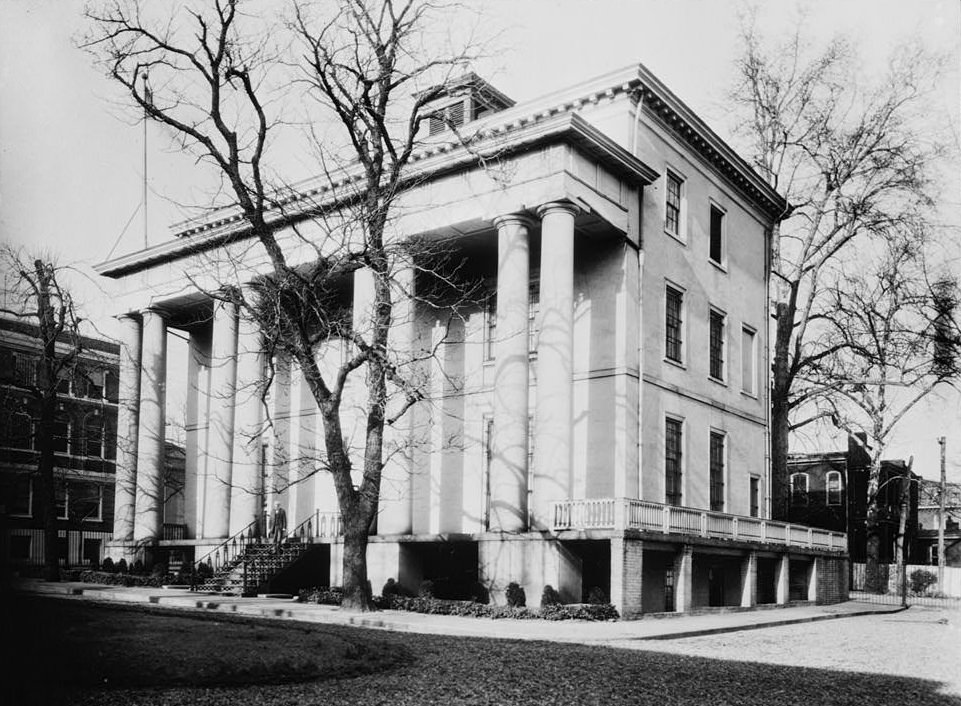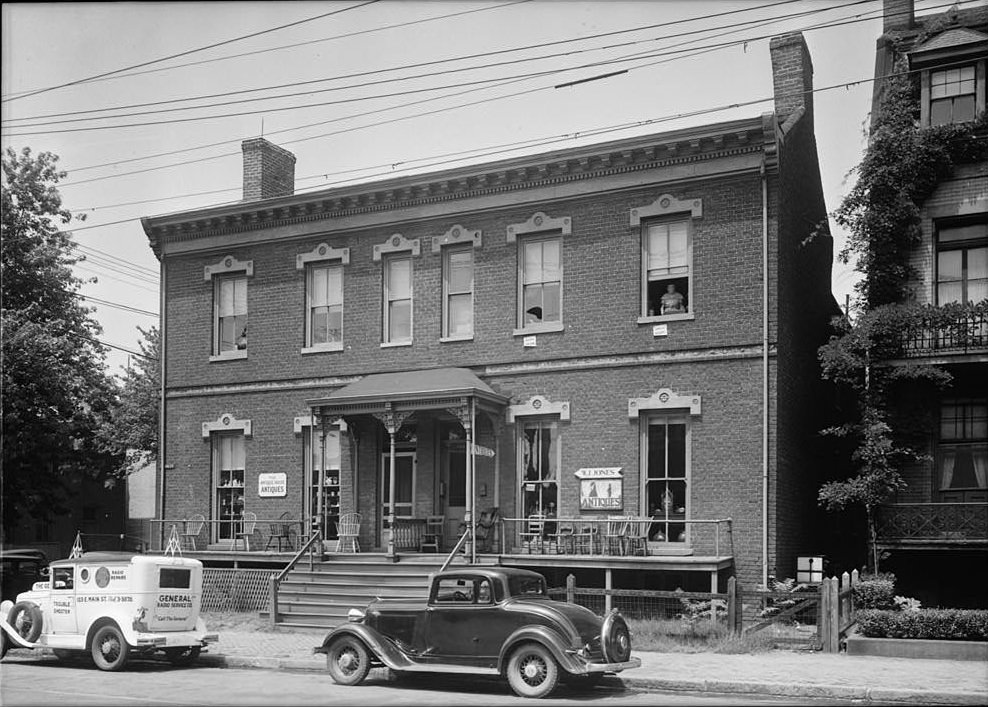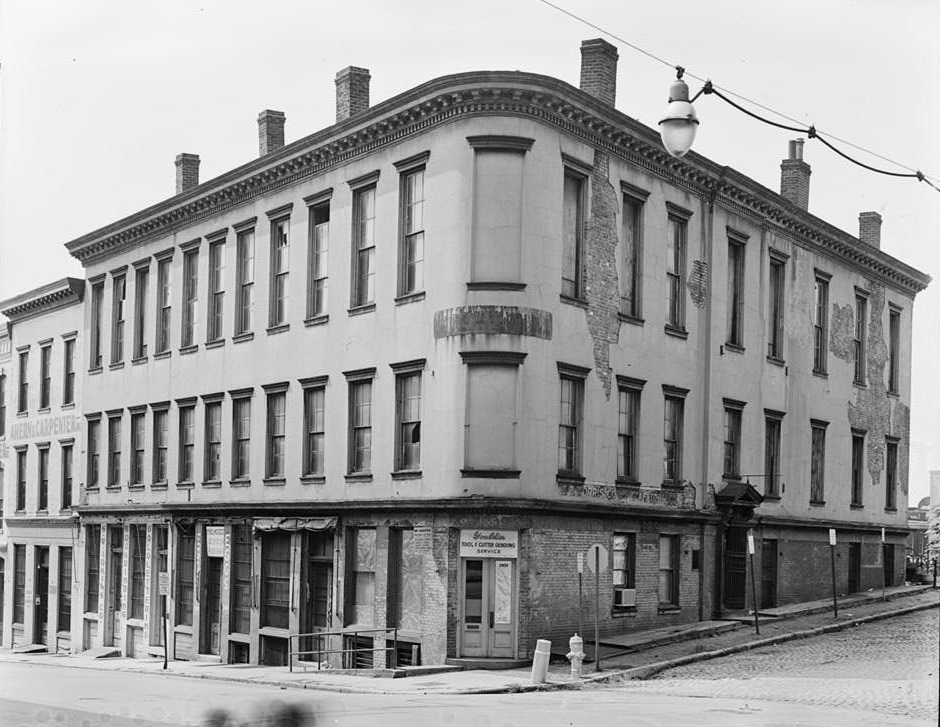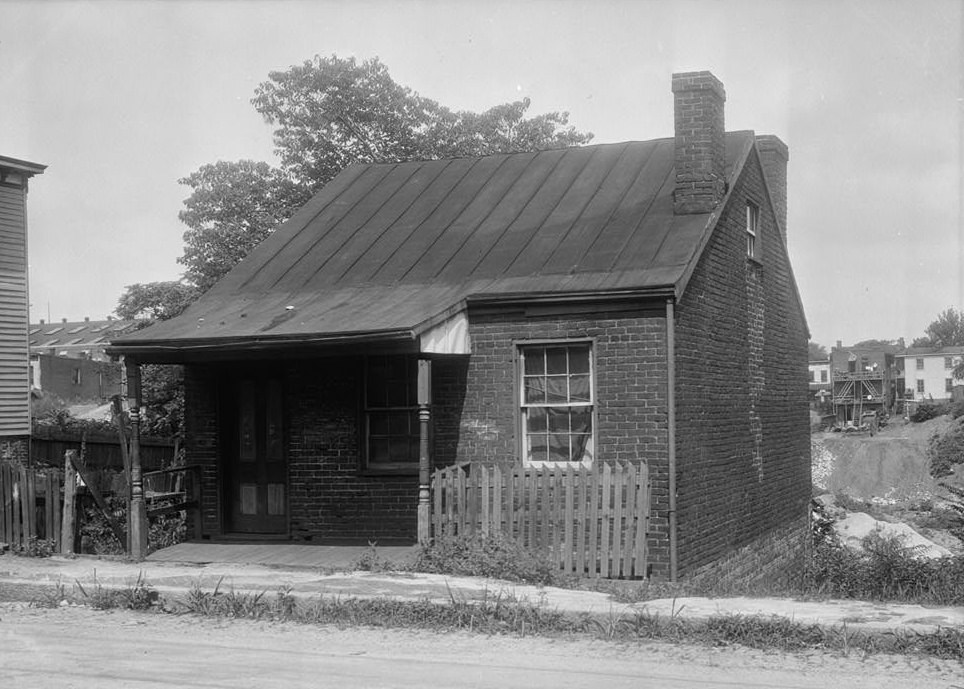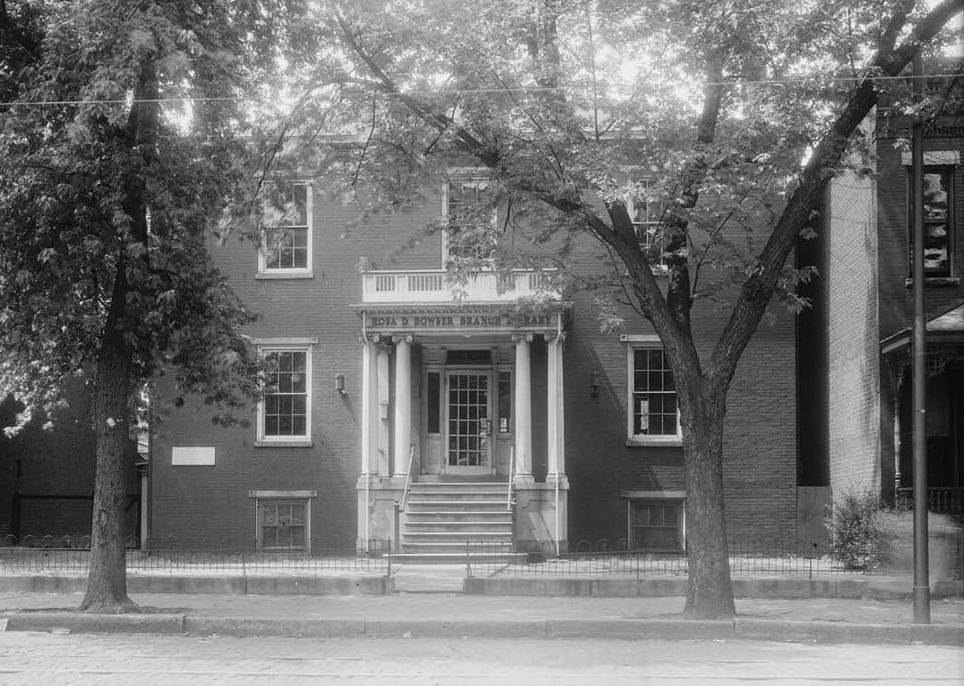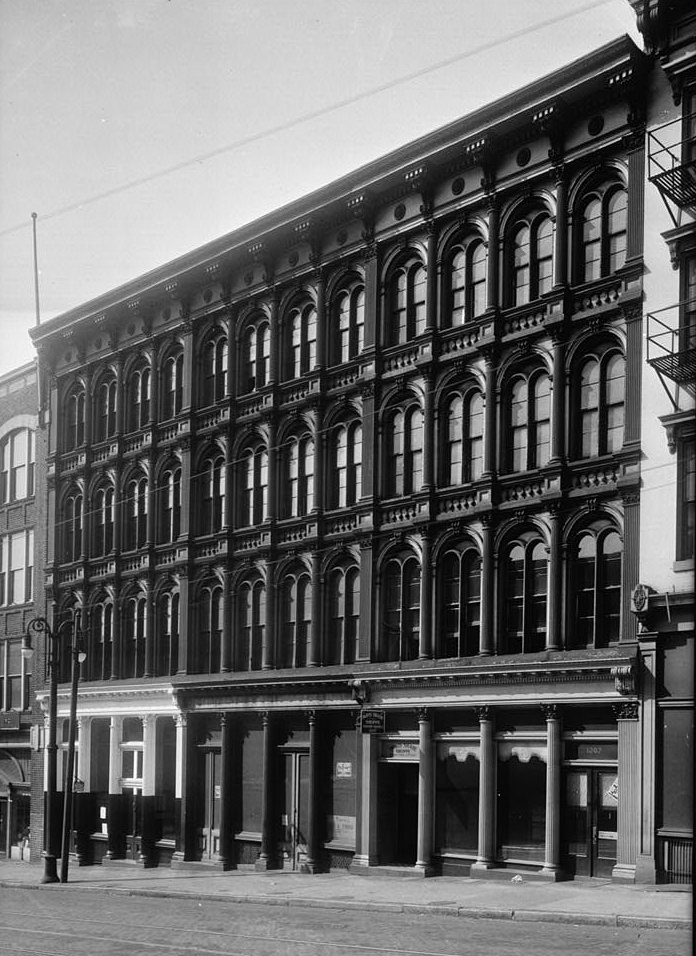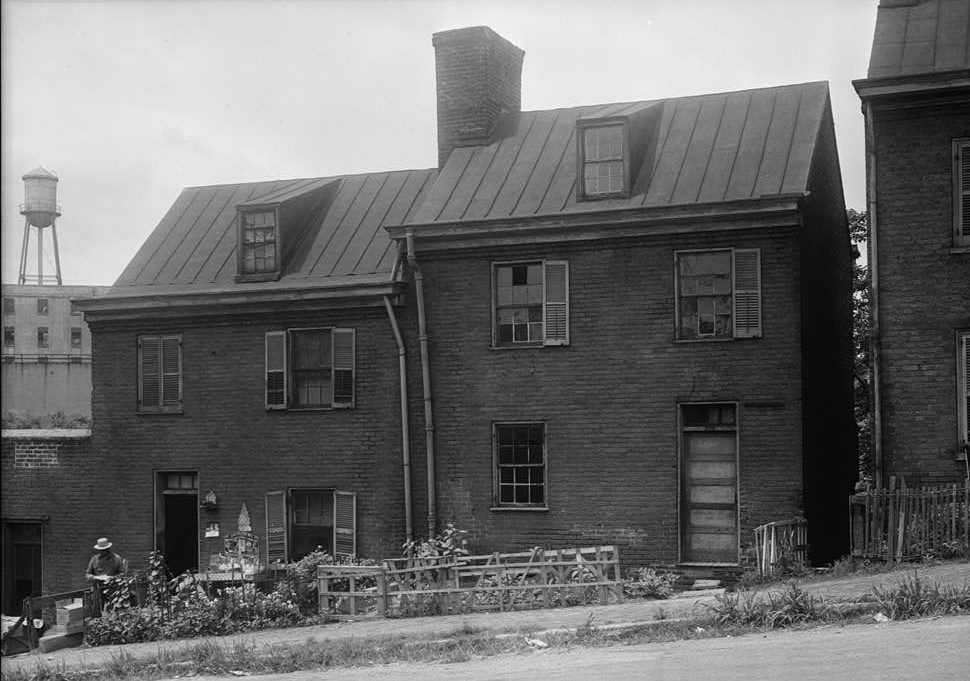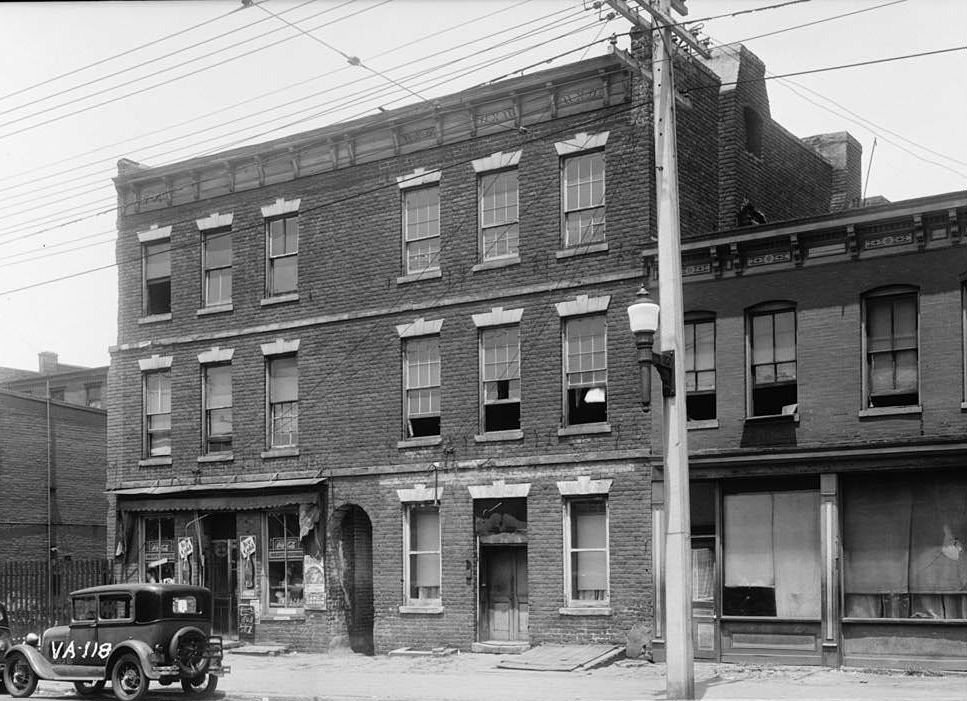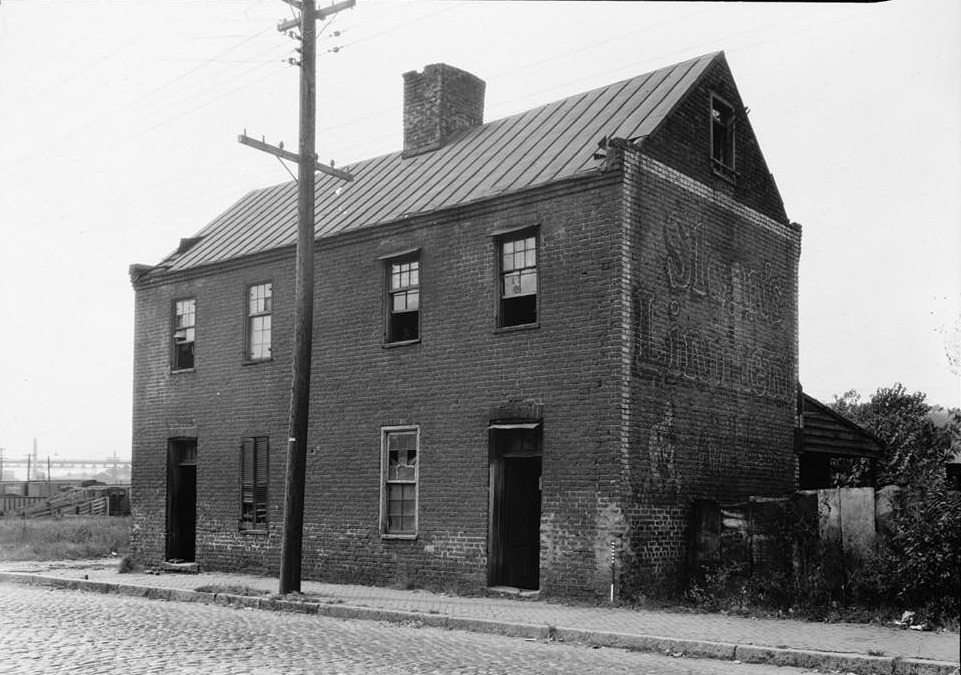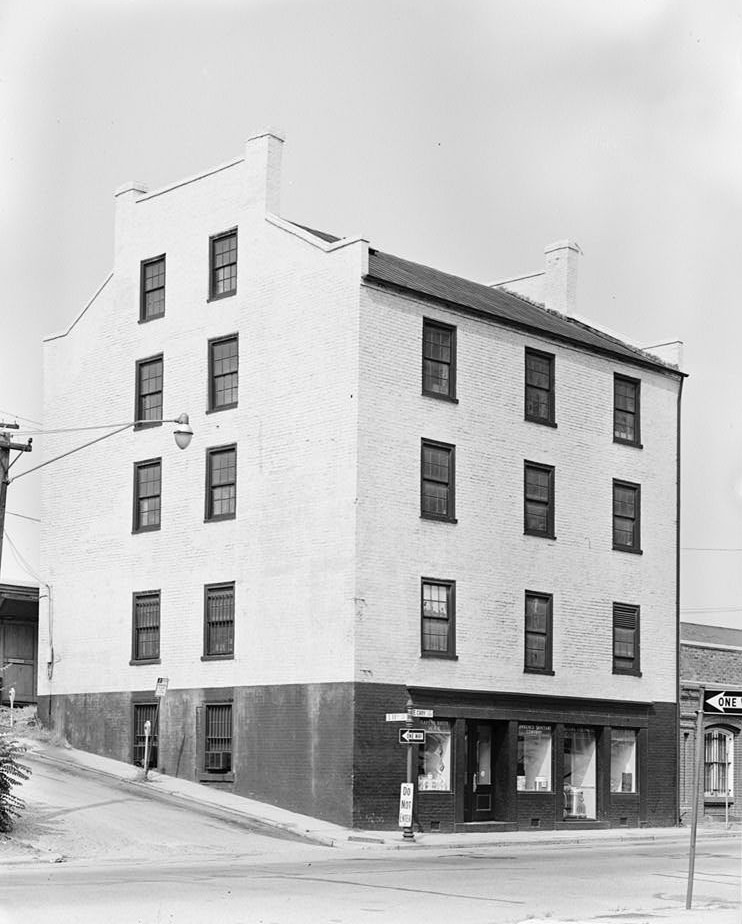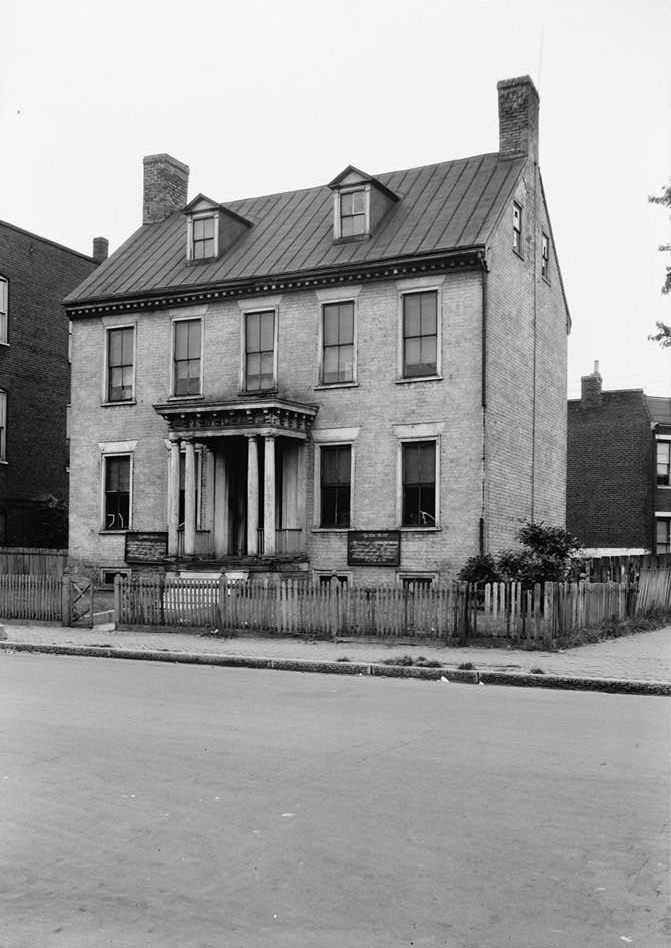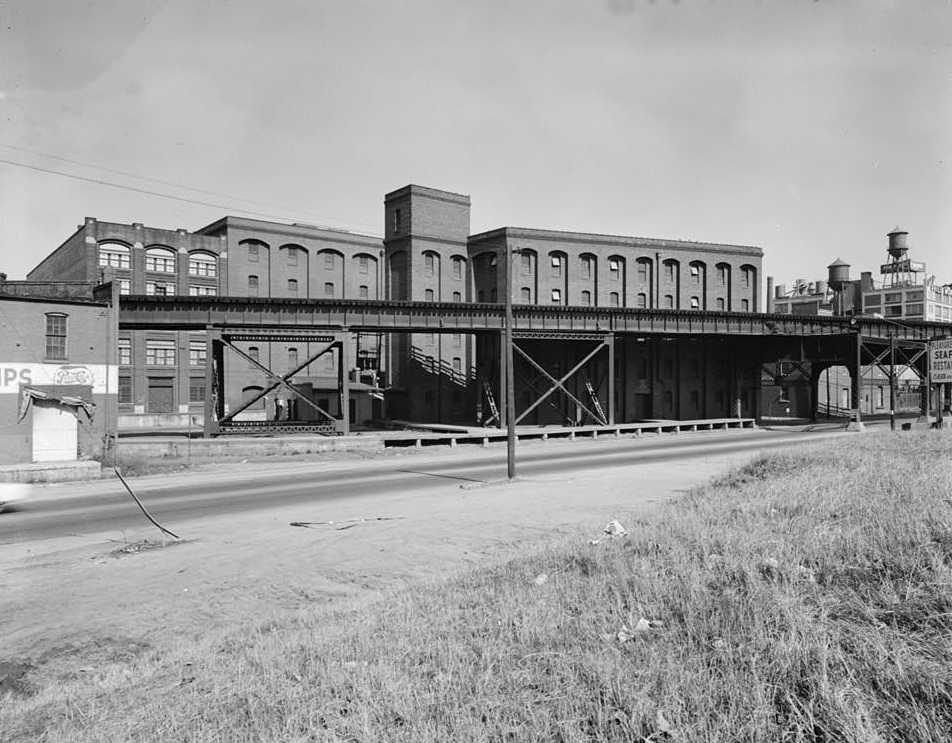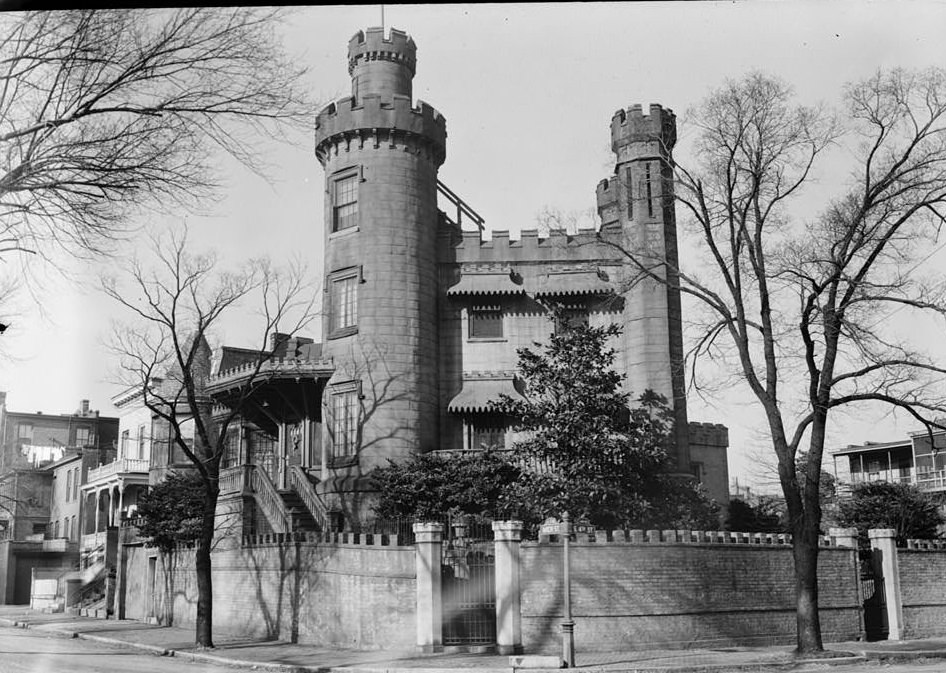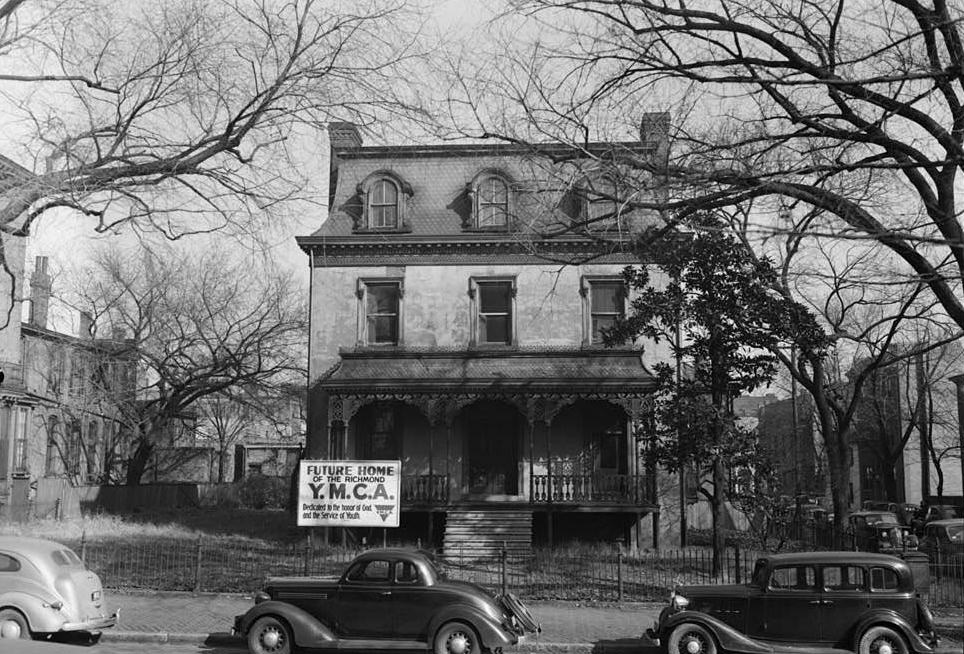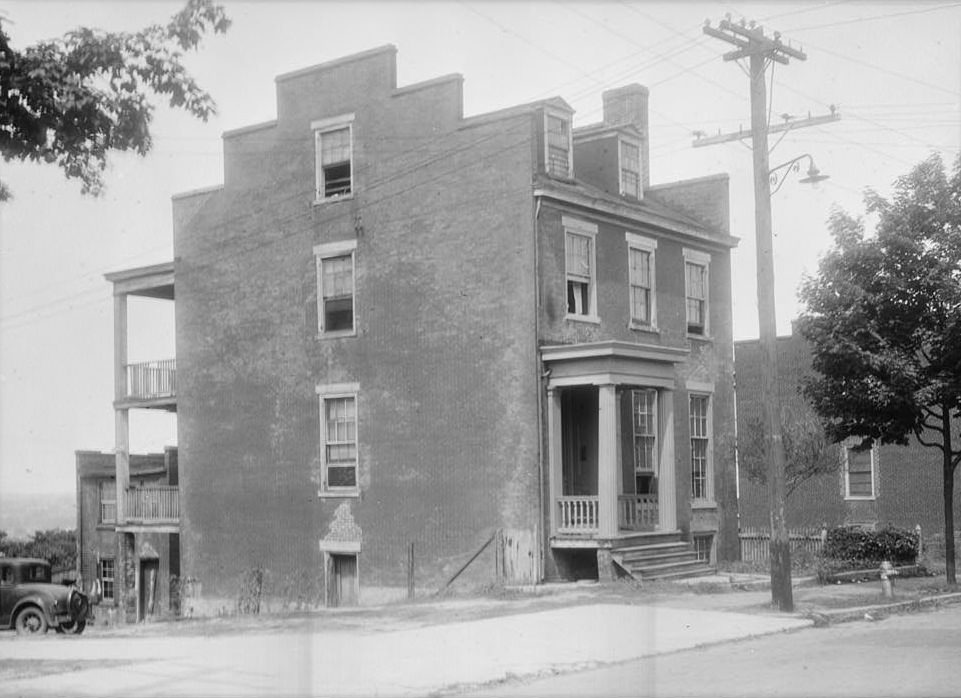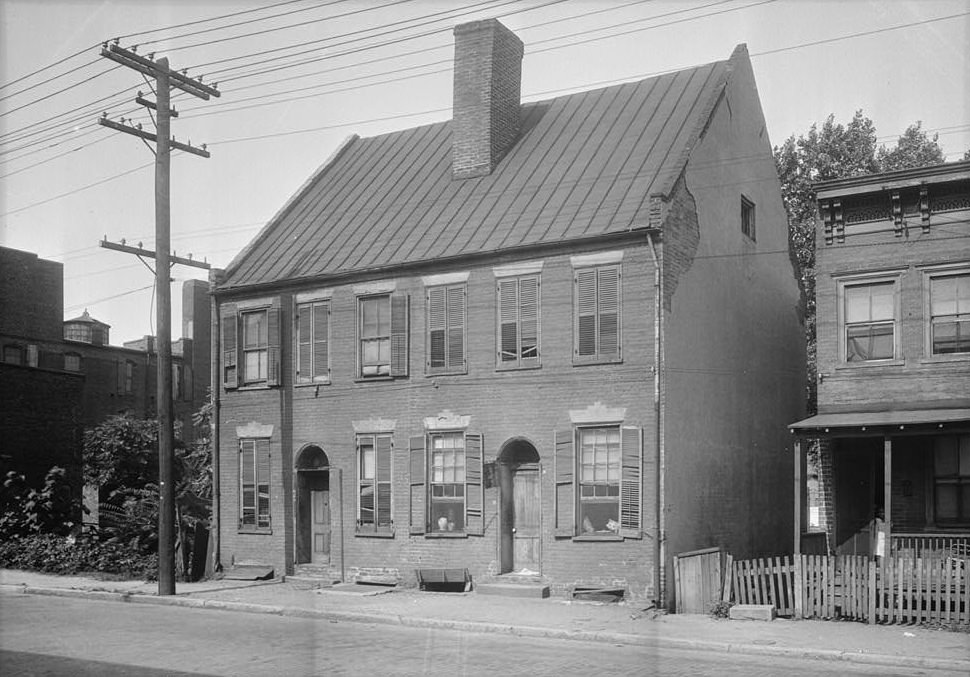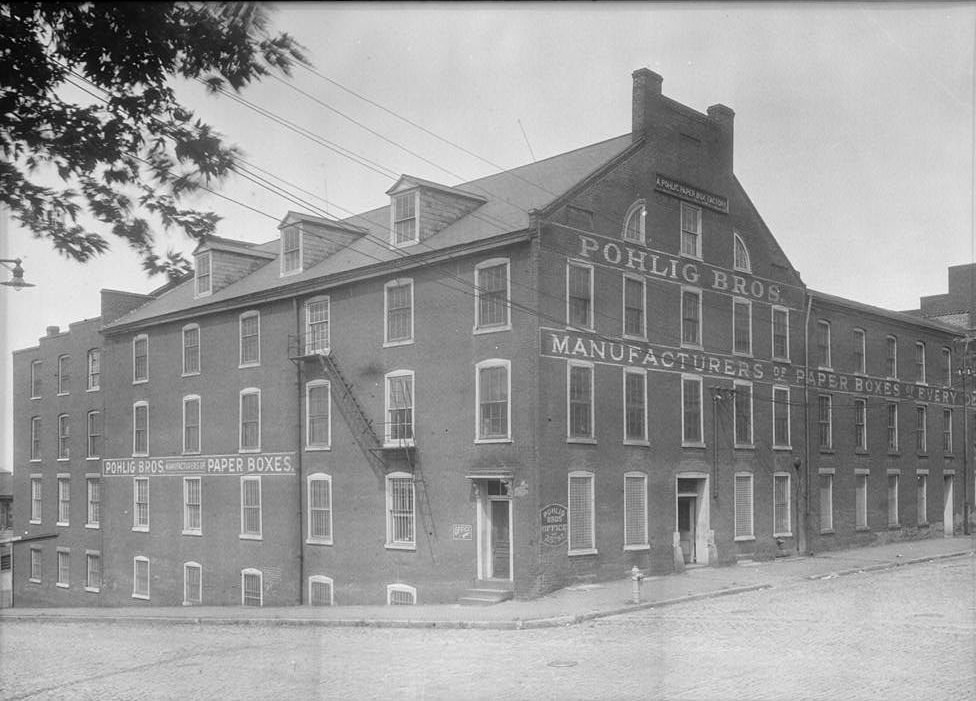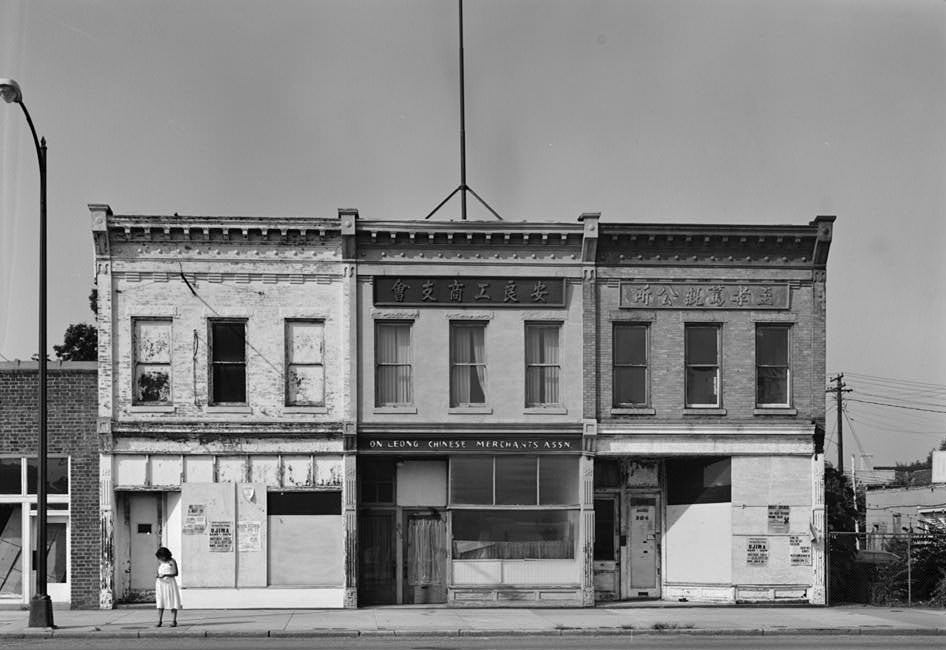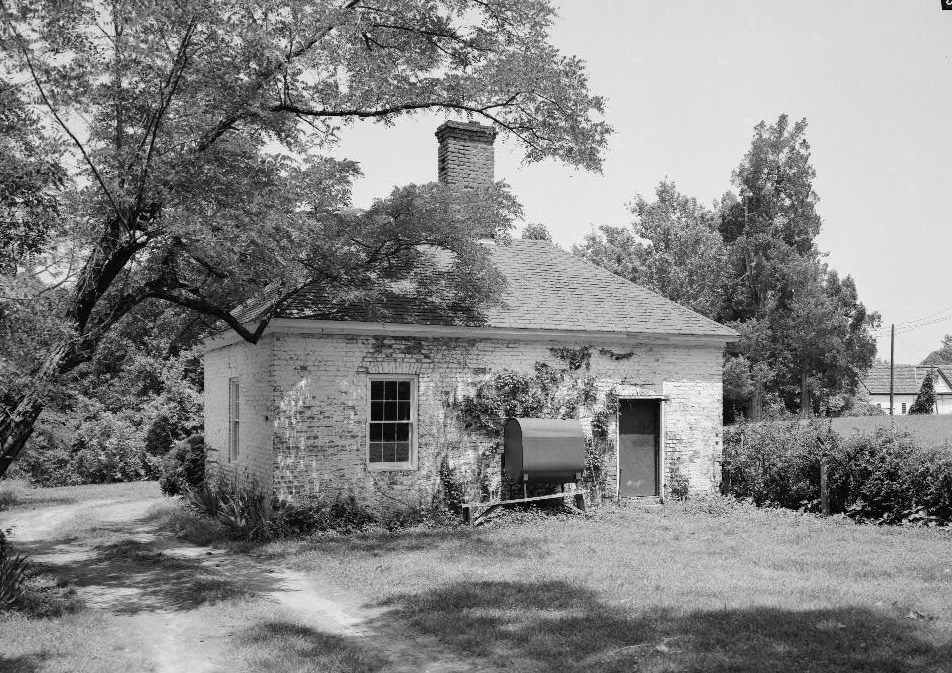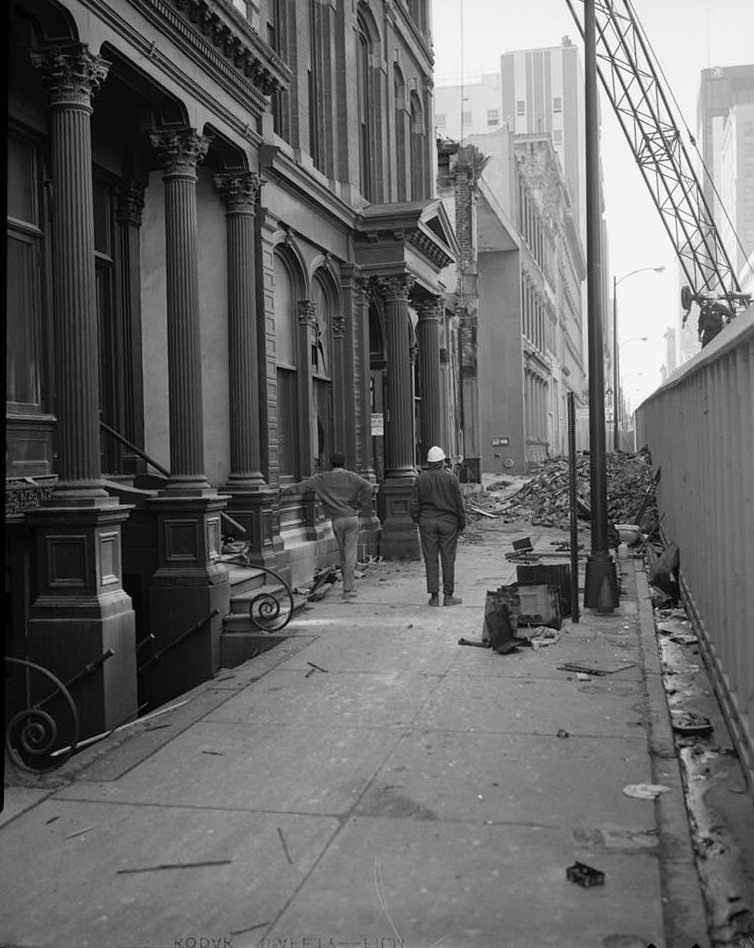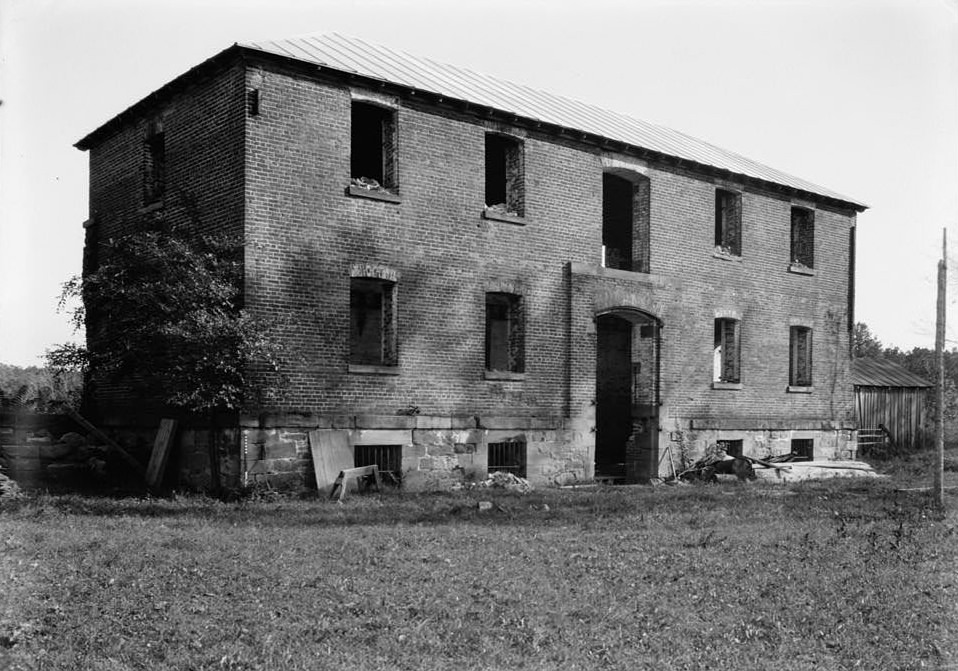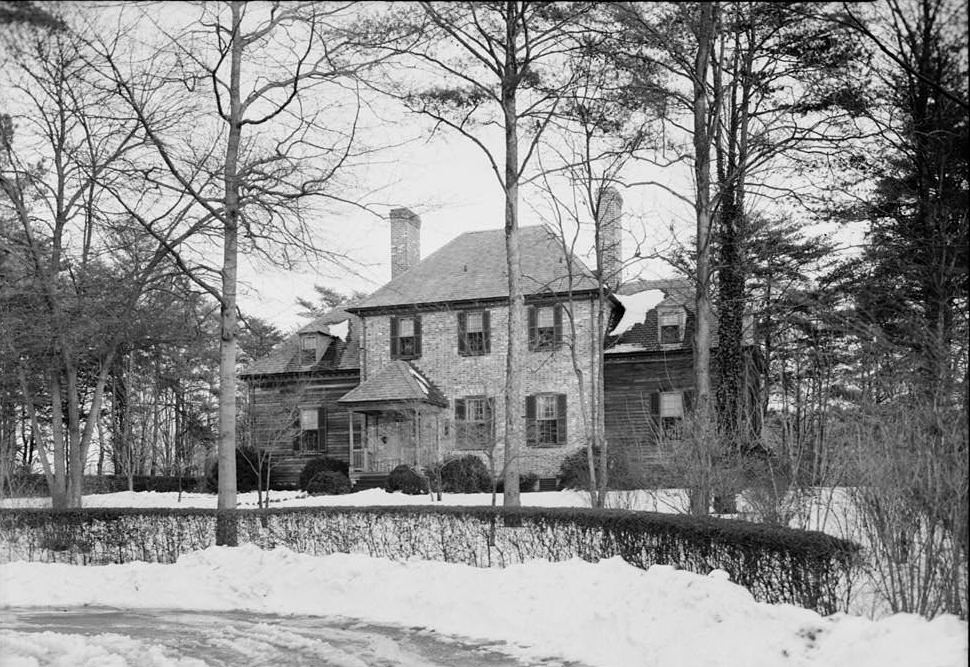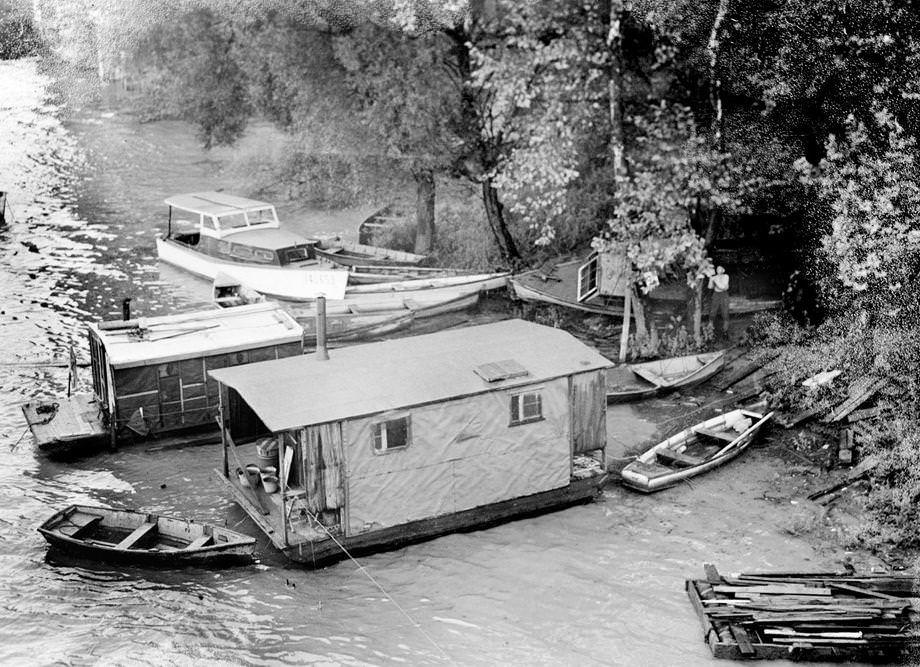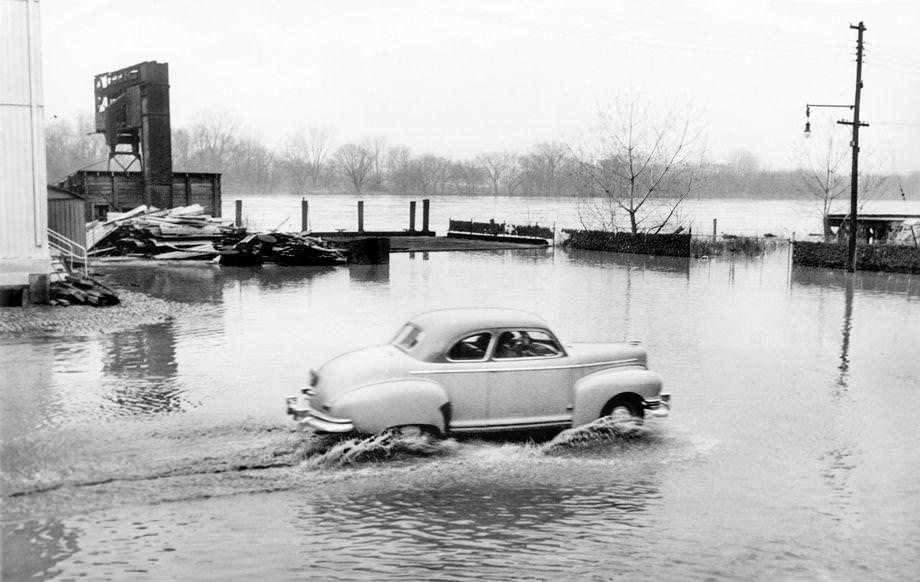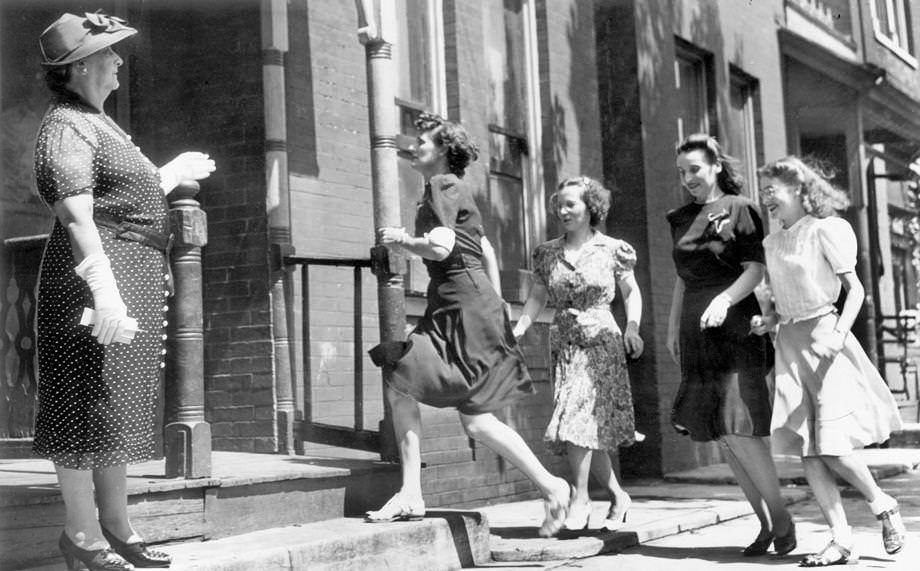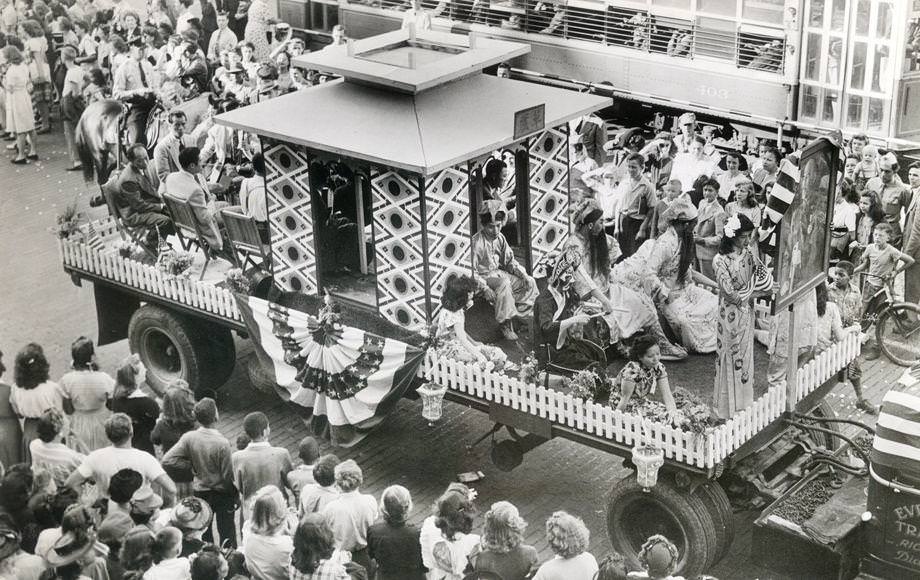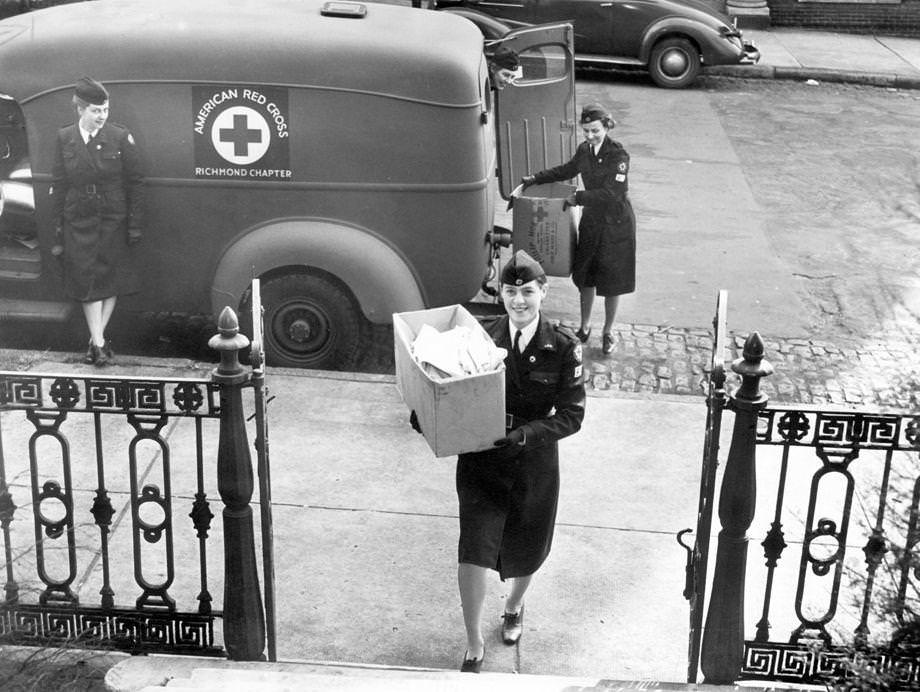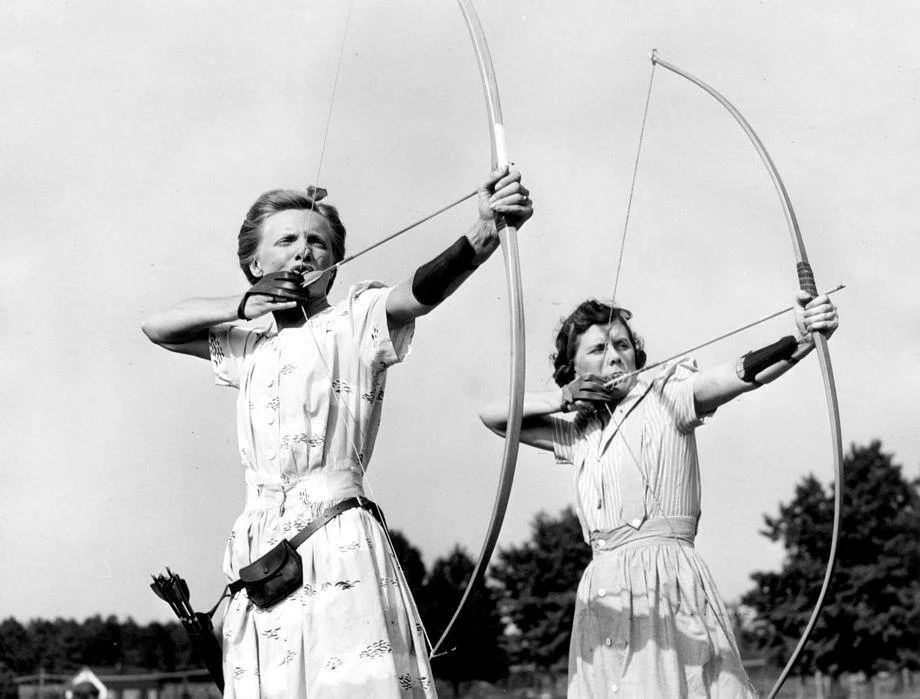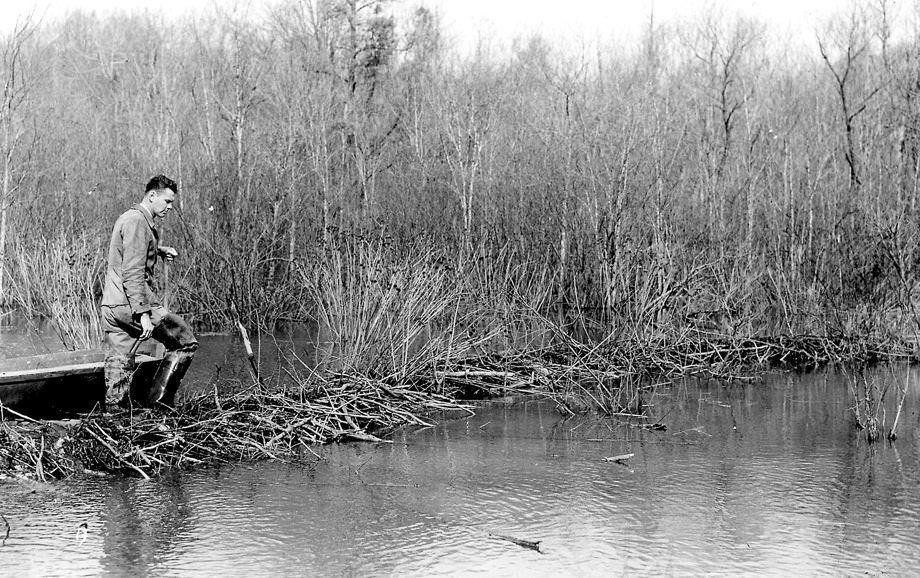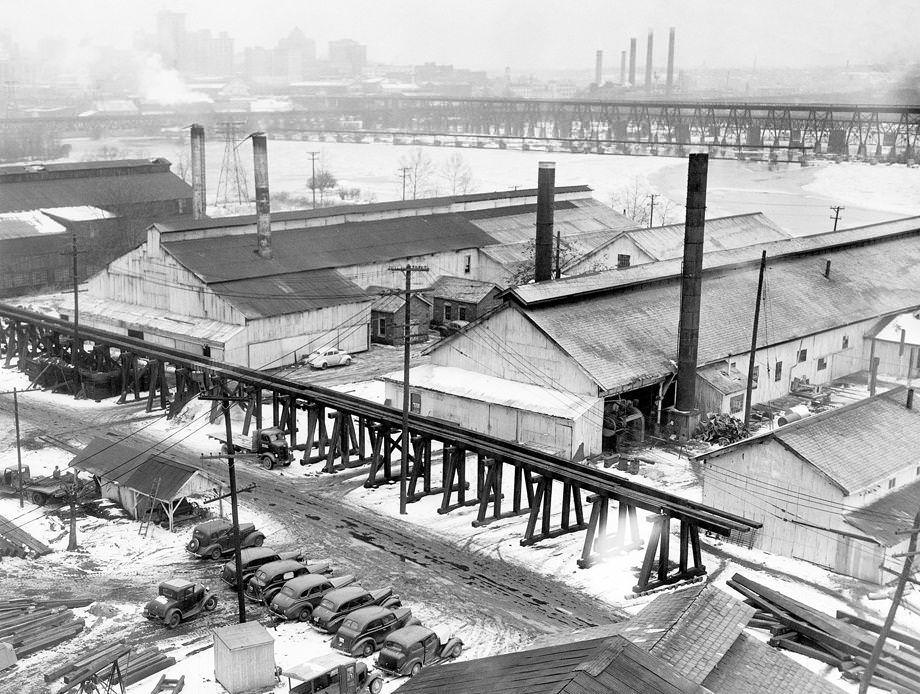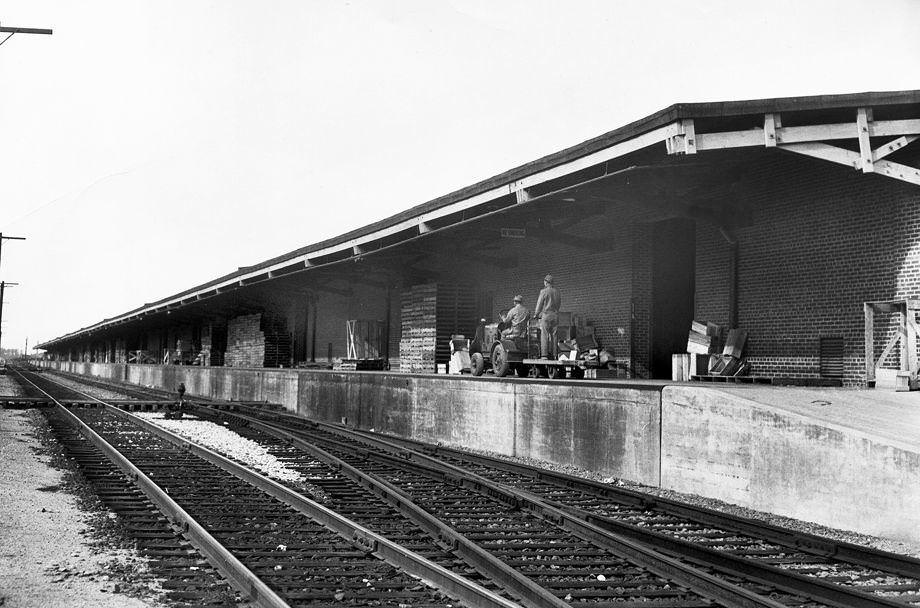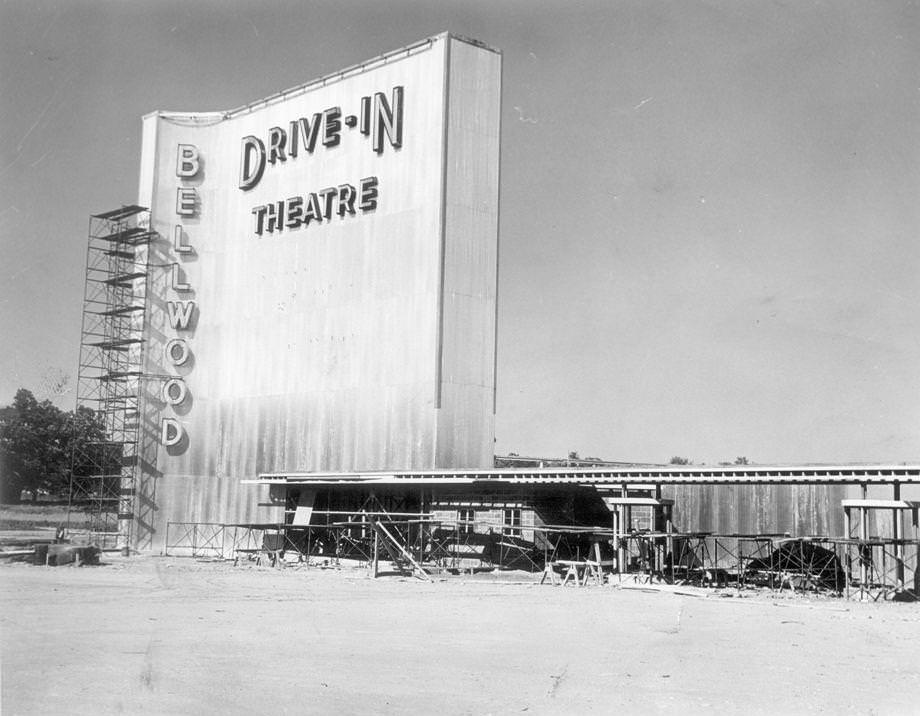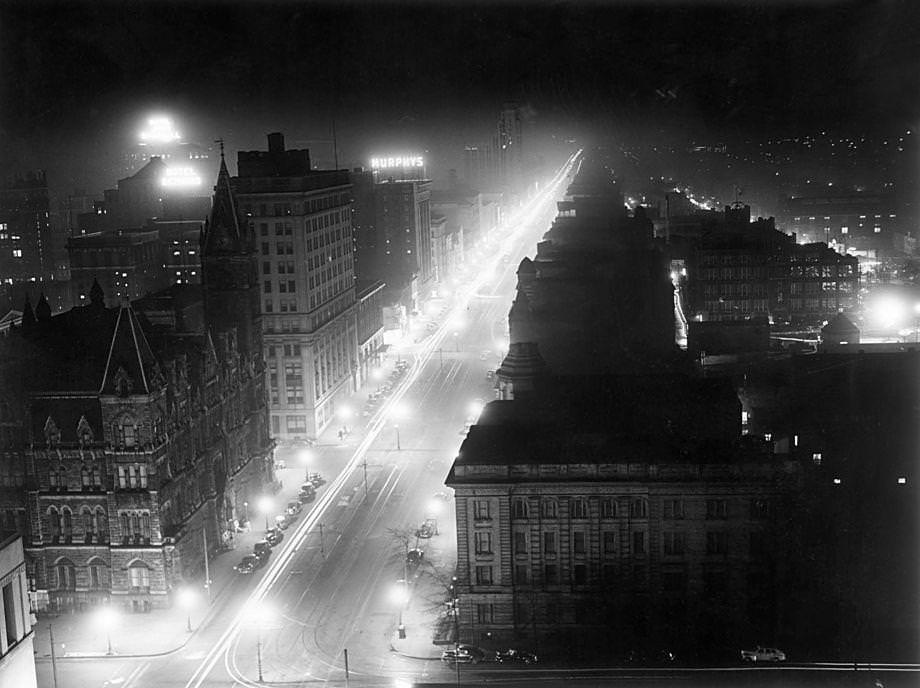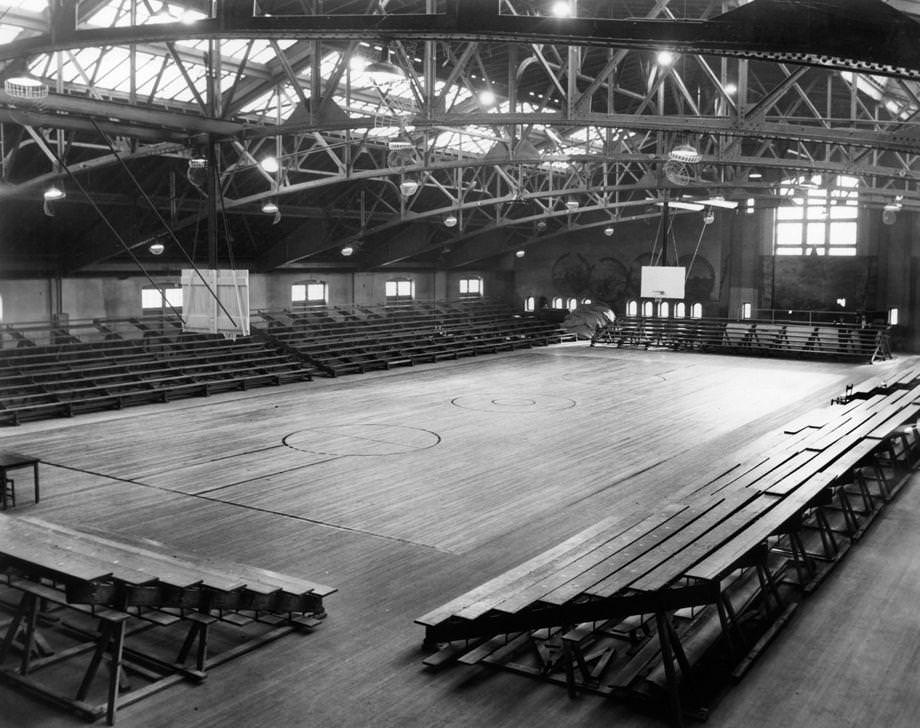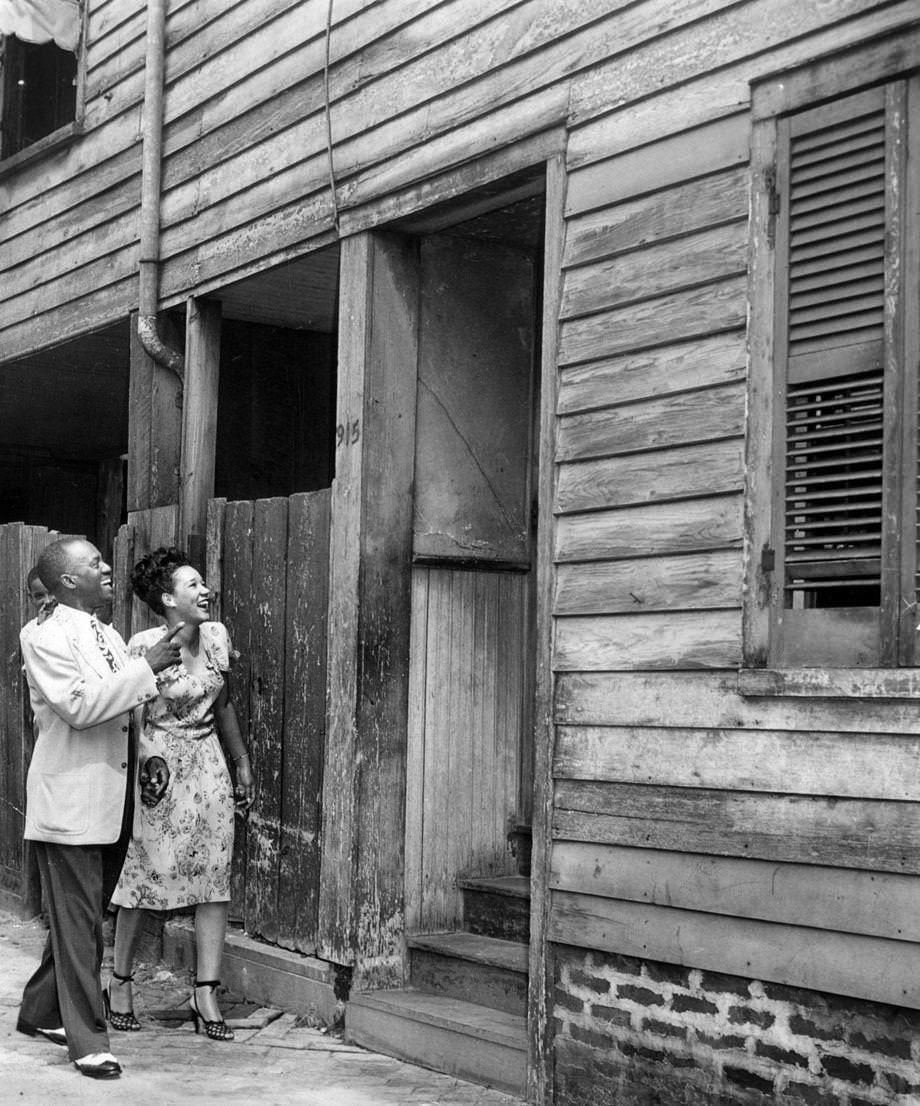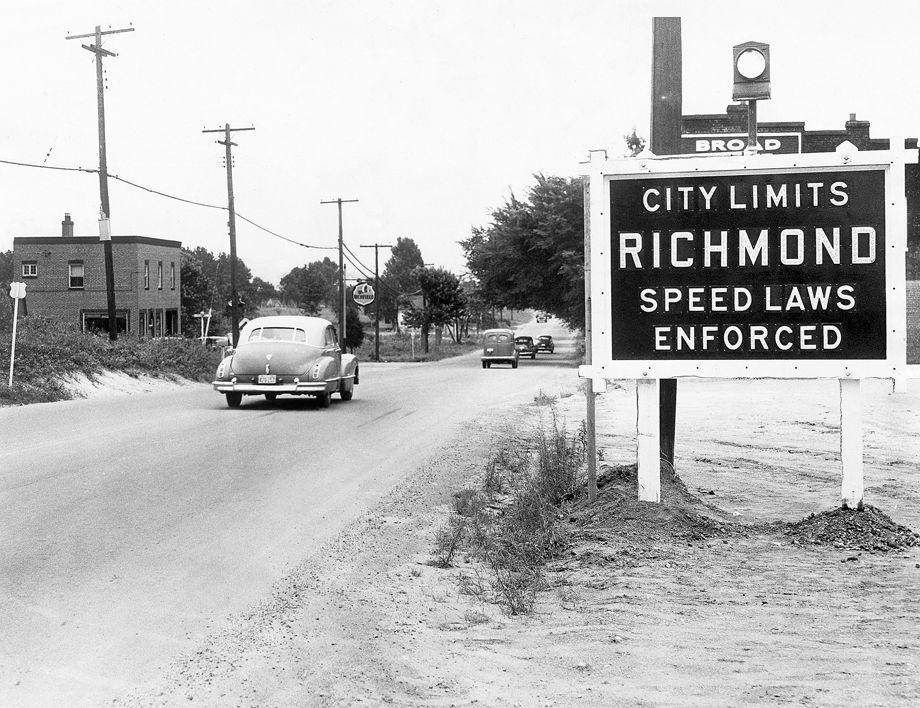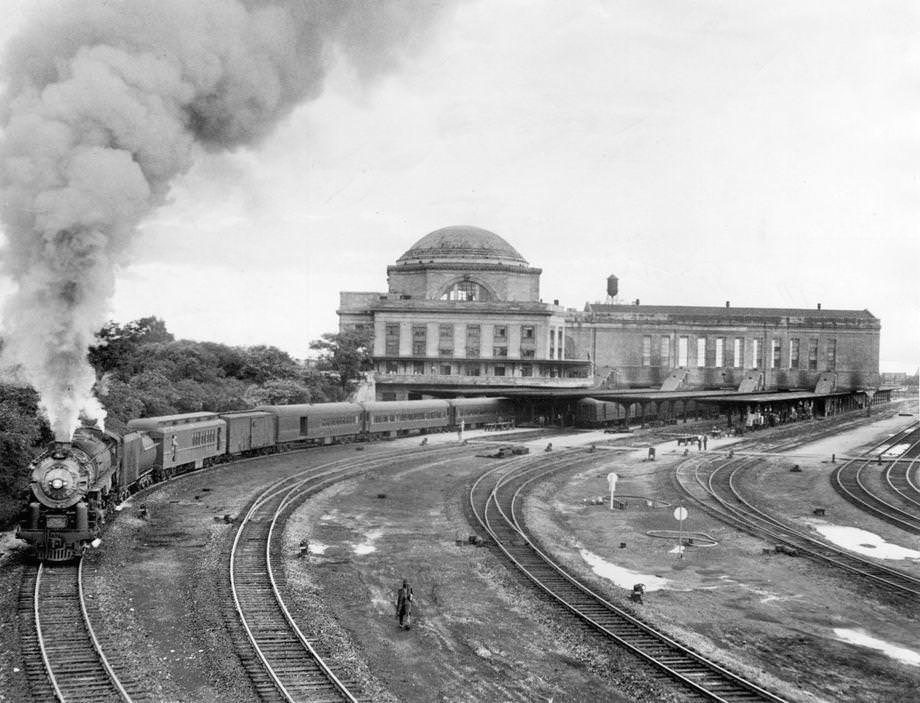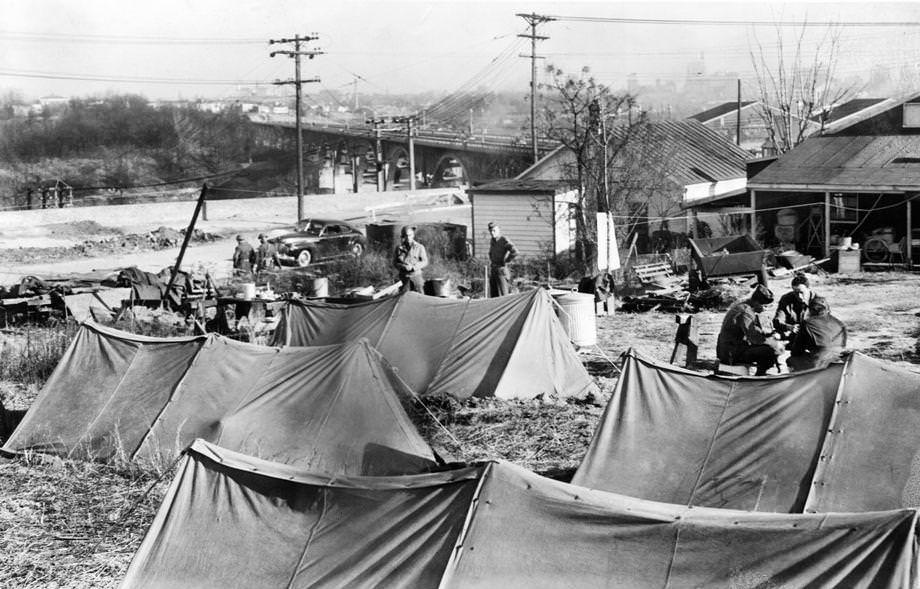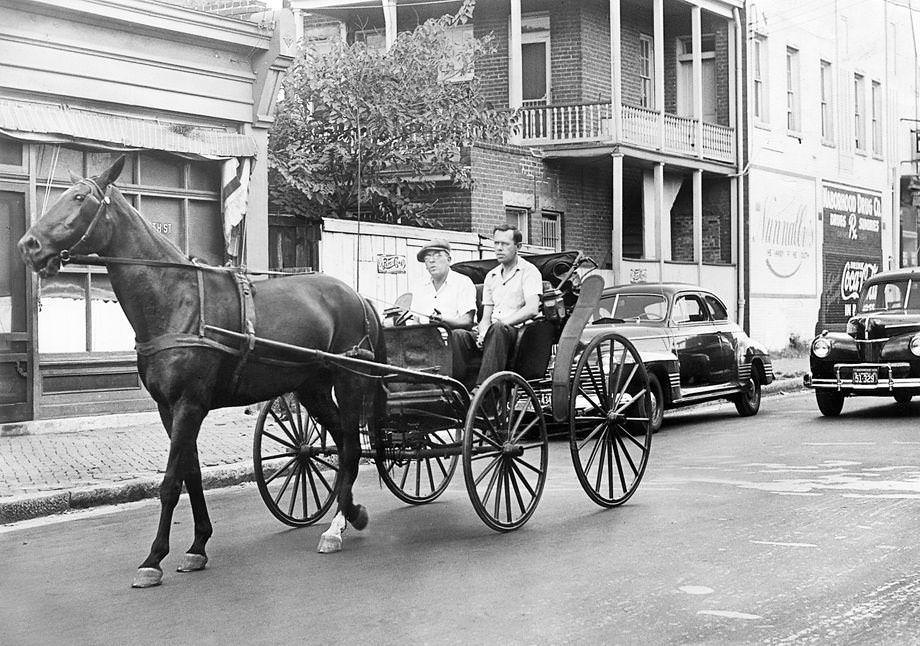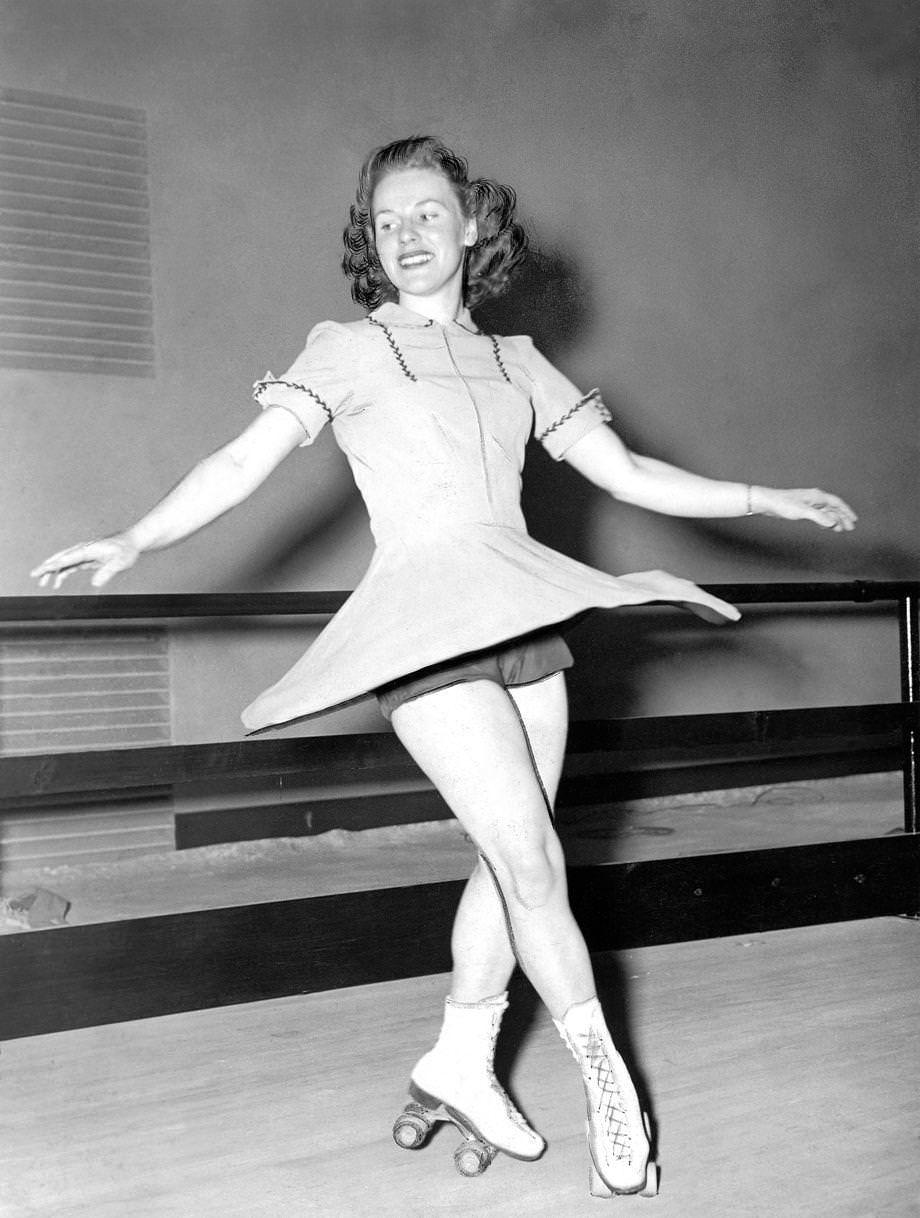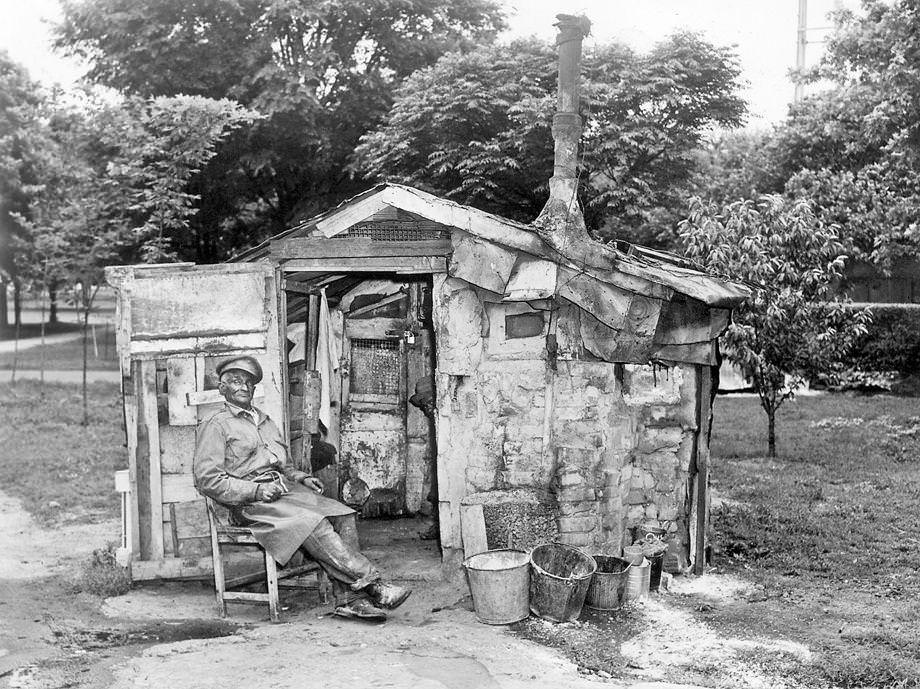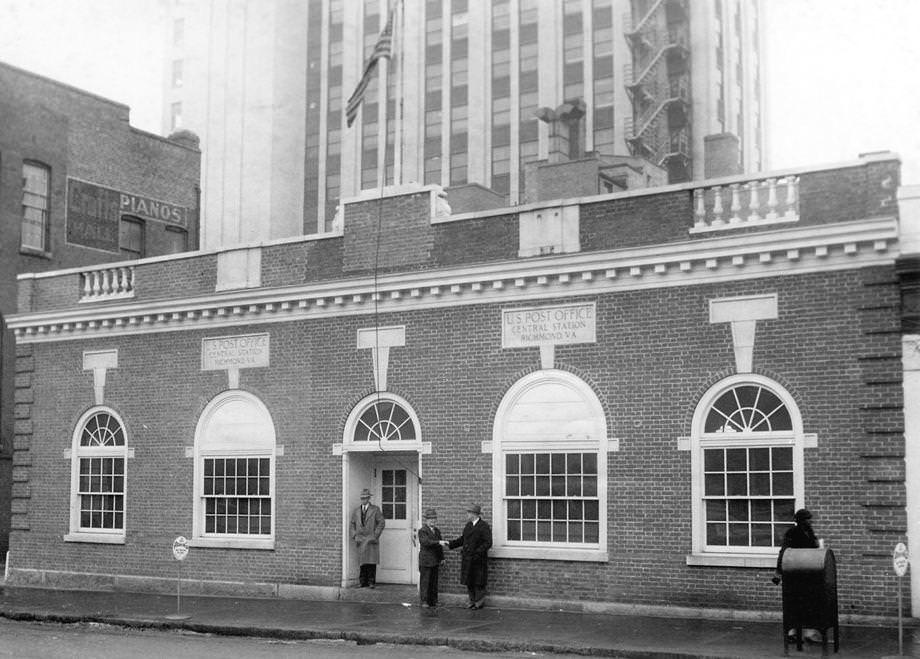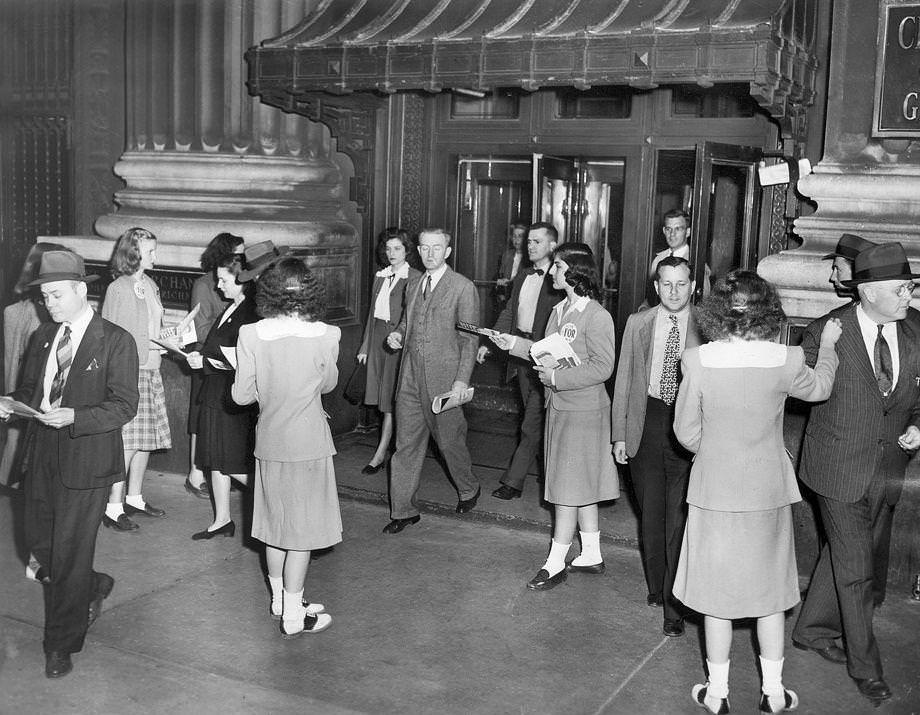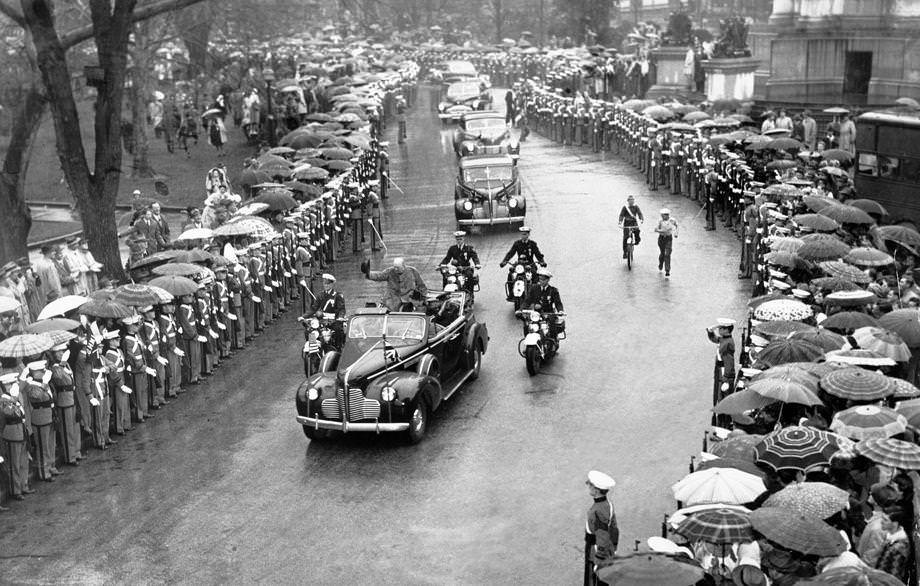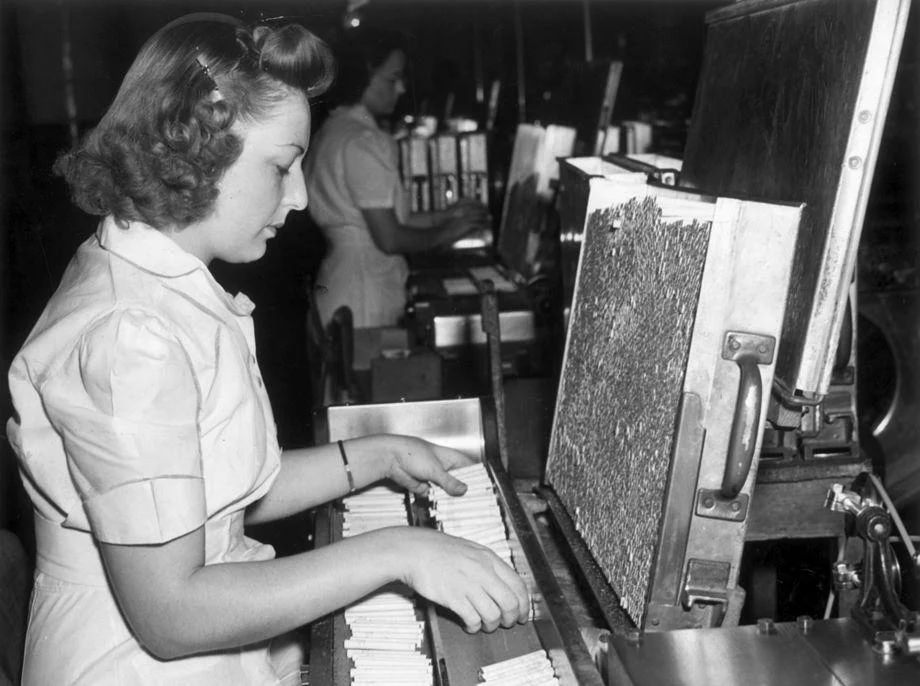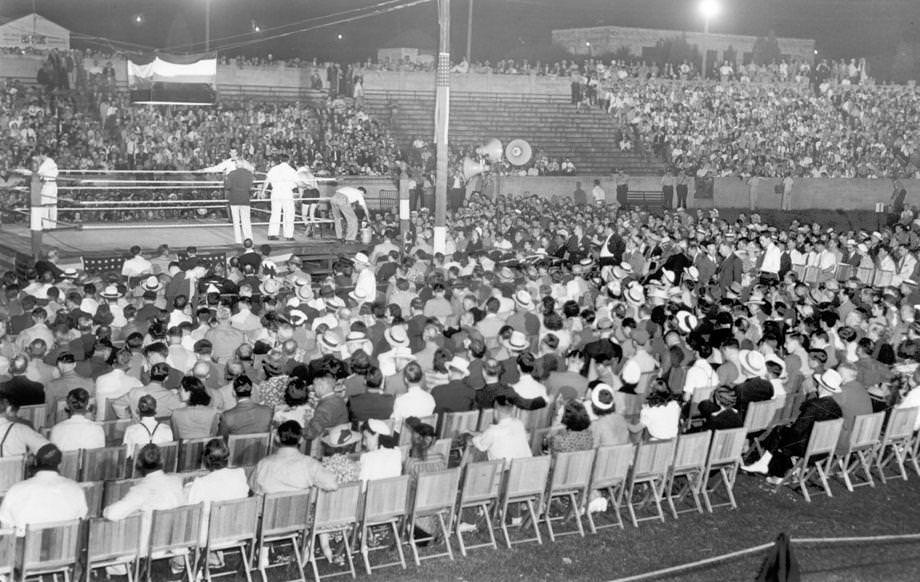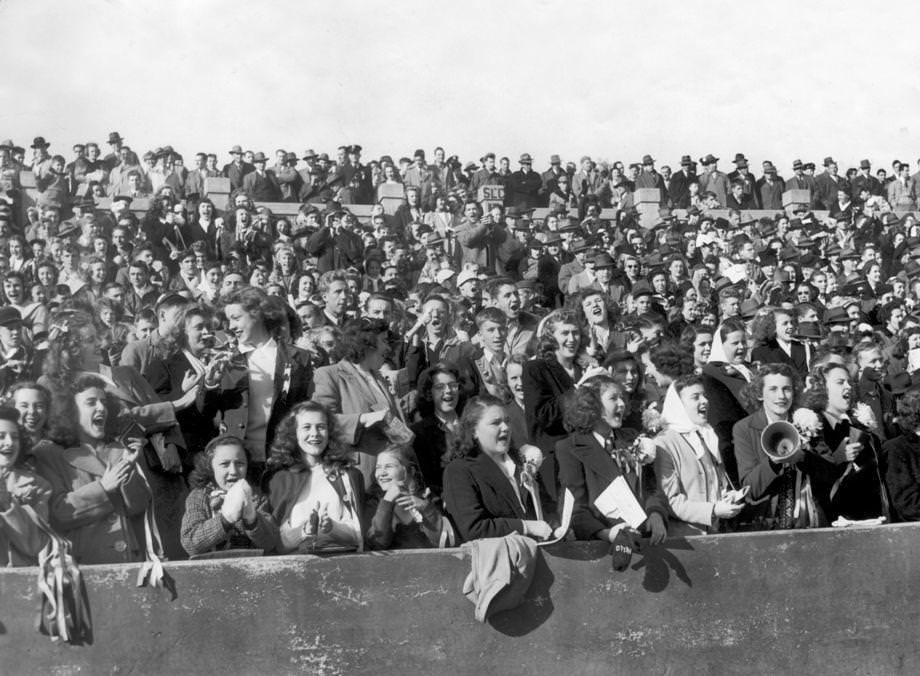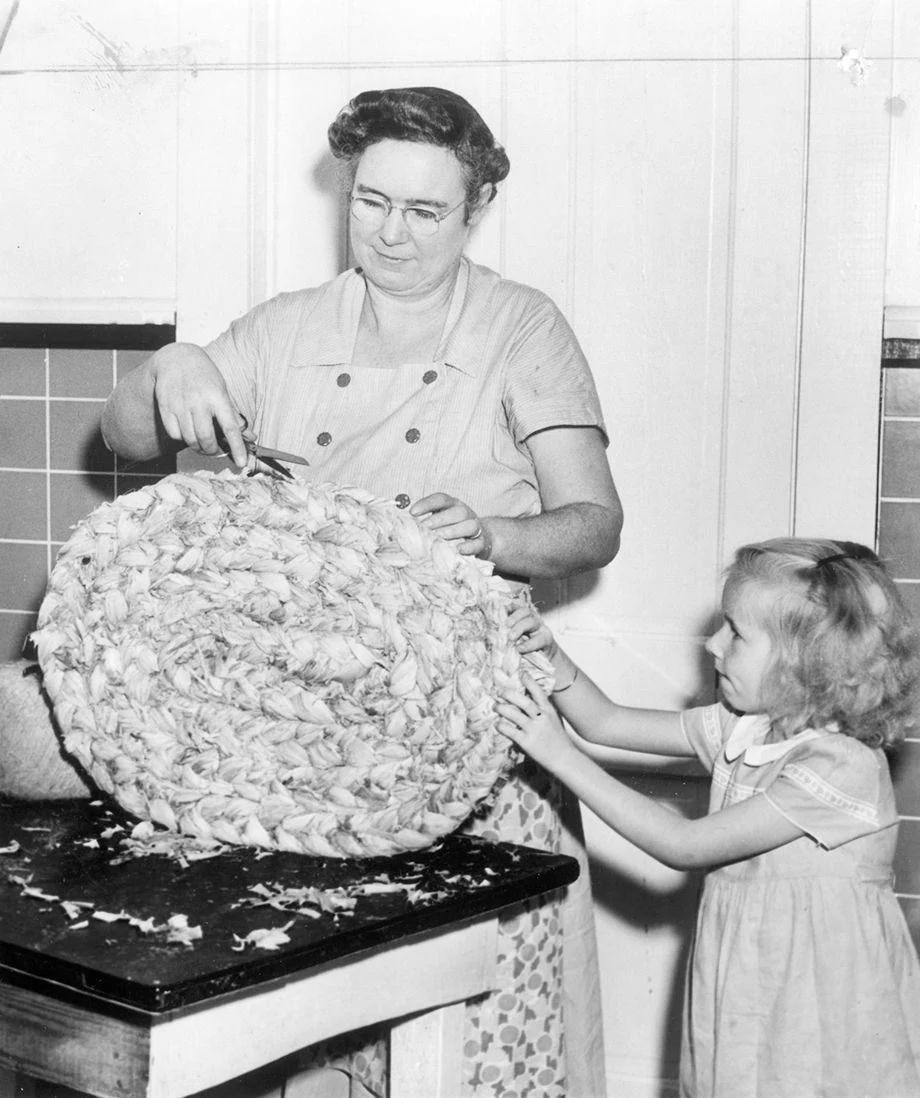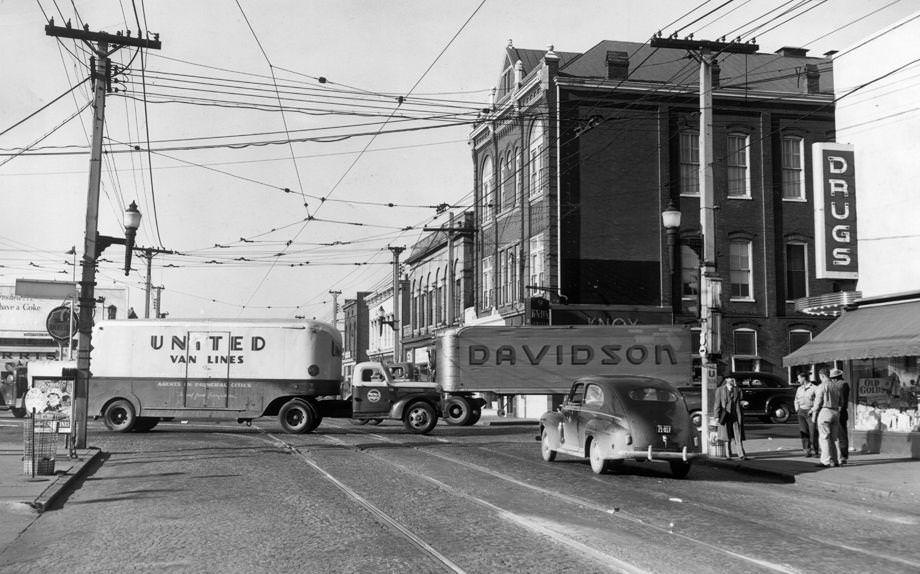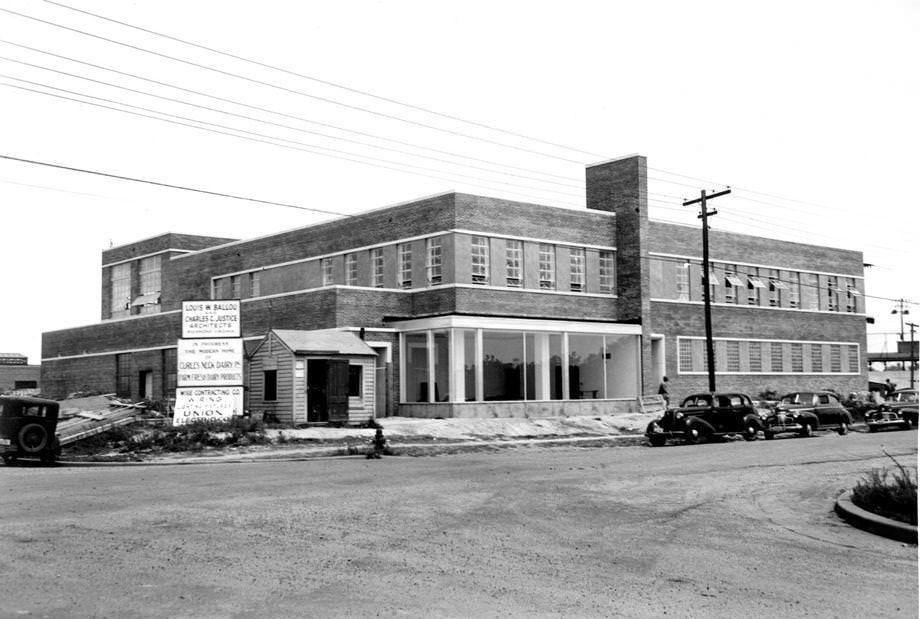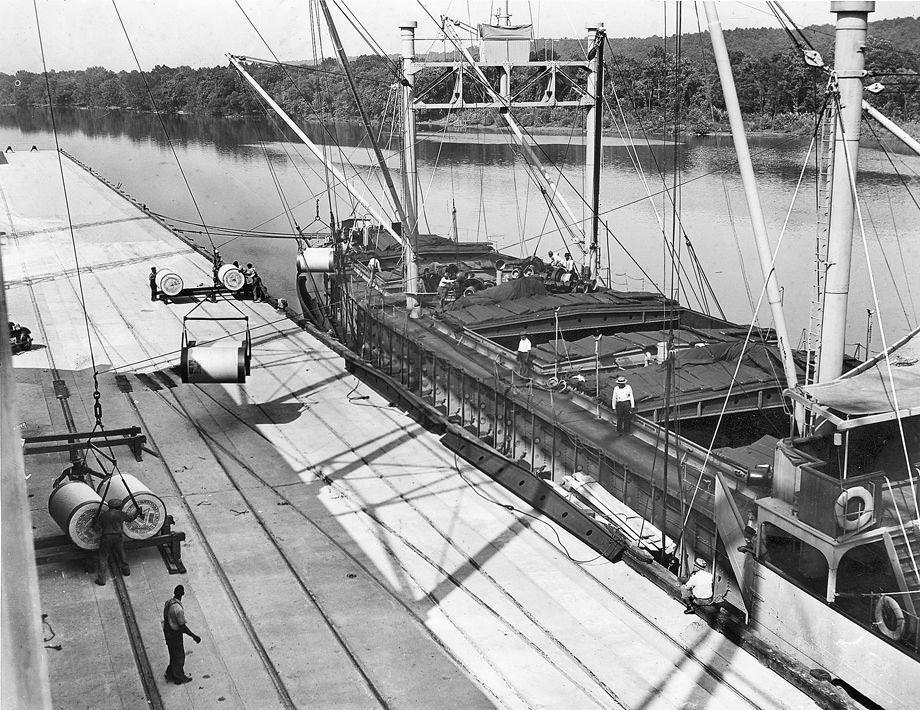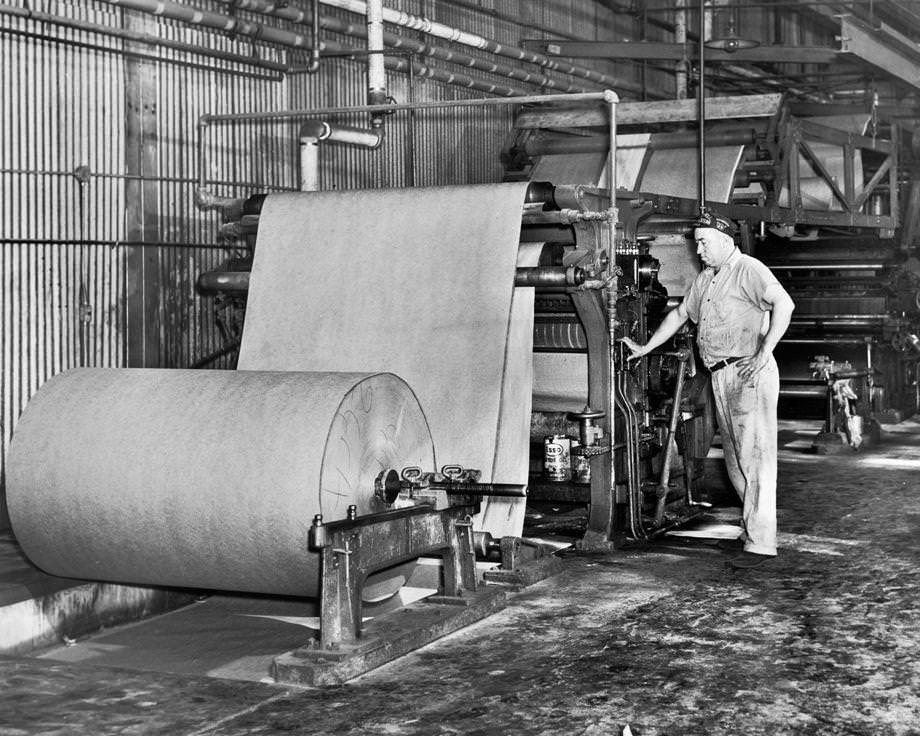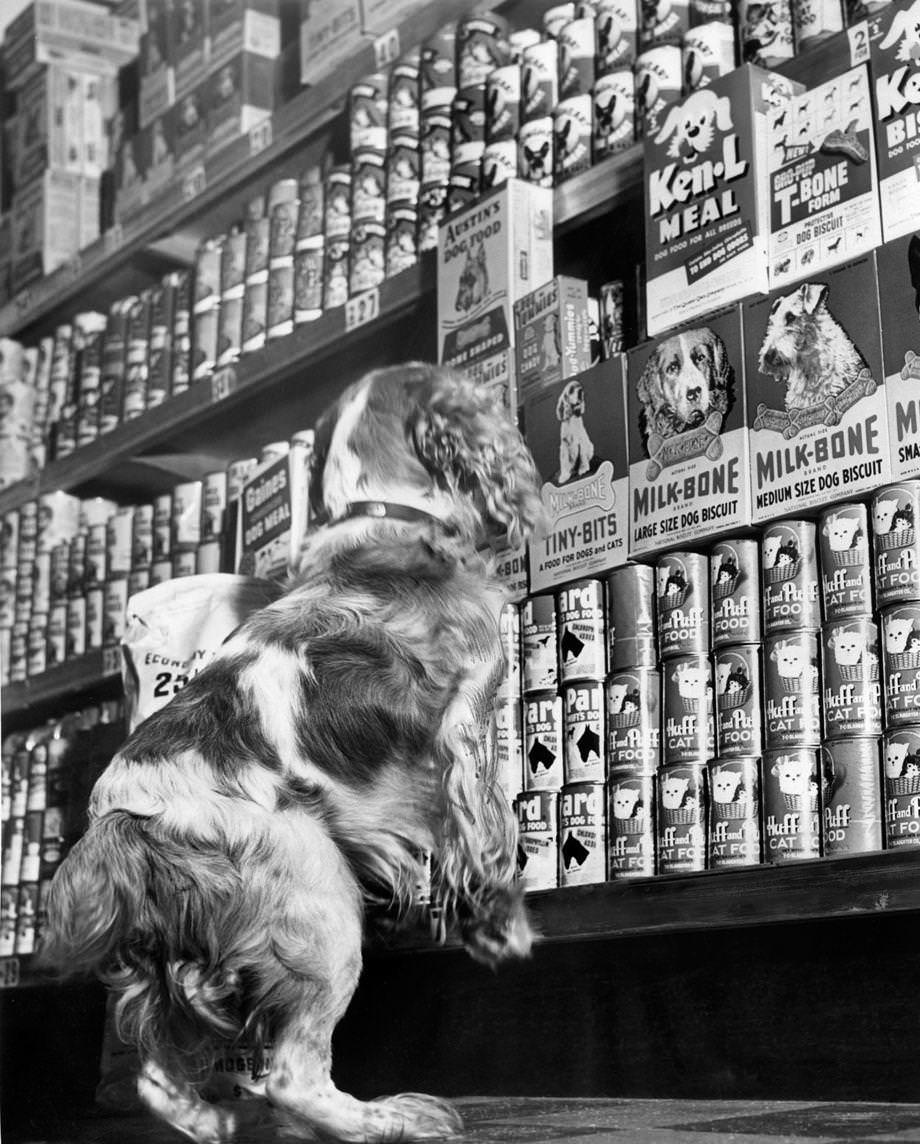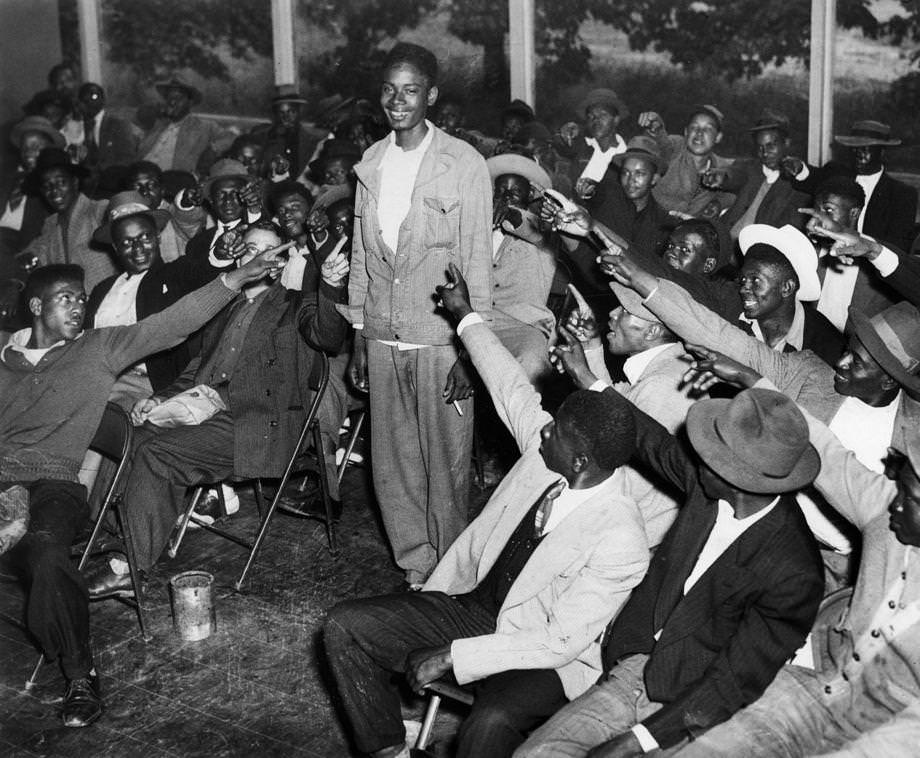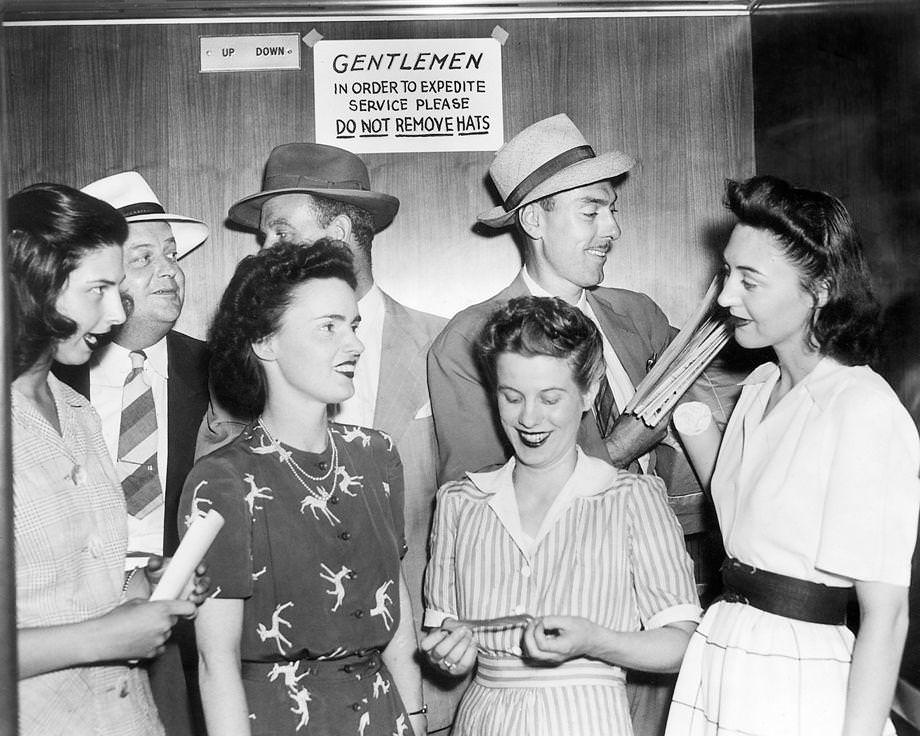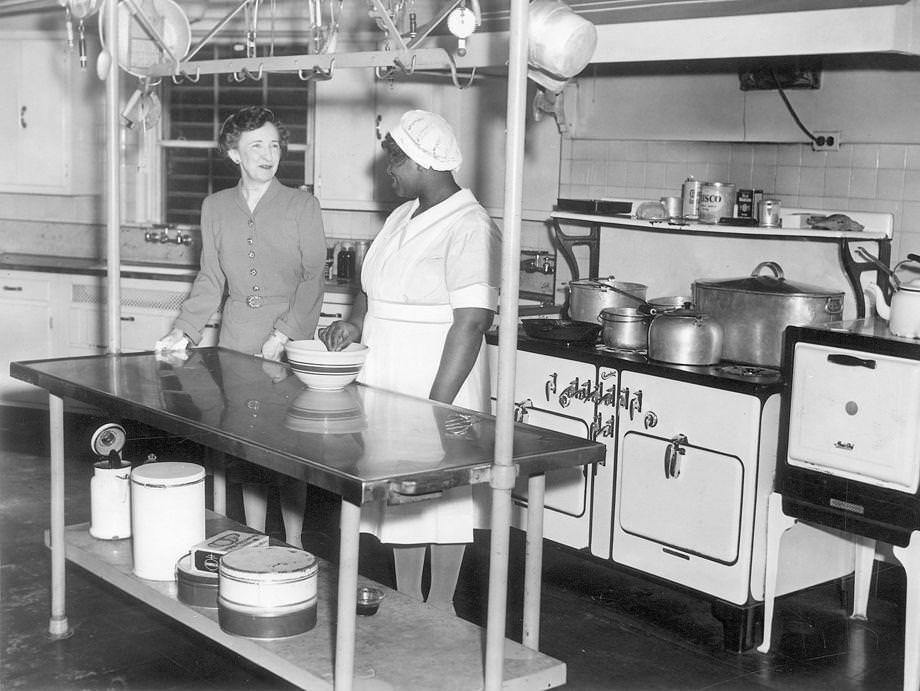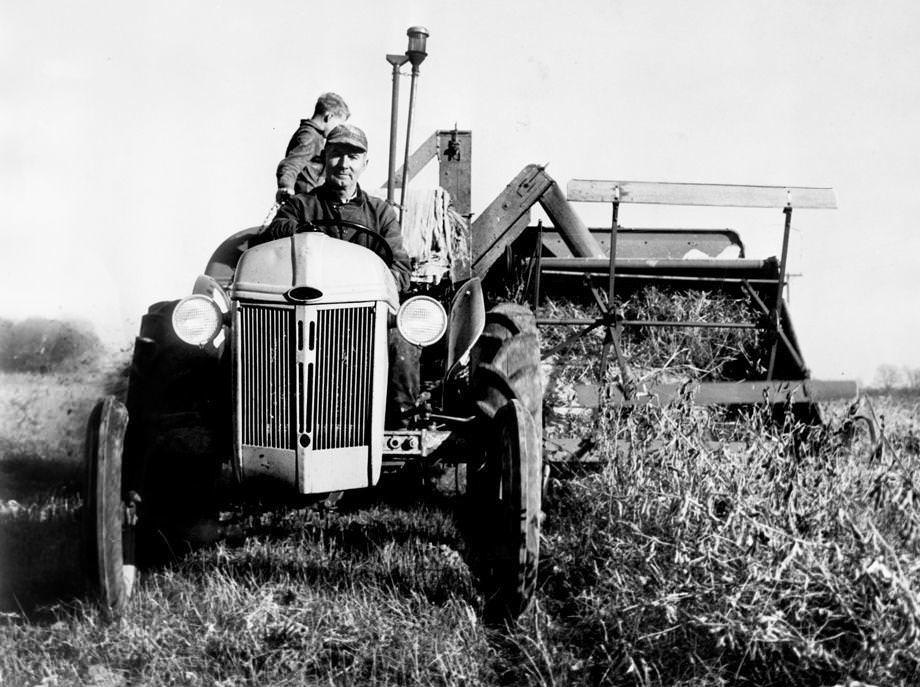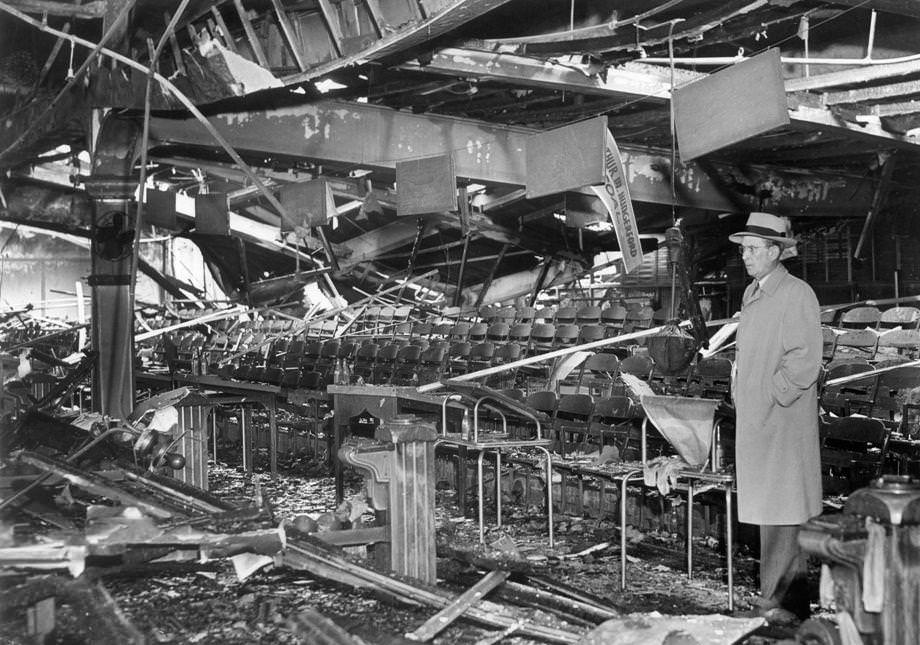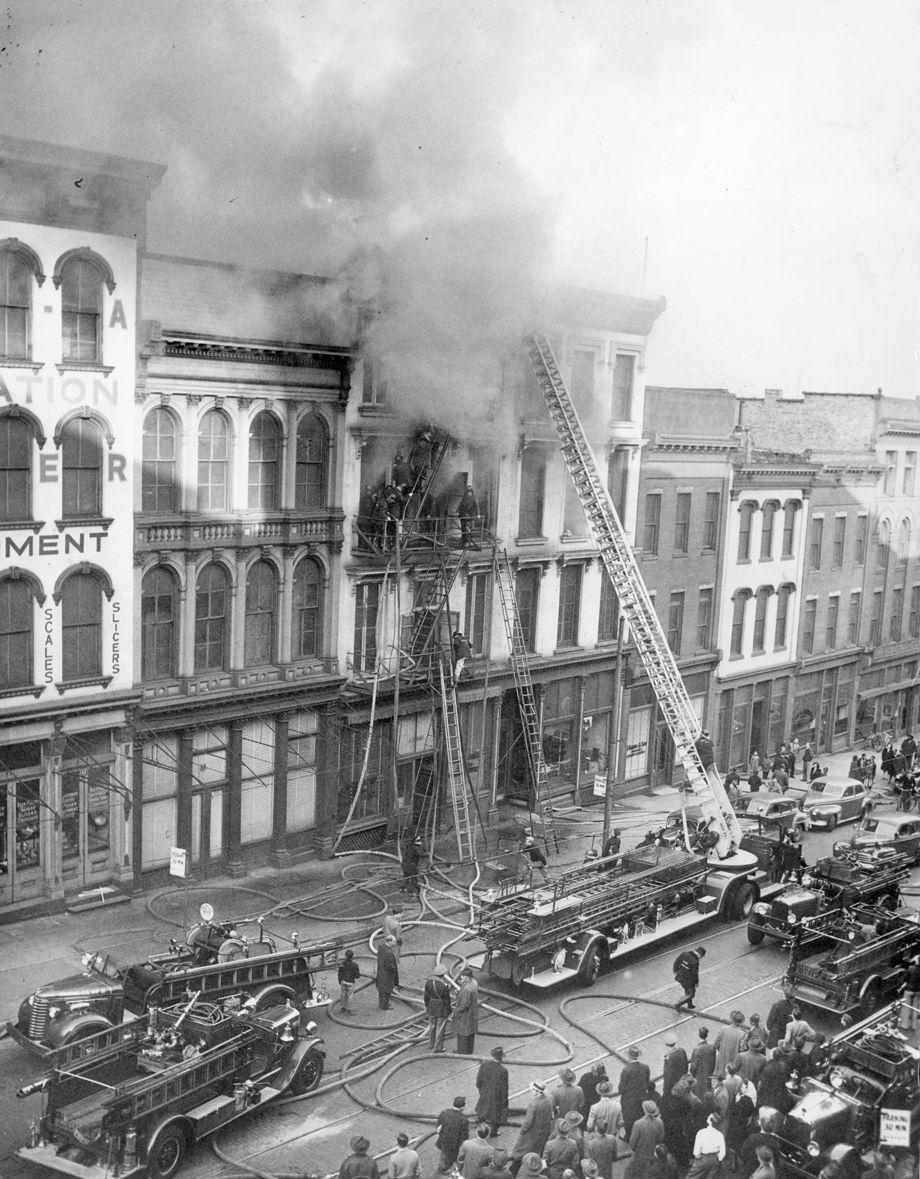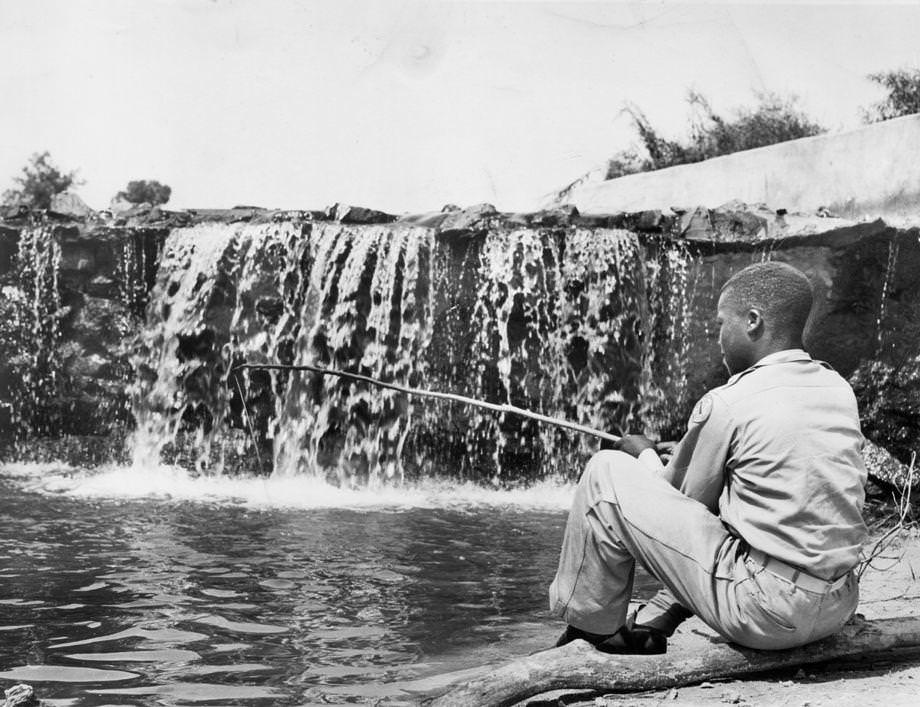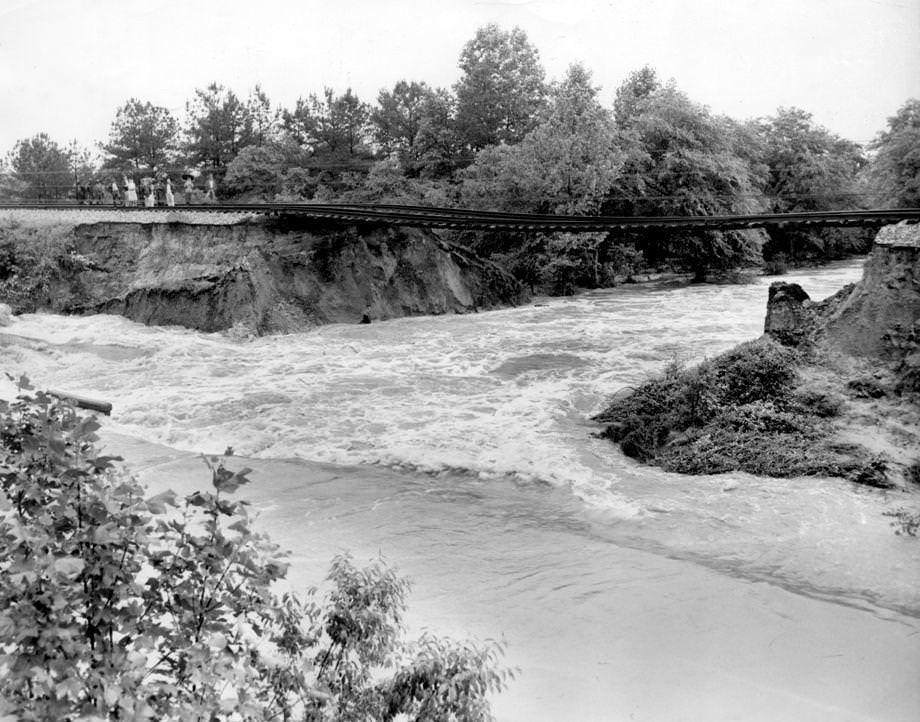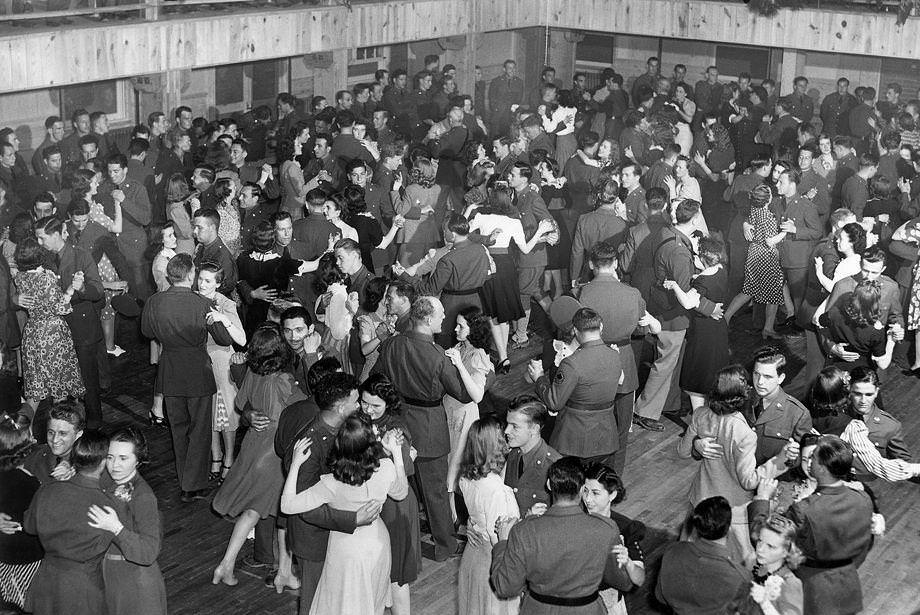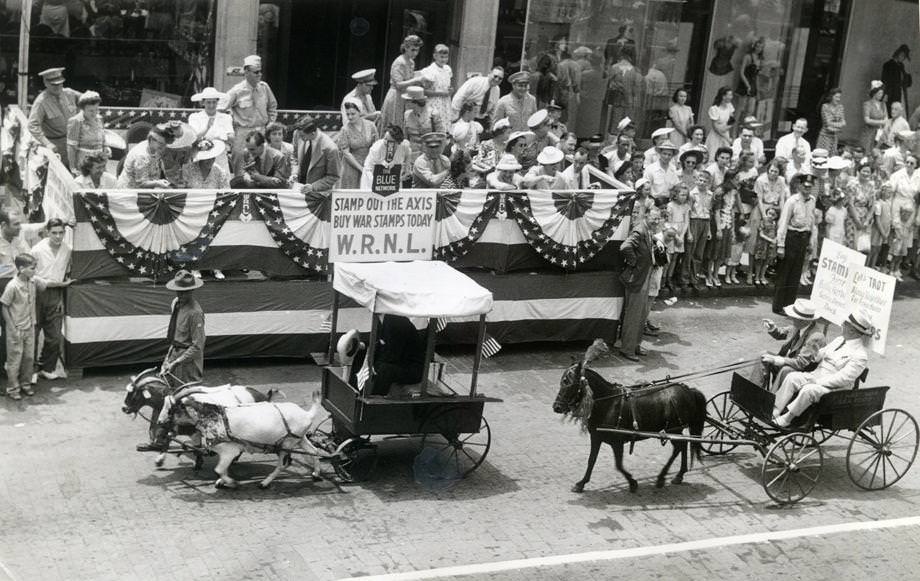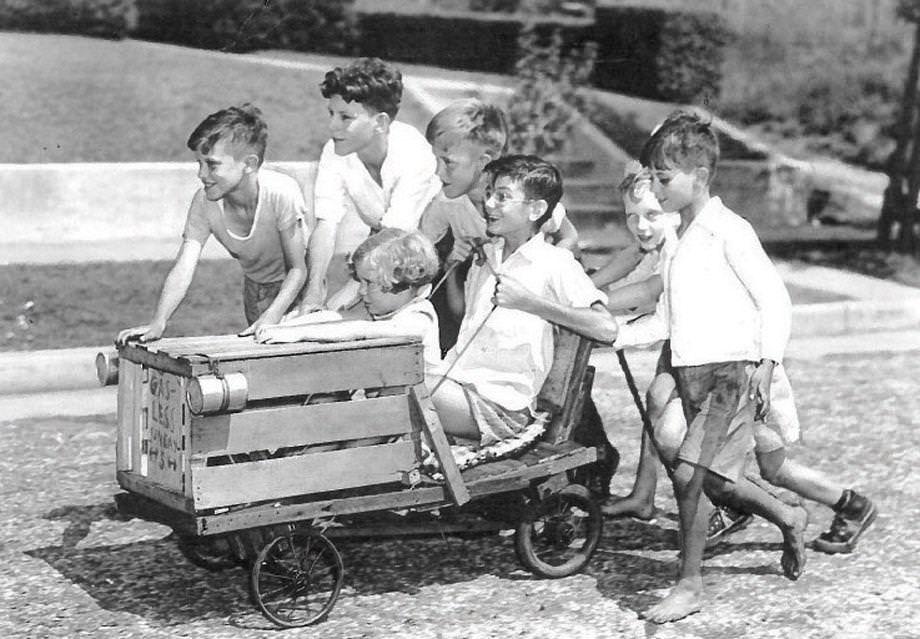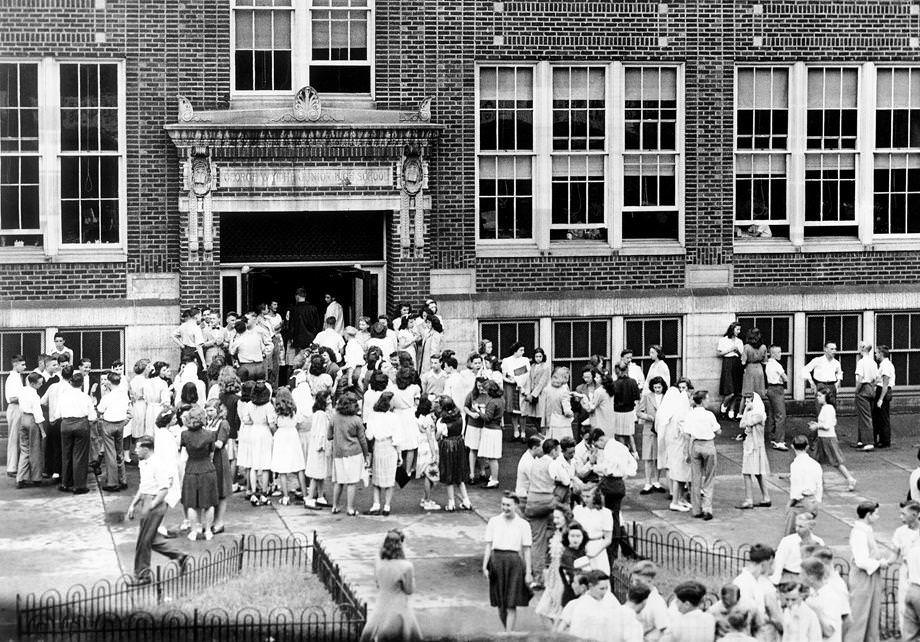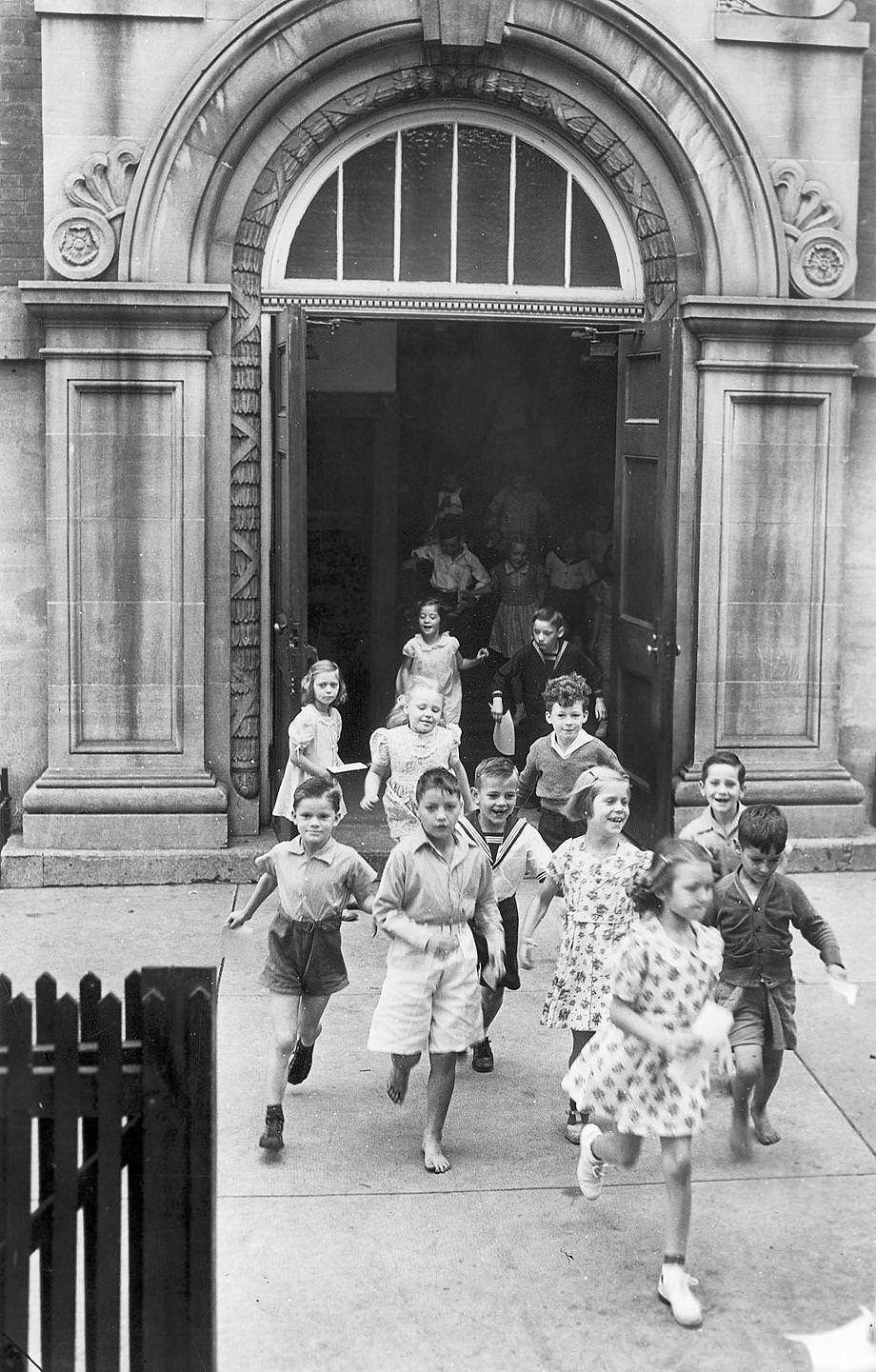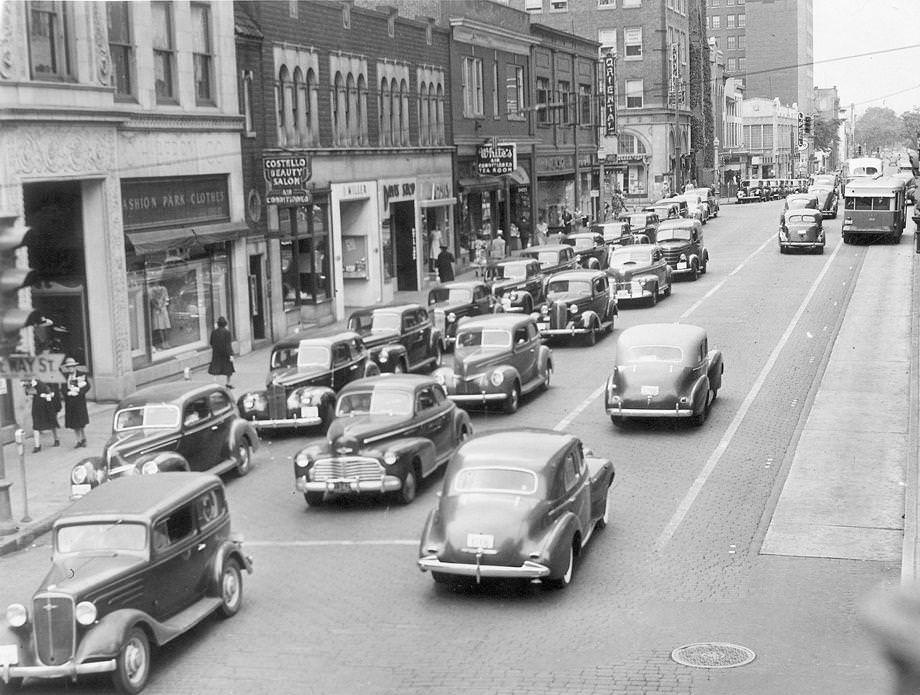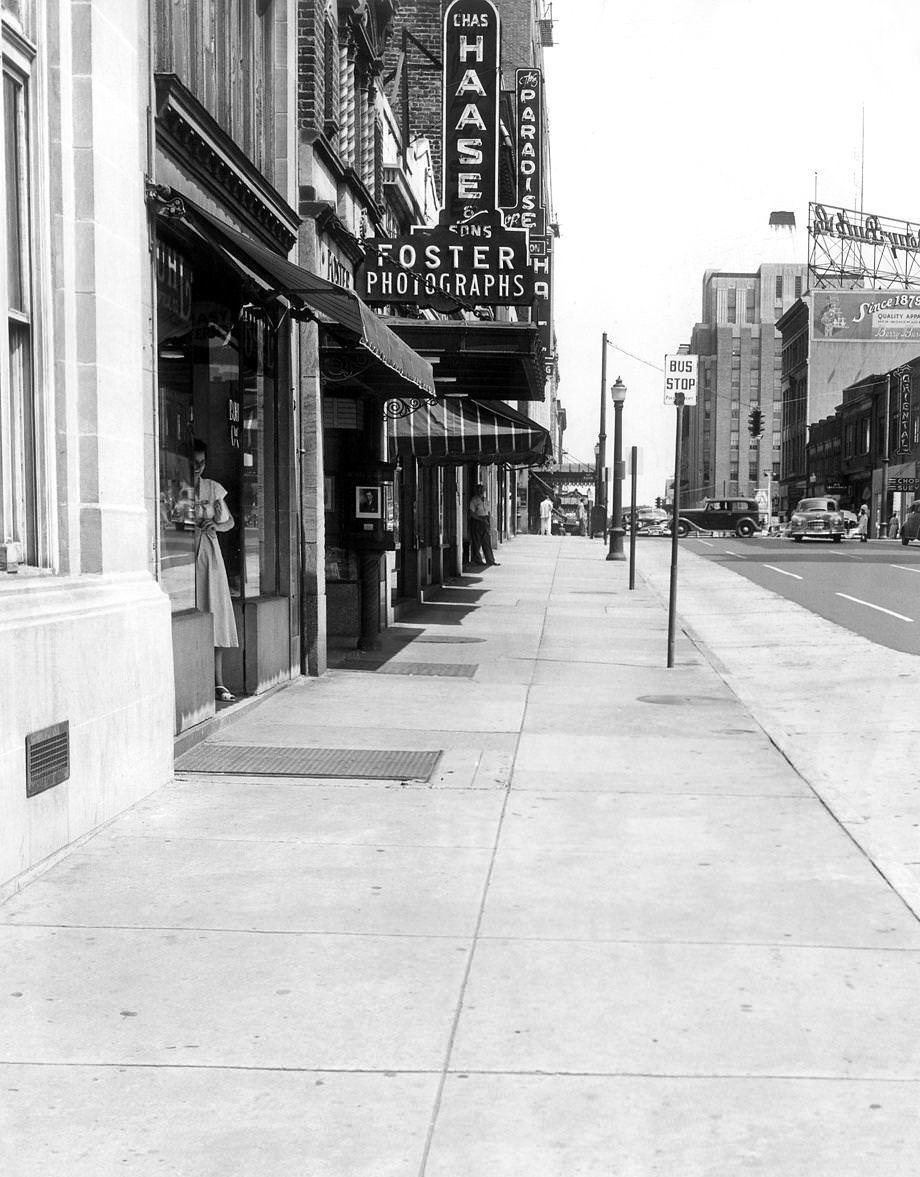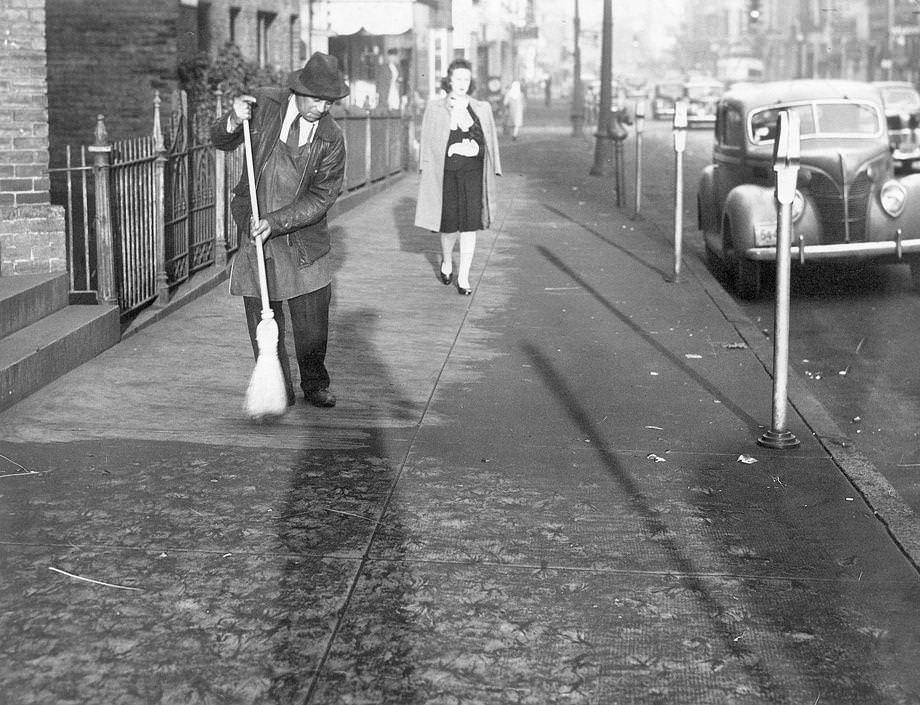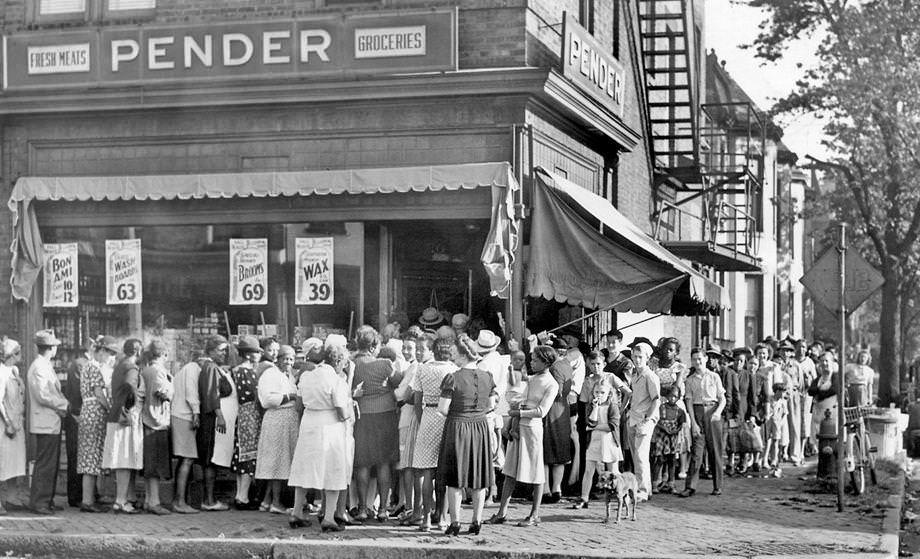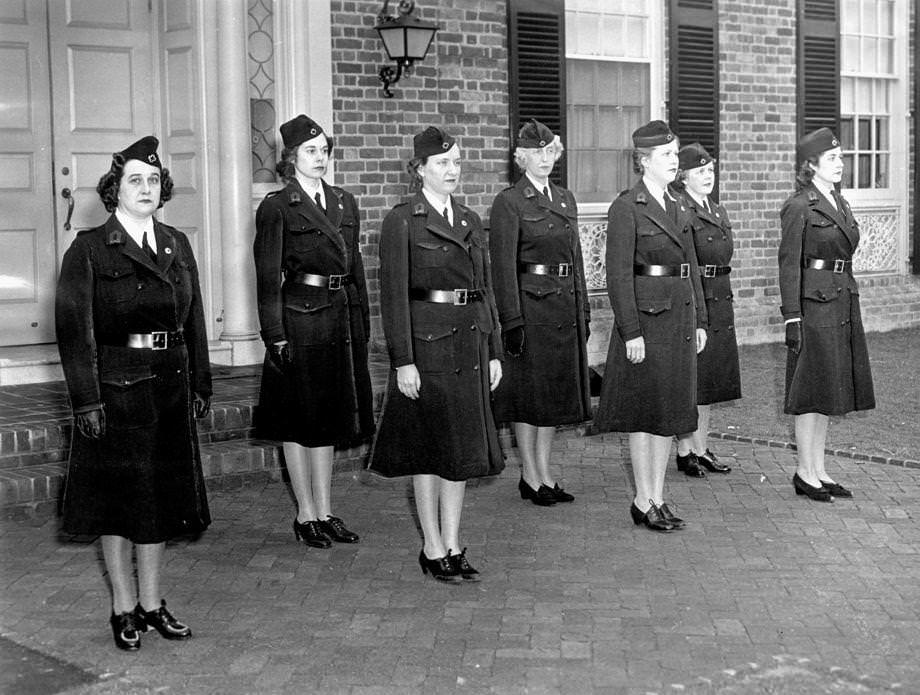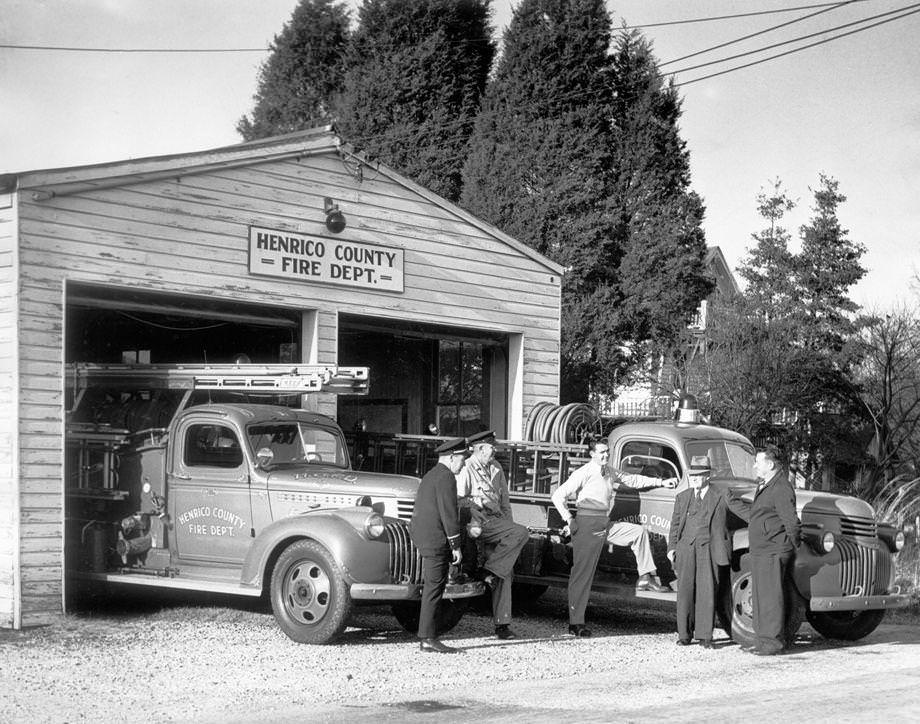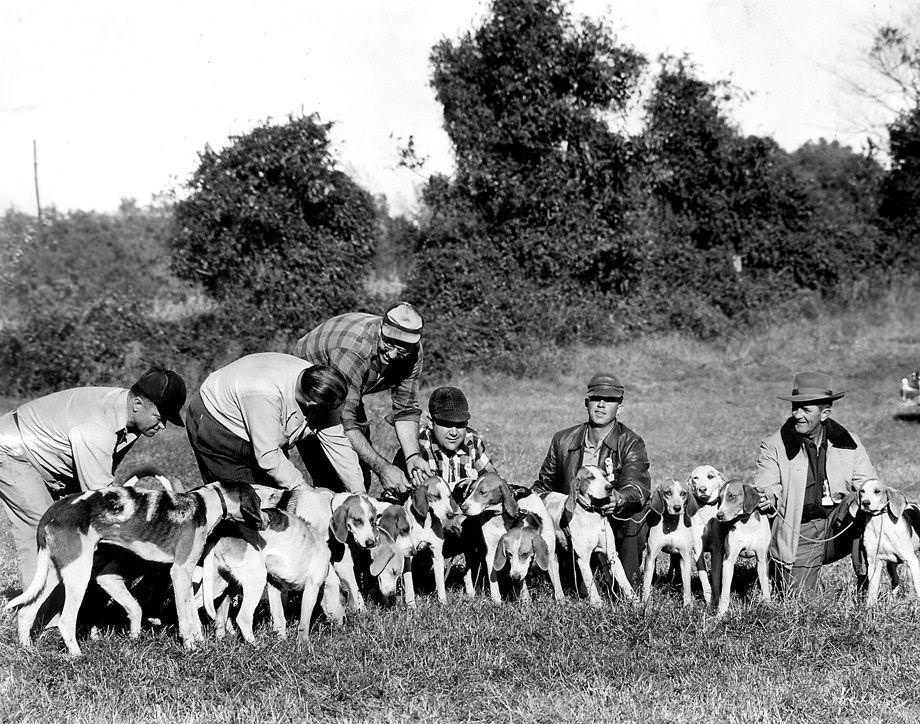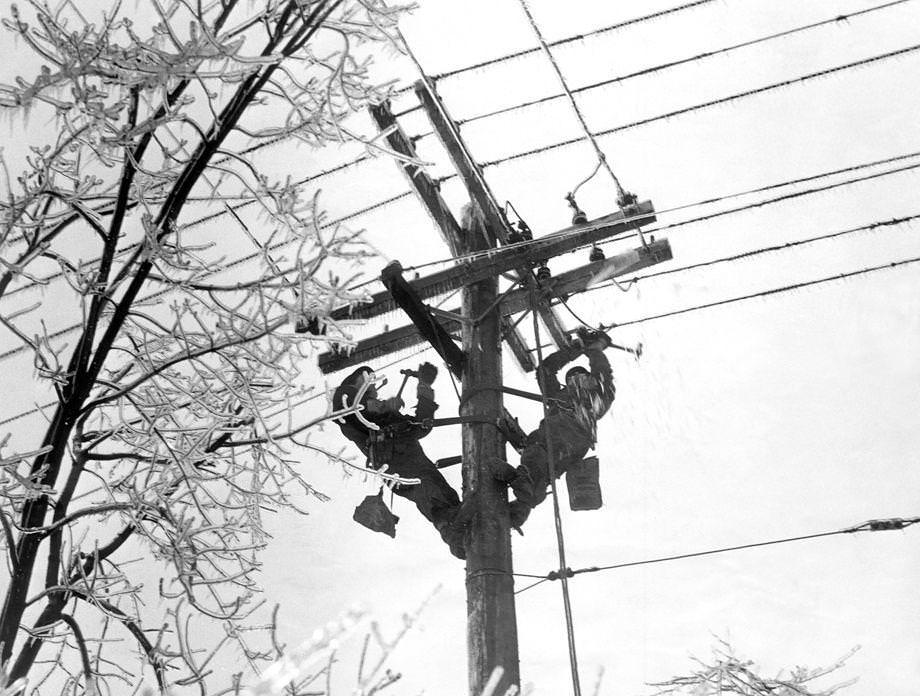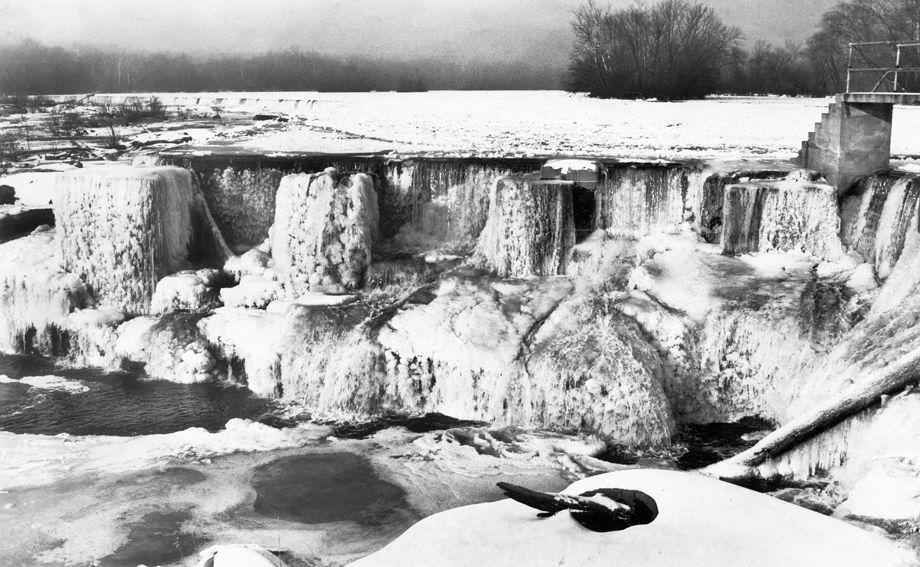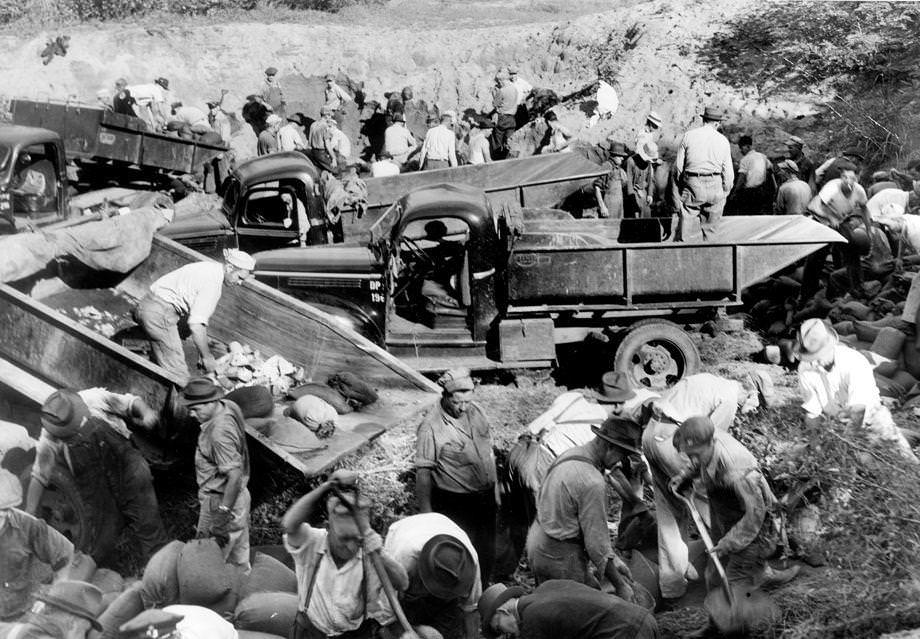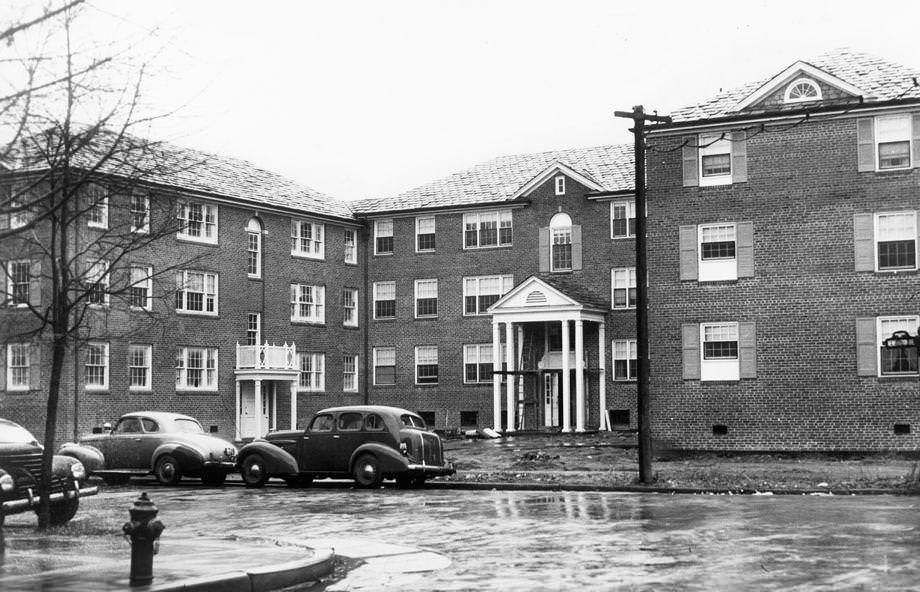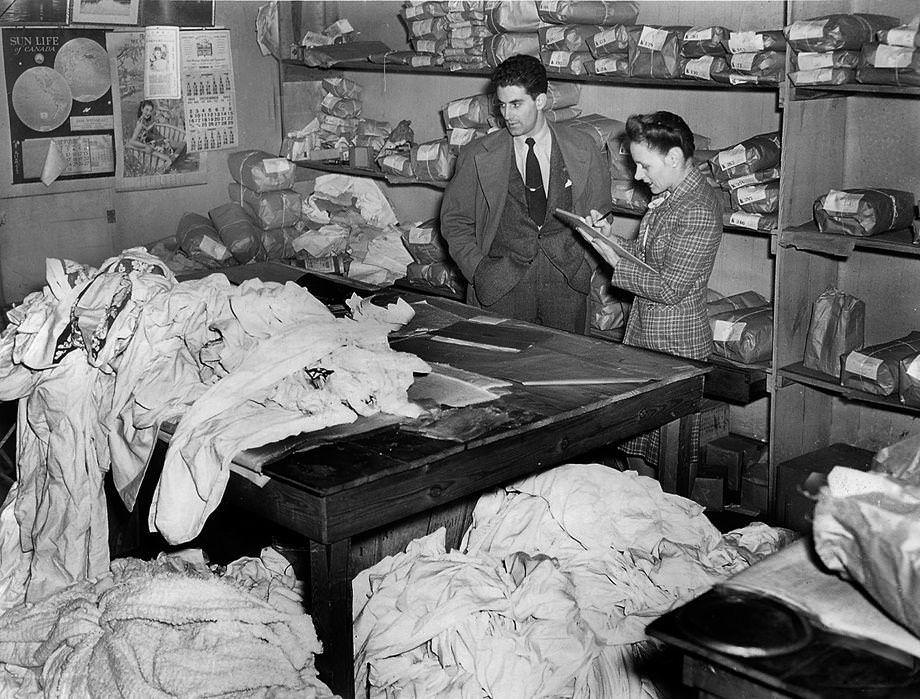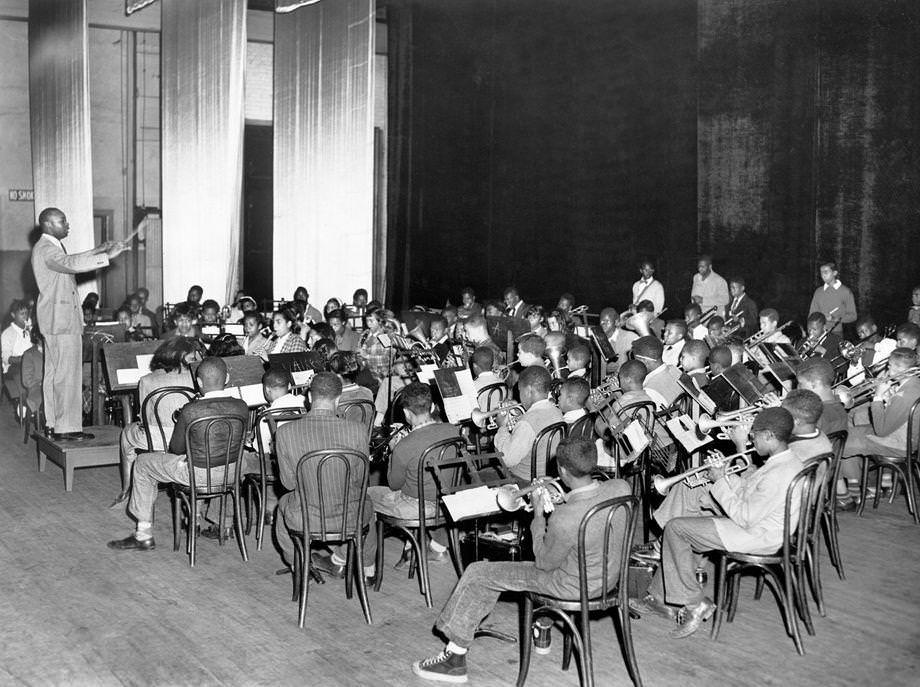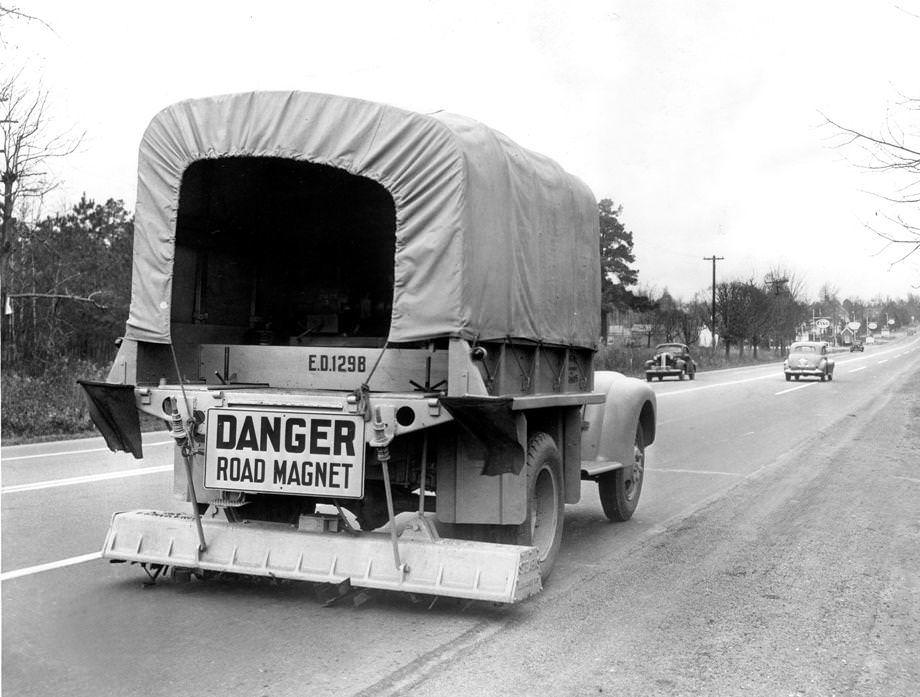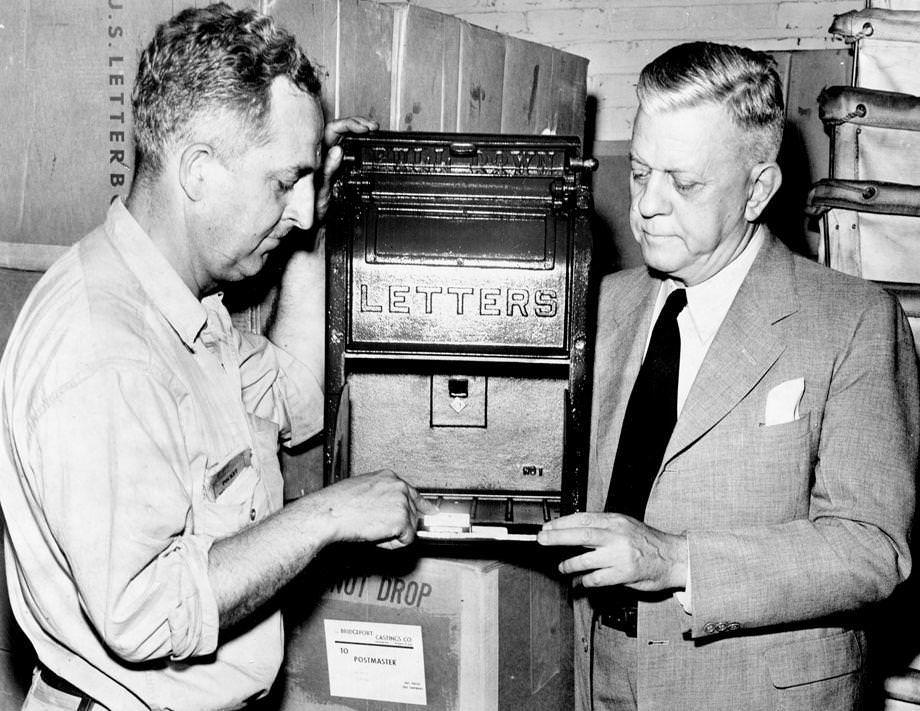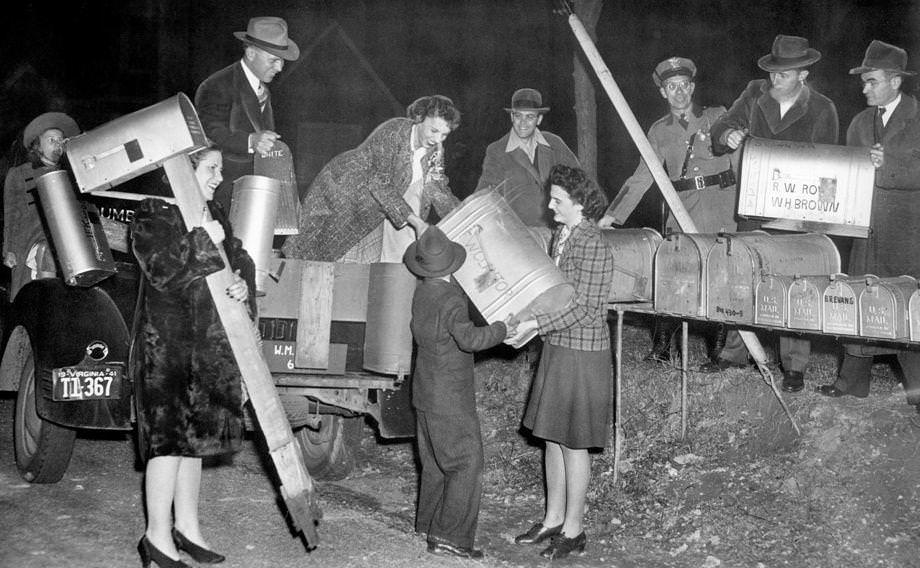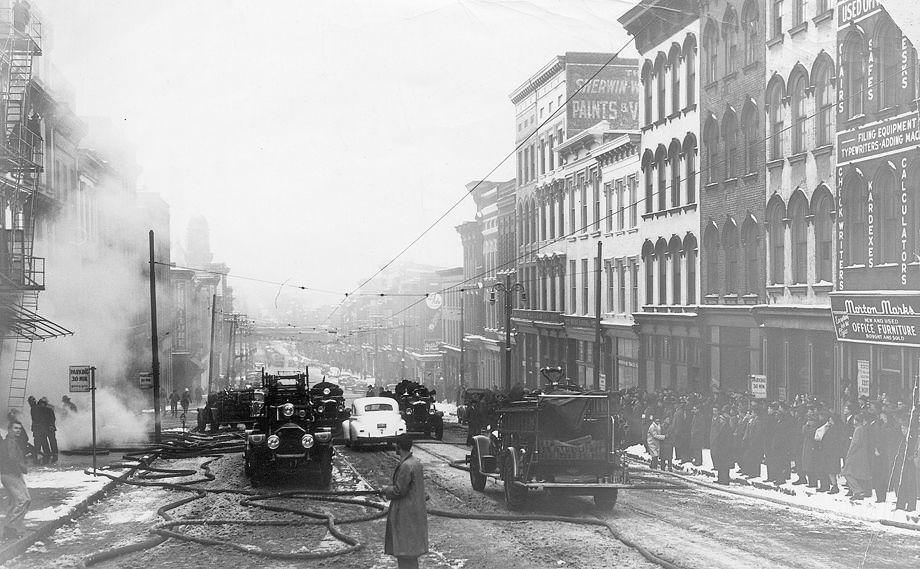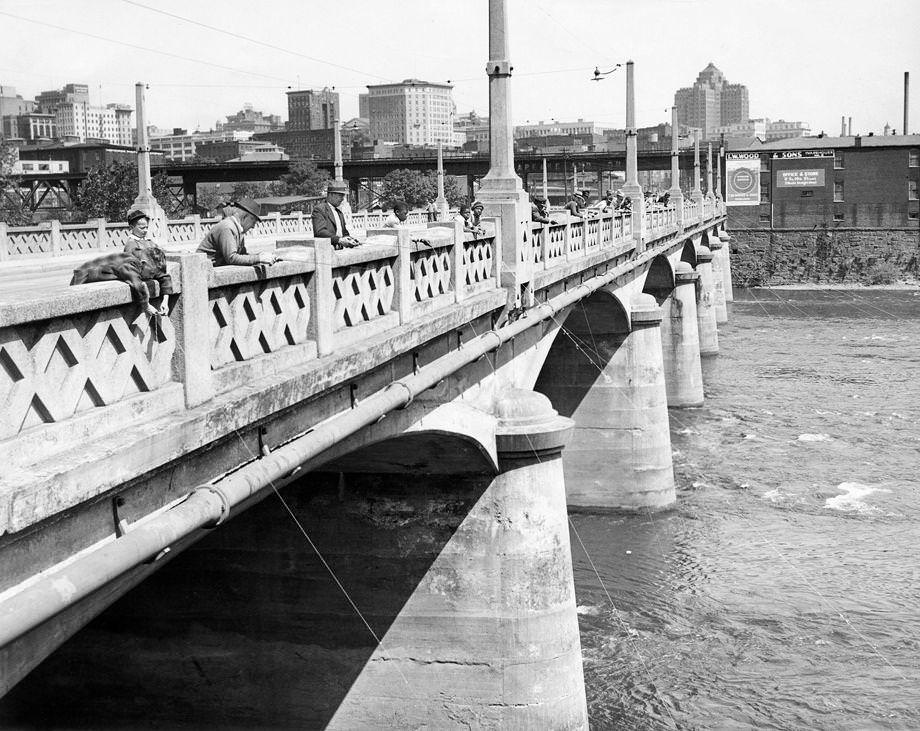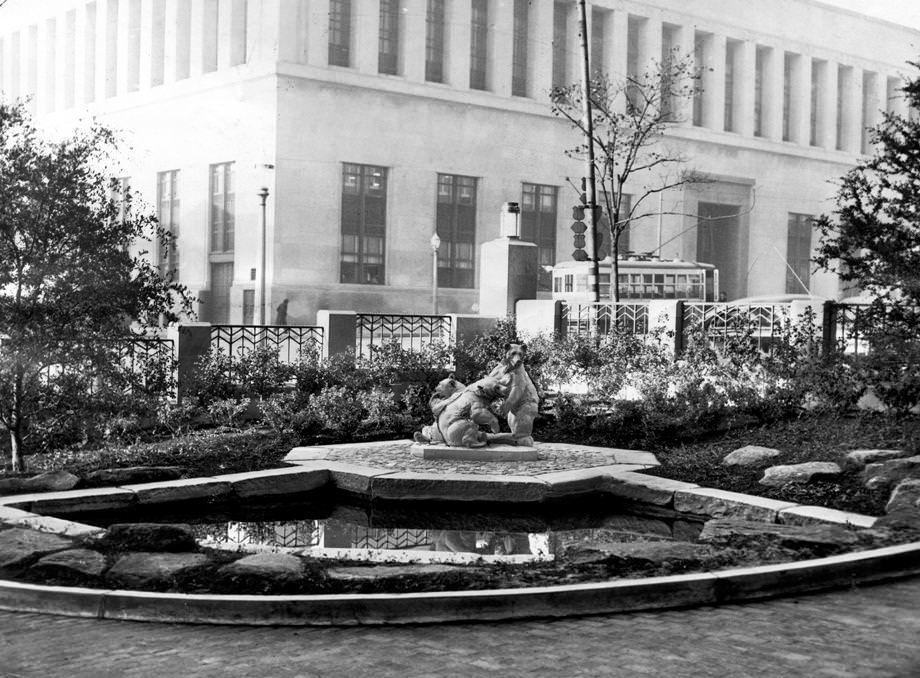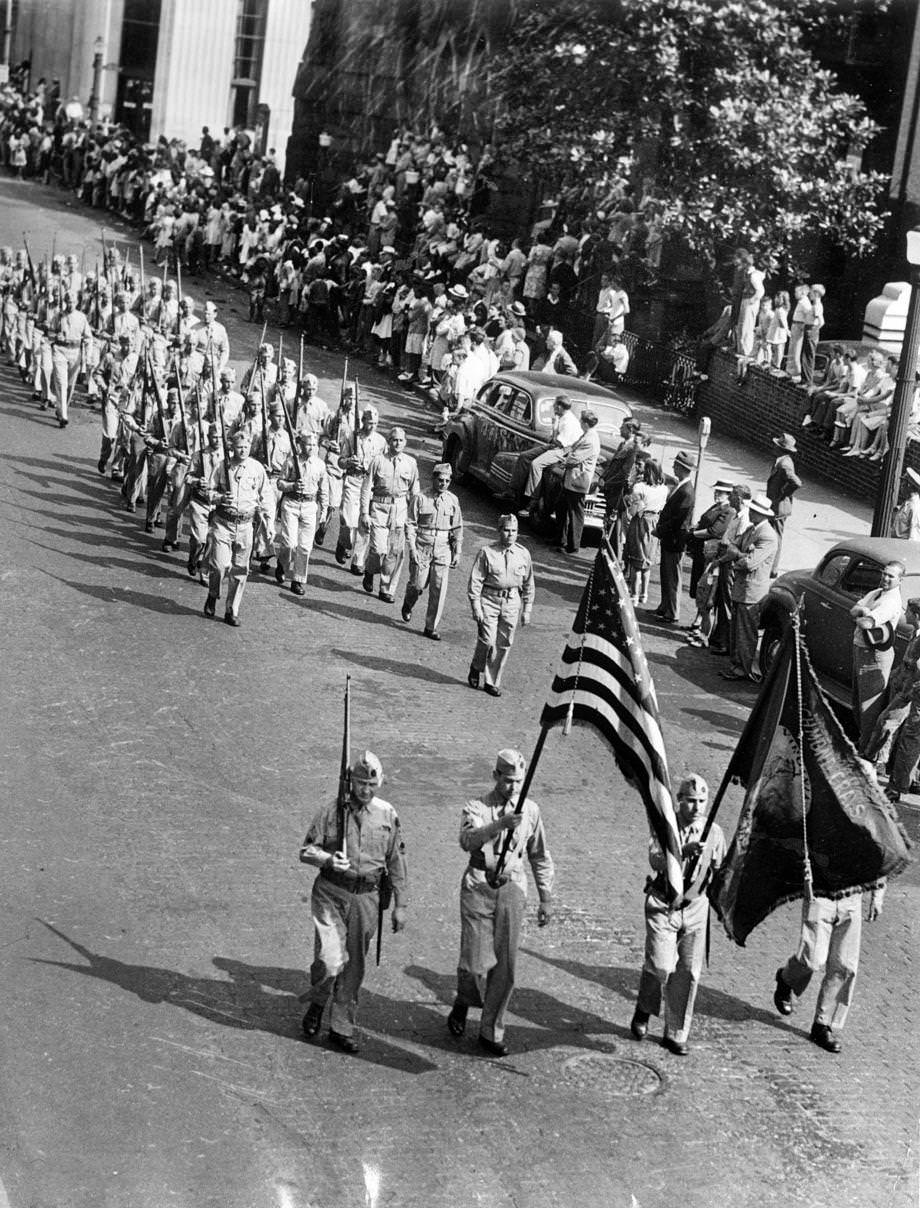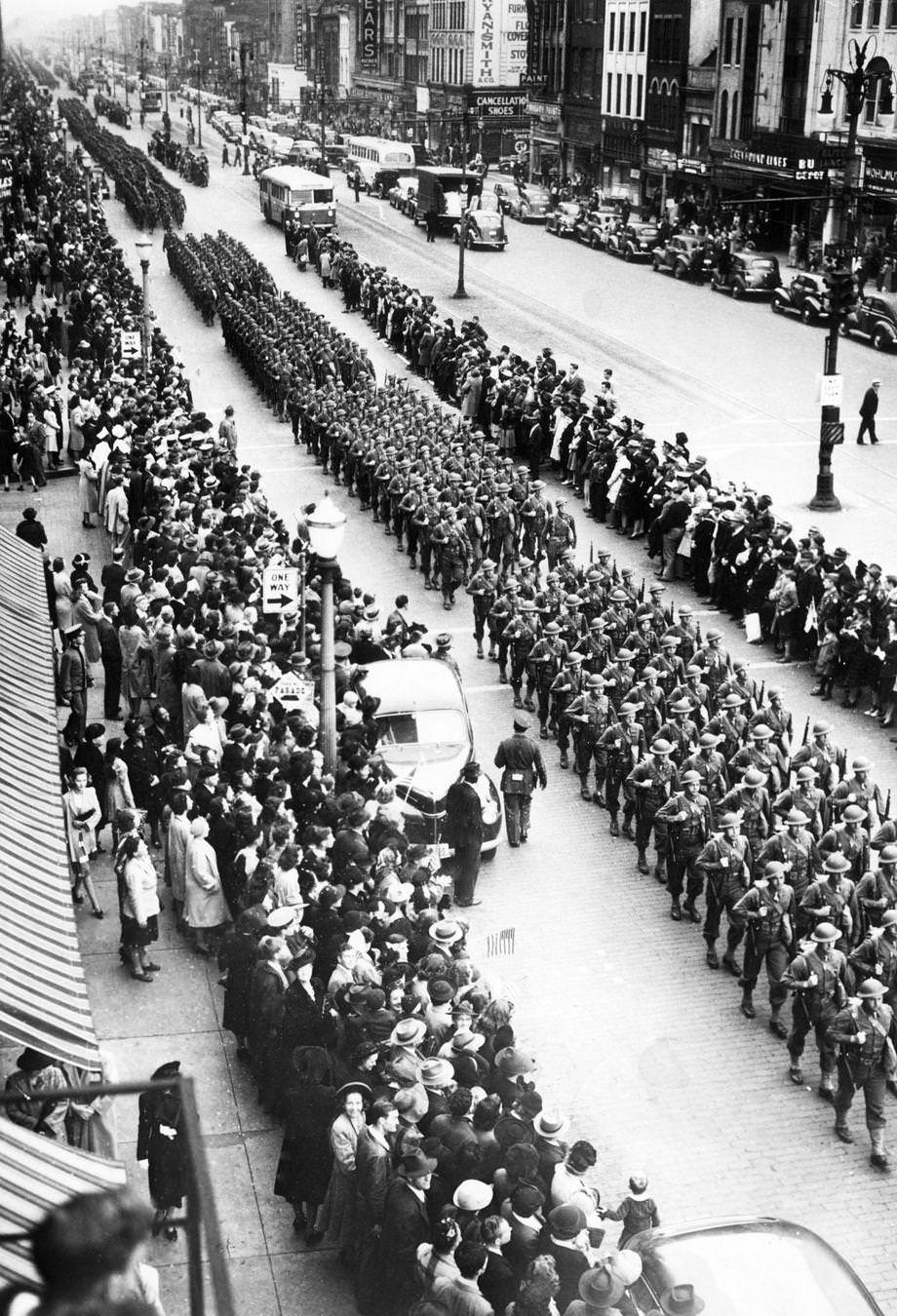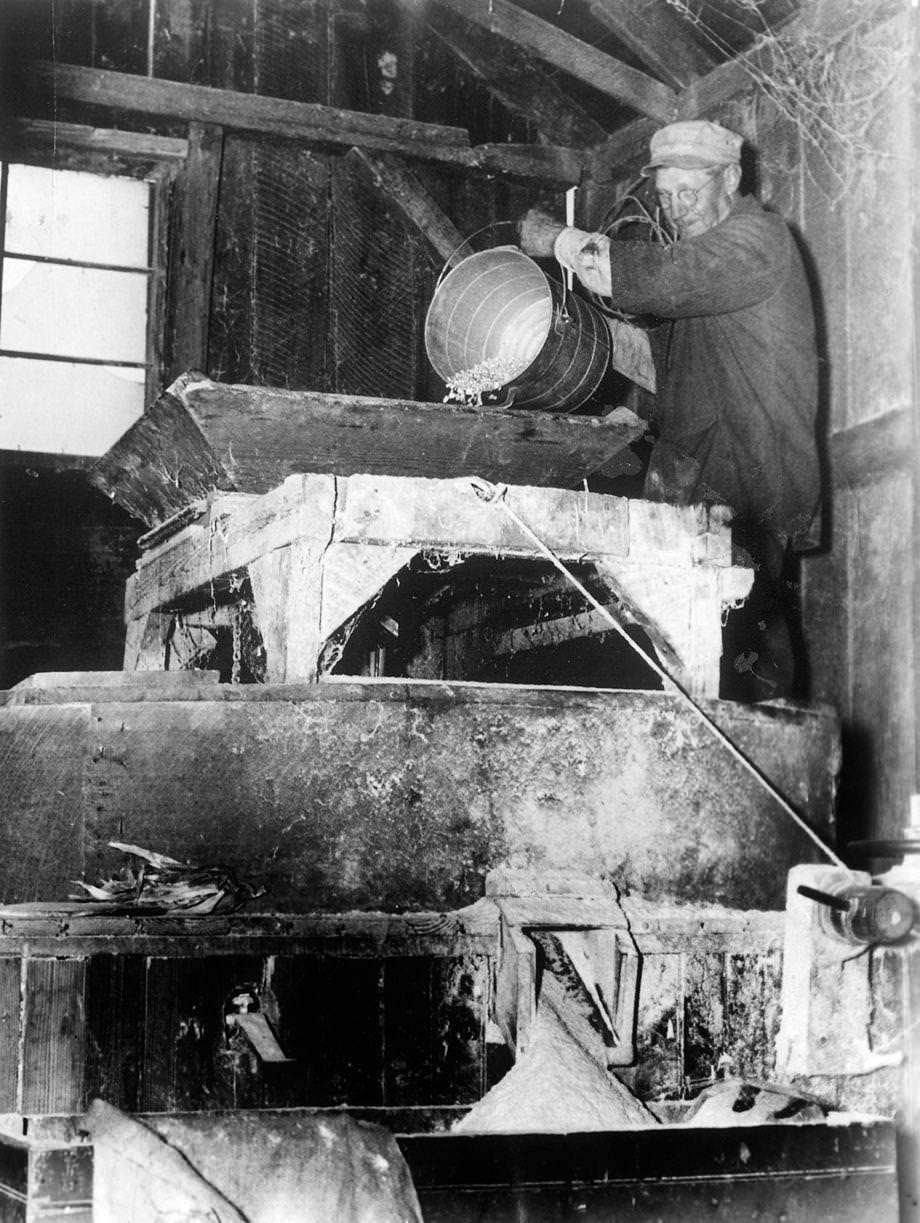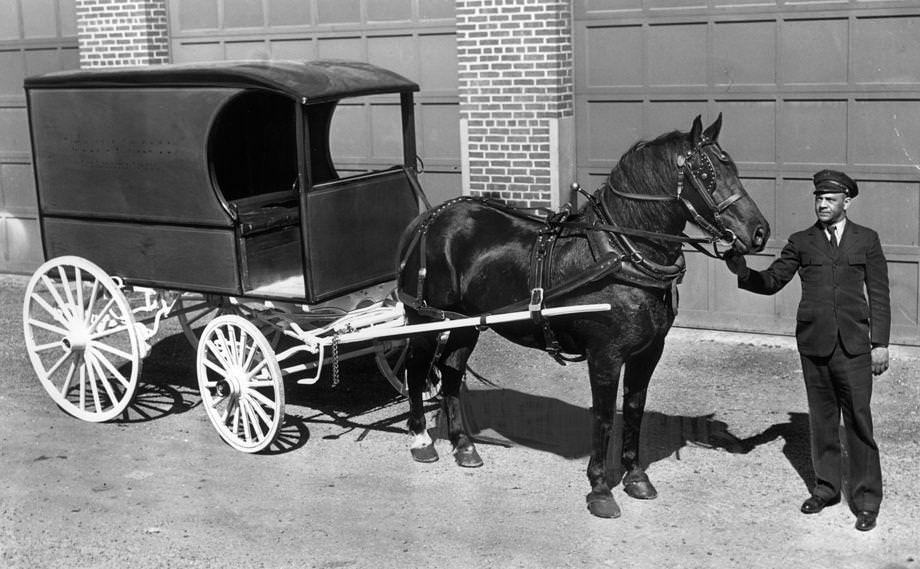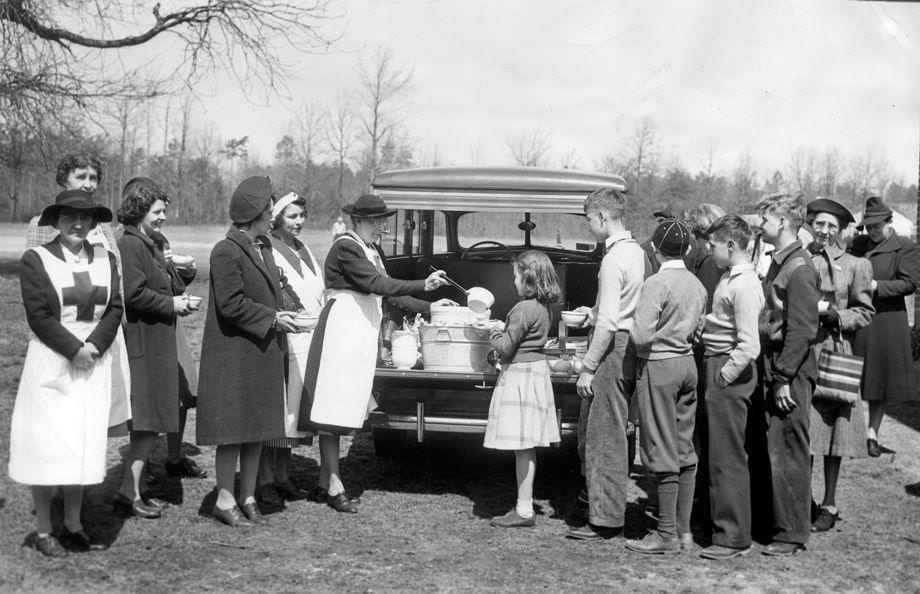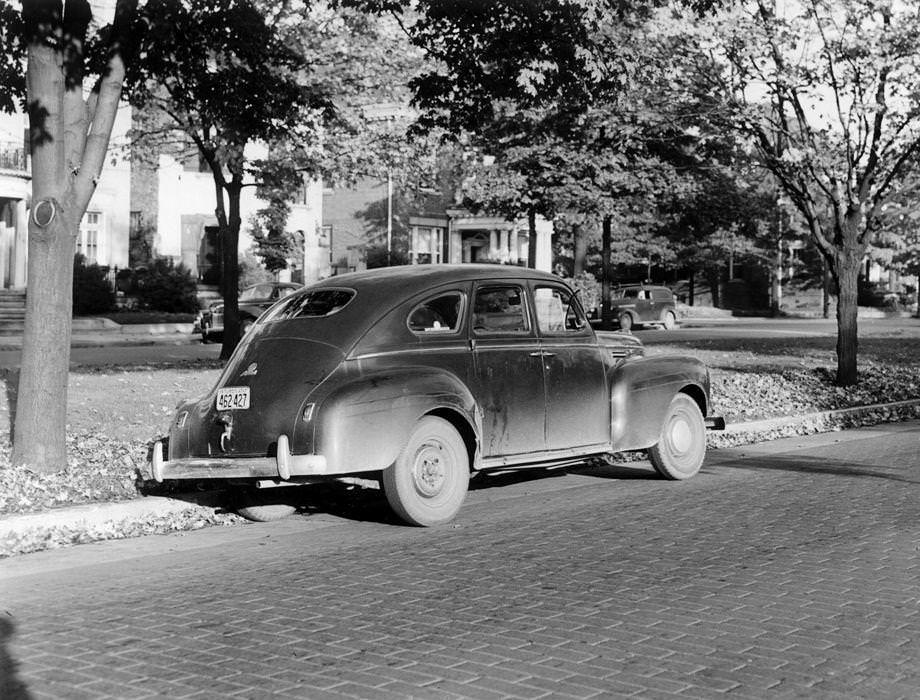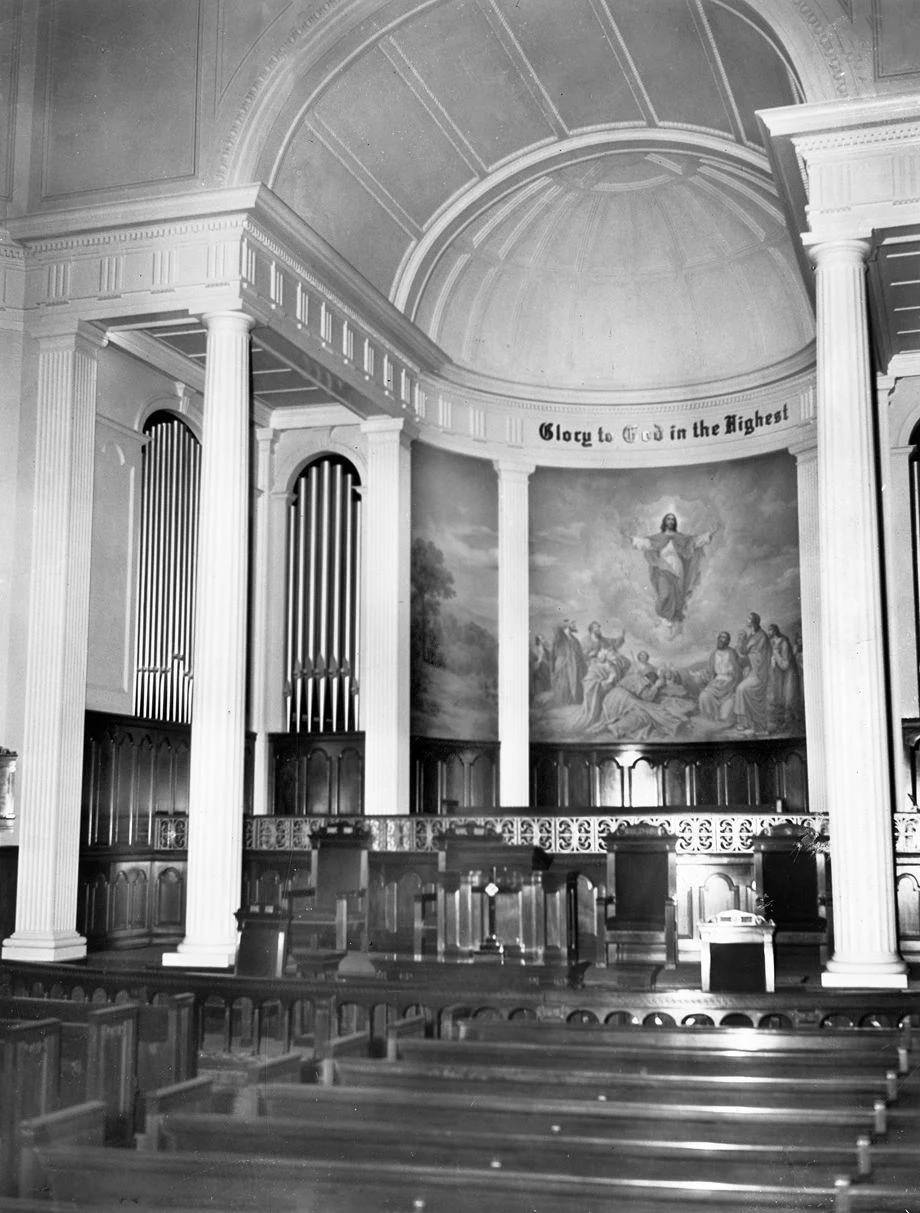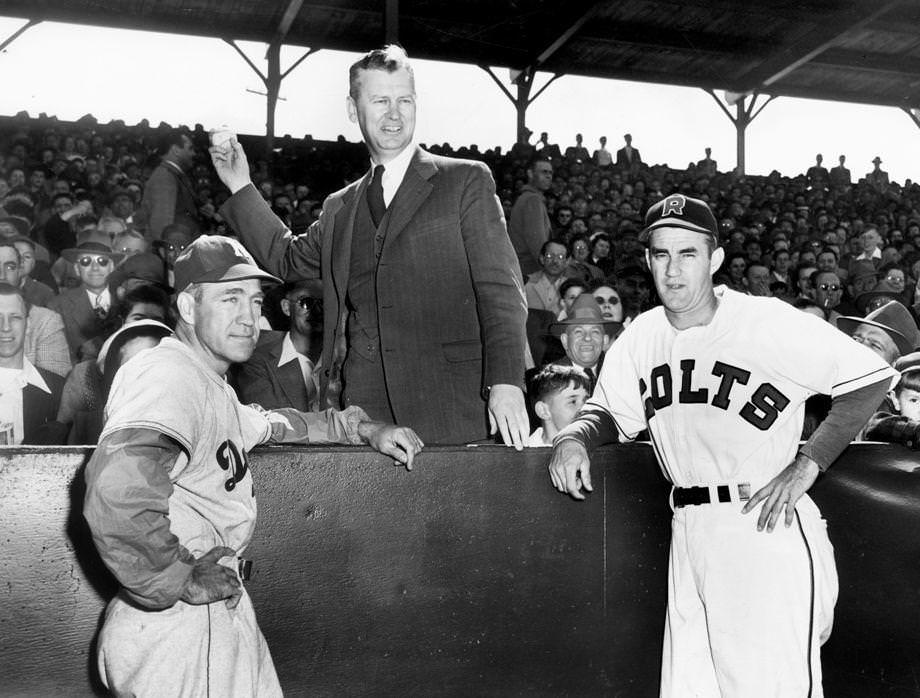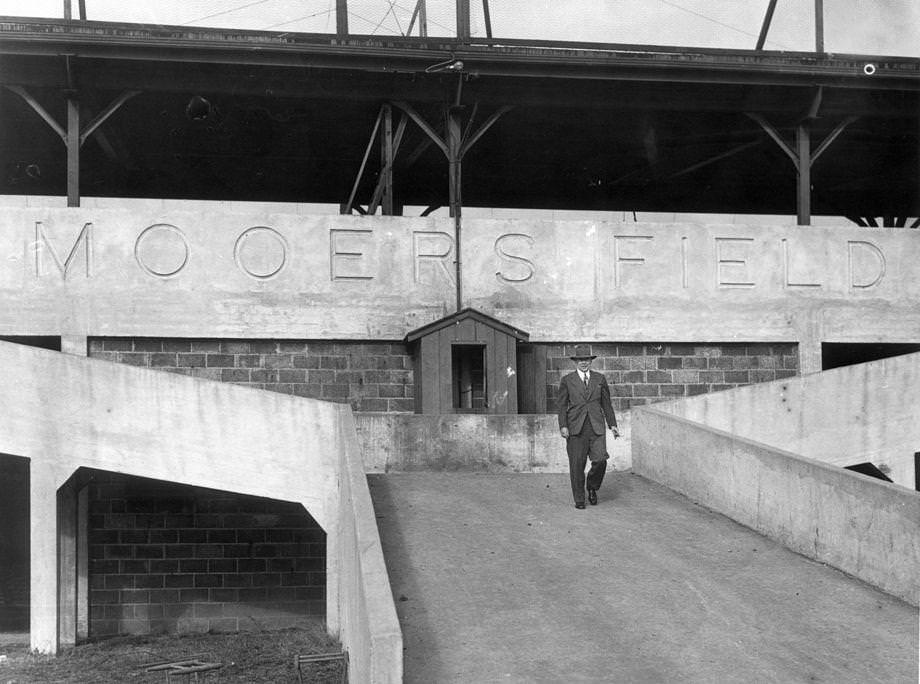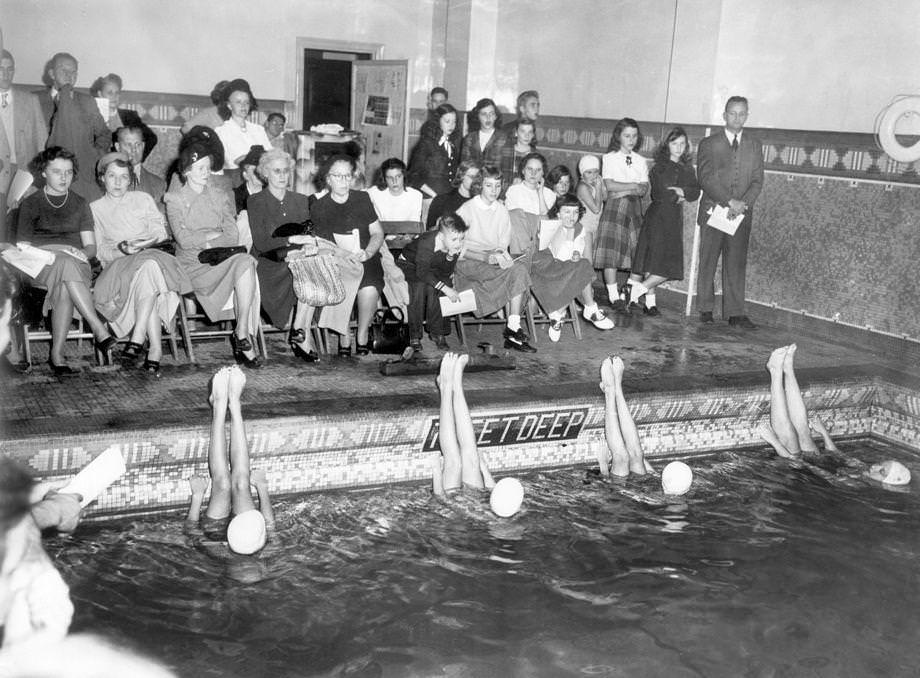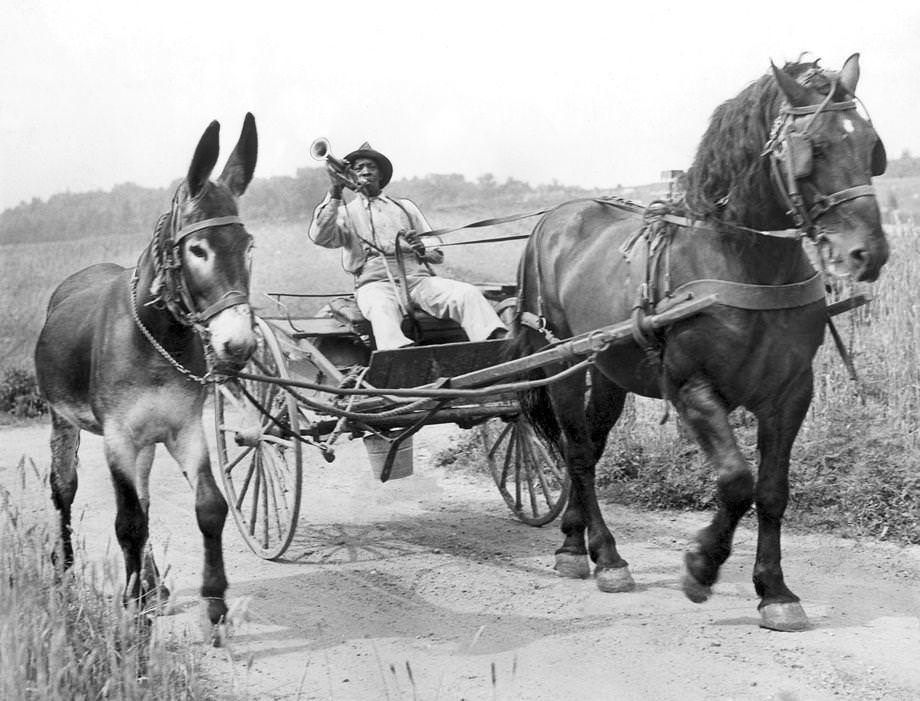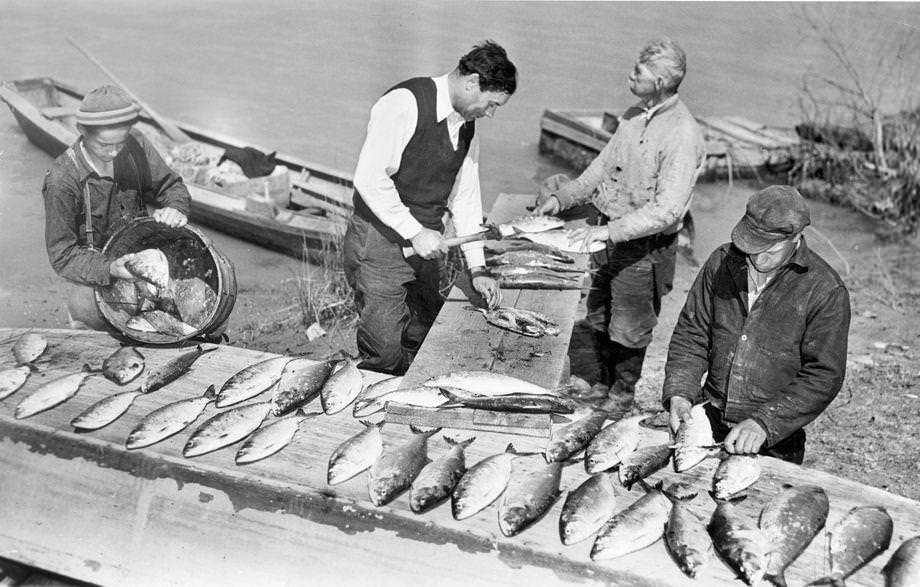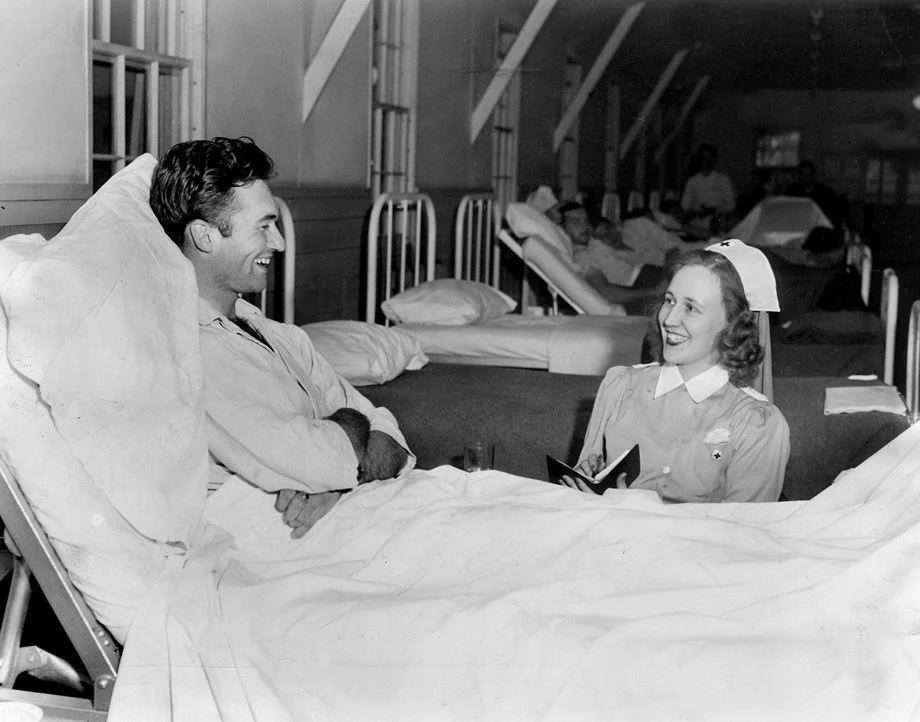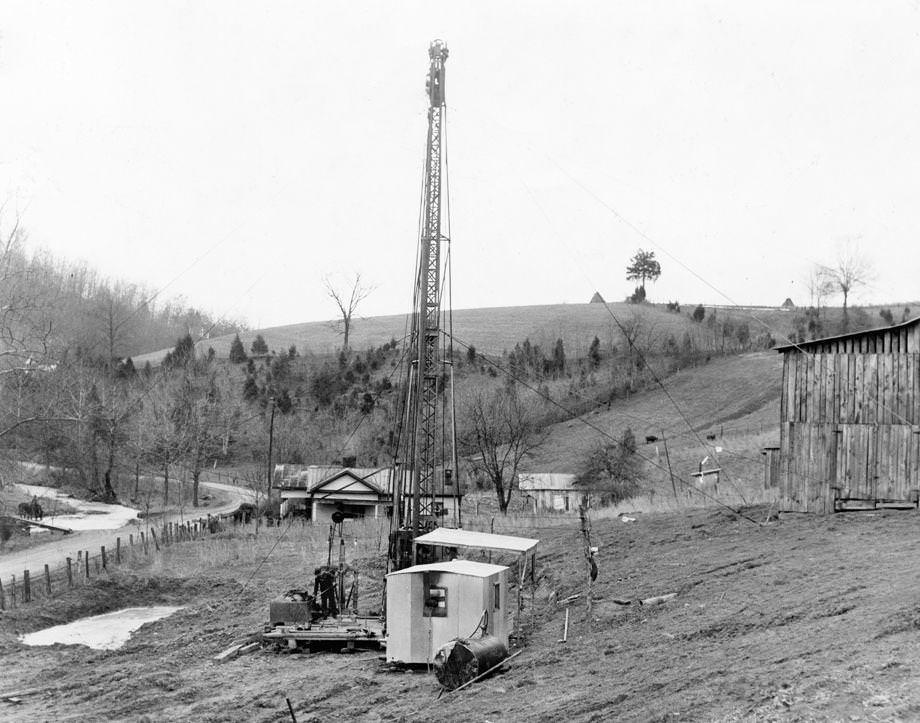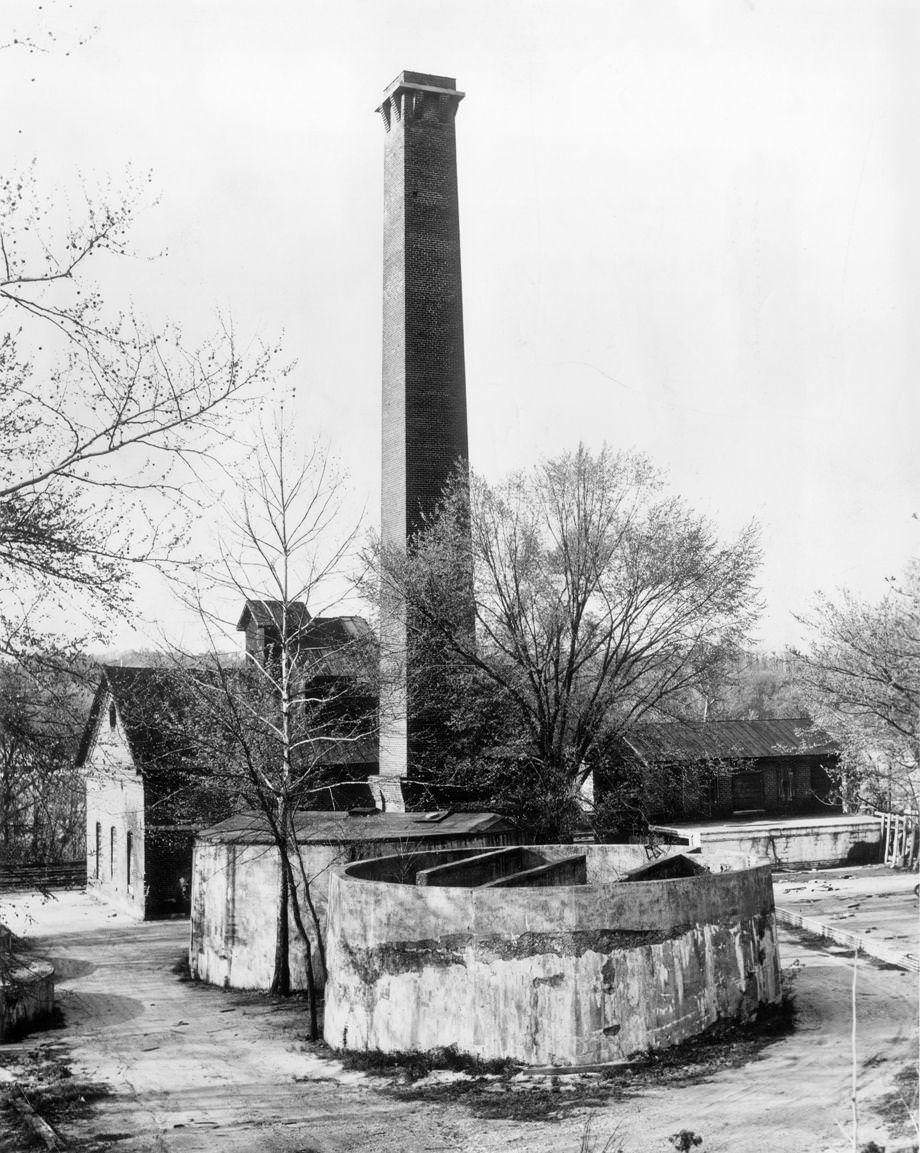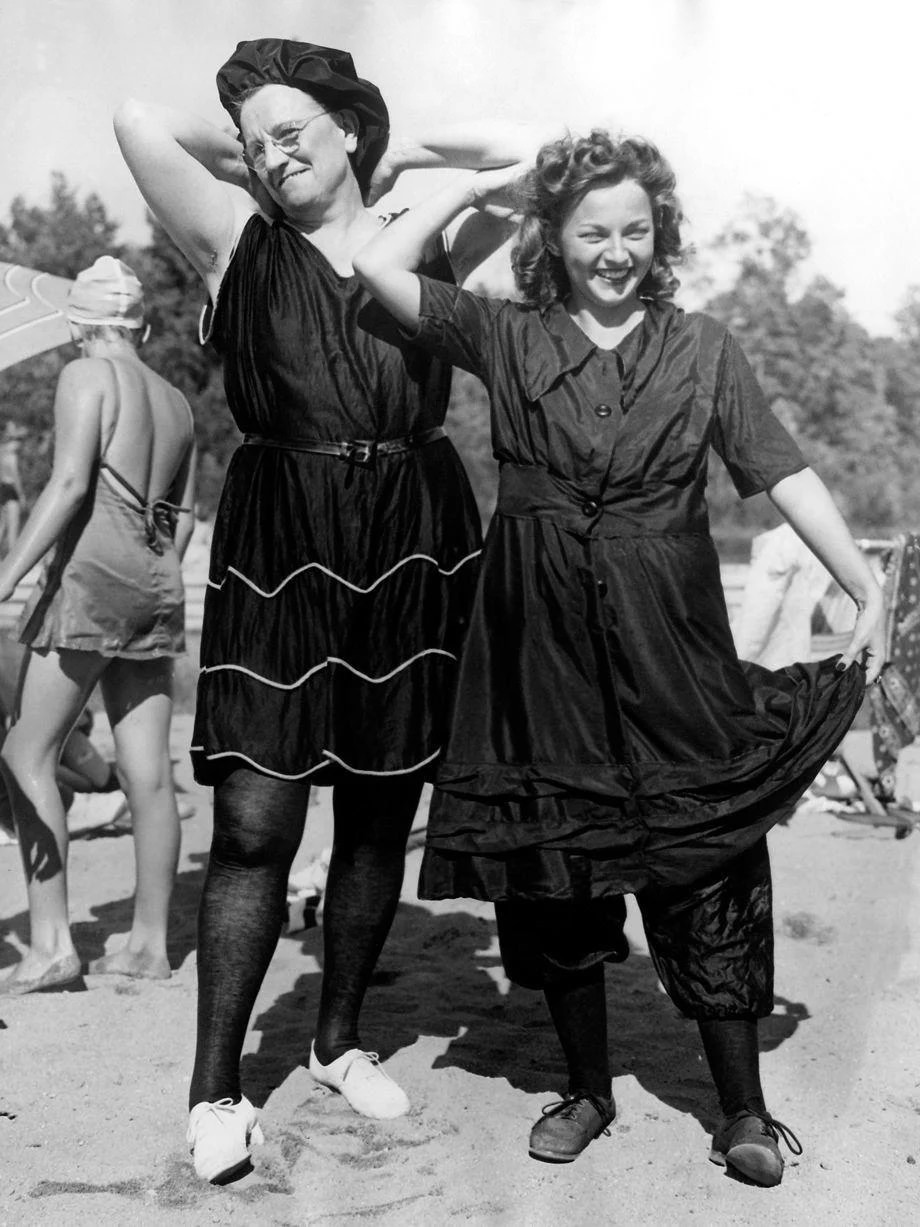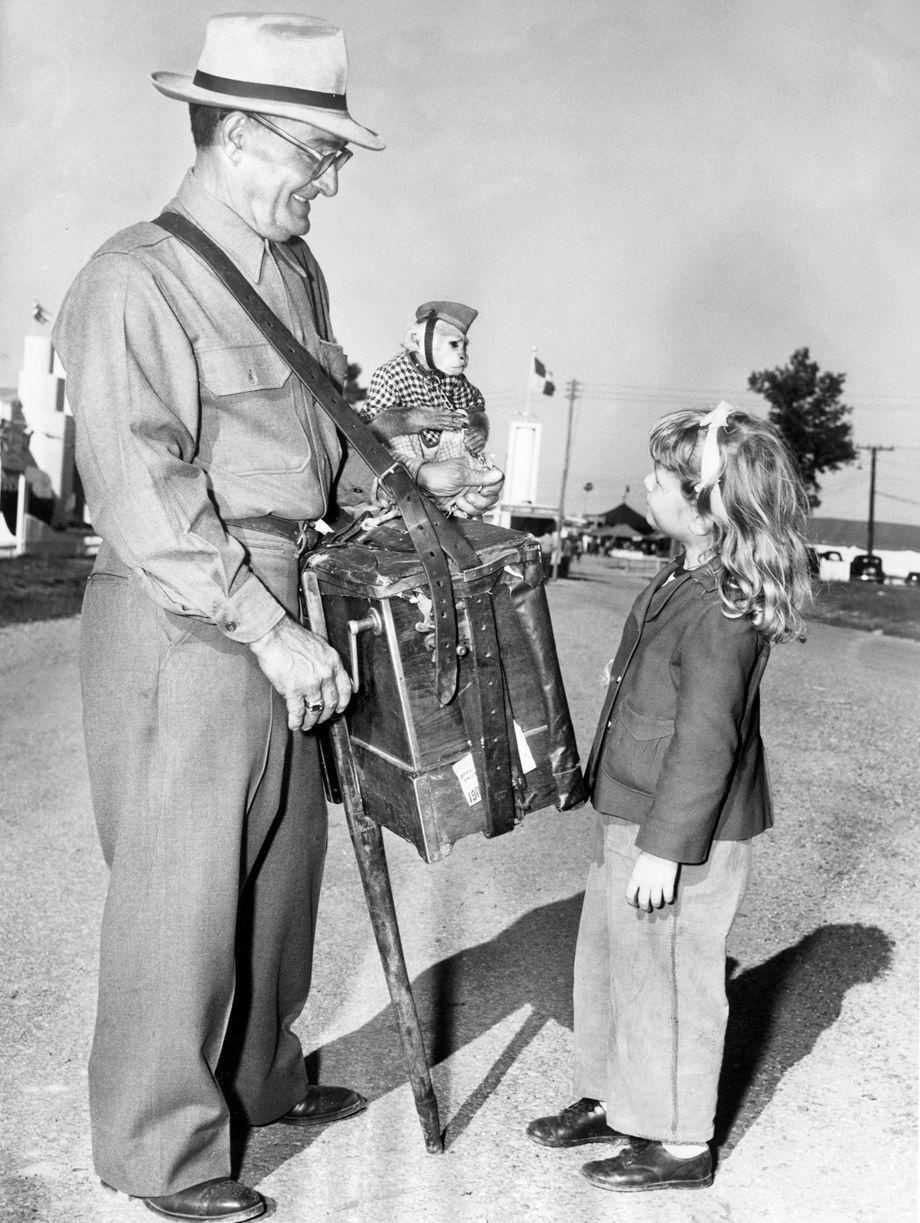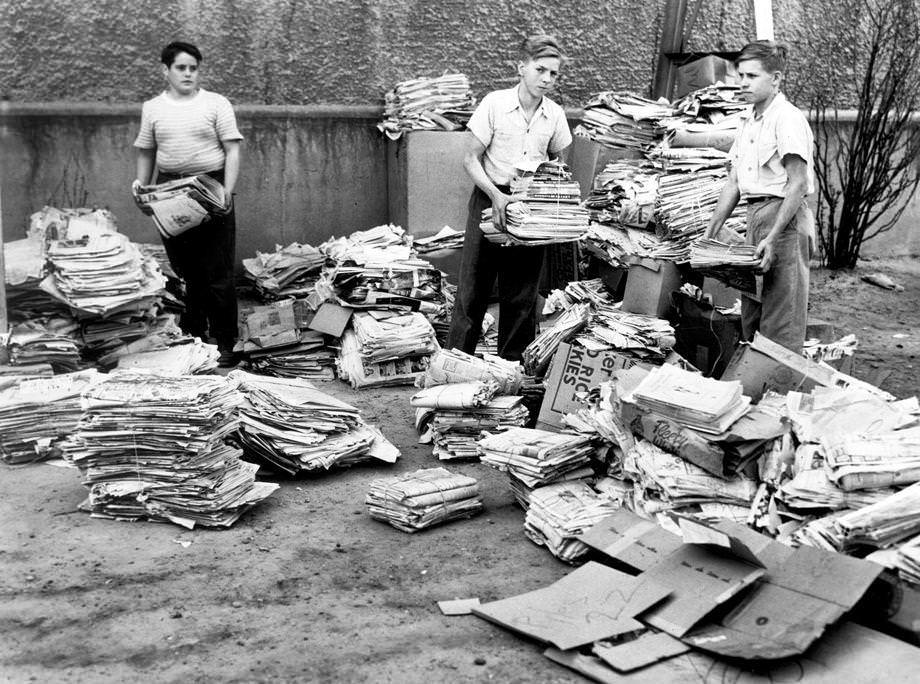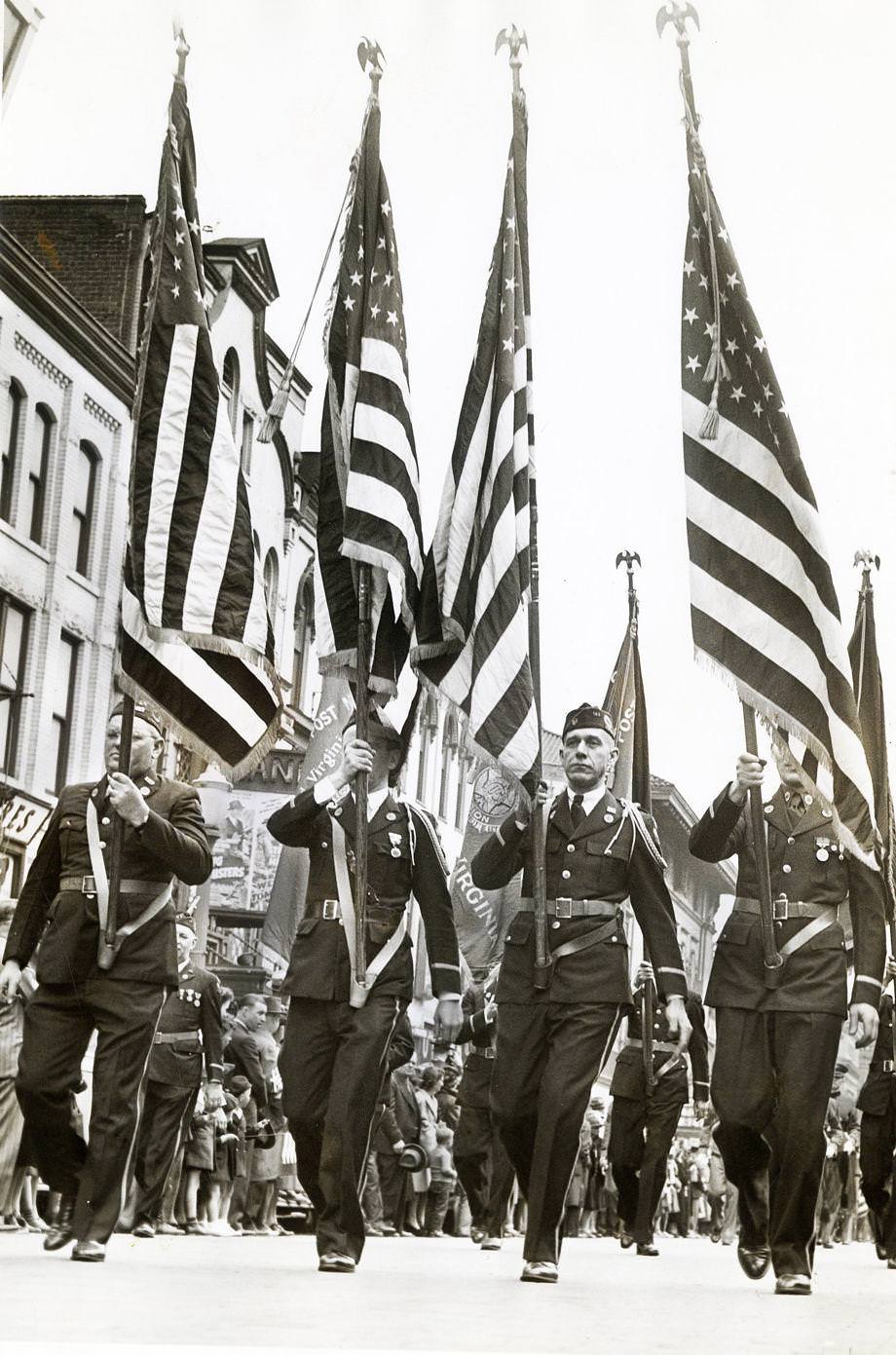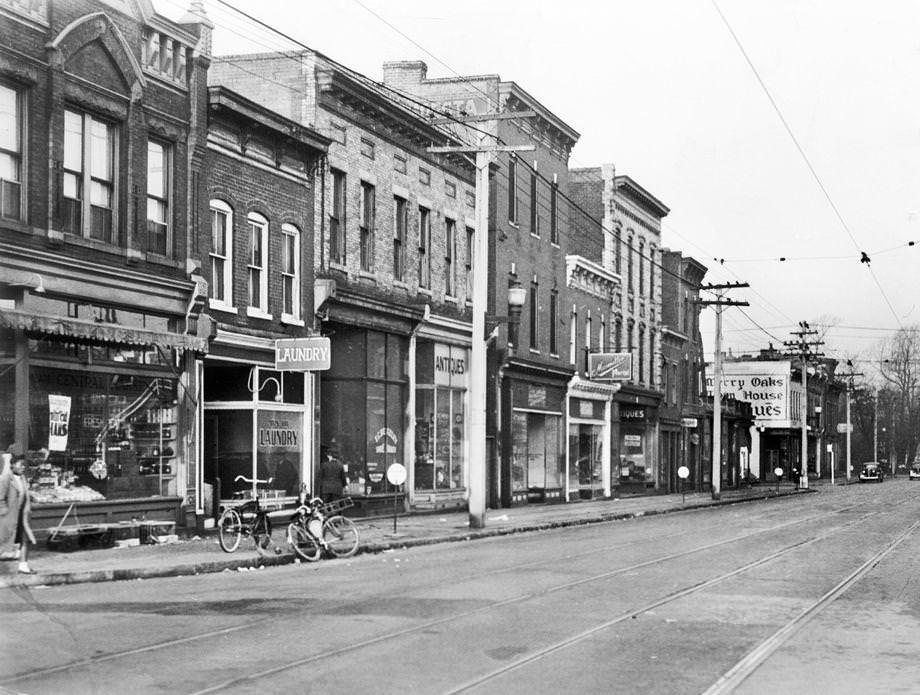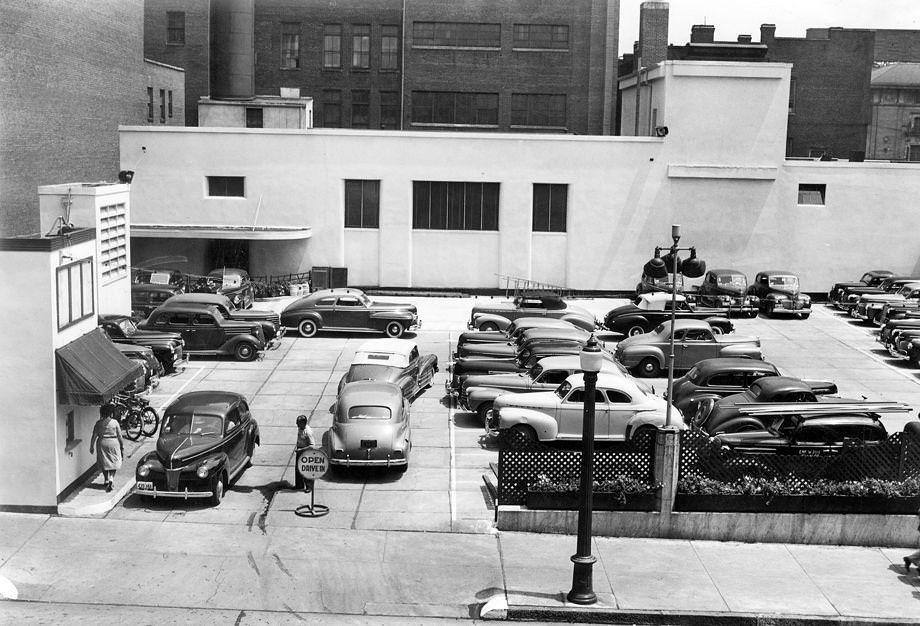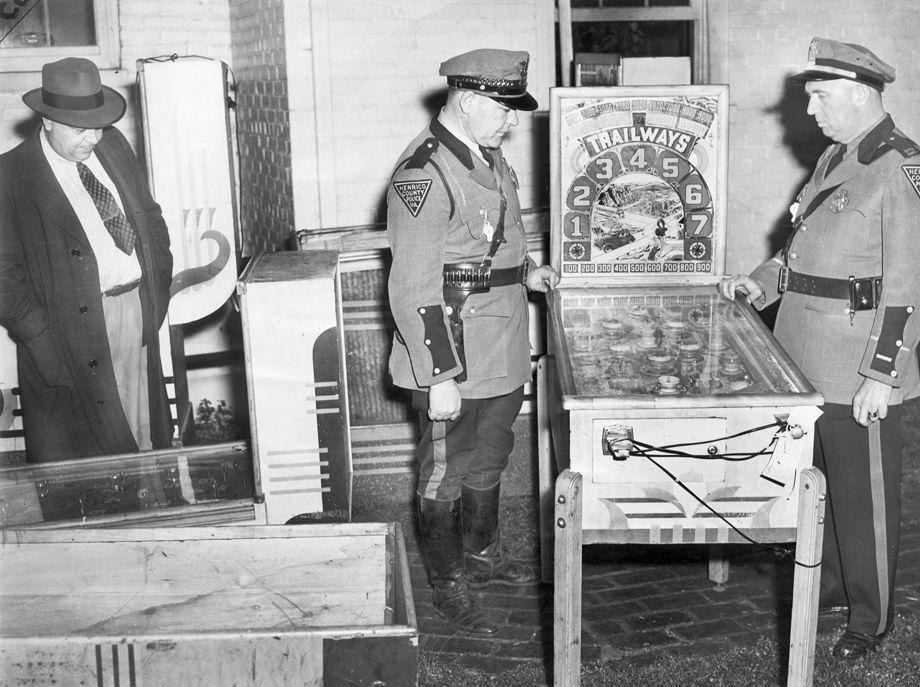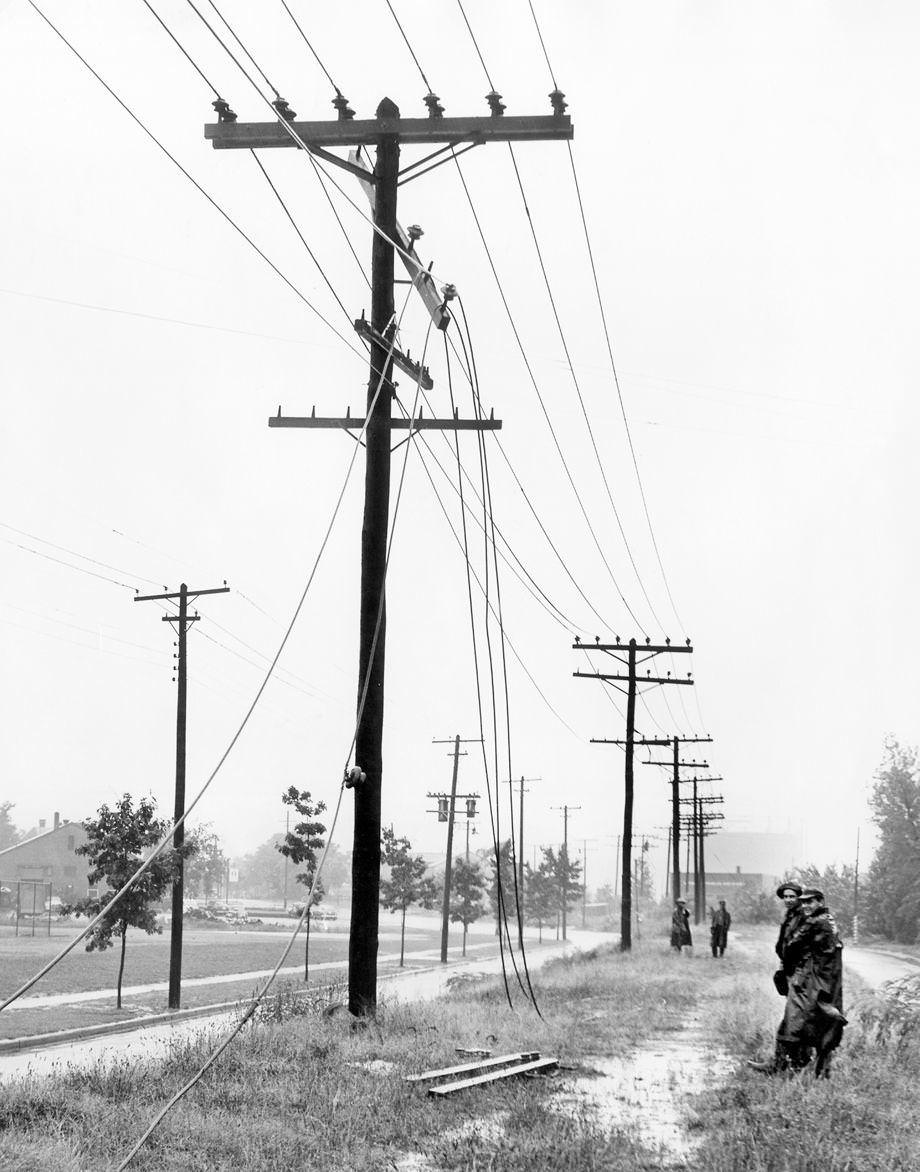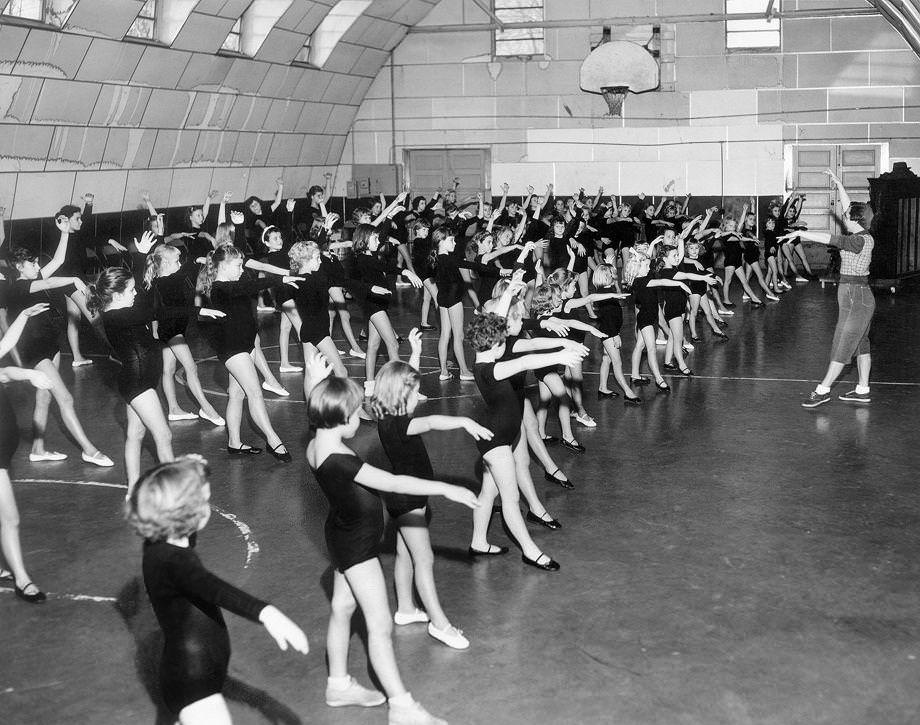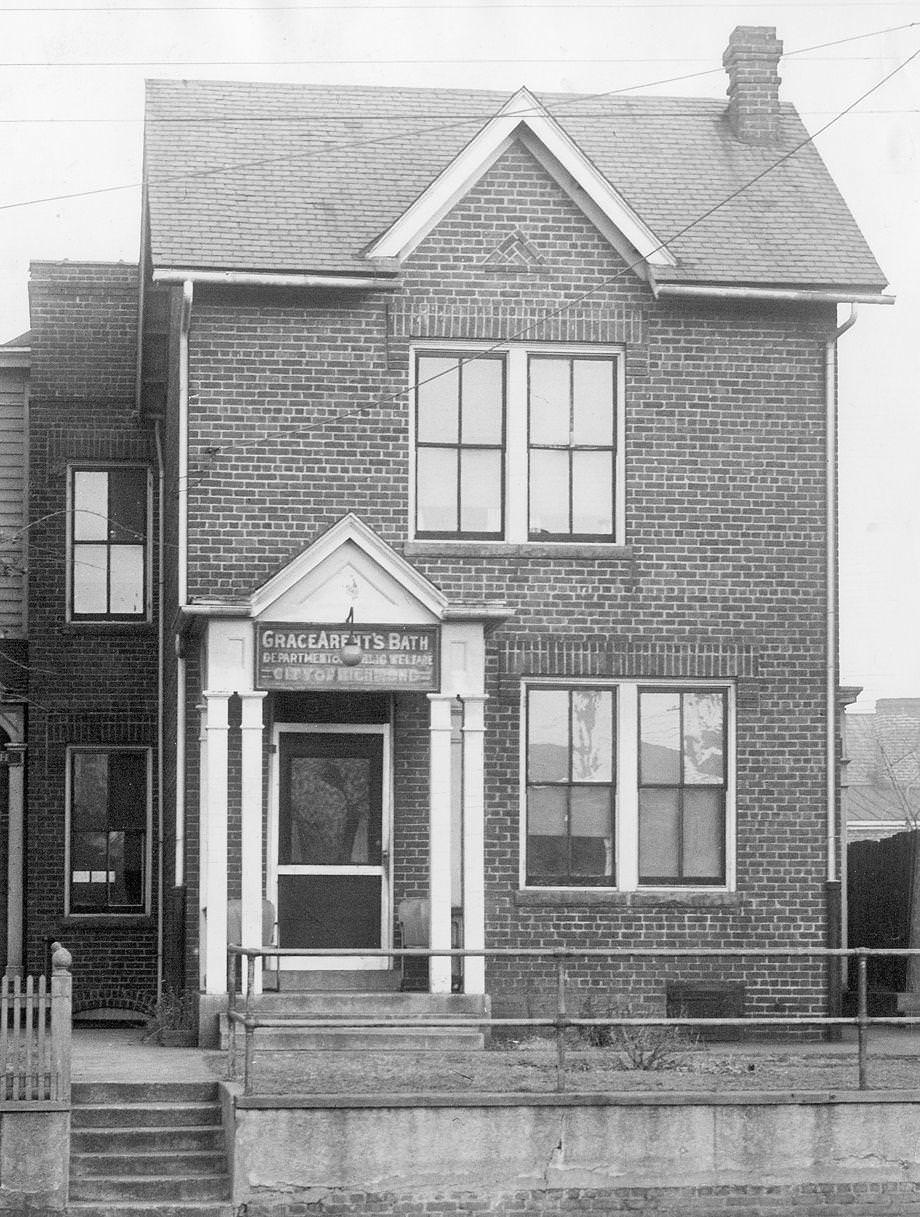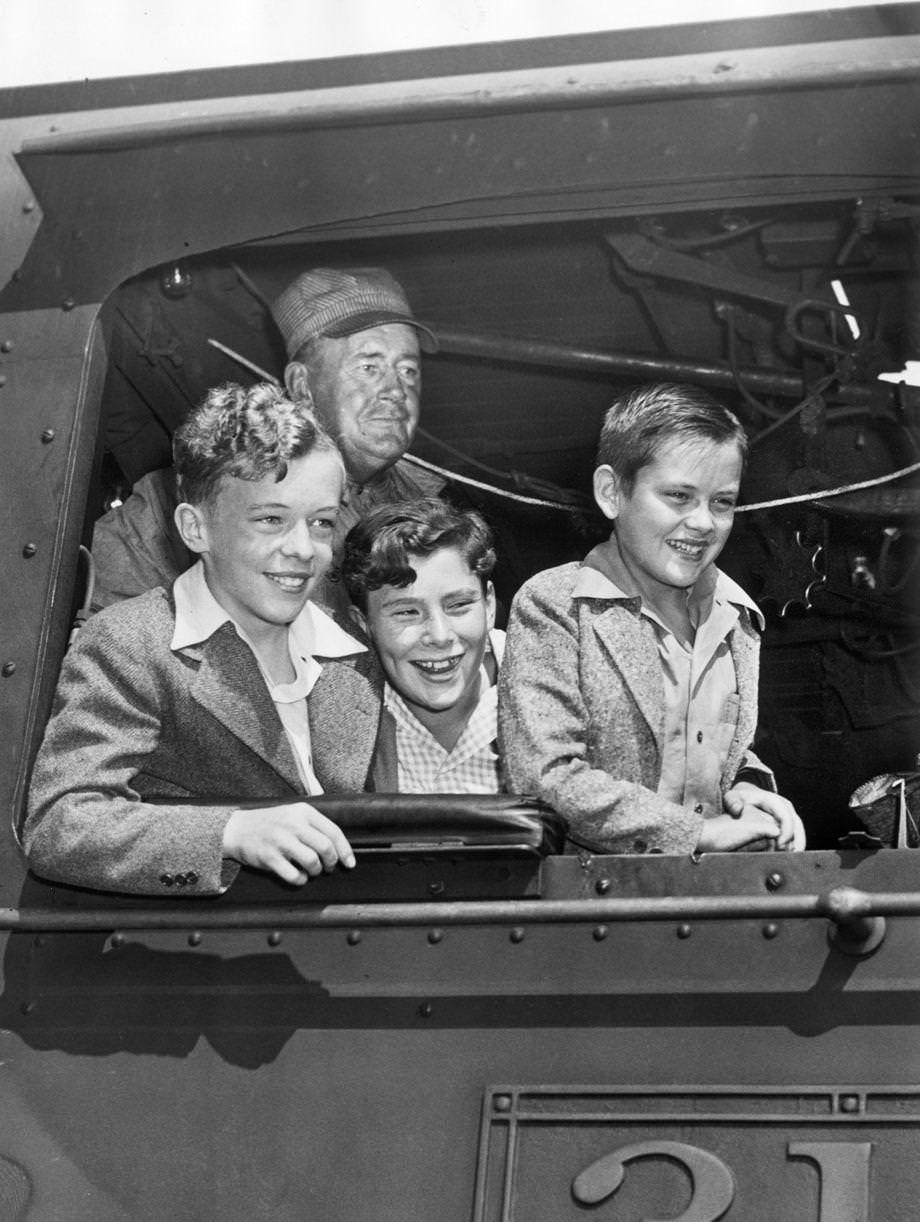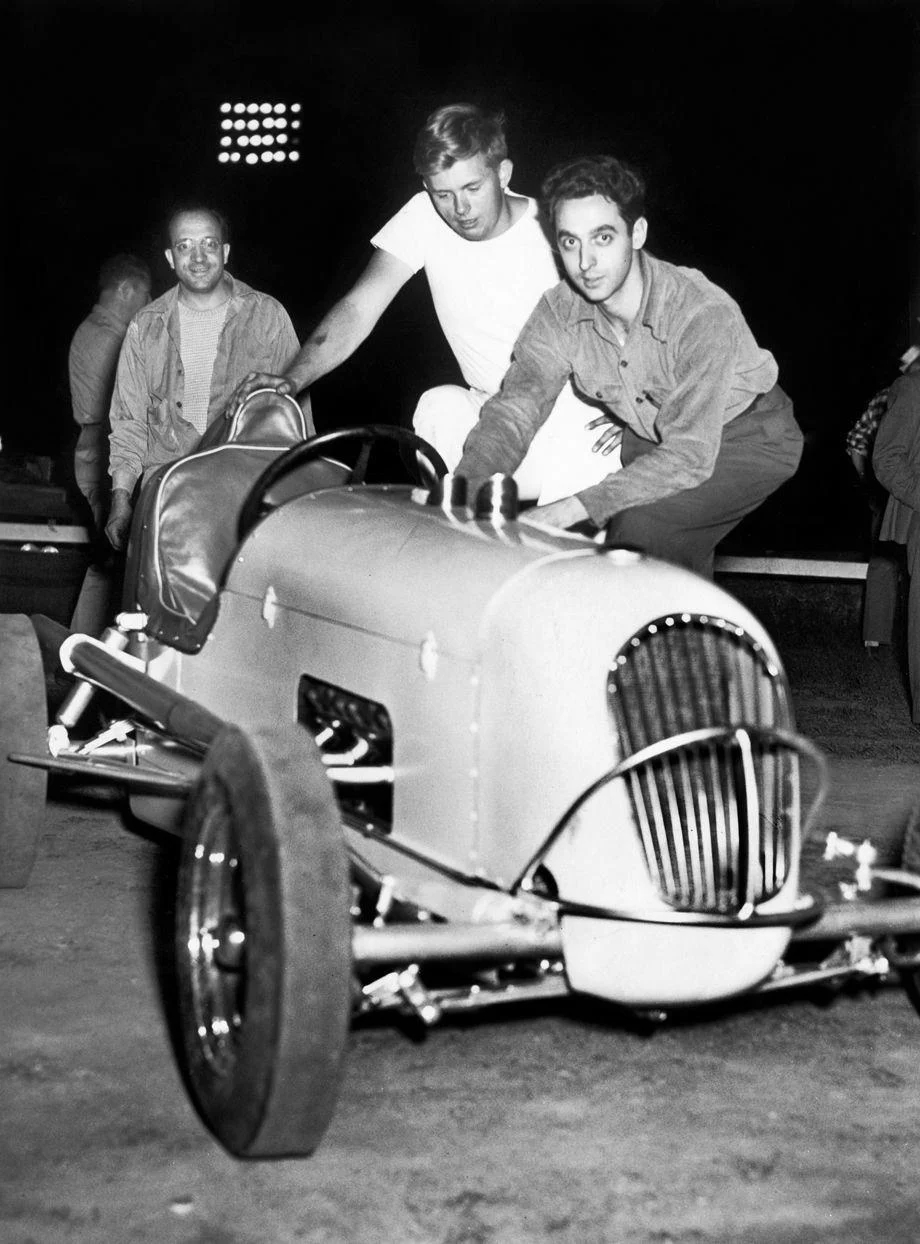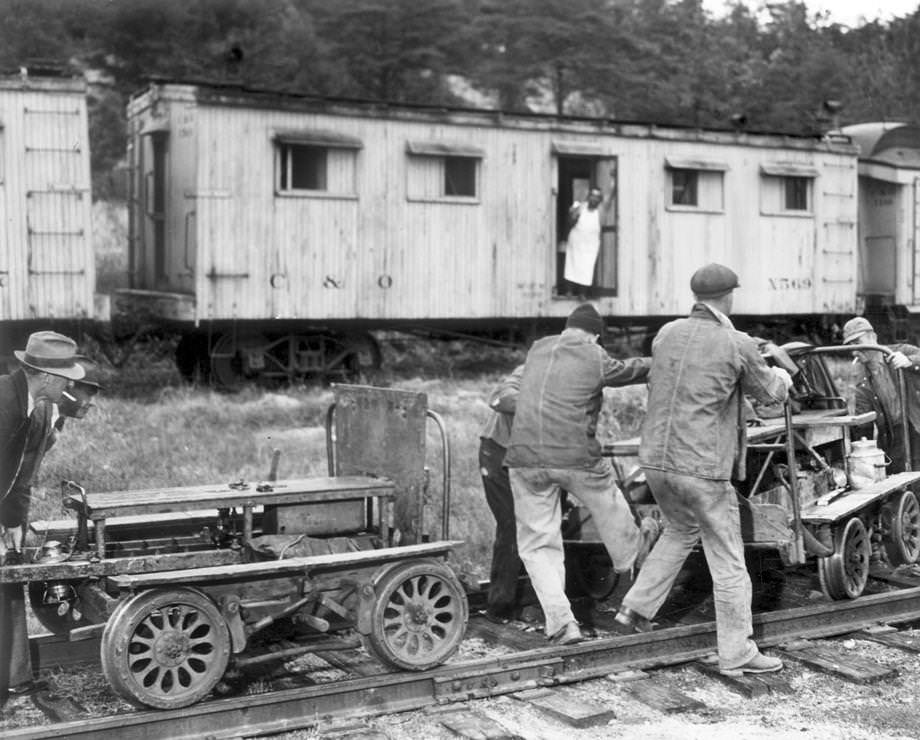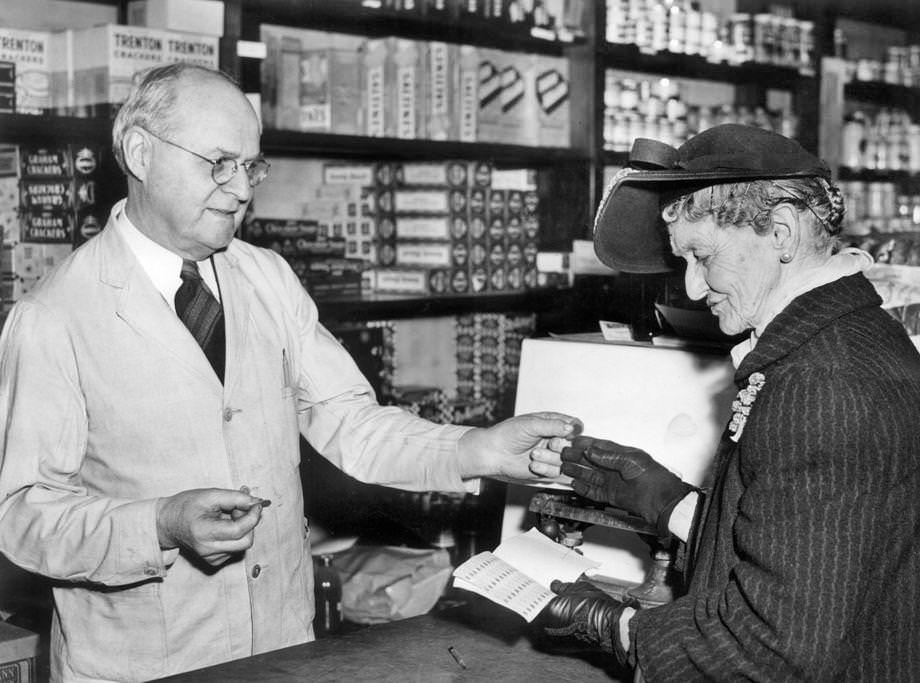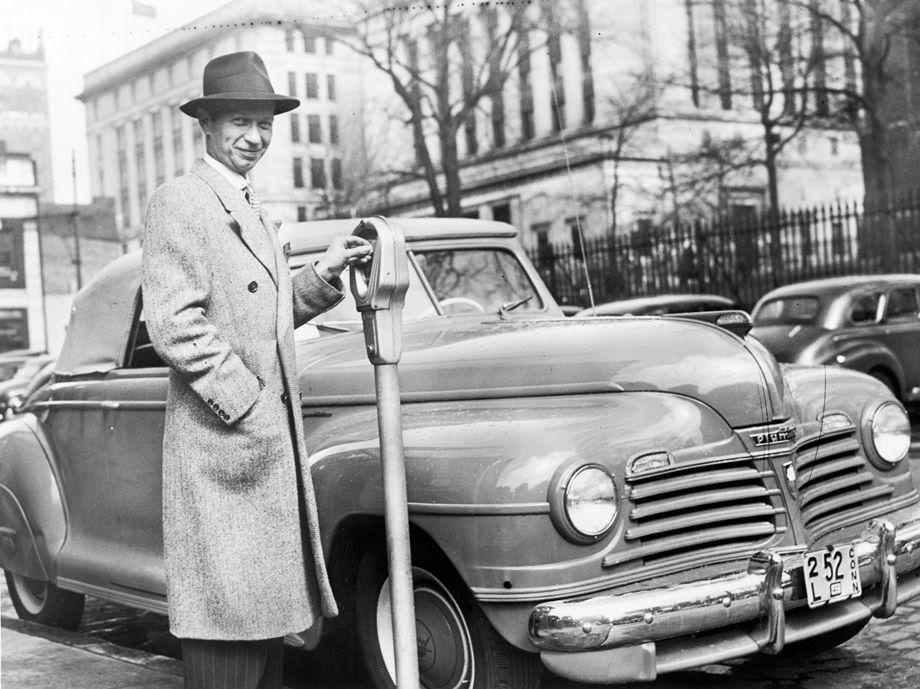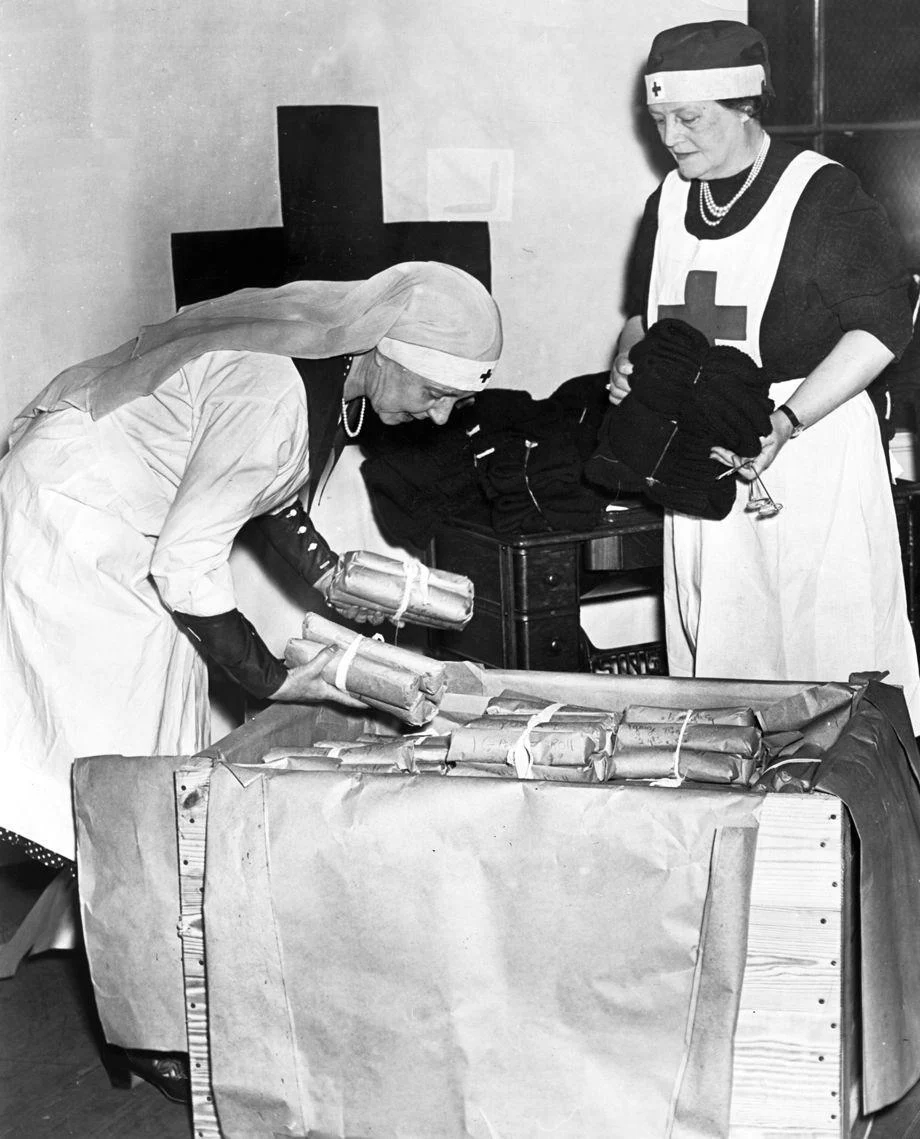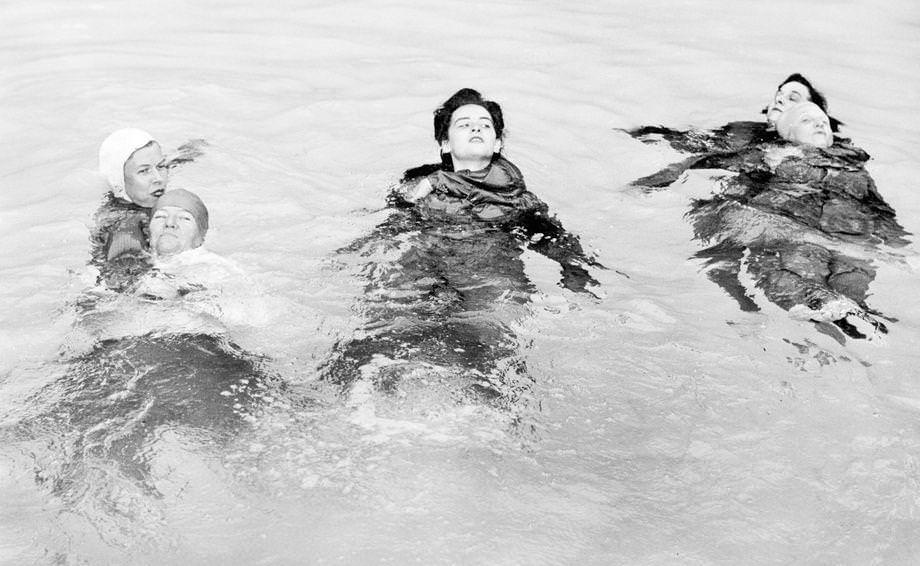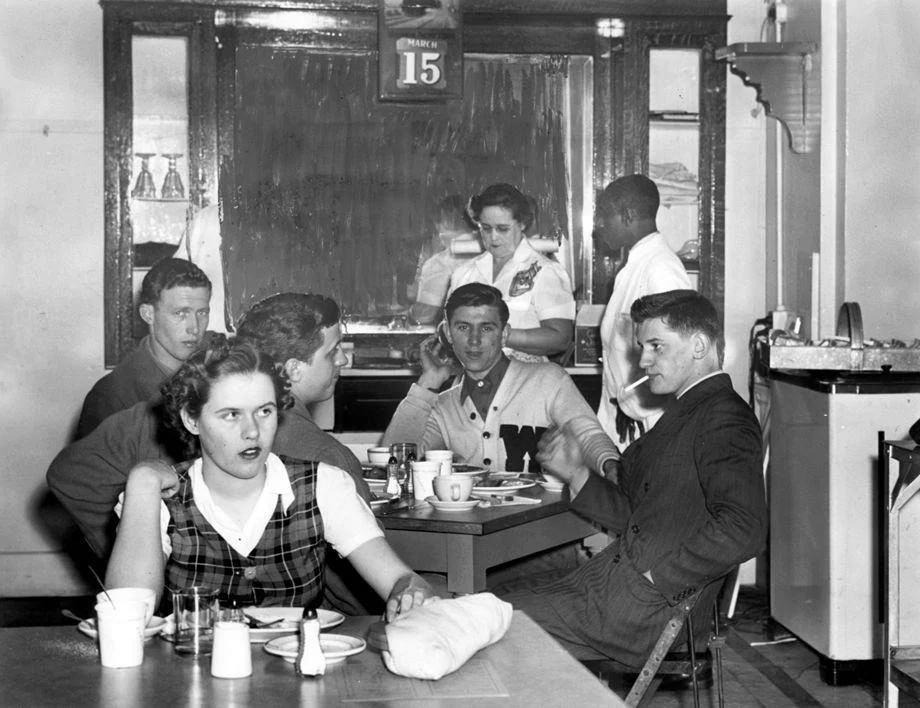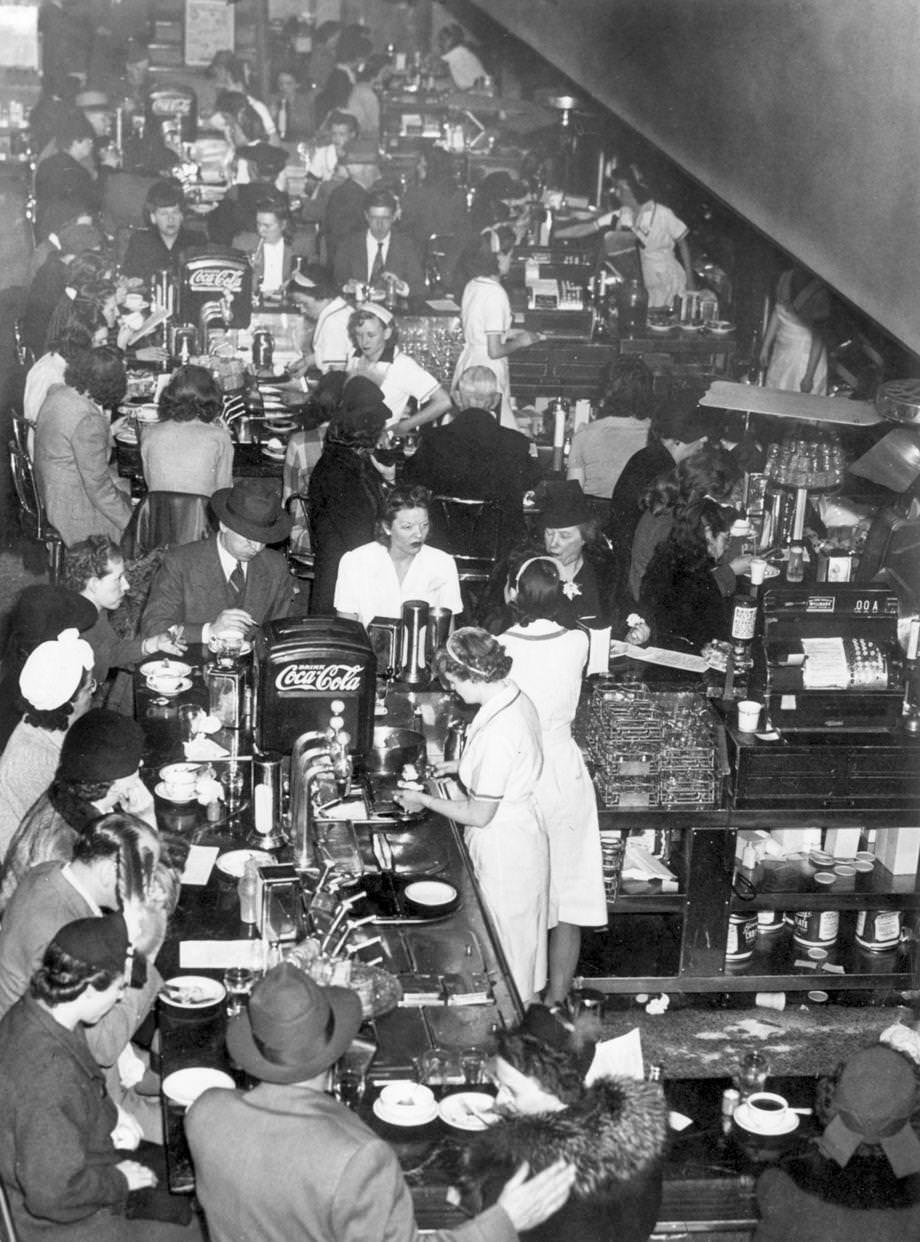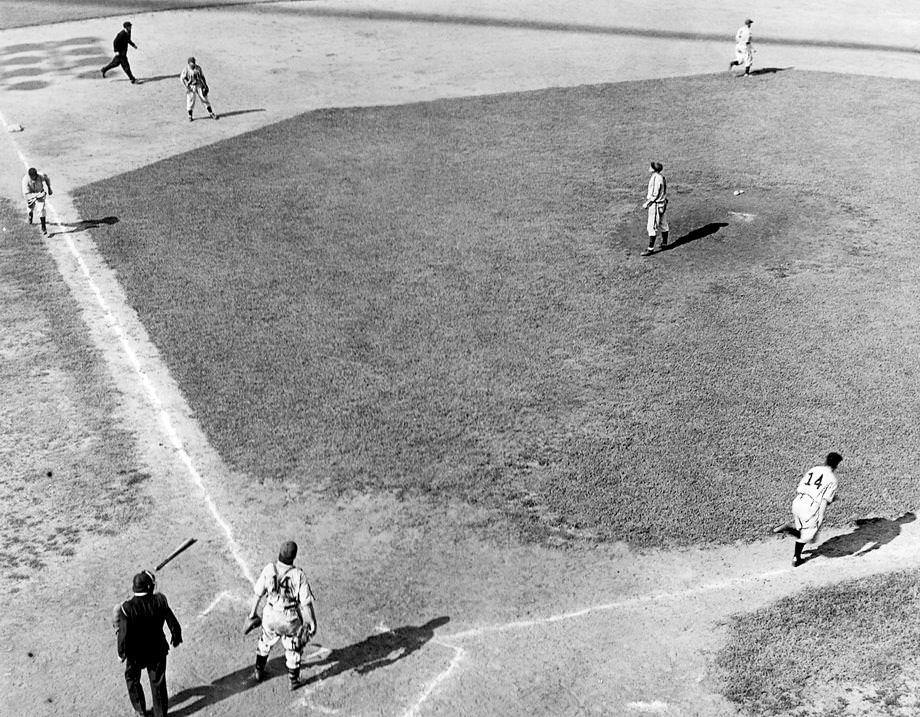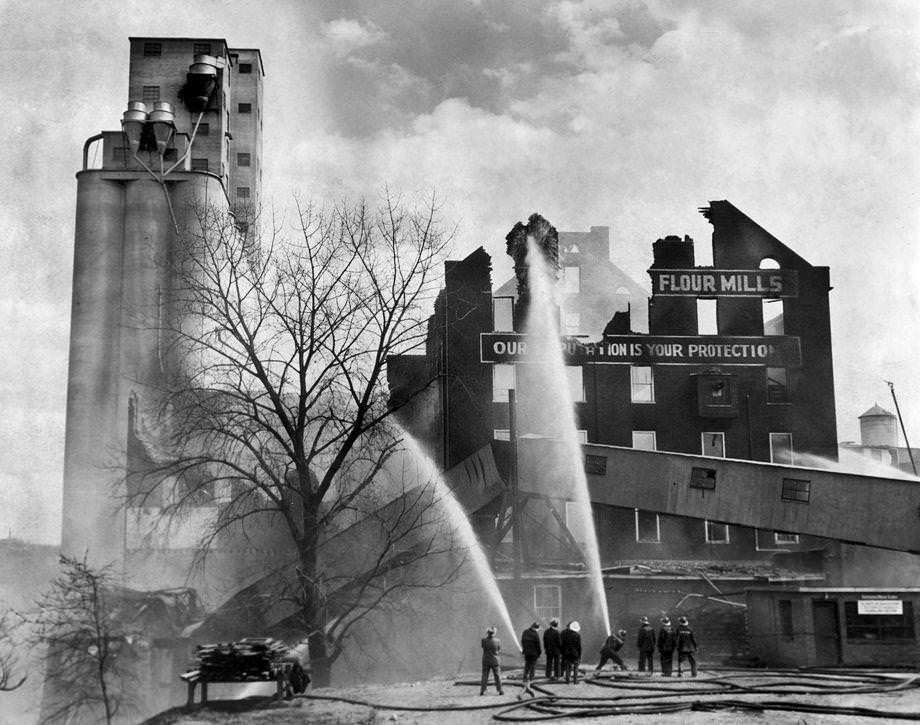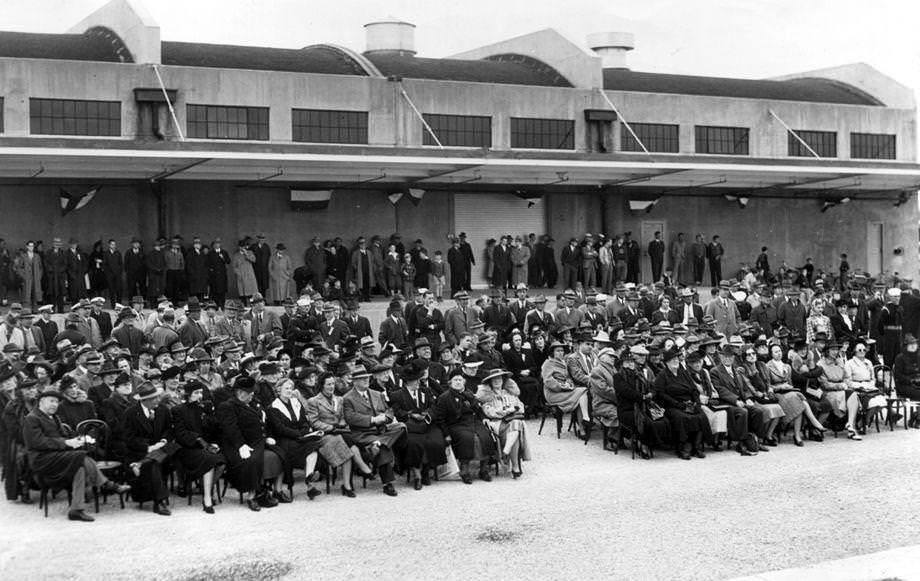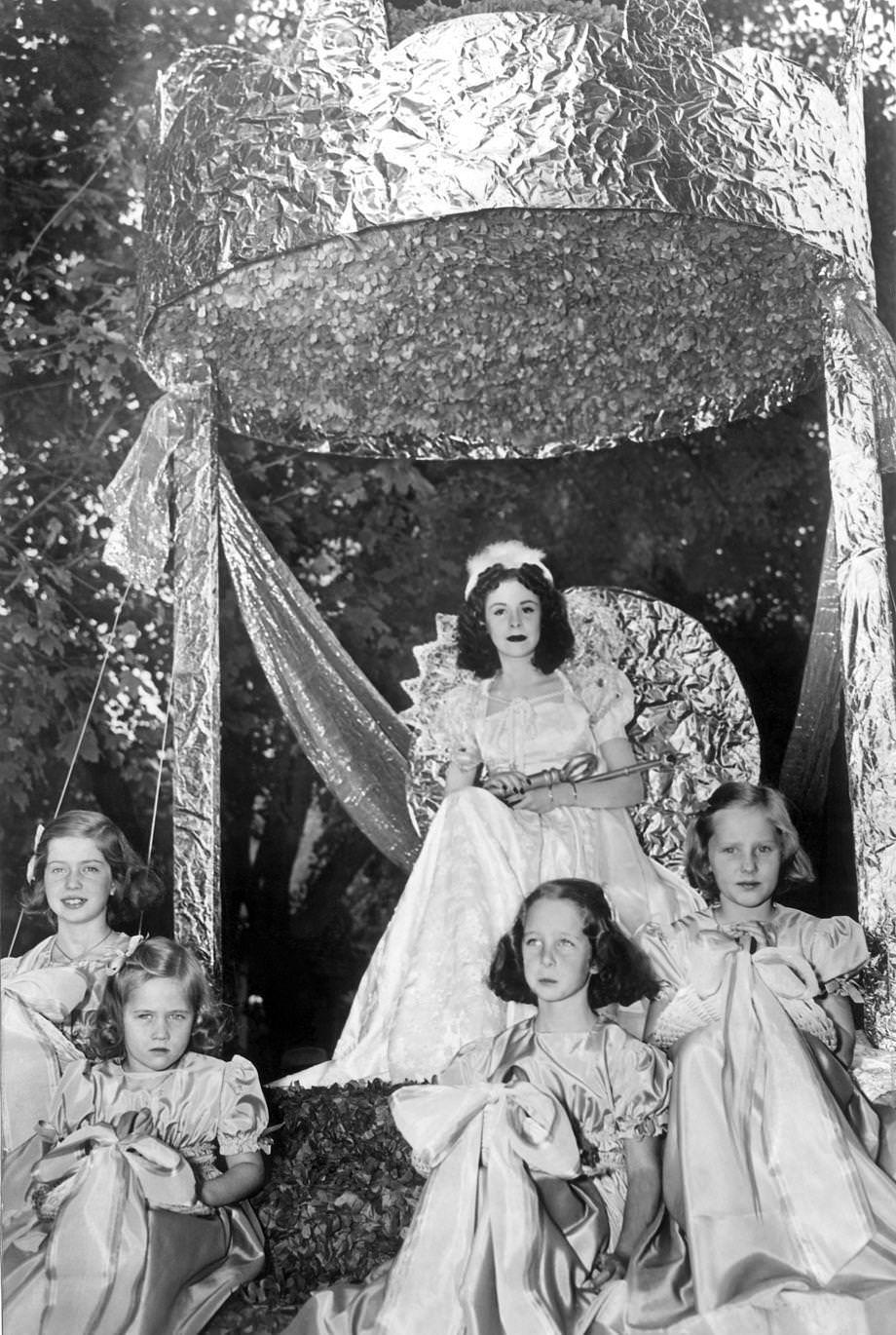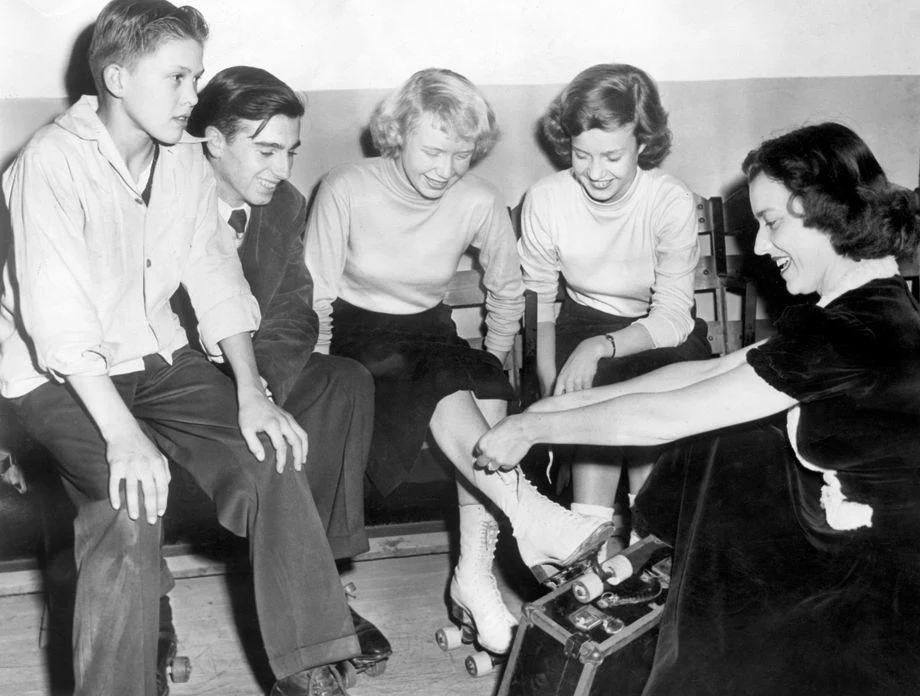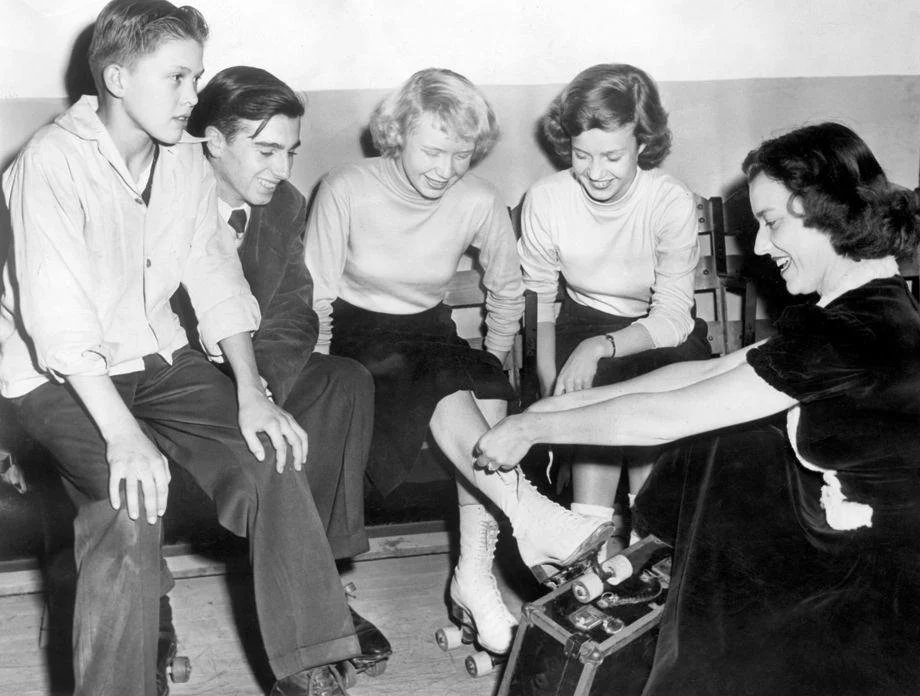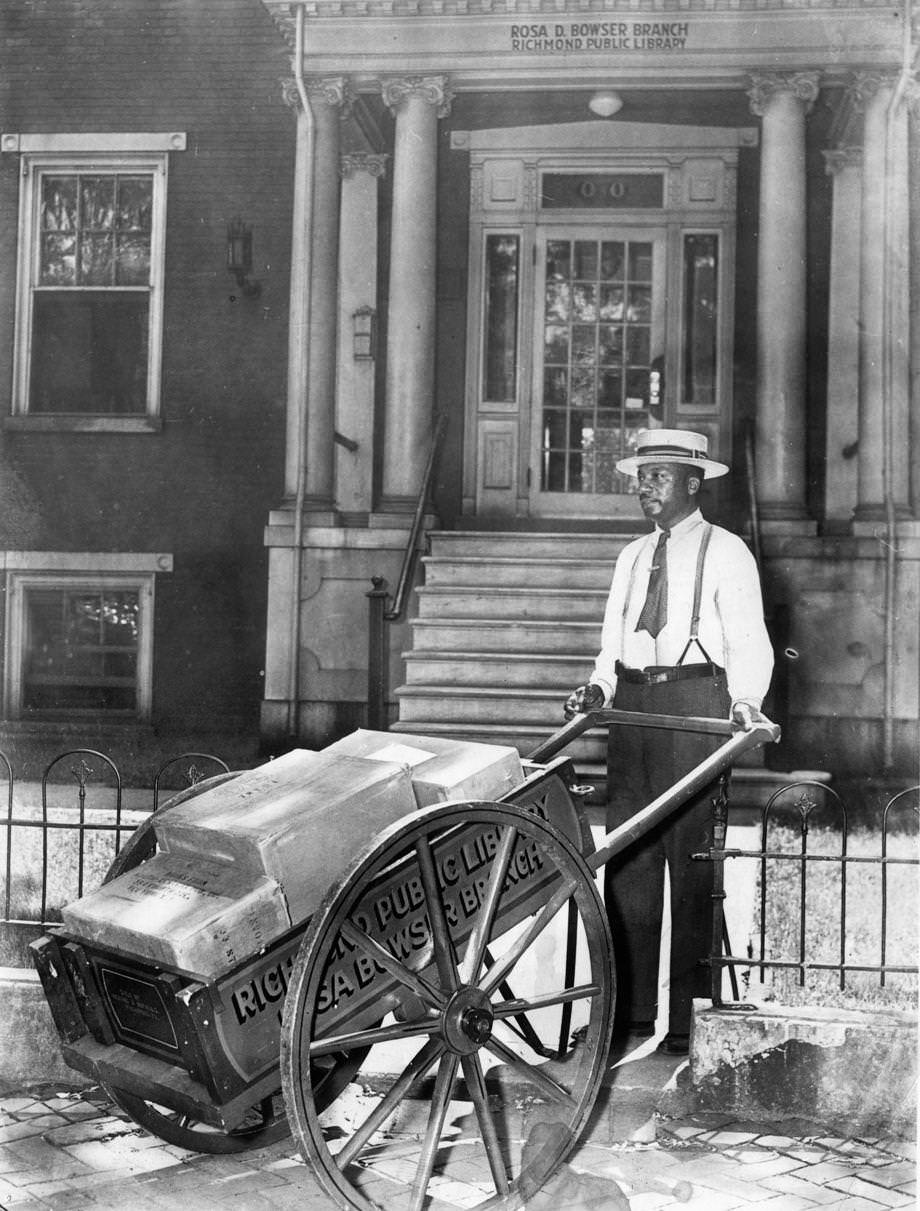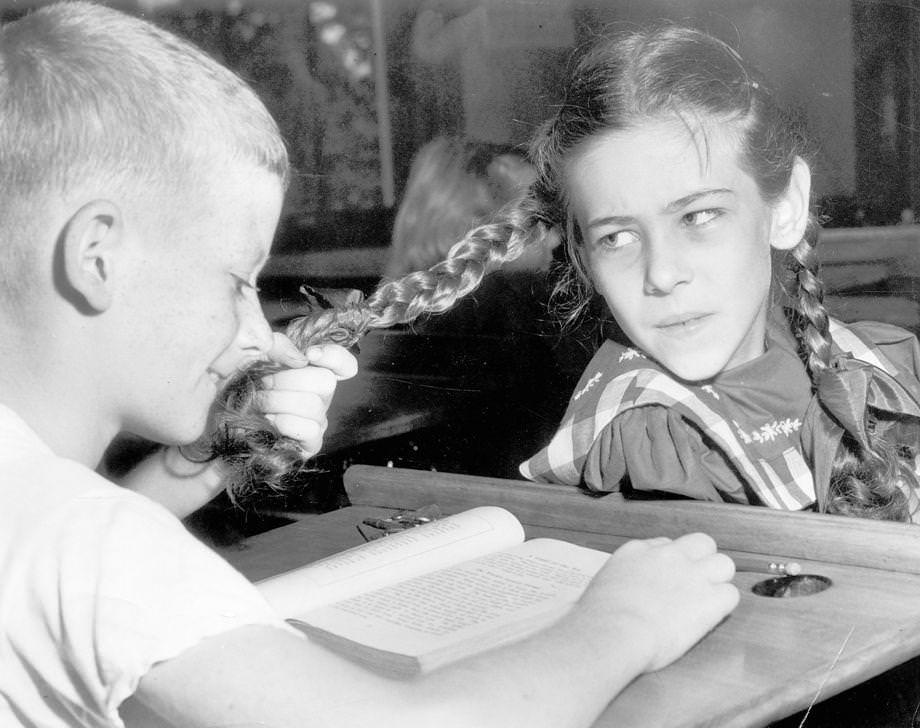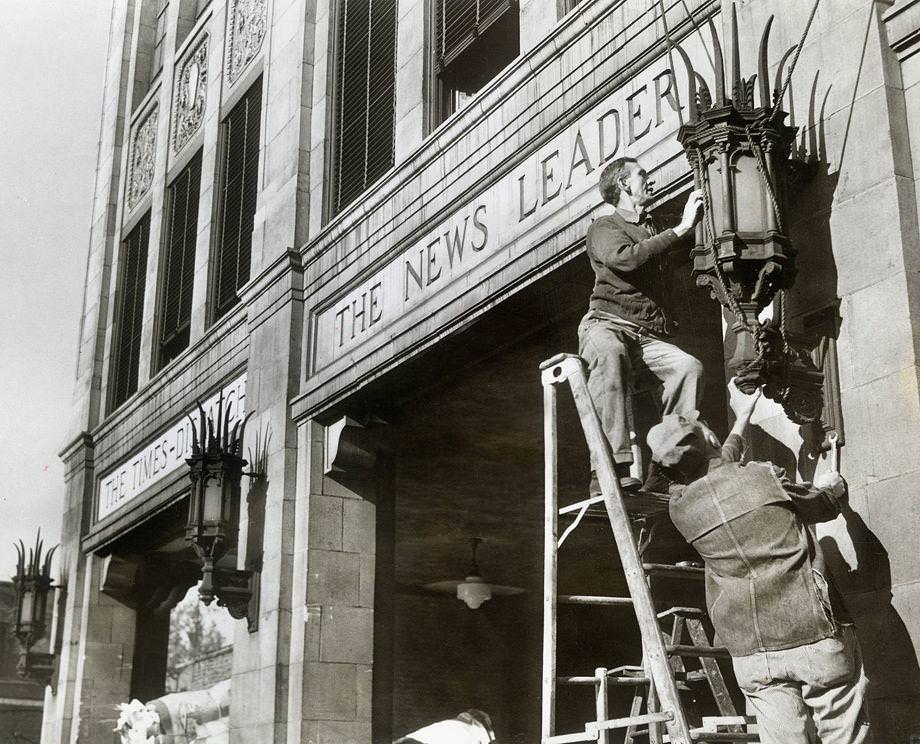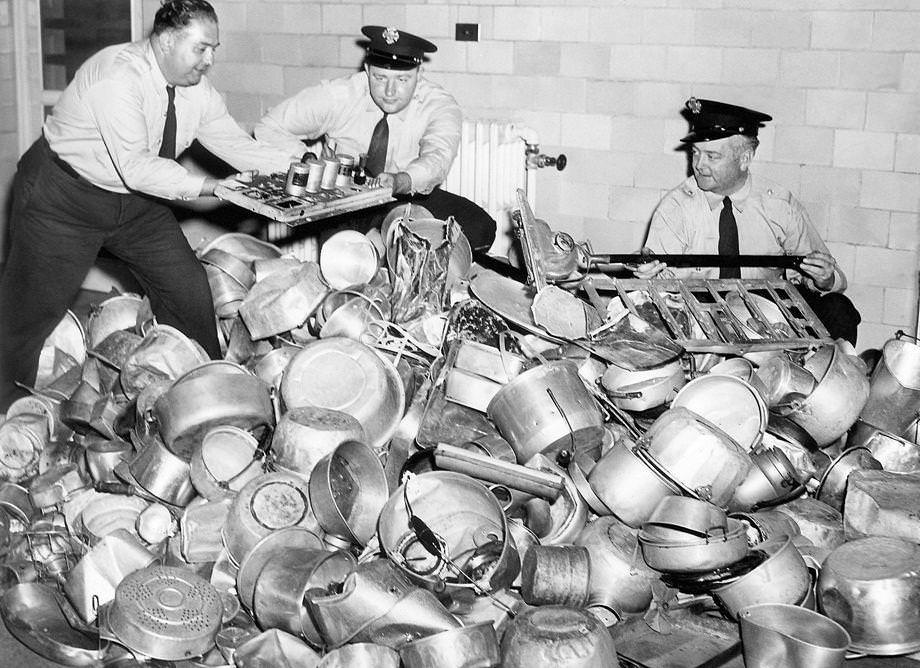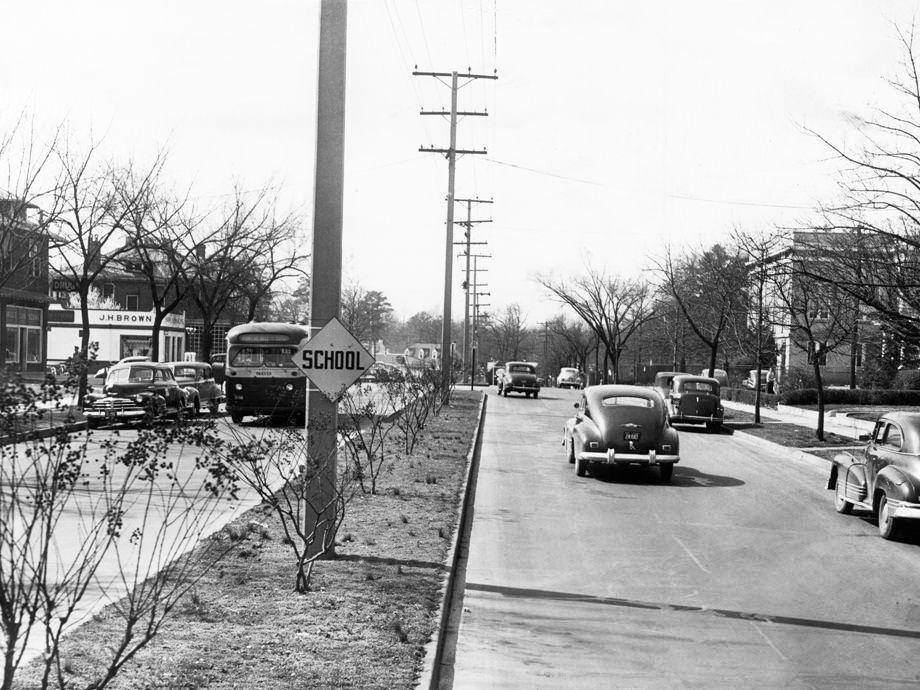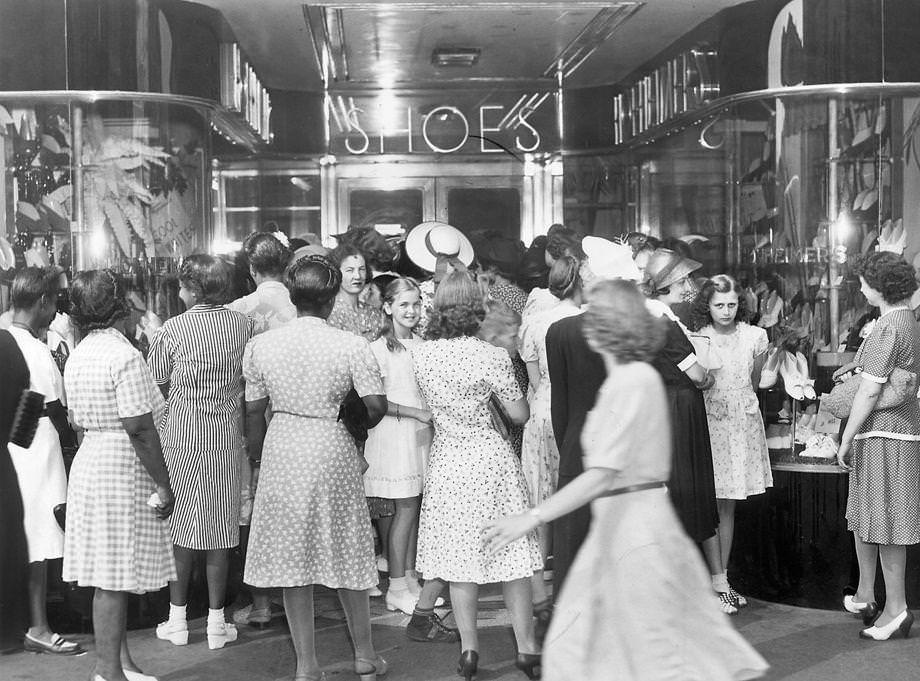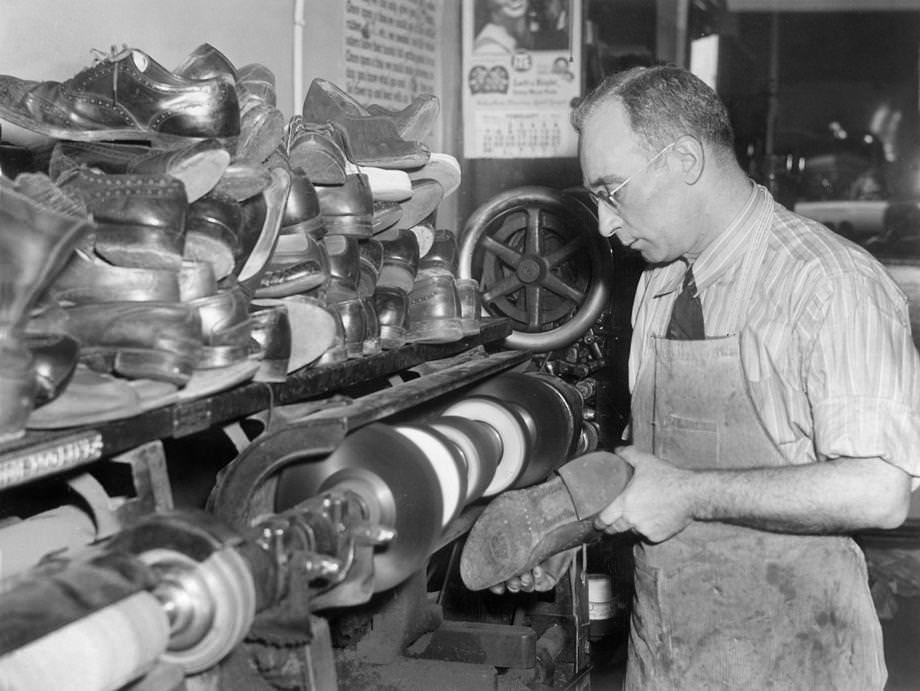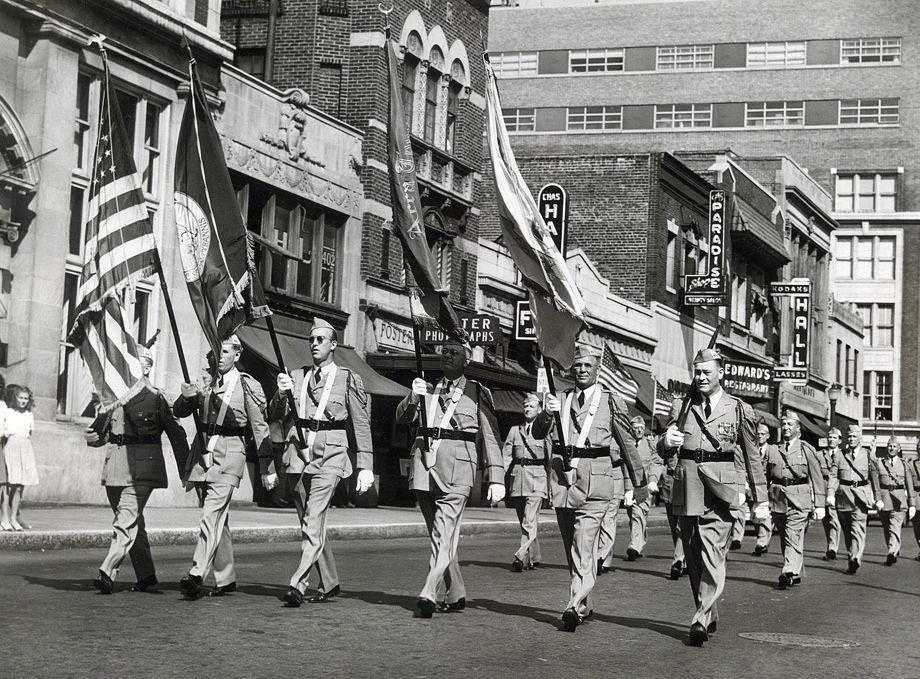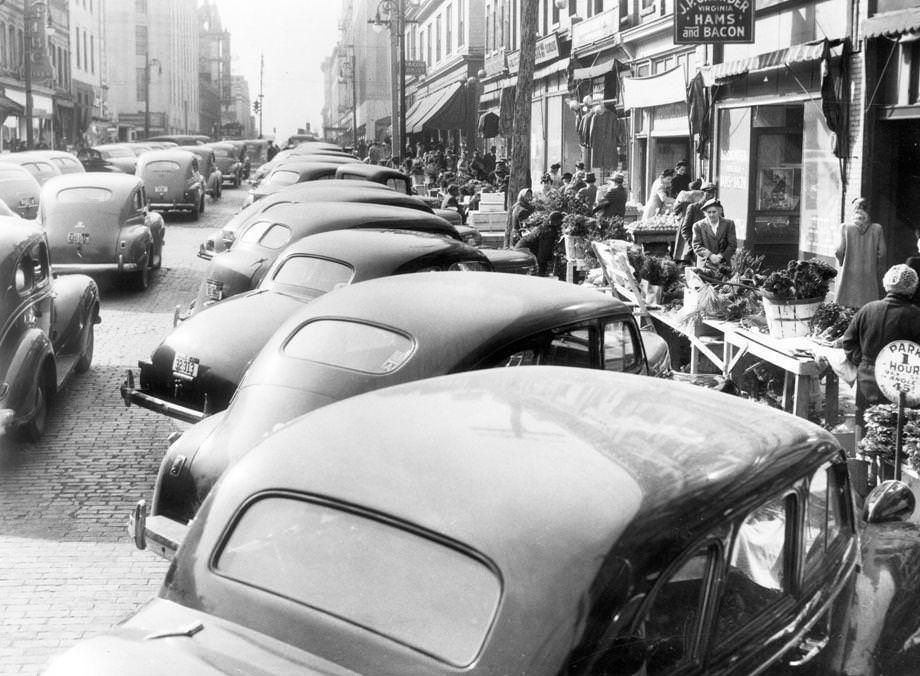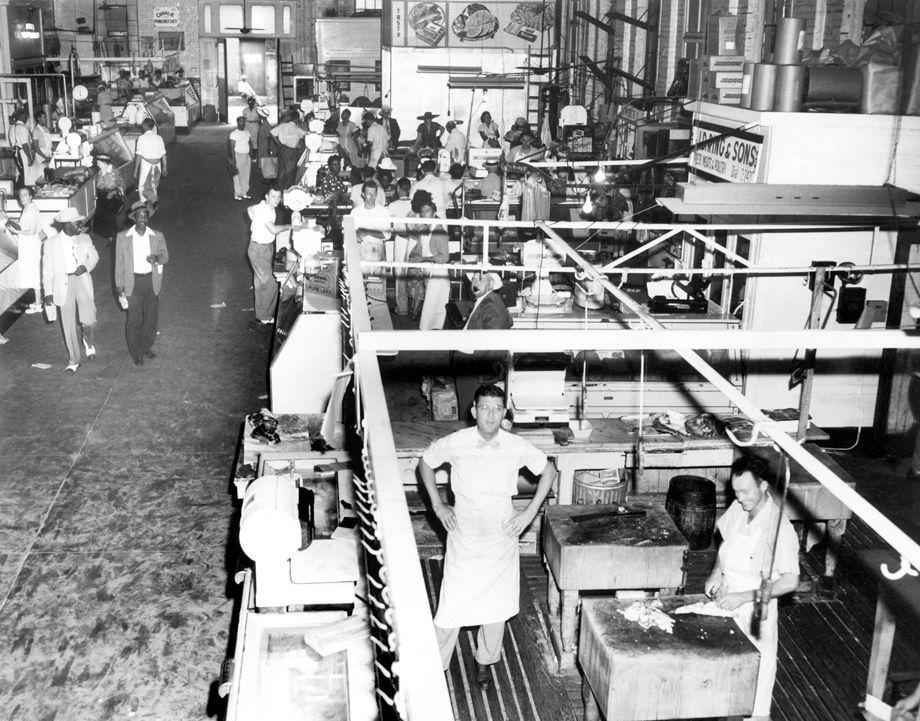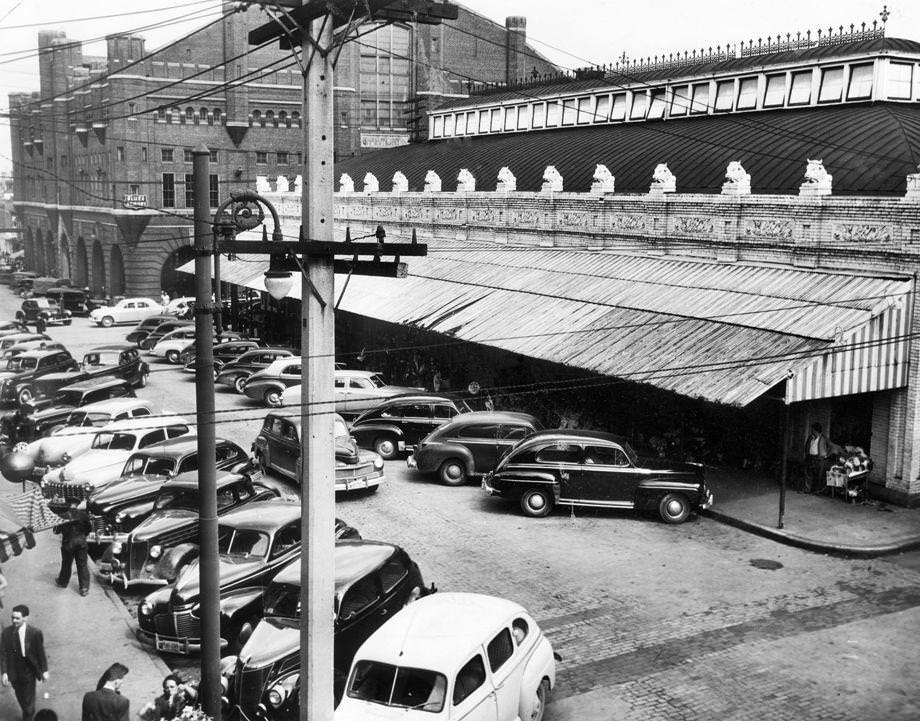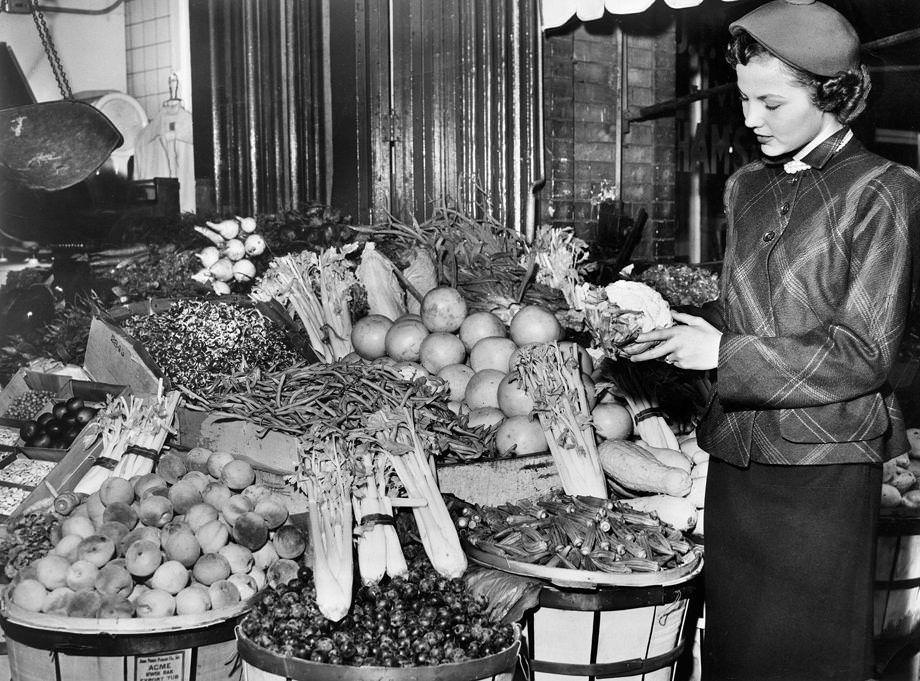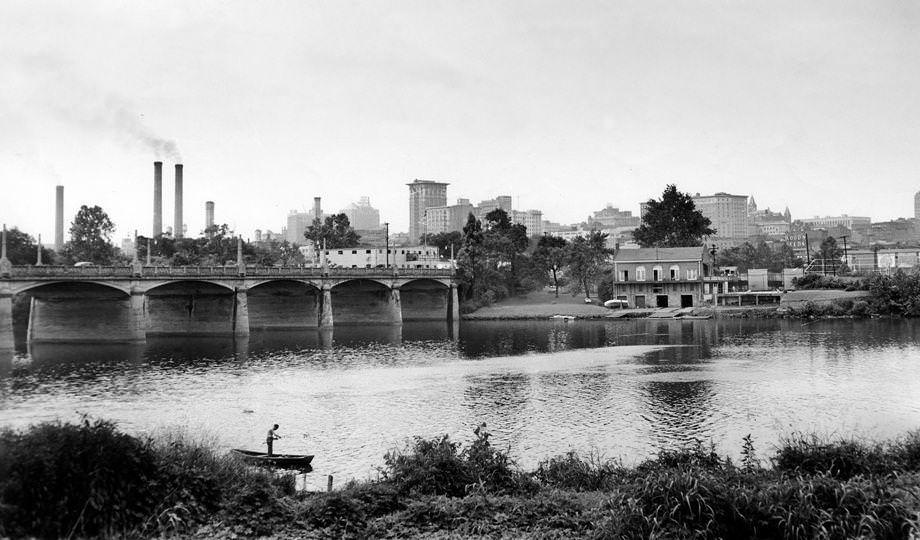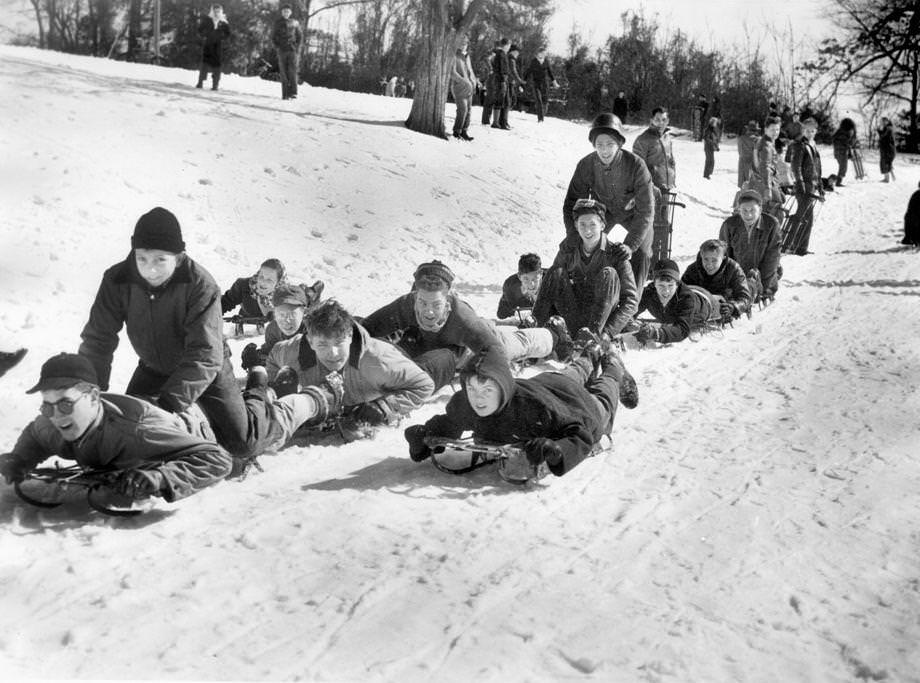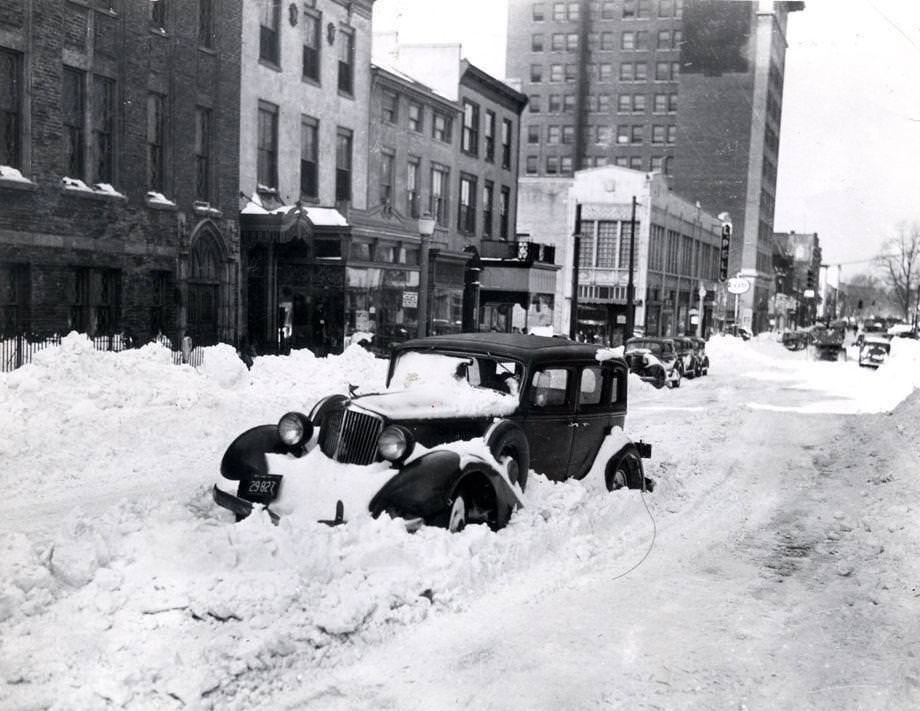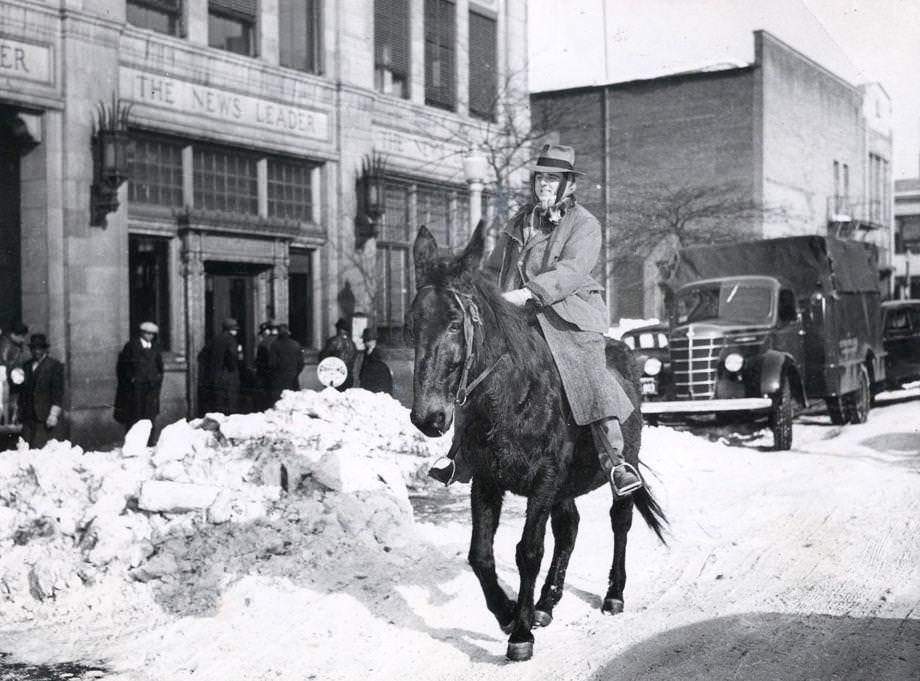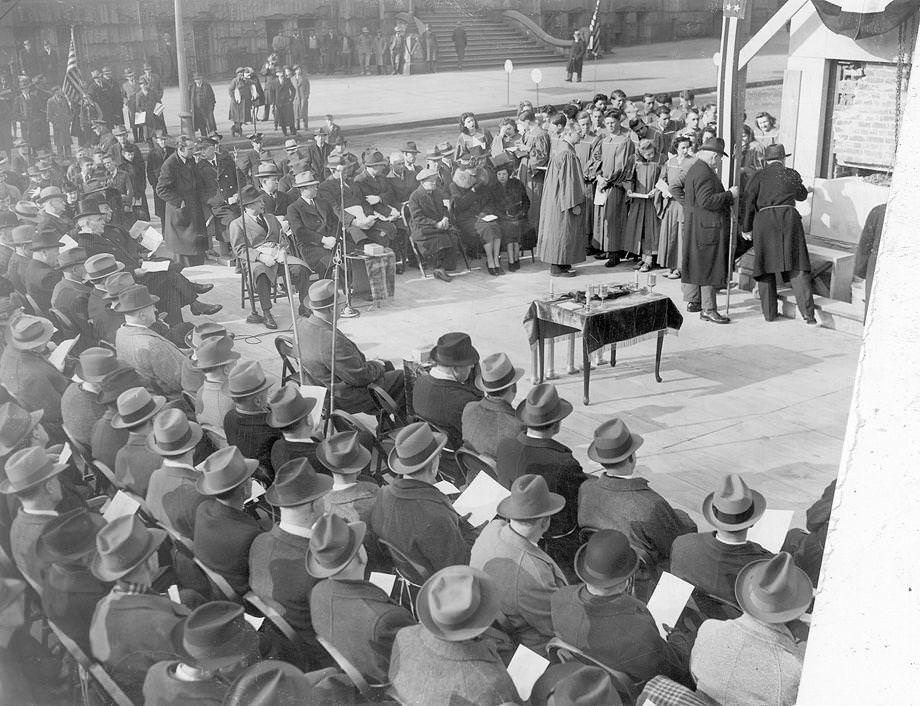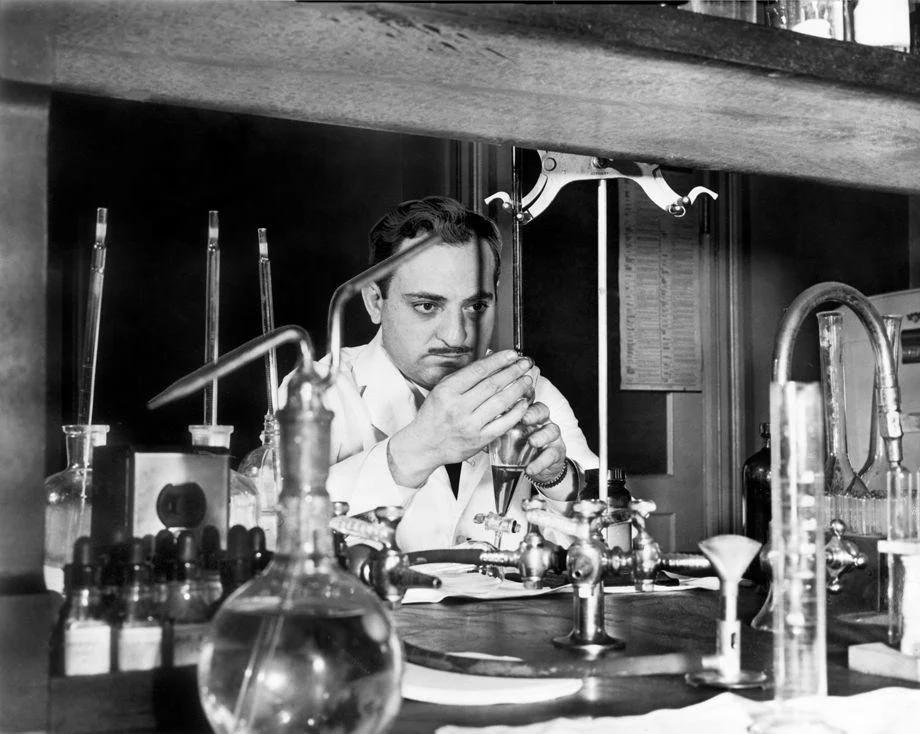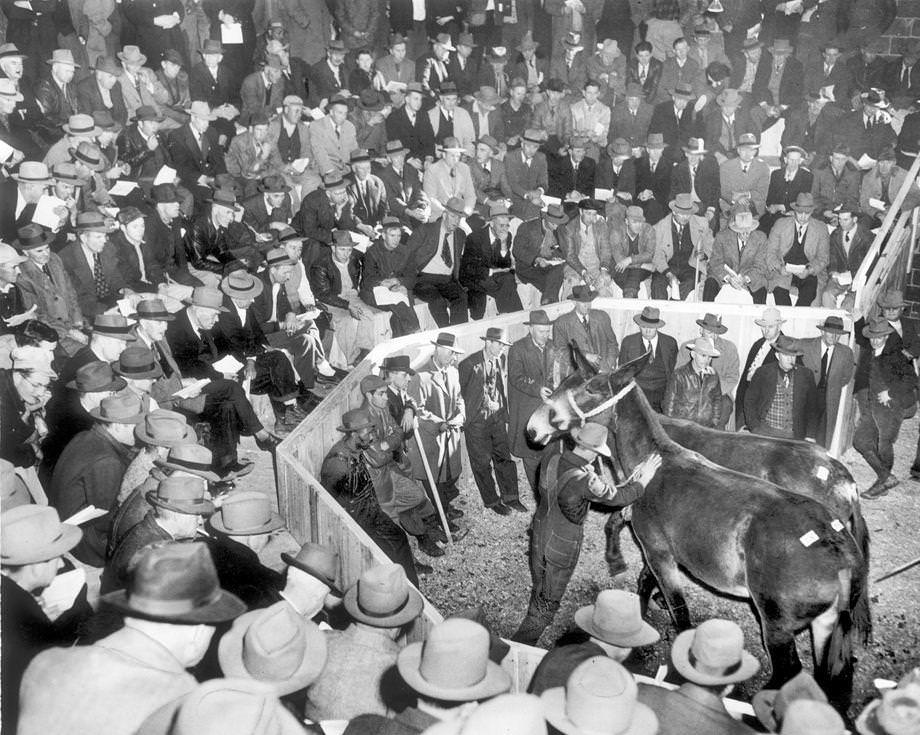Delving into the history of Richmond, Virginia in the 1940s, we uncover a transformative decade marked by wartime efforts, economic resurgence, social changes, and cultural growth. This period, which saw Richmond rebound from the challenges of World War II and stride towards a prosperous future, holds a multitude of stories, each one a vital thread in the vibrant tapestry of the city’s rich history.
The Impact of World War II
The decade started with the global turmoil of World War II, and like the rest of the country, Richmond was deeply impacted. The city’s factories switched to wartime production, with many Richmond residents enlisted or working in support of the war effort. Defense plants in the area, like the Virginia Aircraft Company, employed thousands of workers, contributing significantly to the war effort..
Read more
The Boom of Tobacco and Industry
The post-war era saw a boom in Richmond’s traditional industries, particularly tobacco. Companies like Philip Morris saw massive growth, contributing to the city’s economic resurgence. This period also saw the expansion of other industries, including finance, insurance, and advertising, laying the groundwork for the diverse economy Richmond enjoys today.
The Expansion of Higher Education
The 1940s marked a significant period of expansion for higher education in Richmond. The Virginia Commonwealth University, known back then as Richmond Professional Institute, saw considerable growth, expanding its curriculum and increasing its student population. It served as a beacon of opportunity for returning servicemen and women, using the benefits of the GI Bill to further their education.
Infrastructure Development
Post-war Richmond witnessed significant infrastructure development. The city saw the construction of new homes, commercial buildings, and public facilities, catering to its growing population. A notable example is the Richmond-Petersburg Turnpike, now part of Interstate 95, which underwent significant expansion during this time.
Railroads and Transport
The Richmond, Fredericksburg, and Potomac Railroad (RF&P), integral to Richmond’s transportation system, underwent significant changes during this period. Post-war, it shifted its focus from transporting military freight back to its core operation – moving commercial goods and passengers. This contributed to Richmond’s economic resurgence and increased connectivity with other regions.
#1 Fifth & Leigh Streets (House), Richmond, 1940s
#2 Third & East Main Streets (House), Richmond, 1940s
#3 Allison-Moore-Crump Building, 1309 East Main Street, Richmond, 1940s
#4 Eighteenth & Main Streets (House), Richmond, 1940s
#5 Hobson-Nolting House, 409 East Main Street, Richmond, 1940s
#6 Ballard Street & Tobacco Alley (House), Richmond, 1940s
#7 107 East Cary Street (House), Richmond, 1940s
#8 402 East Cary Street (House), Richmond, 1940s
#9 21 West Clay Street (House), Richmond, 1940s
#10 706 North Eighteenth Street (House), Richmond, 1940s
#11 400 West Franklin Street (House), Richmond, 1940s
#12 206 East Leigh Street (House), Richmond, 1940s
#13 2416 East Main Street (House), Richmond, 1940s
#14 2600 East Marshall Street (House), Richmond, 1940s
#15 Seventeenth & Venable Streets (House), Richmond, 1940s
#16 516 North Third Street (House), Richmond, 1940s
#17 102 South Third Street (House), Richmond, 1940s
#18 Twenty-first & Venable Streets (House), Richmond, 1940s
#19 Linden Row, 100-118 East Franklin Street, Richmond, 1940s
#20 Twenty-third & Franklin Streets (Houses), Richmond, 1940s
#21 Chamberlayne Avenue & Saint Peter Street (House), Richmond, 1940s
#22 Hawes House, 506 East Leigh Street, Richmond, 1940s
#23 John Marshall House, 818 East Marshall Street, Richmond, 1940s
#24 Mason’s Hall, 1805 East Franklin Street, Richmond, 1940s
#25 John Morris Cottage, 2500 East Grace Street, Richmond, 1940s
#26 Old Stone House, 1916 East Main Street, Richmond, 1940s
#27 Dr. John Adams Double House, 2501-2503 East Grace Street, Richmond, 1940s
#28 William C. Allen Double House, 4-6 East Main Street, Richmond, 1940s
#29 Andrew Ellet House, 2702 East Grace Street, Richmond, 1940s
#30 William Barret House, Fifth & Cary Streets, Richmond, 1940s
#31 The Bell Tower, Capitol Square, Richmond, 1940s
#32 Bransford House, 1005 Clay Street (moved from 13 North Fifth Street), Richmond, 1940s
#33 Dr. John Brockenbrough House, 1201 East Clay Street, Richmond, 1940s
#34 Curtis Carter House, 100 East Main Street, Richmond, 1940s
#35 Columbian Block, 1301-1307 East Cary Street, Richmond, 1940s
#36 778 North Ninth Street (Cottage), Richmond, 1940s
#37 Adolph Dill House, 00 Clay Street, Richmond, 1940s
#38 Donnan-Asher Iron Front Building, 1207-1211 East Main Street, Richmond, 1940s
#39 212-214 South First Street (Double House), Richmond, 1940s
#40 2216-2218 East Main Street (Double House), Richmond, 1940s
#41 1200-1202 North Seventeenth Street (Double House), Richmond, 1940s
#42 Ellet-Todd-Lawrence Building, 1019-1021 East Cary Street, Richmond, 1940s
#43 Gosden House, Third & Leigh Streets, Richmond, 1940s
#44 Phillip Morris Leaf Storage Warehouse, 1717-1721 East Cary Street, Richmond, 1940s
#45 Pratt’s Castle, 324 South Fourth Street, Richmond, 1940s
#46 Rutherfoord-Hobson House, 2 West Franklin Street, Richmond, 1940s
#47 John D. Smith House, 2617 East Franklin Street, Richmond, 1940s
#48 Whitlock Double House, 628-630 North Seventeenth Street, Richmond, 1940s
#49 Pohlig Paper Box Factory, Twenty-fifth & Franklin Streets, Richmond, 1940s
#50 504-510 West Broad Street (Commercial Buildings), Richmond, 1940s
#51 Mount Airy, Counting House, State Route 646 vicinity, Warsaw, Richmond County, 1940s
#52 1109-1113 East Main Street (Commercial Buildings), Richmond, 1940s
#53 Bellona Arsenal, Workshops, State Route 673 vicinity, Richmond, 1940s
#54 The Oaks, (moved to 307 Stockton Lane, Richmond), Mattoax, Amelia County, 1940s
#55 Dwellers of Richmond-area houseboats endured nature’s wrath as the James River swelled after a storm, 1944.
#56 High water on Dock Street in downtown Richmond followed a brief flood that caused no damage, 1949.
#57 The building, at Madison and Grace streets in Richmond, that once sat downtown and housed First Presbyterian Church, 1940s.
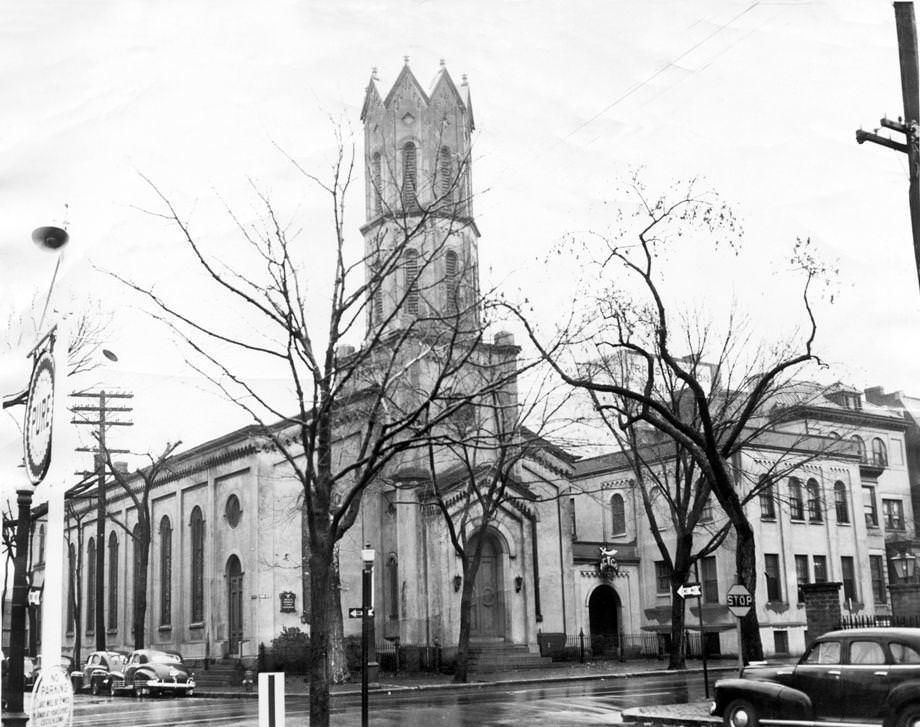
Completed in 1853 at the current site of Old City Hall, the building’s outer shell was moved to Madison and Grace in the mid-1880s to make room for the city building. In 1943, the Acca Shriners, who had lost the Mosque (now Altria Theater) during the Great Depression, purchased the old church building. They used it until the mid-1950s; the building has since been torn down.
#58 Mrs. P.M. Edwards directed a group of women to a shelter during a daylight air raid test in Richmond, 1942.
#59 A group of Lakeside air raid wardens rolled bandages for the Red Cross at the Hatcher Memorial Church on Dumbarton Road in Henrico County, 1944.
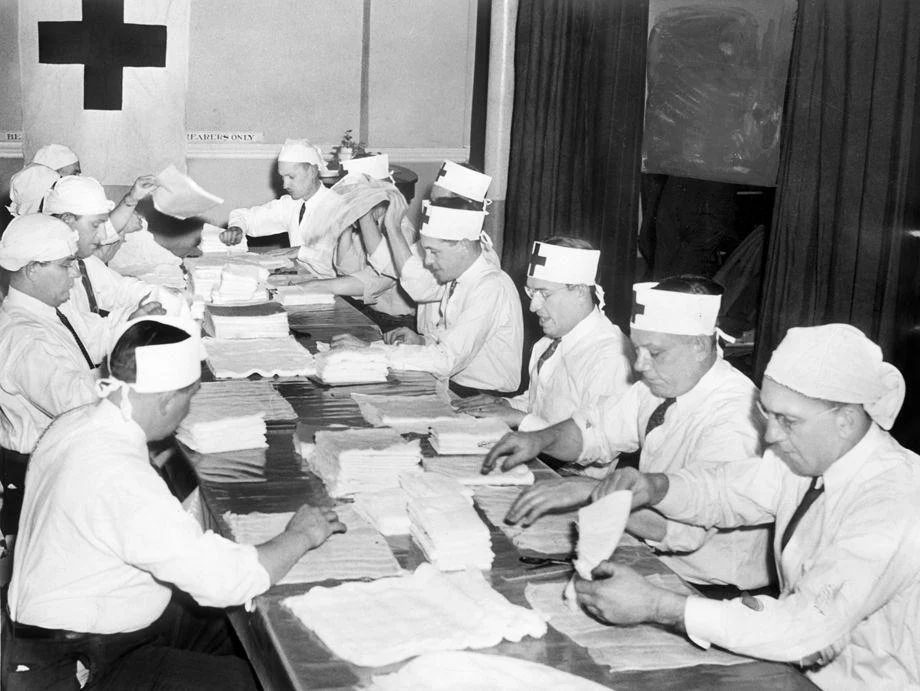
During World War II, the sight of women in overalls doing what traditionally had been men’s jobs had grown familiar. And while the reverse was less common, the military’s need for surgical dressings prompted these men to help answer the call. They had taken first-aid courses, too.
#60 Leaders of the three flights in the Gamble’s Hill Community Center Air Scouts received their banners at the first review of the corps held in Gamble’s Hill Park, 1946.
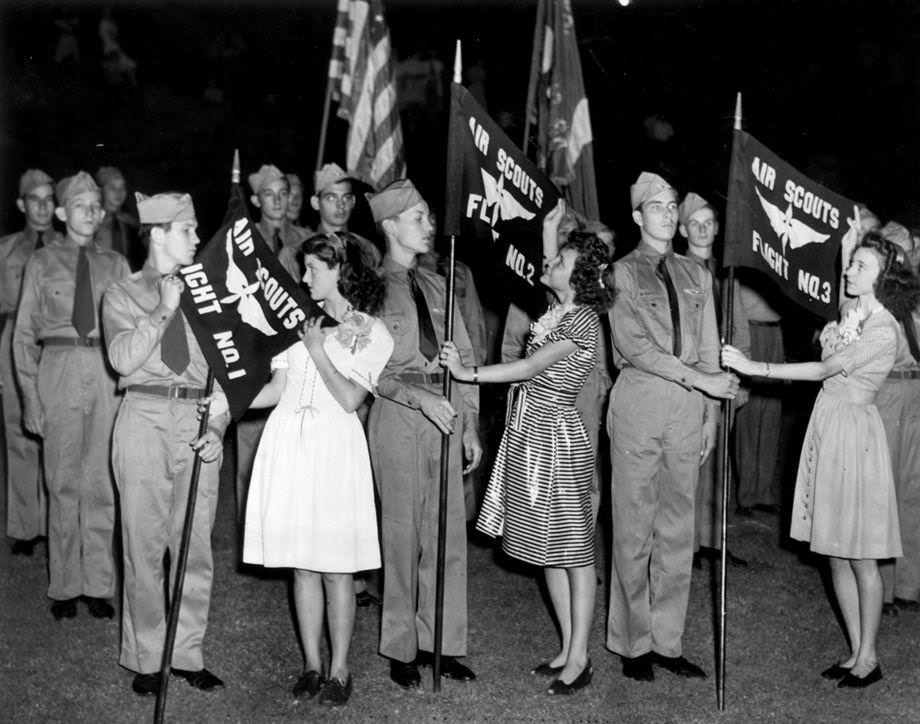
This was the only troupe of Air Scouts organized in Richmond at that time; they wore the regulation National Air Scout uniform. Pictured (from left) were pilot leader Eddie Williams, sponsor Verna Walker, pilot leader William Massie, sponsor Barbara Chandler, pilot leader Everett Webb and sponsor Virginia Blackburn. The community center was financed by Second Presbyterian Church.
#61 An Allied Victory Day parade was staged by Richmond’s Chinese population and visiting Chinese residents from other cities, 1945.
#62 The Richmond chapter of the American Red Cross moved into its new headquarters in the Hancock-Wirt-Caskie House at Fifth and Main streets downtown, 1942.
#63 The uniforms of the volunteer services of the American Red Cross, 1942.
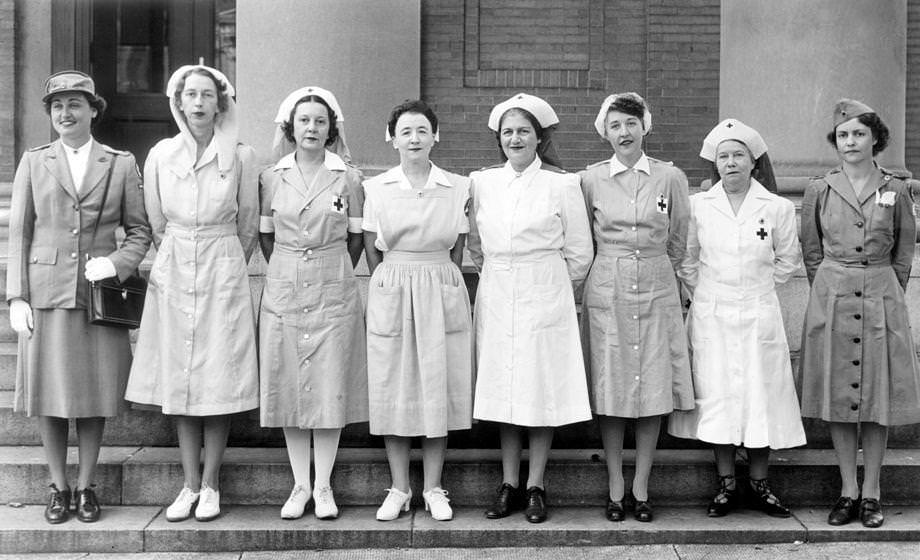
From left: Georgina Marracinia, outdoor uniform; Nancy Wortham, staff assistant; Mrs. C.F. Bowles, gray ladies; Mrs. William Hall, nurses’ aide; Mrs. Livingstone, home service; Mrs. J. Scott Parrish Jr., canteen; Mrs. Robert Cabell III, production, and Mrs. Collins Denny Jr., motor corps.
#64 American Red Cross Production Corps, 1940s
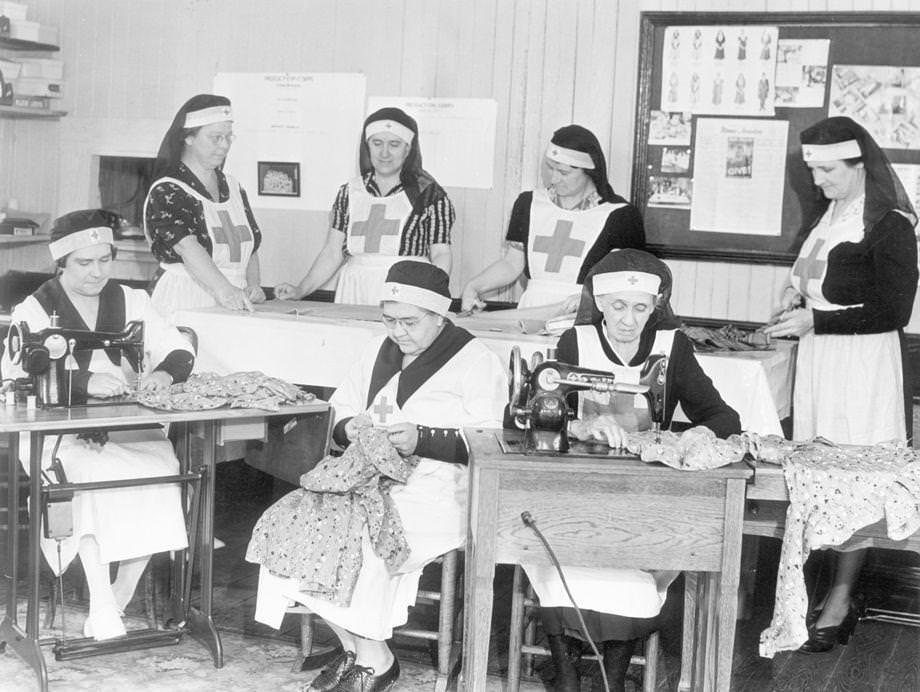
Volunteers with the Chesterfield County branch of the American Red Cross Production Corps put in 314 collective hours of work making 40 dresses, 12 sweaters and 14 banners for the relief drive to aid war-stricken Europeans. The volunteers shown here are (from left) Mrs. A. Baake, Mrs. W.E. Pearce, Mrs. J.P. Belcher, Mrs. W.F. Saunders, Mrs. H.E. Adams, Mrs. N.H. Cogbill and Mrs. H.C. Cline.
#65 Elwyn Major (left) and Virgie Gentry of Richmond practiced archery, a sport that was attracting more interest from females, 1941
#66 John Marshall High School cadet sergeants M. Cohen and J.C. Fuquay played taps during a service on Armistice Day at St. Paul’s Episcopal Church in Richmond, 1942.
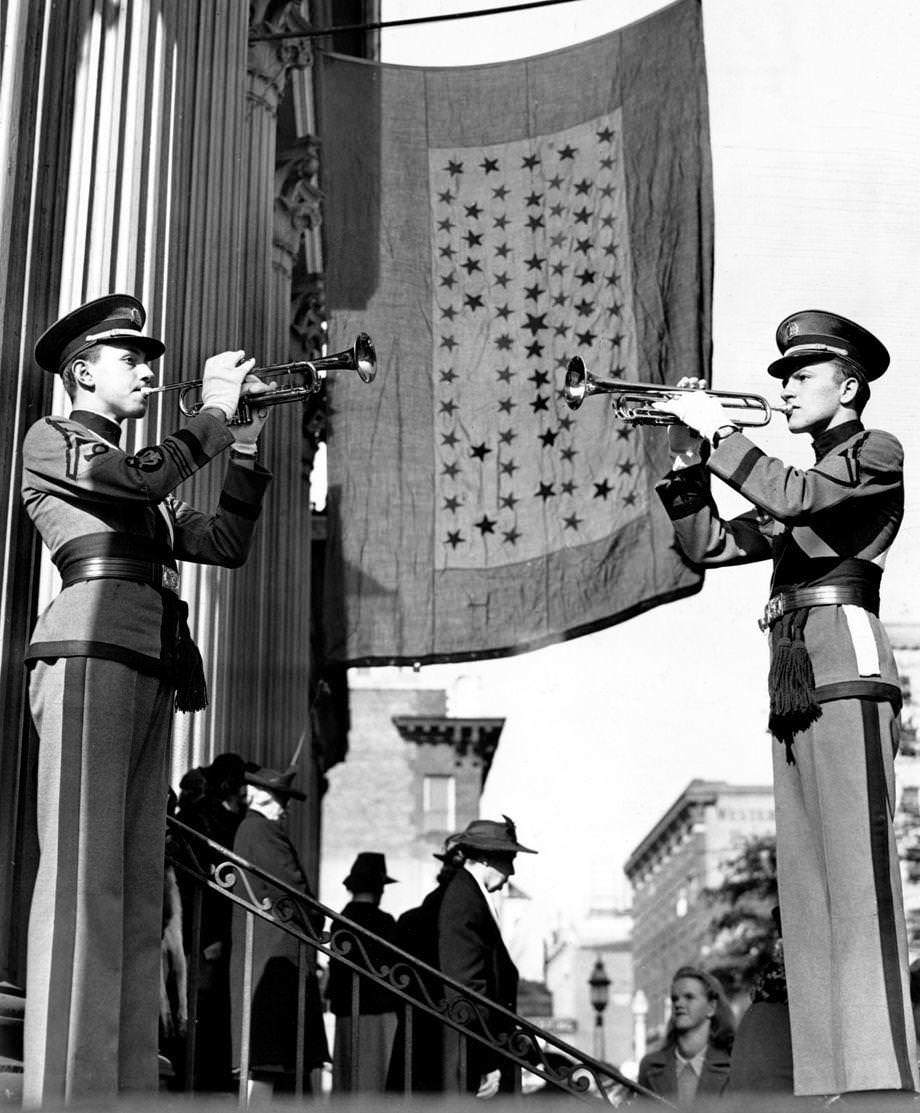
They stood under the church’s service flag: Each blue star represented a church member who was on active duty in World War II, and each gold star represented a church member lost in the war. Service flags were popular for families but sometimes were used by organizations and communities.
#67 Local game warden E.J. Gorman stood atop a dam in one of Chesterfield County’s nine beaver colonies, 1947.
#68 The Belgian Friendship Building and Bell Tower at Virginia Union University in Richmond, 1942.
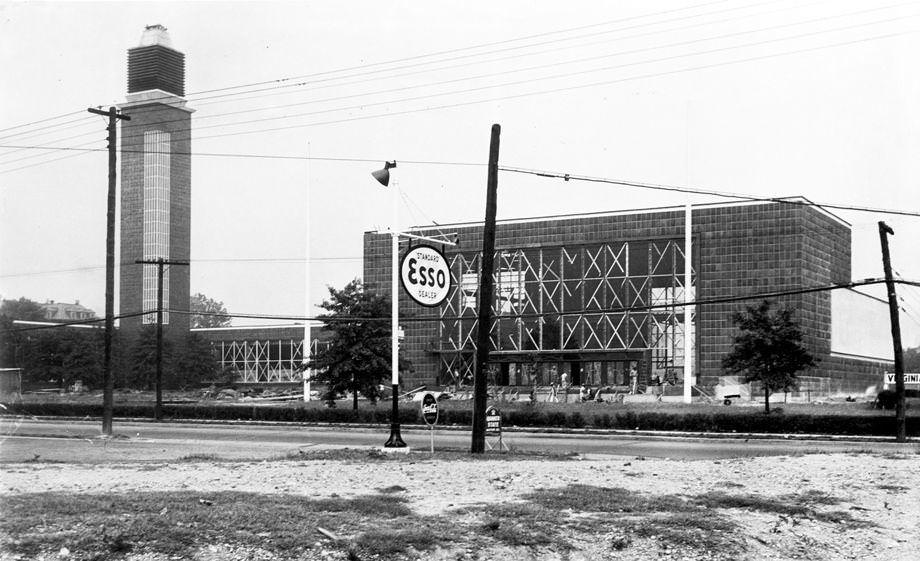
The building served as the Belgian Pavilion at the 1939 World's Fair in New York, but because Belgium was under wartime occupation after the event, it could not be returned to the country. Belgium gifted the building to VUU -- it was reassembled on campus starting in 1941 and housed the university library for decades.
#69 The 76-year-old trestle across the James River that Southern Railway used to haul coal and iron between the Old Dominion Iron and Steel mill and Tredegar Co. was being removed, 1948.
#70 The train depot at the Army’s Richmond Quartermaster Depot at Bellwood in Chesterfield County, 1946.
#71 The Bellwood Drive-In Theater, under construction now four miles south of Richmond city limits, will open on or about May 27, 1948.
#72 A blackout test during World War II – in case enemy aircraft flew over the city – darkened the interior of many buildings in downtown Richmond, 1942.
#73 A newly renovated basketball court, plus improved lighting and expanded seating, awaited action at the Blues Armory at Sixth and Marshall streets in downtown Richmond, 1947.
#74 Tap dancer Bill “Bojangles” Robinson showed his wife, Elaine, the house at 915 N. Third St. in which he was born, 1945.
#75 Berrier’s Ice Cream, located at the corner of Moore Street and the Boulevard in Scott’s Addition in Richmond, 1946.
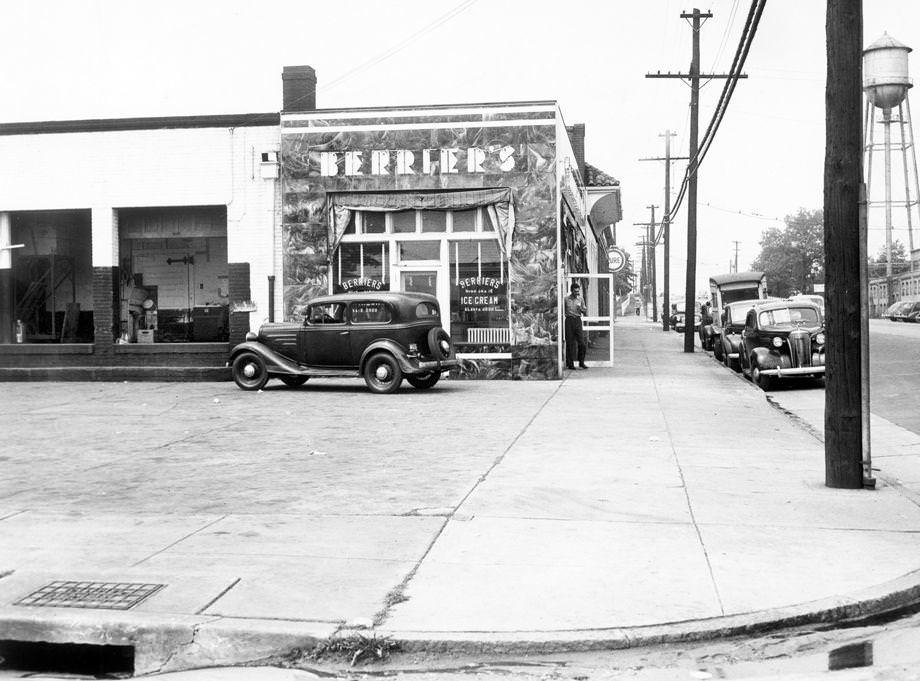
Berrier’s opened a plant on West Broad Street in 1930 – an advertisement for an open house, with samples, humbly touted that it’s “not a tremendous plant, supplying thousands of gallons of ice cream a day … nothing pretentious.” The Boulevard store, which has since been torn down, did serve sundaes and cones, but its main focus was takeout ice cream and blocks of ice.
#76 The first pupils entered the Bowler School, 1948.
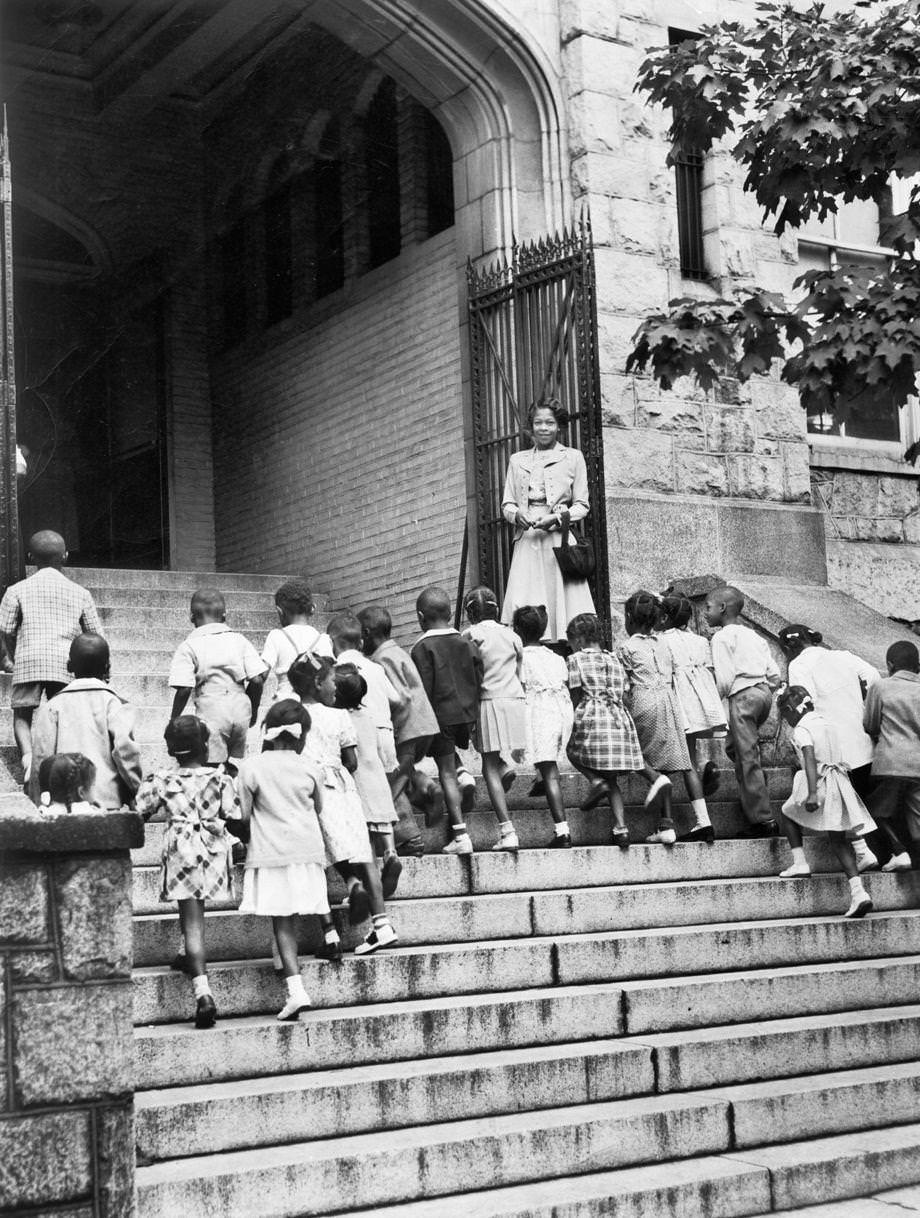
The school, at 26th and Leigh streets in Richmond, was previously the Springfield School, which taught white children. It had just been converted to a school for black youths, and more than 700 were enrolled on the first day. It was named for J. Andrew Bowler, the first pastor at Mount Olivet Baptist Church and organizer of a Church Hill school for black children in the 1880s. The building now houses the Bacon and Bowler Retirement Community.
#77 Richmond officials put up warning signs near the city limits on West Broad Street to limit speeding, which was a top traffic concern at the time, 1947.
#78 A passenger train pulled out of Broad Street Station in Richmond and headed to Washington, 1946. At the time, a potential labor strike was threatening service.
#79 Babies slept in the nursery at Brookfield, located on West Broad Street in Henrico County, 1946.
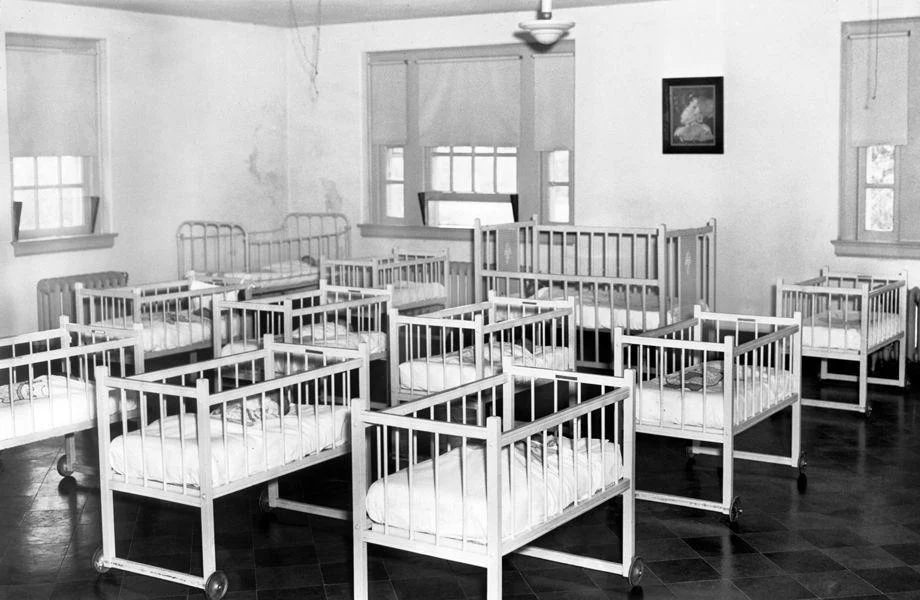
The home for unwed mothers was the successor to Spring Street Home in Richmond’s Oregon Hill area, which was established in 1874 by the Magdalen Association to help single women and their children. In the 1930s, the operation moved from Spring Street to Brookfield, and later to Brook Road in Henrico. The Brookfield area was redeveloped in the 1970s and was the site of the Hyatt House hotel.
#80 Workers lifted a car – temporarily – from the middle quarry at Bryan Park, 1942.
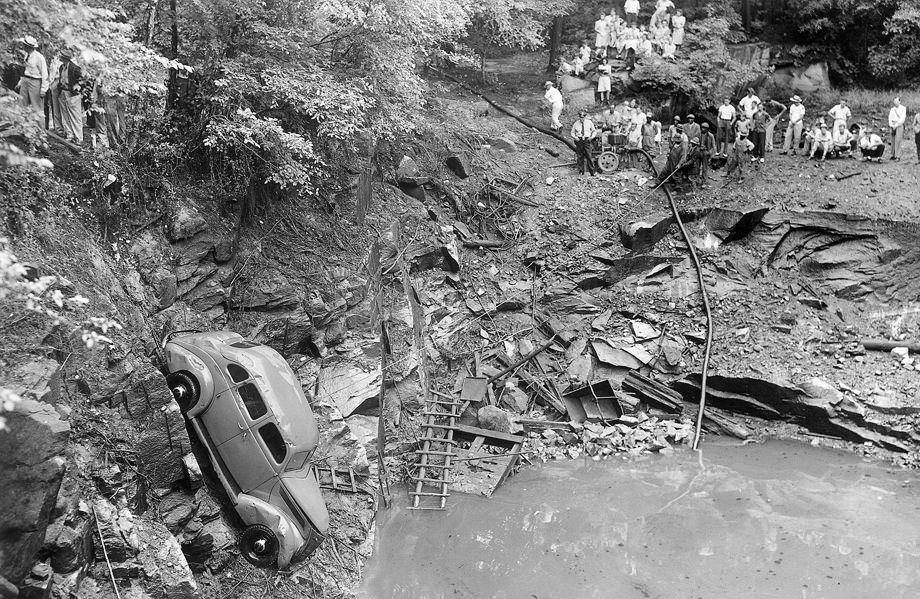
It had been stolen days earlier, and once it was pulled to the bank, Henrico County police confirmed that no one was in it. But halfway up the bank, shortly after this picture was taken, the chain broke and the car slipped back into the quarry – 32 feet of water had to be pumped out of the quarry before the car could be recovered.
#81 An Eastern Air Lines plane at Byrd Field, 1947.
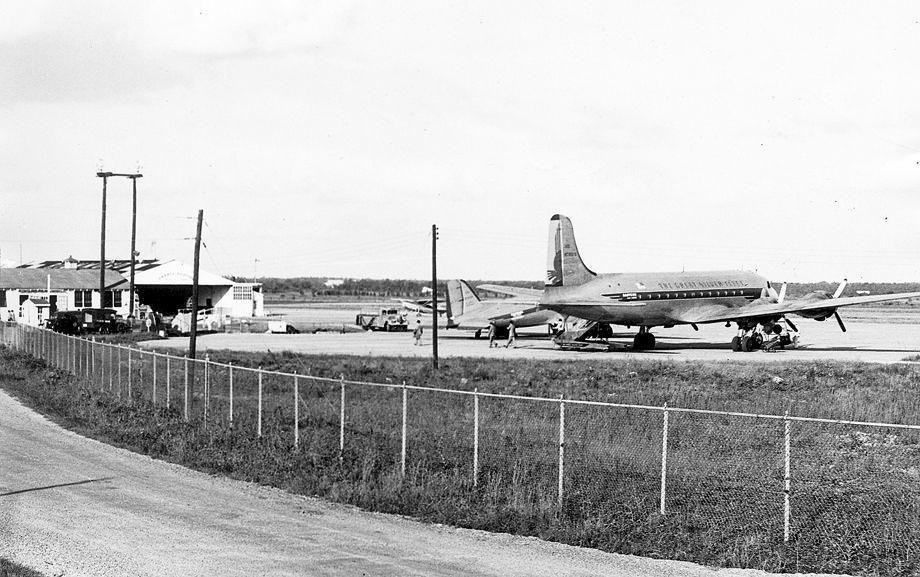
The city of Richmond held negotiations with the War Assets Administration for the return of the airport, which had been transformed into the Richmond Army Air Base during World War II. When the field was returned to the city, it was more than 850 acres larger than when the federal government took it over.
#82 A train pulled into Main Street Station in Richmond, 1946.
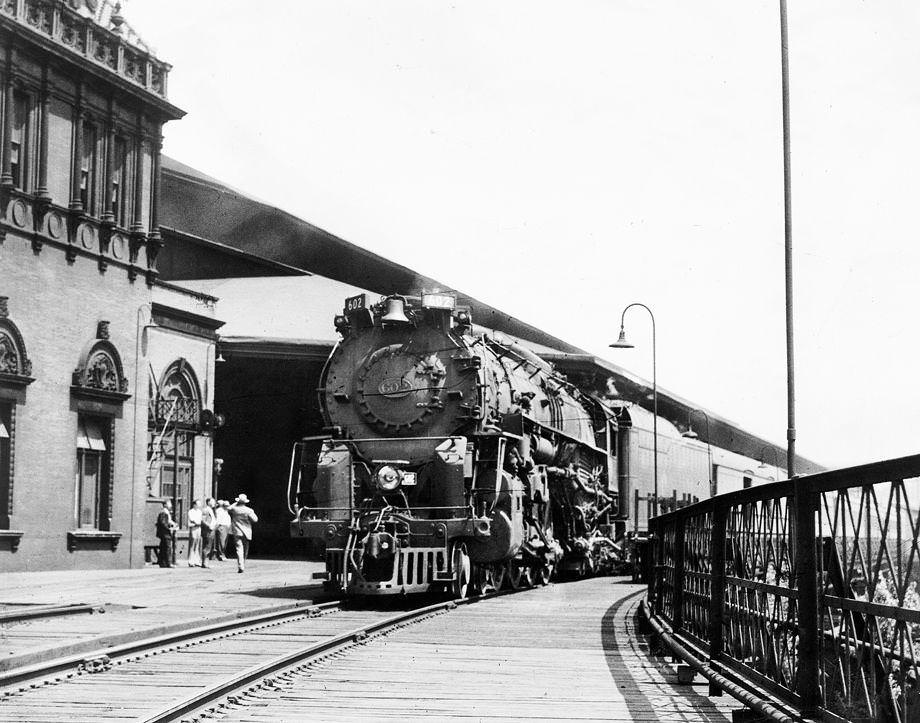
That afternoon marked the end of a crippling two-day national railroad strike, which had stranded passengers and cargo – local businesses were able to purchase some of the perishable foods as well as tropical fish. President Harry Truman had threatened an Army takeover of railroad facilities if the striking trainmen and engineers unions didn’t return to work.
#83 Soldiers from Camp Lee in Prince George County were positioned on the south end of the old Lee Bridge in Richmond just days after the Japanese attack on Pearl Harbor that brought the United States into World War II.
#84 Amid a nationwide gas shortage, Harry J. Donati (left) and Joseph G. Robben drove their horse-drawn carriage down 25th Street in Church Hill in Richmond, 1941.
#85 Trucks blocked Cary Street in the wholesale produce district while passenger cars waited to get through, 1947.
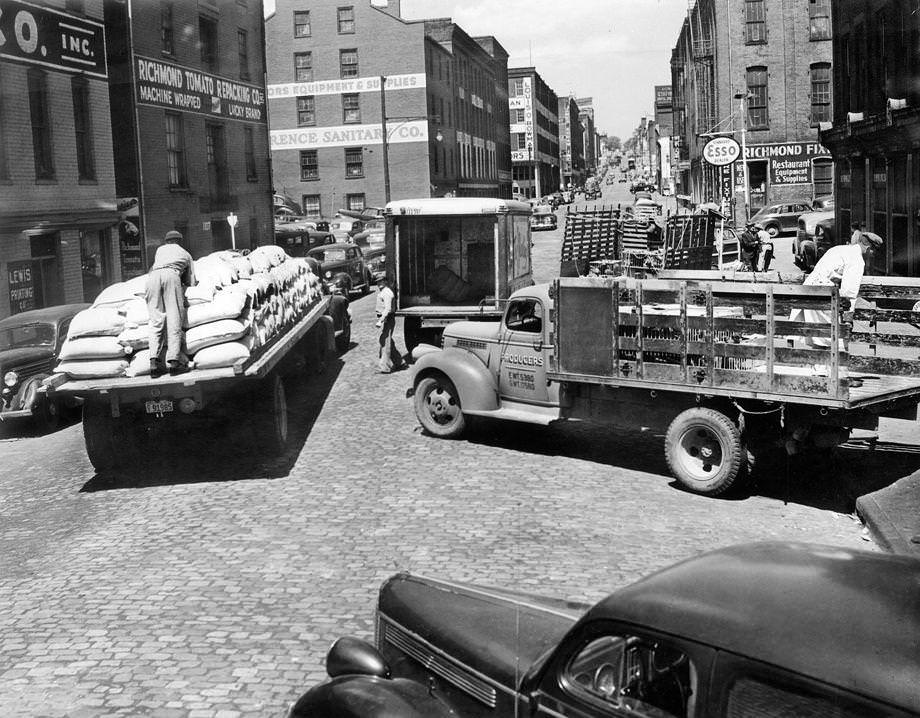
The Times-Dispatch ran a series analyzing Richmond’s traffic problems such as this, and reviewing a proposed expressway. Based on a survey completed by the Automotive Safety Foundation, the series indicated that the current infrastructure could not handle the predicted increase in traffic, and construction of the expressway was recommended.
#86 Billie MacIntire, a professional at the Cavalier Arena roller skating rink posed for a photo to promote her upcoming demonstration of a new routine, 1941.
#87 “The Soldier,” as many people called the patient of Central State Hospital near Petersburg, sat outside a sentry box he had built on the grounds, 1947.
#88 The Central Station Post Office on Second Street in downtown Richmond, whose size increased by a third after a remodeling several months earlier, 1946.
#89 Richmonders headed home from work, Thomas Jefferson High School students distributed literature for the Junior Chamber of Commerce promoting the change to a council-manager type of city government, 1947.
#90 British wartime leader Winston Churchill’s trip to America included an address to the General Assembly, 1946.
#91 A woman working in a tobacco factory, 1941.
#92 The Police Benevolent Association presented its sixth annual boxing show at City Stadium, headlined by Jimmy Webb, Johnny “Bandit” Romero, Georgie Abrams and Richmond’s Joey Spangler, 1941.
#93 Female fans wearing the red and white of Thomas Jefferson High School were part of a crowd of 17,000 who watched Teejay beat John Marshall High 6-0 in the Prep Classic at City Stadium in Richmond, 1946.
#94 Mrs. James Hicks of James City County and her daughter, Willie Mae, made a cornhusk doormat at home, 1949.
#95 Traffic moved through the intersection of Cowardin Avenue and Hull Street in South Richmond, 1948.
#96 The new Curles Neck Dairy plant at 1600 Roseneath Road in Richmond, 1947.
#97 A crowd estimated at 8,000 came from around the state to watch the Deep Run races at Curles Neck Farm in Henrico County. Escape 3d won the Deep Run Cup, the featured event, 1940.
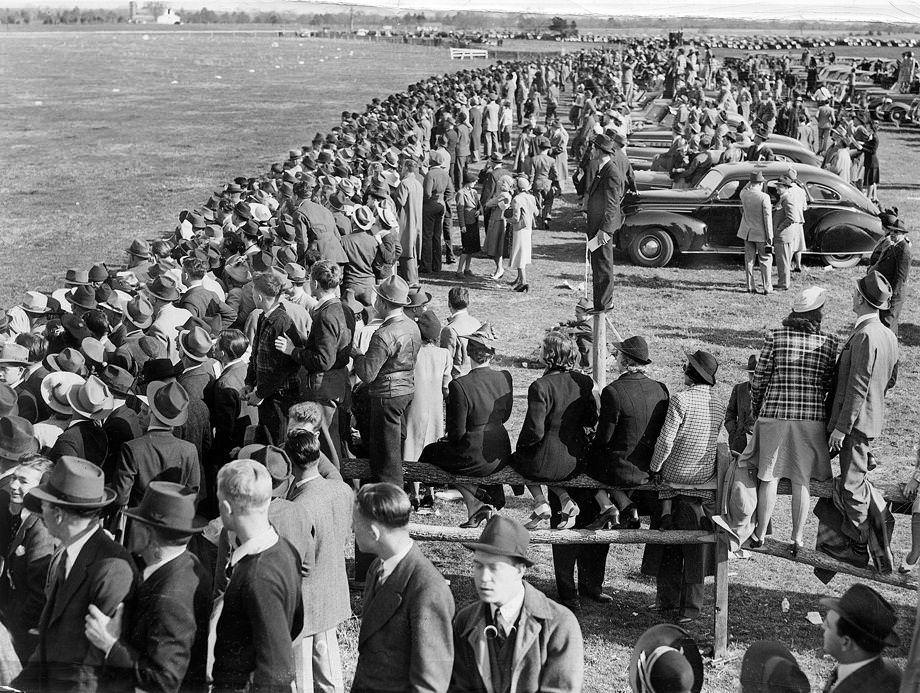
A group of movie stars and dignitaries including Cary Grant turned out to watch while taking a break from filming “The Howards of Virginia” in Colonial Williamsburg. Part of the big crowd, estimated at 8,000 spectators, is shown above. The picture shows the members' reserve section just to right of the grandstand. This event was held at Curles Neck Farm.
#98 The nearly 4,500-ton British steamer Markland was the first ship to dock at Richmond’s new Deep Water Terminal on the James River, 1940.
#99 The Defense Special No. 1 train stopped in Richmond at Broad Street Station, 1941.
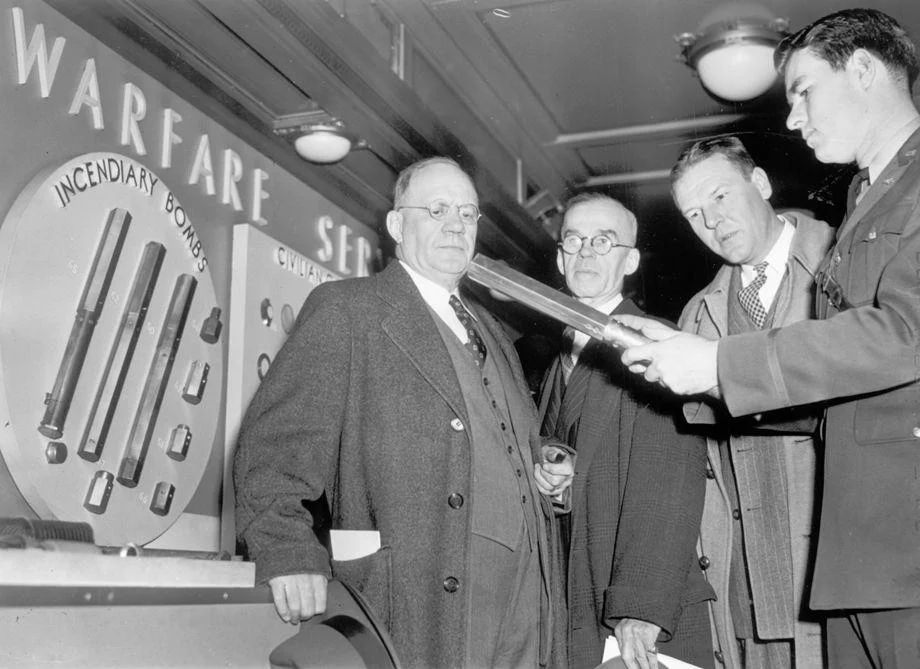
Nearly 800 local manufacturers were issued tickets to visit the eight-car train, which held an array of sample equipment that the government needed contractors to build for the war effort – such as guns, airplane and ship parts, field hospital equipment, chairs, saws and pipe fittings. The train staff interviewed and guided qualified manufacturers through the process to become a contractor.
#100 Heavy kraft paper, made from wood pulp, that was being converted into drinking cups at a Richmond factory, 1946.
#101 Scoop sniffed around the pet food aisle at a grocery store in Richmond’s West End, 1944.
#102 The future of the military draft was in question, and David Burruss, 19, of Norfolk, got lots of attention when he was thought to be the last man selected at the Richmond Armed Forces Induction Station.
#103 The outside restrooms at the Elba School in Richmond, 1947.
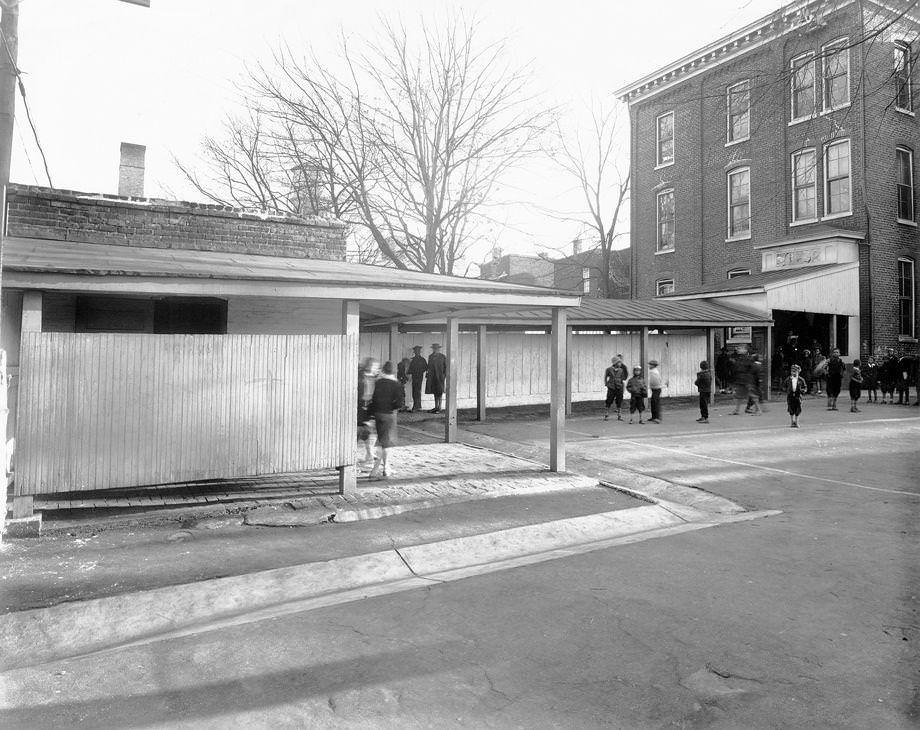
Opened in 1880 in a white neighborhood, the school on West Marshall Street was designated for black students in 1927. By 1939, the school was recommended for abandonment because of its poor condition and a lack of facilities, such as adequate interior restrooms. It was used until 1955 and later was torn down.
#104 An executive of Atlantic Life Insurance Co. posted a sign in the elevators at the office building at Main and Sixth streets in downtown Richmond, 1943.
#105 Mrs. Price looks on while Lucille, the mansion’s cook, mixes up something special in the kitchen, which has been completely renovated during the Price administration, 1942.
#106 Eastern Henrico County farmer J.B. Alvis drove his tractor through 70 acres of soybeans, 1949.
#107 William H. Haskins gazed over what was left of his Health Centre Inc. bowling alley at Hermitage Road and Meadow Street in Richmond after a fire, 1943.
#108 Rush hour crowd watches smoke pour from building at 14th and Main during fire, 1948.
#109 First and Merchants National Bank of Richmond, 1941
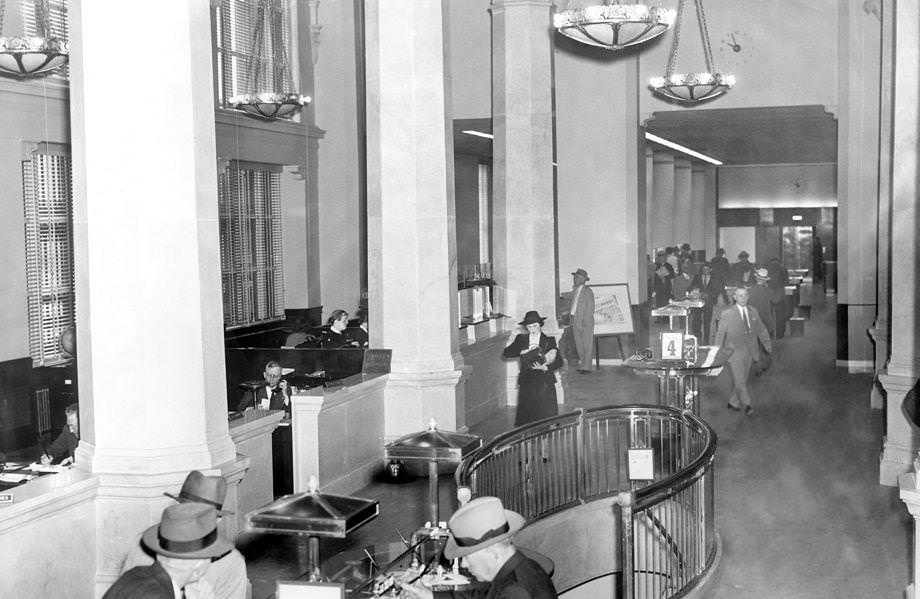
It was located at Ninth and Main Streets in downtown. The bank was in the process of adding the first drive-in tellers windows which would allow customers to drive thru for service on the Eighth Street side of the building. The bank hoped the system would alleviate downtown parking woes and quicken service for customers.
#110 David Singleton fished below the spillway at Birchin Lake in Nottoway County, 1948.
#111 Flooding from heavy rains in the Windsor Shades area of New Kent County washed out a Chesapeake & Ohio Railway bed, leaving unsupported rails spanning a chasm, 1948.
#112 Forest Lodge, completed in the early 1880s by Confederate Army scout John Cussons, 1946.
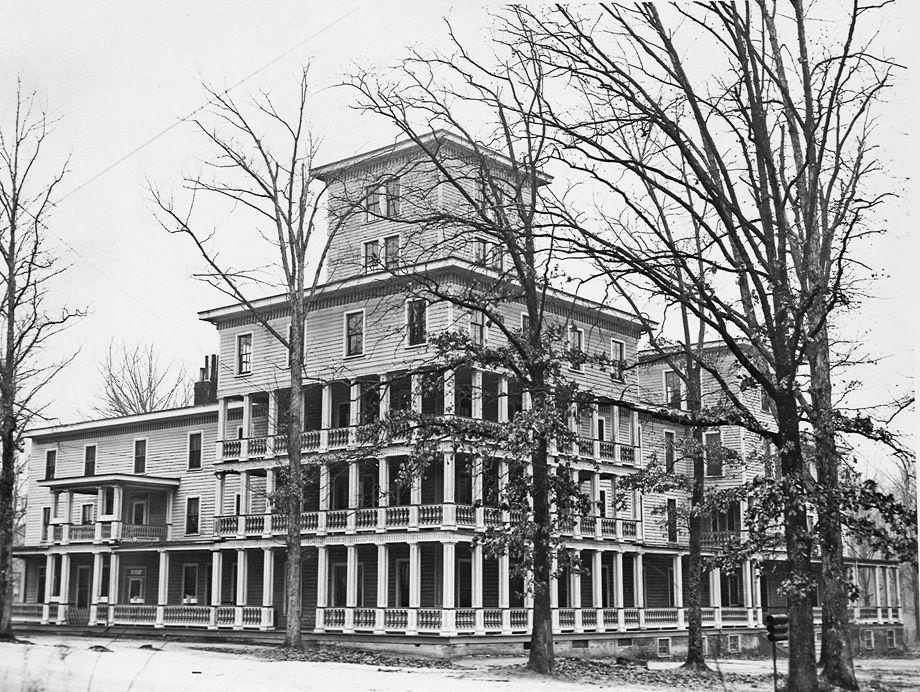
The six-story resort hotel stood on 1,000 acres in Glen Allen on Mountain Road and boasted more than 100 rooms. It never became the success that Cussons envisioned, and after changing hands and purposes several times, it was razed in 1992. The cupola was saved and can be seen at Mountain Road and Old Washington Highway.
#113 The dance floor was full at the newly opened Service Club at Camp Lee in Prince George County, 1941.
#114 The Freedom Train stopped in Richmond at Allen Avenue and West Broad Street, 1947.
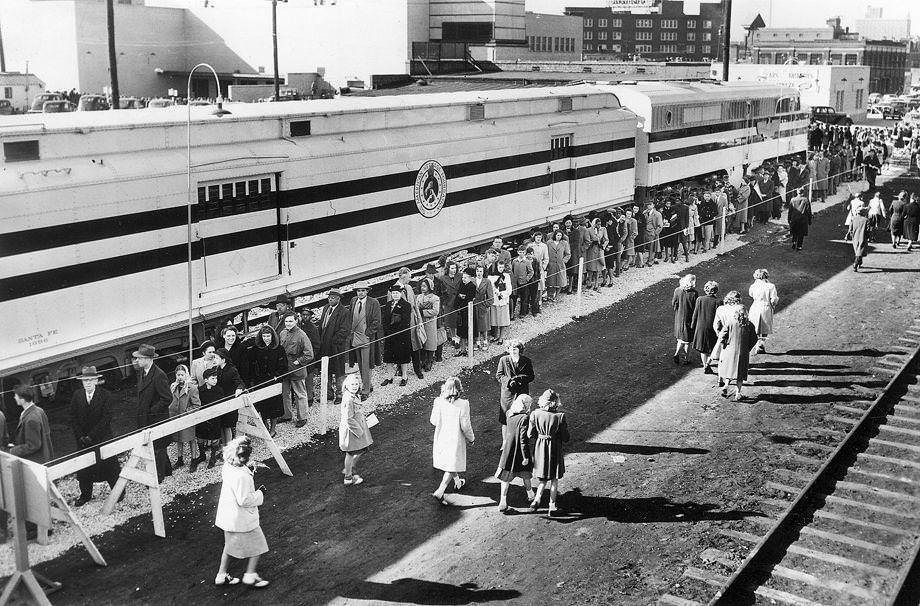
People waited in blocks-long lines to tour exhibits of historical artifacts that included the original Constitution, Declaration of Independence, Truman Doctrine and Bill of Rights. The Freedom Train, which traveled the country between 1947 and 1949, was the first train to visit each of the 48 states (Alaska and Hawaii had not yet gained statehood). Virginians in blocks-long line await turn to tour exhibits aboard Freedom Train at Allen Avenue and Broad Street.
#115 A boxcar from France’s “Merci Train,” loaded with gifts for Virginians, arrived in Richmond, 1949.
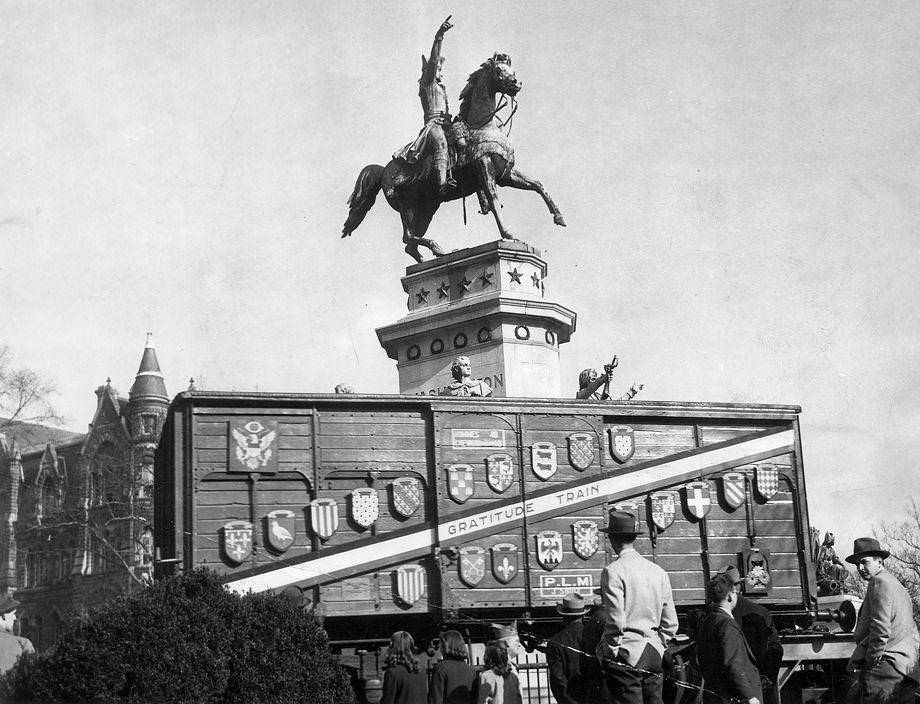
The gifts – including dolls, lace, antique furniture, books, statues and paintings -- were an expression of thanks for the American "Friendship Train," which distributed food to needy Europeans in 1947. Richmonders filled two of the 12 boxcars of supplies sent by Virginia. After ceremonies at the state Capitol, the French boxcar spent a week on display downtown.
#116 Gas shortages prompted the Retailers for Victory campaign to stage Richmond’s first “gasless parade” to promote the sale of war stamps, which would fund construction of the aircraft carrier Shangri-La, 1943.
#117 Children took a homemade cart for a spin along North 19th Street in Richmond, 1941.
#118 The sound of the bell summoned students to George Wythe School in Richmond on the first day of class, 1945.
#119 Students at the Grace Arents School celebrated the end of the school year, 1943.
#120 Sixth and Grace Streets looking west at 5:30pm, 1940s
#121 Shoppers ducked into doorways or under awnings on Grace Street between Fourth and Fifth streets in downtown Richmond, 1949.
#122 Grace Street sidewalk being cleared of today’s ‘black snow.’ Soot and grime. Air pollution.
#123 A crowd gathered outside a Richmond grocery store on a day that hard-to-get items were available, 1946.
#124 Members of the Henrico Red Cross Motor Corps participated in a test drill in uniform, 1942.
#125 The Highland Springs Volunteer Fire Department, 1940s.
#126 The Holden Rhodes House, also known as the old Stone House, located at Forest Hill Park in South Richmond, 1942.
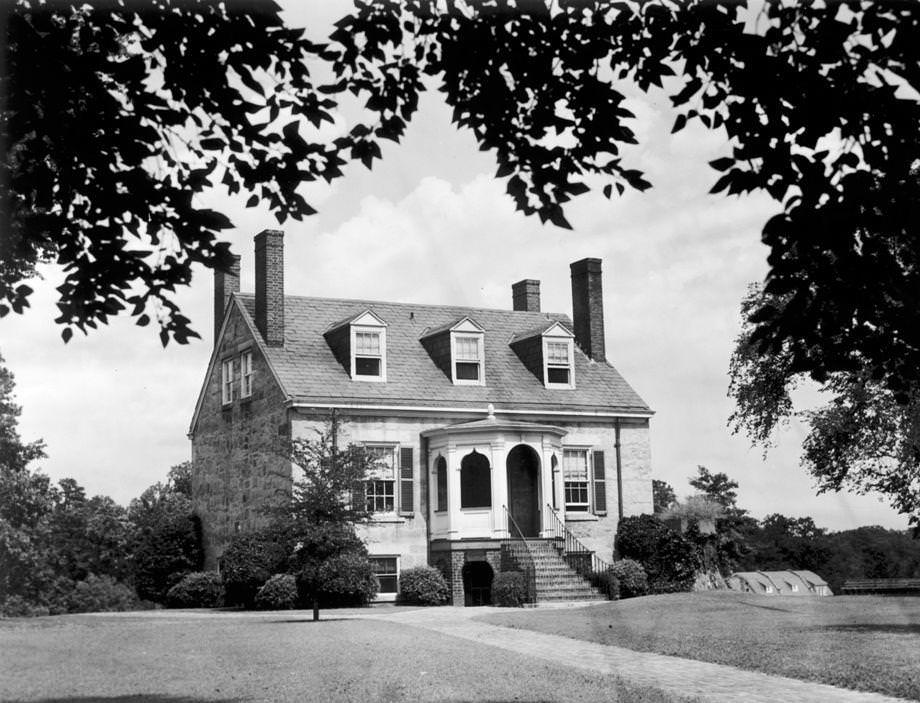
The house, named for the noted lawyer and businessman who built it, dates to around 1840 and was made of granite from the quarries on the original estate. It was remodeled in the 1930s and for a time was home to a library. The house, which is on the National Register of Historic Places, now serves as an event venue.
#127 Sportsmen from Virginia and surrounding states brough their best hounds last Monday to Baskerville, near South Hill, for the twenty-sixth annual field trials of the Virginia Fox Hunters Association, 1948.
#128 Workmen of the Virginia Electric and Power Company repaired damage from sleet and ice at Brook Road and Westwood Avenue, 1943.
#129 Ice and snow created a winter wonderland scene on the James River in Richmond, 1948.
#130 Richmond city employees hurriedly made preparations for a James River flood by filling and loading sandbags, 1944.
#131 Kensington Avenue apartments, 1947
#132 Richmond lawyer Robert R. Merhige Jr. worked with his secretary, Mrs. Robert Wagner, to conduct inventory at a laundry on North Addison Street for which he had been appointed receiver, 1945.
#133 Eldridge E. Scales of Maggie Walker High School conducted an elementary school band rehearsal for the Richmond public schools’ annual spring music festival, “One World Through Music.”
#134 The Virginia Department of Highways debuted its newest piece of equipment on U.S. Route 1 between Richmond and Ashland, 1945.
#135 Carl A. Throckmorton (left) showed Richmond Postmaster Fergus McRee one of the 100 new mailboxes that would be installed at city street corners, 1949.
#136 Residents of the Lakeside area took down their Rural Free Delivery mailboxes, which had given way to new, smaller metal boxes on porches, 1942.
#137 Morton Marks 1217 E Main St. The block at left is between 13 & 14 on East Main St & looking East on Main. Fire, 1943.
#138 Traffic along Main Street downtown, 1946.
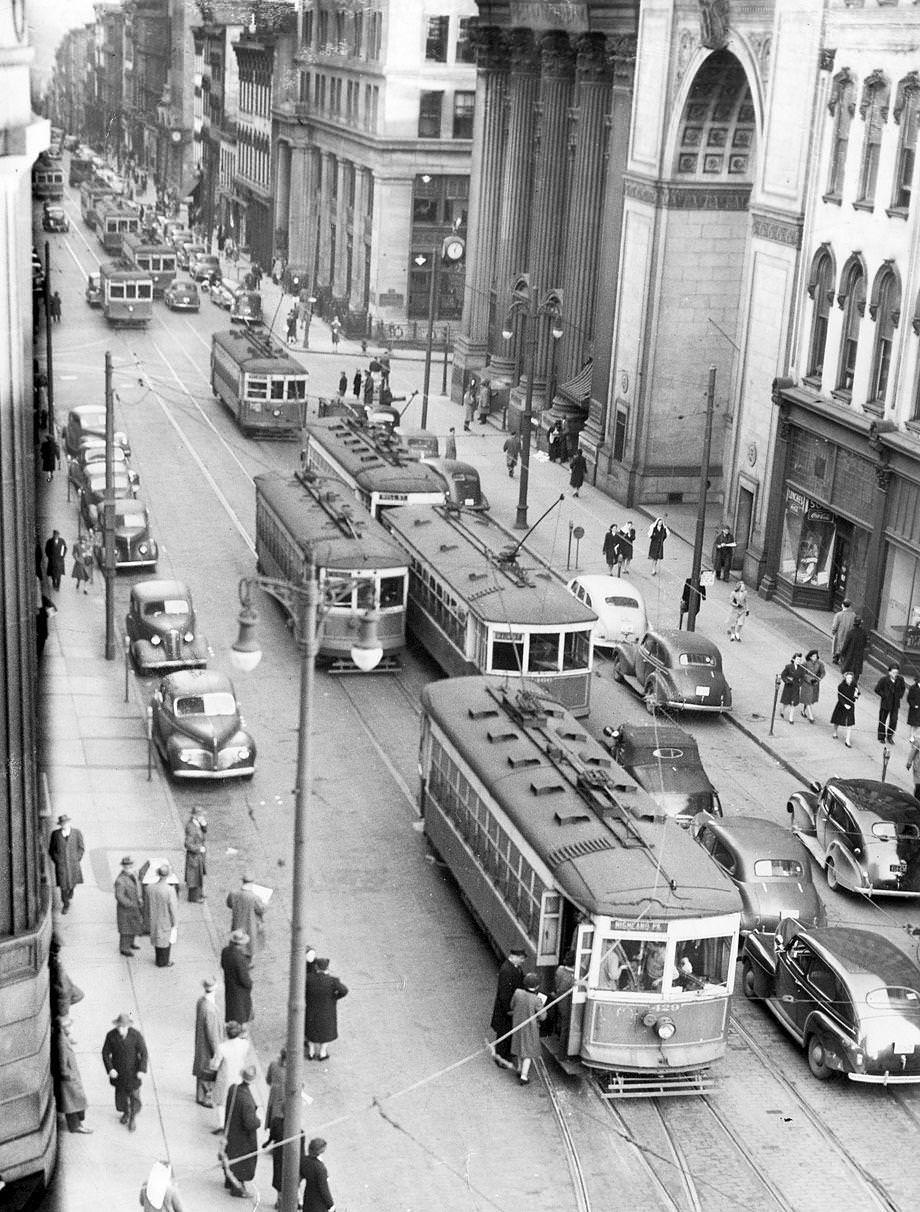
That month, a New York consultant selected by the Richmond Chamber of Commerce made a series of recommendations to improve local transit, including prohibiting parking along Main Street at busy times. As shown here, when cars were parked along the curb, drivers had to putter behind the glut of streetcars because there was no room to pass.
#139 The Virginia Fire & Marine Insurance Co. building at 1015 Main St. downtown, 1947.
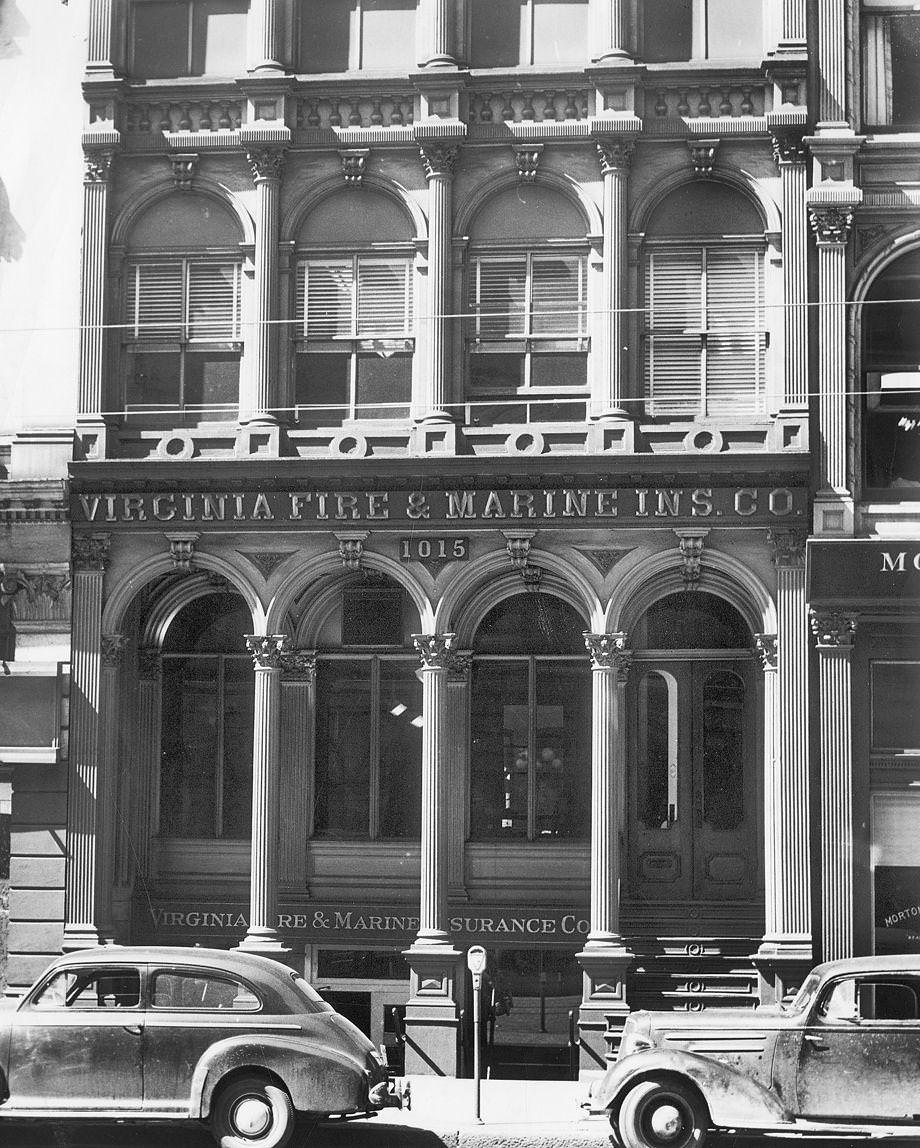
The company was at this location between 1861 and 1953, though the first building burned with the rest of Richmond in 1865. By 1869, the current structure, also known as the Branch Building, was completed. It is on the National Register of Historic Places and is considered one of Richmond’s finest iron-fronted buildings.
#140 The Mayo Bridge in downtown Richmond underwent a two-month repaving project, 1941.
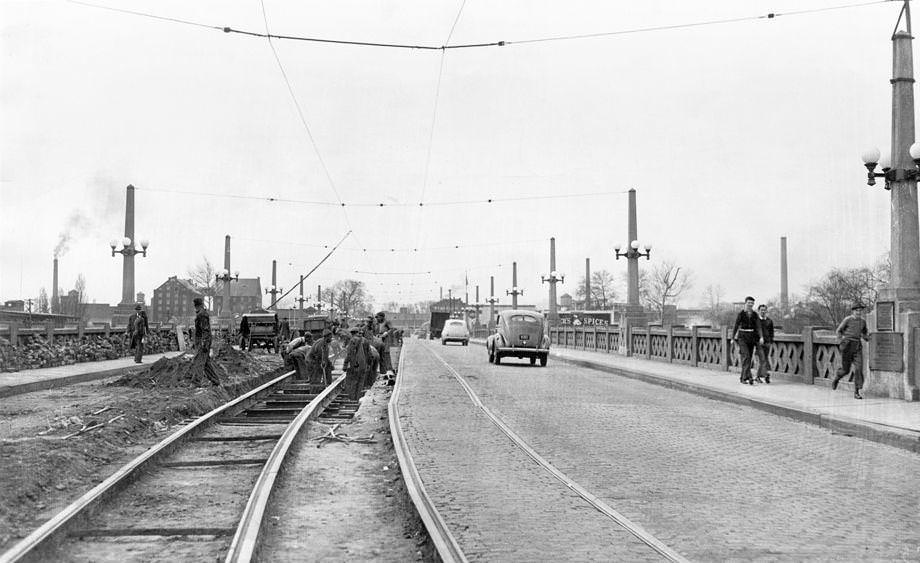
Tolls on the Lee Bridge were lifted for cars with city license plates to ease the inconvenience during the work. The Mayo Bridge, also known as the 14th Street Bridge, is where the original structure connected Richmond and Manchester in the late 1700s. TONING COMPLETE -- Repaving starts on Mayo Bridge. This picture shows workmen repaving the Mayo Bridge. Southbound traffic can be seen over the span. Northbound traffic has been halted during the repairs. Fourteenth Street Bridge.
#141 Fishing enthusiasts came out to enjoy the bright sunshine on the Mayo Bridge in downtown Richmond, 1946. High temperatures matched the 1925 record of 90 degrees.
#142 The newly installed “Three Bears” statue in front of the Medical College of Virginia Hospital at the corner of 12th and Broad streets in Richmond, 1941.
#143 The historic Richmond Grays marched in a Memorial Day parade en route to Hollywood Cemetery in Richmond, 1946.
#144 Richmond was the site of Virginia’s largest military parade since World War II began, with more than 6,000 uniformed men and women marching along Monument Avenue and Franklin, Belvidere and Broad streets, 1946.
#145 Ed Brooking, the 68-year-old proprietor of the Cedar Point Grist Mill in Goochland County, loaded corn into a funnel to be ground by the millstones, 1947.
#146 Robert Price stood beside a horse and wagon he would soon be driving for the Miller & Rhoads department store in Richmond, 1942.
#147 Mrs. Tazewell Perrow served soup to children from Bon Air School from the first mobile canteen for Chesterfield County, 1942.
#148 Mrs. J. Scott Parrish Jr., Gordon Sheain and Joe Brown examined a mobile kitchen that was part of the Red Cross Canteen Corps in Richmond, 1943.
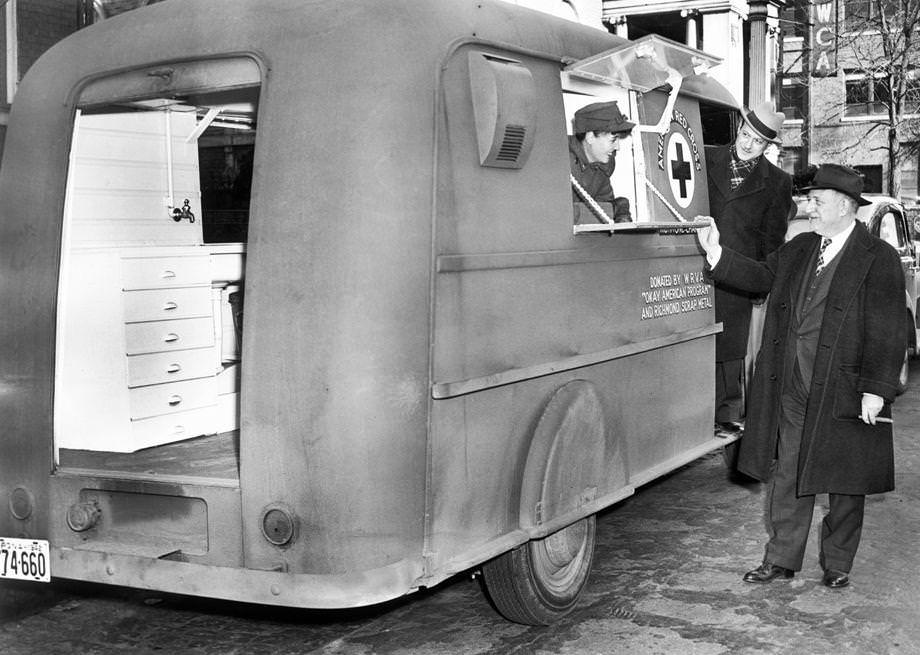
Red Cross members would use the canteens to feed soldiers; they practiced by feeding large groups at Richmond-area churches, parks and events. The $1,795 canteen was made possible through proceeds from a city scrap metal drive directed by Sheain and donations from WRVA listeners of Brown’s “Okay America” program. Parrish led the Red Cross canteen committee.
#149 Richmond police considered the issue of cars parking next to the grassy medians of Monument Avenue, 1947.
#150 The newly remodeled interior of Monument Methodist Church in Richmond, 1940.
#151 Richmond Mayor W. Stirling King threw out the first pitch at the Richmond Colts home opener at Mooers Field, 1949.
#152 Team owner Eddie Mooers standing outside his baseball park, 1949.
#153 Mooers Field, with grass throughout the infield but dirt beyond, 1946.
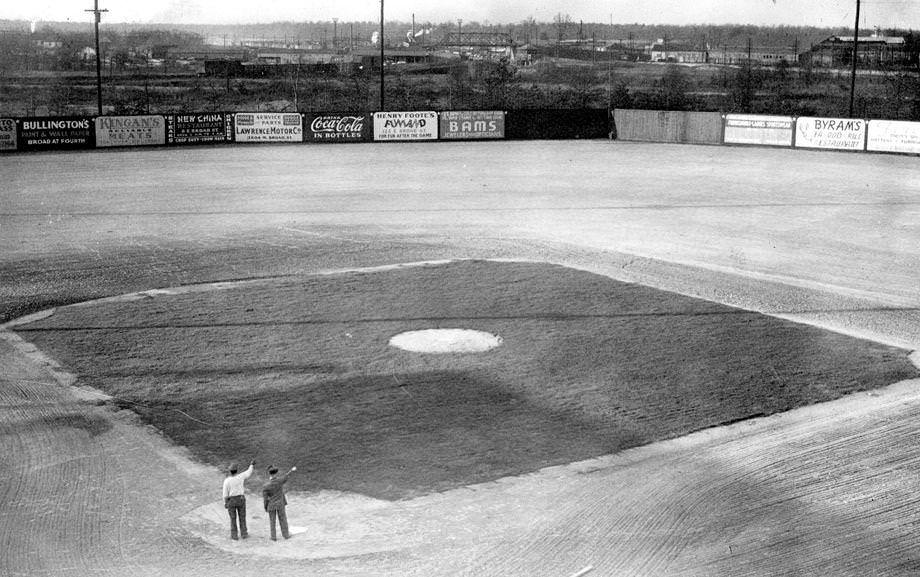
Located at Norfolk and Roseneath streets, Mooers Field hosted the Richmond Colts from 1942 through 1953. Eddie Mooers then converted the field into a stock car racetrack for a time before it was sold and dismantled in the late 1950s. 3-7-1946: 'And the green grass grows all around' - the infield. But the Mooers Field outfield is mighty barren these days.
#154 Families and city officials attended a program at the Mosque pool in Richmond, which had just opened for the season, 1948.
#155 James Q. Jones took his male donkey on a two-week breeding circuit through Goochland, Louisa and Hanover counties. Jones “bugled his brains out” on his Boy Scout bugle to alert nearby horse owners and members of the League for Planned Mule Parenthood of his arrival, 1946.
#156 The old-fashioned way the Pamunkey Indians in King William County cured the shad they caught, 1941.
#157 A woman tried to pick up a nickel from the sidewalk near Ninth and Broad streets in downtown Richmond – but it was a long-lasting prank, 1948.
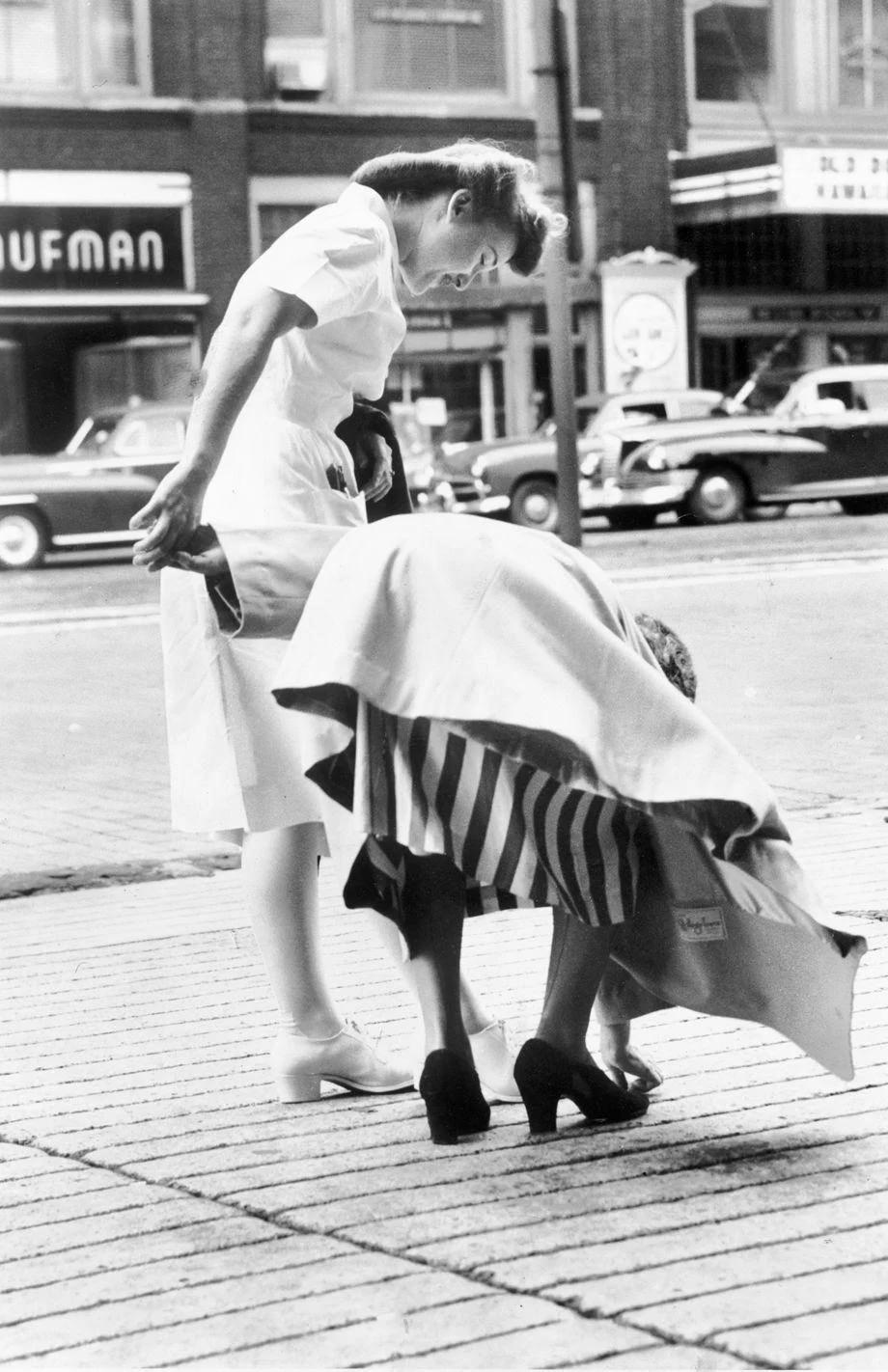
For April Fools’ Day months earlier, the firefighters at Engine Co. 3 had embedded the coin so no one could pick it up. They had been pulling a coin prank for eight or nine years, and usually someone would eventually pry it loose. For the nickel, some days could see nearly 100 people try to claim the coin.
#158 Mrs. Frank Sloan of the Red Cross took dictation from soldier Robert Parks in the convalescent ward at the Camp Lee Hospital in Prince George County, 1941.
#159 A portable drilling rig was set up in an oil field in Lee County in Southwest Virginia, 1947.
#160 The old Manchester water works at the foot of 22nd Street in South Richmond was within months of being dismantled, 1948.
#161 Frances Butler (right) and Mrs. John Gerlach were first- and second-place winners, respectively, of an “old-fashioned swimsuit” contest during an outing for Thalhimers employees at Swift Creek in Chesterfield County, 1941.
#162 An organ grinder and his monkey entertained a young girl at the State Fair, held at the Atlantic Rural Exposition fairgrounds, 1949.
#163 Pamunkey Indians returning with a catch of several dozen shad to the tribe’s King William County reservation, 1941.
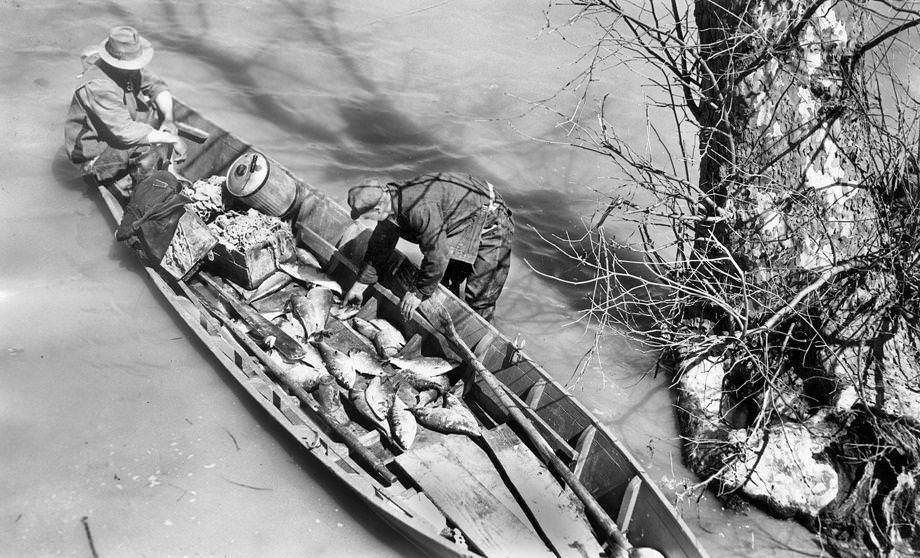
At the time, shad was the most valuable commercial food fish in Virginia waters. Sometimes as many as 1,000 fish were caught by the tribe in a 24-hour period.202 About 20,000 pounds of paper was collected in a drive at Dumbarton Elementary School in Henrico County, with Edward O'Brien (from left), Leroy Foster and Thomas Riggan in charge, 1947. The paper was sold, with proceeds used to purchase library books and other materials for students. The previous year, paper-drive money purchased a mimeographing machine for teacher use.
#164
#165 Richmond staged its first parade since the United States entered World War II
#166 East Main Street in downtown Richmond between First and Second streets reflected a parking ban that aimed to speed streetcar service, 1942.
#167 Thalhimers was allowing nighttime use of part of this parking area, at Seventh and East Grace streets downtown, as the Parking Lot Canteen, a place for service members to spend their evenings dancing under the stars, 1943.
#168 Henrico County police seized 20 pinball machines and made multiple arrests as part of a countywide raid, 1946.
#169 A power line on Brook Road was a tangled mess of wires after a lightning strike during a storm, 1949.
#170 Dot Perkins led a dance class in “the hut” at the Powhatan Hill playground in Richmond.
#171 Richmond’s Baths – The city keeps a close watch on the Grace Arents’ baths on Oregon Hill, which cost $4,500 yearly to operate, 1949.
#172 The Quiz Kids learned about railroading from RF&P engineer C.W. Shackleford (rear) during their visit to Richmond to help sell war bonds during World War II, 1943.
#173 Richmond midget car driver Cary Williams (in white T-shirt) and mechanic Charles Nigro pushed out the new Ford-Kurtiscraft car, which Nigro built, in preparation for racing at Richmond Stadium Speedway, 1947.
#174 The Richmond News Leader published a photo essay titled “Working … on the railroad,” which featured laborers on the Chesapeake & Ohio Railway, 1940.
#175 E.W. Saunders, a clerk at R.L. Christian & Co. in downtown Richmond, showed Mrs. L.E. Barber how to use ration tokens, 1944.
#176 A. Edward Campbell, state campaign manager for the United Service Organization, stood beside his new car, 1942.
#177 Mrs. St. George Bryan and Mrs. Lawrence Price helped pack more than 1,000 sweaters, socks, afghans and other items knitted by Richmond volunteers, which were being sent to the Red Cross “Mercy Ship” that sailed in June to deliver war relief to Europeans.
#178 Richmond women participated in a Red Cross swimming program to practice personal safety, rescue and resuscitation methods, 1943.
#179 Teenagers visited the newly reopened Main Street Station Dining Room in Richmond, which was closed for a month to allow for remodeling required by the city, 1943.
#180 The restaurant at a Peoples Drug Store in Richmond was bustling, 1943.
#181 A Richmond Colts batter headed to first base while a teammate scored in a victory over the Norfolk Tars in a Piedmont League game at Tate Field, which was on Mayo Island in Richmond, 1940.
#182 Smoldering embers and charred, jagged walls were all that remained of the Dunlop Mills in South Richmond, 1949.
#183 Guard Herbert Barr fed the elk at the Army’s Richmond Quartermaster Depot at Bellwood in Chesterfield County, 1946.
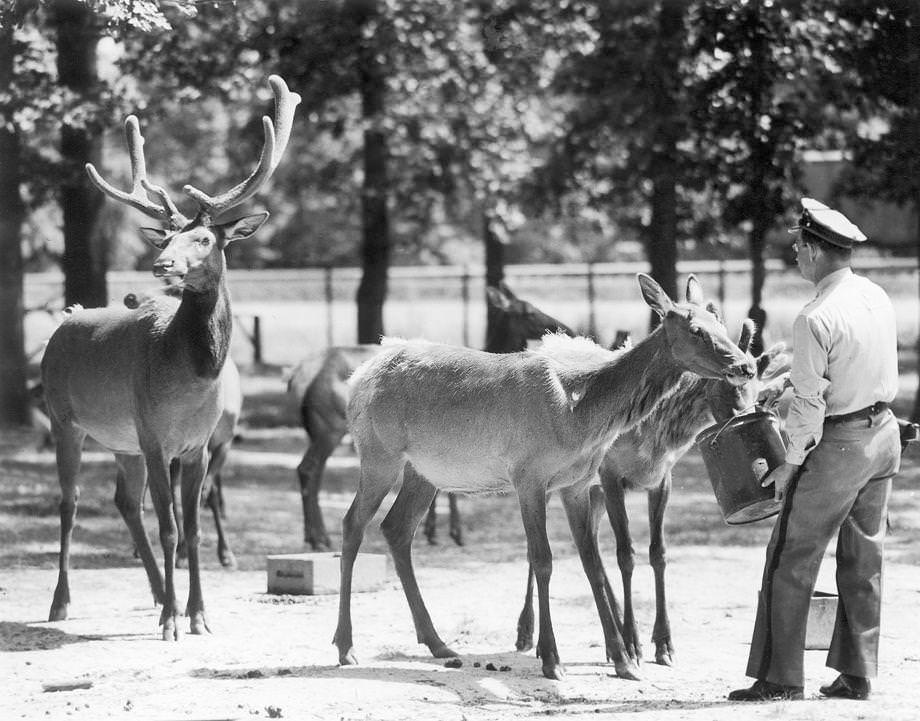
The land was purchased by James Bellwood in 1877, and he brought in a pair of elk from his native Canada to feel more at home. By 1941, when the Army purchased the land from Bellwood’s sons, there were 11 elk, and the sons were more concerned with the welfare of the elk than the transfer of the land. The Army agreed to take care of the elk and continues to do so to this day. The Army's elk brigade - and they can't be discharged. Herbert R. Barr, guard at the Richmond General Depot, feeds his charges.
#184 The dedication ceremony was held for Richmond’s new deepwater terminal, 1940.
#185 Robert E. Lee Camp Confederate Soldiers’ Home, 1941
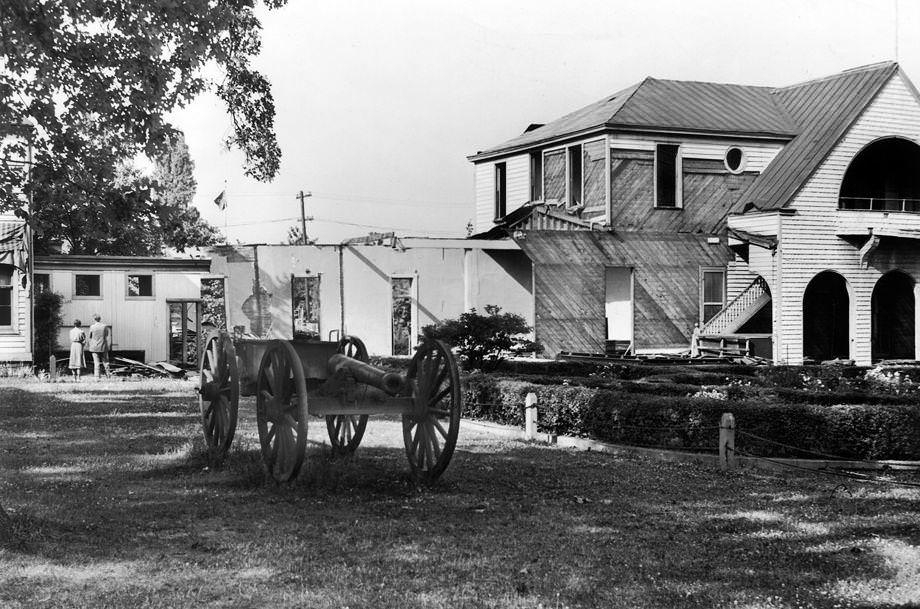
The Robert E. Lee Camp Confederate Soldiers’ Home was closed after the last resident died. This was the scene when demolition of the buildings began, with one of the cannons visible at the facility at the corner of Grove Avenue and the Boulevard in Richmond. At one time there were at least eight cannons, and today one remains outside the former chapel, across from the Virginia Museum of Fine Arts.
#186 Erma Castillo Najera, daughter of the Mexican ambassador to the United States, was the queen of the Rockingham National Turkey Festival in Harrisonburg, 1940.
#187 Richmond teens put on their roller skates at the Cavalier Arena with some help from city recreation department employee Jane Hemby, 1948.
#188 Richmond teens put on their roller skates at the Cavalier Arena with some help from city recreation department employee Jane Hemby, 1948.
#189 Manpower and a cart were a means of transporting new books to the Rosa D. Bowser Branch of the Richmond library during the gas-rationing days of World War II, 1942.
#190 Writer Emma Speed Sampson worked at her desk in her Richmond home, 1942.
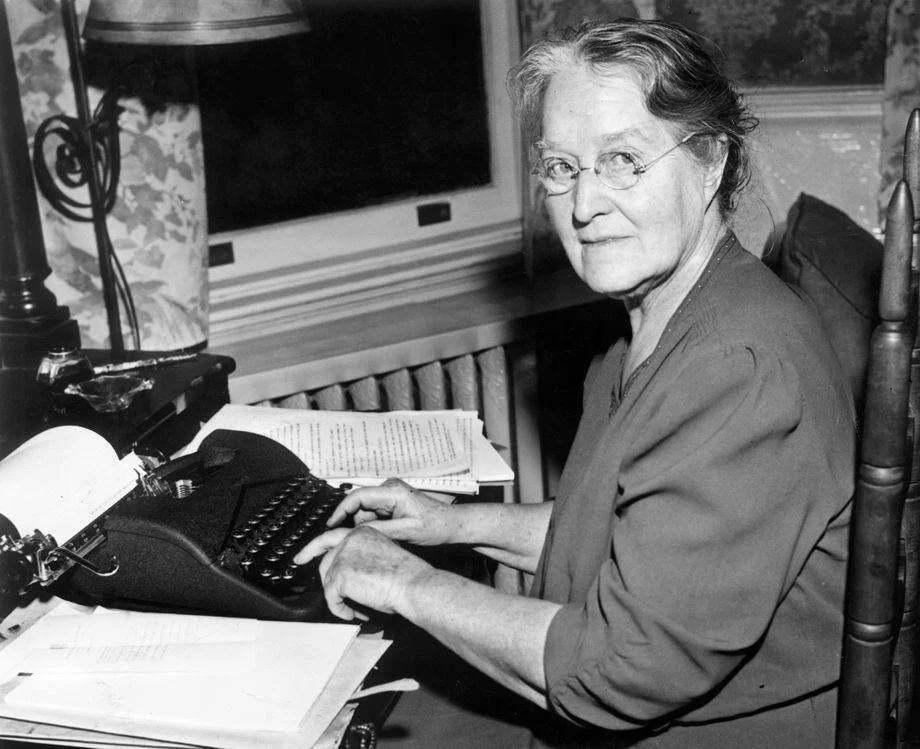
Sampson’s career as a well-known writer began later in life, at age 45. Her work included continuing several book series, including “Miss Minerva,” “Molly Brown,” and the Bluebird Books (“Mary Louise”) line that originated with L. Frank Baum under a pseudonym. She even wrote features for the Richmond Times-Dispatch for several years.
#191 As the school year started, Dick Harvey gave a playful tug to Sue Gallegher’s pigtails, 1948.
#192 Virginia newspaper publishers sponsored a three-week scrap metal drive to aid the war effort, 1942.
#193 Richmond firefighters (from left) Charles Donnini, I.A. Butler and W.C. Gilman helped collect aluminum from Richmonders, 1941.
#194 A new sign indicated the nearby Patrick Henry School along Semmes Avenue approaching Forest Hill Avenue in South Richmond, 1949.
#195 Sergeant Jack Blizzard, 1941
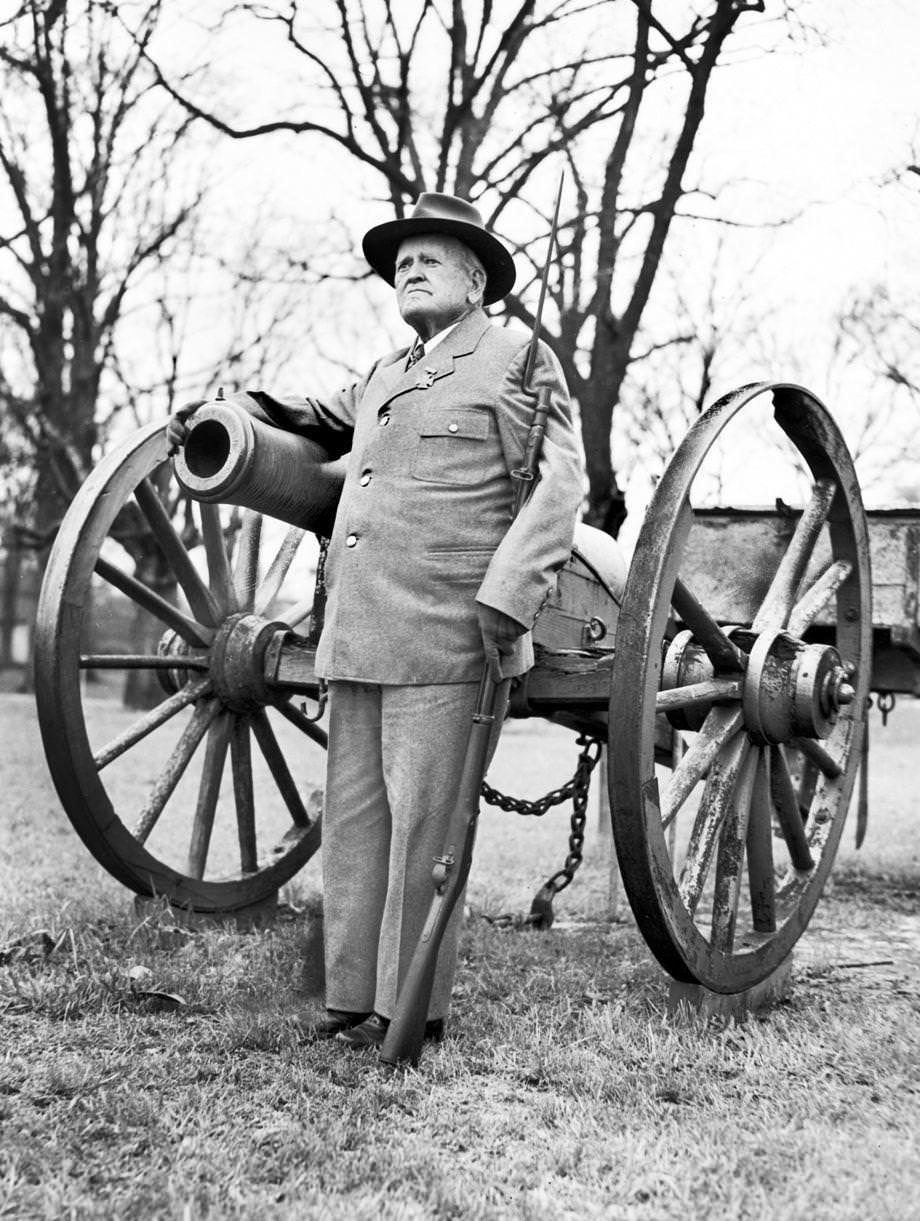
“Sergeant Jack” Blizzard at the Robert E. Lee Camp Confederate Soldiers’ Home in Richmond. Blizzard, who served as courier for Gen. Thomas “Stonewall” Jackson during the Civil War, was its last resident. After he died in early 1941, the home was closed, and the land at the corner of Grove Avenue and the Boulevard reverted to the state. One of the home’s cannons remains outside the former chapel, across from the Virginia Museum of Fine Arts.
#196 Timothy Byrum, lay pastor of Seven Pines Baptist Church, purchased a chapel on the Richmond Army Air Base from the War Assets Administration for $750, 1947.
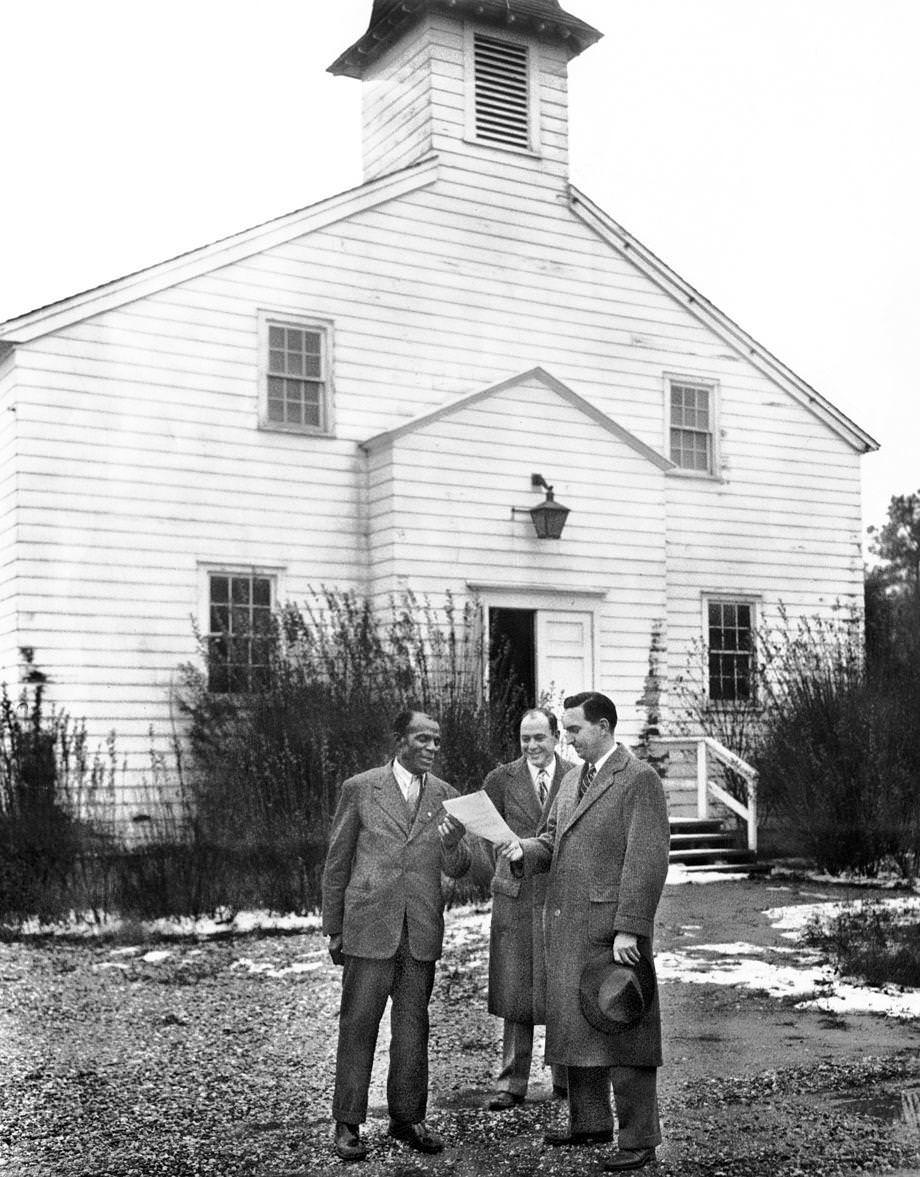
The church, in existence since 1890, lost its chapel in 1940 when the government took it under eminent domain for expansion of the base. The new chapel was to be moved to a site east of Sandston on Highway 60 where the congregation had been worshipping through the World War II period.
#197 85-year-old B.W. Partee (seated), caretaker at Camp Shawondasee in Chesterfield County for 26 years, was ready to retire, 1947.
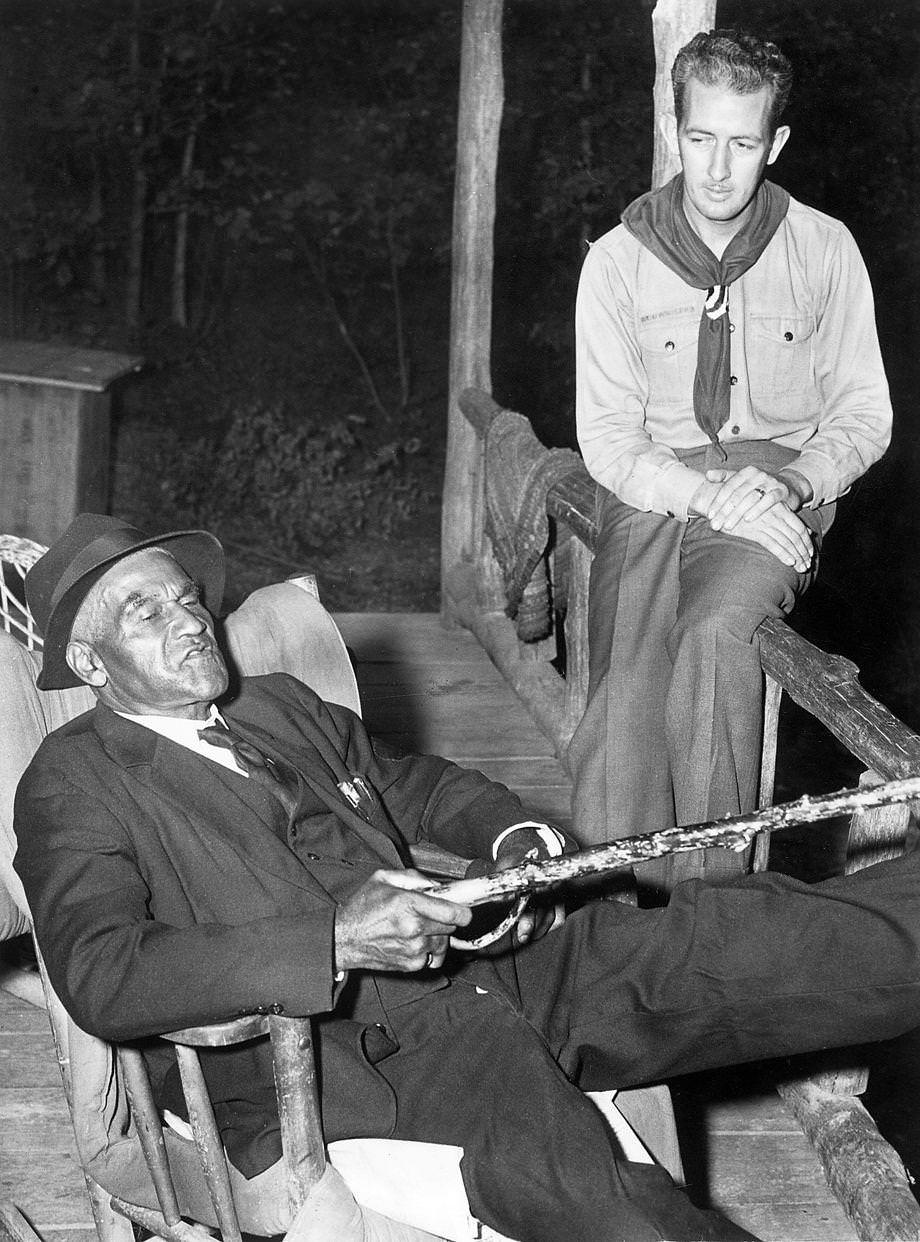
He was known as a storyteller, and here, he entertained E.G. McDowell, field executive of the Richmond Boy Scouts Council. Shawondasee closed in 1965 after more than 50 years serving Scouts in the region. The next year, the YMCA purchased the land, and its Camp Thunderbird still operates there.
#198 Boy Scouts enjoying the lake at Camp Shawondasee in Chesterfield County, 1948.
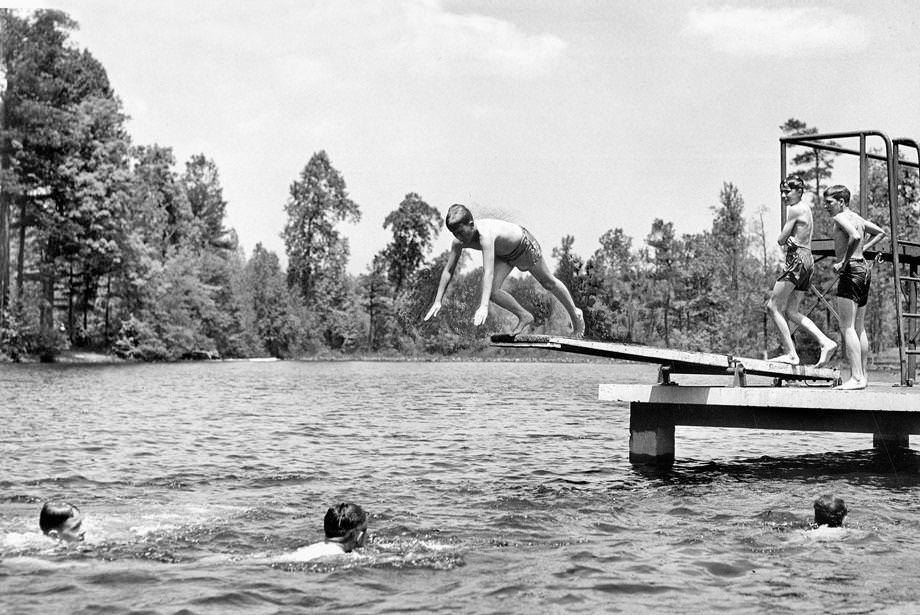
In May 1965, the camp shut its doors after more than 50 years serving Scouts in the region. The urbanization of Chesterfield around it, limited drinking water and a lake that didn’t hold up to a whole summer of campers led the Scouts to find a new location in Goochland County. The next year, the YMCA purchased the land, and its Camp Thunderbird still operates there today.
#199 Shoppers waited outside a Hofheimer’s shoe store on East Broad Street in downtown Richmond, eager to use their No. 17 ration coupon before it expired, 1943.
#200 Aaron Hyman repaired a shoe in his Richmond store. With wartime shoe rationing, cobblers were swamped with business for repairs, 1943.
#201 3,000 Shriners staged a parade downtown as part of the 60th anniversary celebration for Richmond’s ACCA Temple, 1946.
#202 Traffic jam at 6th street market, looking south from Marshall St., 1946
#203 The Buyer’s Resistance Group, mostly made up of housewives, had been organizing a boycott of local meat markets, such as this one at the Sixth Street Market in Richmond, to attempt to bring down prices, 1948.
#204 The old Sixth Street Market in downtown Richmond, 1948.
#205 Beverly Horsley, a Miller & Rhoads fashion model, choose vegetables from a lavish display at the Sixth Street Market as part of Style Marches On, a weeklong celebration of new fall fashion in the downtown Richmond retail district, 1948.
#206 The exterior of the Sixth Street Market’s meat building, built in the mid-1800s.
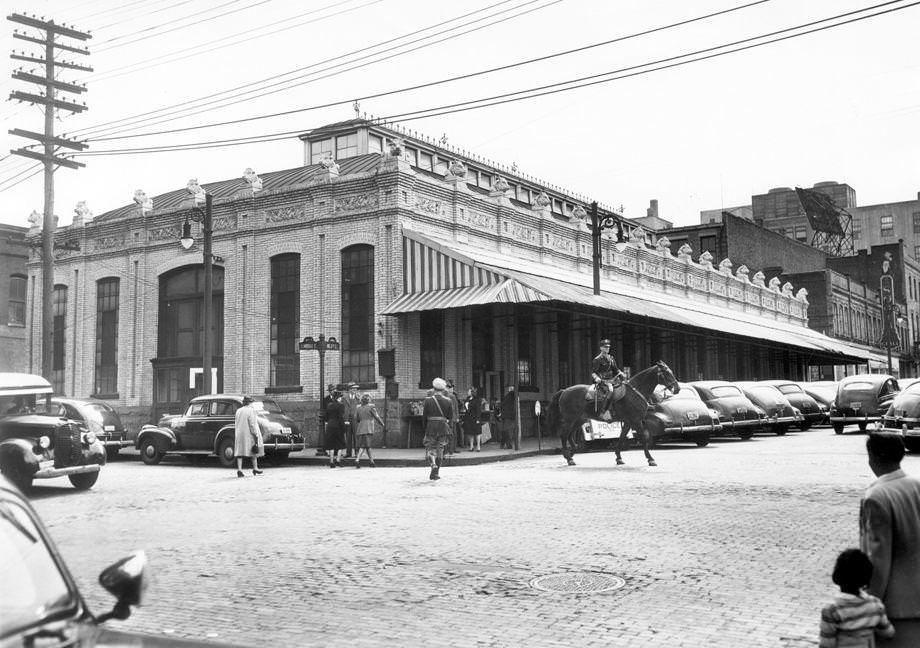
The market itself started in the early 19th century. In the mid-1960s, the meat building, with its 42 decorative bull heads, was torn down to make way for a parking lot. Most of the bull heads were salvaged and auctioned, and the market continued in the first floor of the Blue Armory building and in various stalls along the street for another 20 years.
#207 The Sixth Street Market in Richmond had an abundance of locally grown produce, 1948.
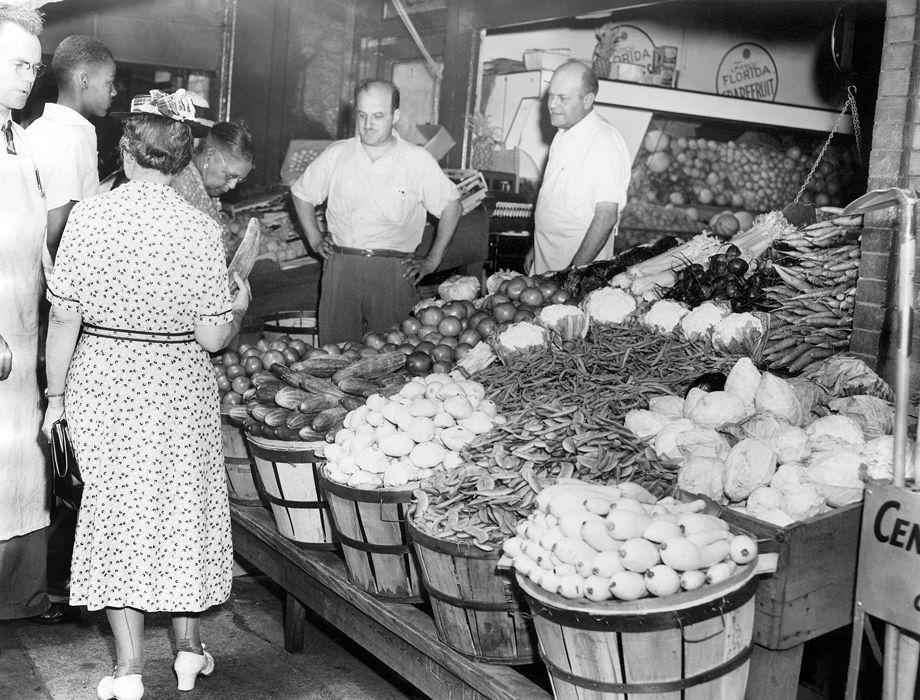
Hanover tomatoes were 10 cents a pound, Crozet peaches were 2 pounds for 35 cents, and butterbeans were 70 cents a pint. Local melons were not available, and the watermelons from other states cost between 50 cents and $1, down from $2 earlier in the season. Other local vegetable prices included carrots for 10 cents a bunch, cucumbers for 5 cents each, cabbage at 5 cents per pound, and squash at 15 cents for 2 pounds.


